- South Africa
- Afghanistan
- North Korea
- Adventure + Outdoors
- Amusement Parks
- Backpacking Trips
- Boating + Cruises
- Budget Travel
- Bus + Train Travel
- Coasts + Islands
- Country Trips
- Fall Vacations
- Family Vacations
- Green Travel
- Heritage + History
- Honeymoons + Romance
- Inspiration + Guide
- Landmarks + Attractions
- LGBT Travel
- Markets + Bazaars
- National Parks + Reserves
- Nature + Wildlife
- Parks + Gardens
- Pets + Animals
- Photography
- Airlines + Airports
- Budgeting + Currency
- Business Travel
- Celebrity Travel
- Customs + Immigration
- Deals + Rewards
- Family Travel
- Hotels + Resorts
- Luggage + Packing Tips
- Offbeat News
- Photography Tips
- Responsible Travel
- Solo Travel
- Tech + Gear
- Travel Etiquette
- Travel Warnings
- Bars + Clubs
- Celebrity Chefs
- Restaurants + Cafés
- Wine + Vineyards
- Beach Hotels
- Boutique Hotels
- Hotel Openings
- Hotel Reviews
- Luxury Hotels
- Mountain + Ski Resorts
- Spa Resorts
- Vacation Rentals
- Asia Cruises
- European Cruises
- Festivals + Events
- Museums + Galleries
- Style + Design
- Travel’s Best
- Hotel with Agoda.com
- Hotel with Booking.com


Leh Ladakh bike trip blog — Ladakh bike trip guide &…

Guide to Shenzhen nightlife — Top 5 things & what to…

Ladakh trip cost per person from Delhi — How much does…

India travel tips — 25+ what & things to know before…

India trip tips — 9+ things to know before going to…

All about tips in Nepal — How much to tip in…

Cambodia travel tips — 15+ what to know & things to…

When is the best time to visit Kyoto? — The best,…

Must eat in Hong Kong — 7+ must eat & must…

Must eat in Georgetown — 10+ famous, must-eat & best street…

Must eat in Melaka — 10+ famous Malacca street food &…

Hong Kong Soya sauce Chicken Rice and Noodles — The first…

Top hotels in Siem Reap — 8+ best places to stay…

Top hotels in shanghai — 15+ best hotels in Shanghai

Top hotels in Malacca — 10+ good & best hotels in…

Top places to stay in Bali — Top 10 best areas…

10 must-know things for your best first time European river cruise

Top 3 best luxury cruises in Halong Bay, Vietnam

Cherry blossom festival Korea 2024 — Top 5 cherry blossom festivals…

Ghibli museum blog — The fullest Ghibli museum guide for first-timers

Kyoto festival — Top 10 best events & most famous festivals…

National Palace Museum Taipei blog — What to see in National…

Japanese waterfall — Top 10 most beautiful waterfalls in Japan in…

19+ most beautiful towns in Europe every tourist need to visit…

Georgia travel photos — 20+ captivating photos show Georgia is heaven…

Explore Damnoen Floating Market — The oldest floating market of Thailand

Visiting Fenghuang Ancient Town — One of the most charming ancient…

Mekong Delta travel blog — Beyond rivers of Southwestern Vietnam

14 reasons why you should travel when you are young

Shigaraki Tanuki – An animal symbol of good luck in Japan

Living in the charms of cave houses in Andalucia, Southern Spain

20+ jaw-dropping tiny homes around the world
Spain travel blog — the fullest spain travel guide blog for first-timers.
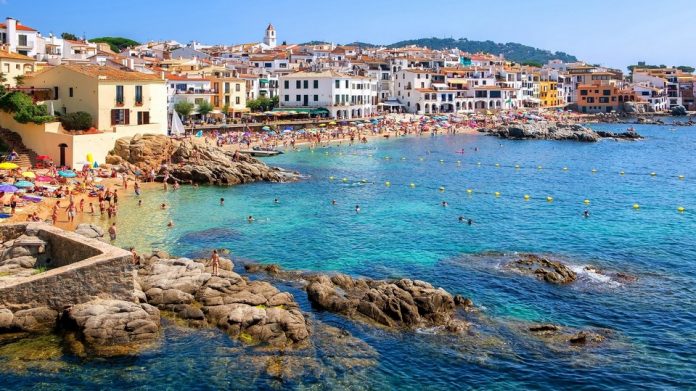
Spain is a top holiday destination and the 2nd most visited country in the world. Once a powerful empire in the past, Spain has a long-standing history, the diversity of different cultures, unique architecture, delectable cuisine and weather favoured. The diversity of cuisine with rich flavor served with premium fragrant wine. During the festive season in Spain you will be immersed yourself in vibrant flamenco dances, tomato throwing festival – La Tomatina or the excitement of thrilling bullfights. All make Spain is a dream destination for any visitor. So, what to do and how to plan a perfect budget trip to Spain for the first-time? Let’s check out our Spain travel blog (Spain blog) with the fullest Spain travel guide (Spain guide, Spain tourist guide, Spain visitor guide) from how to get there, best time to come, where to stay, best places to visit and top things to do to find out the answer!
- What to buy in Barcelona? — 15+ must buy souvenirs, gifts & best things to buy in Barcelona
- Taiwan itinerary 6 days — The itinerary of a trip to Taipei – Hualien – Kaohsiung for 6 days 5 nights
- Ronda blog — The fullest Ronda travel guide for first-timers
- India itinerary 10 days — How to spend 10 days in India perfectly?
- Barcelona itinerary 1 day — How to spend 1 day in Barcelona & what to do in Barcelona in one day
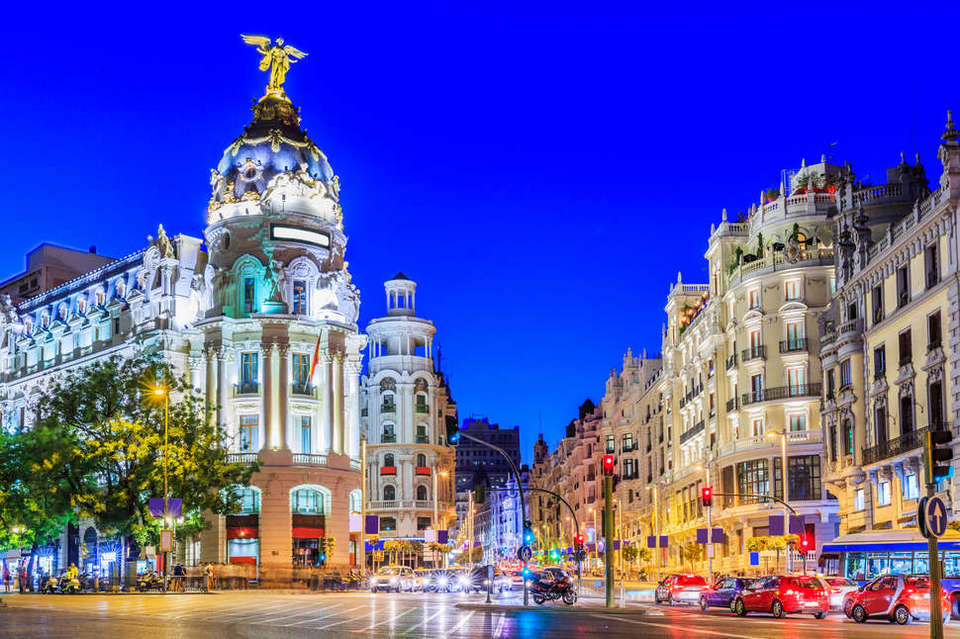
Spain travel blog: Overview of Spain
Spain, whose full name is the Kingdom of Spain, is located on the Iberian Peninsula in southwestern Europe. With an area of more than 500,000 square kilometers and a population of nearly 47 million people, Spain’s southern and eastern parts are bounded by the Mediterranean Sea, a small part of which is bordered to the south by British Gibraltar, bordered by France and Andorra to the northeast, Portugal to the west, northwest and the northern part is bordered by the Atlantic Ocean and the Gulf of Biscay (Bay of Biscay). In addition, the territory of Spain also includes many islands located in the Atlantic Ocean and the Mediterranean Sea.
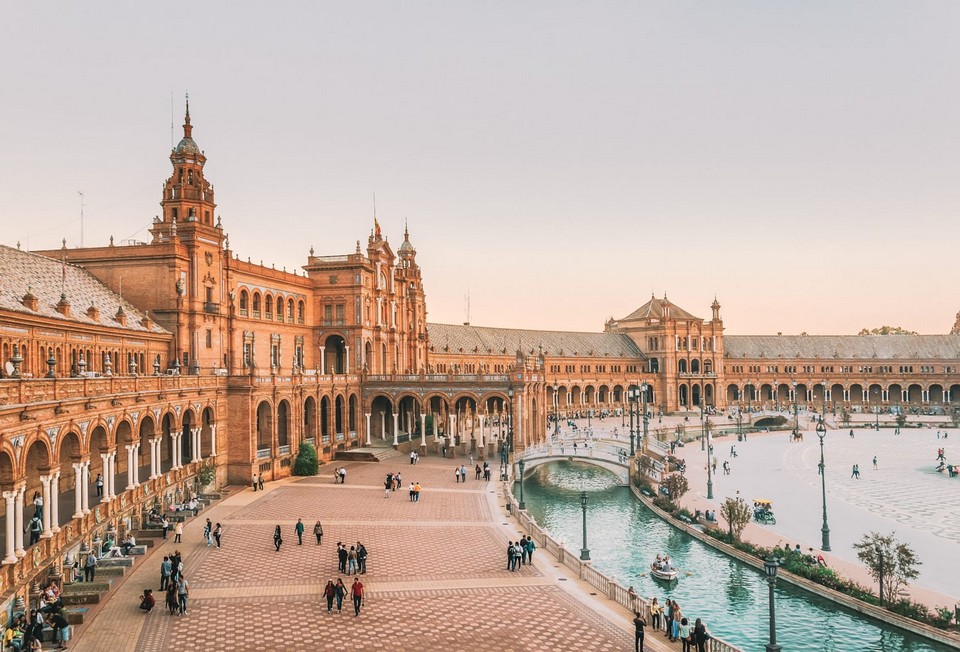
Spain is a multilingual country. Spanish is also different in each region and is recognized as the official national language, in addition, English and German are also widely used. Roman Catholicism is the main religion of Spain, but due to immigration over the centuries, Hinduism, Buddhism, Sikhism and Islam are also gradually gaining support and widely accepted.

Spain travel blog: When to visit?
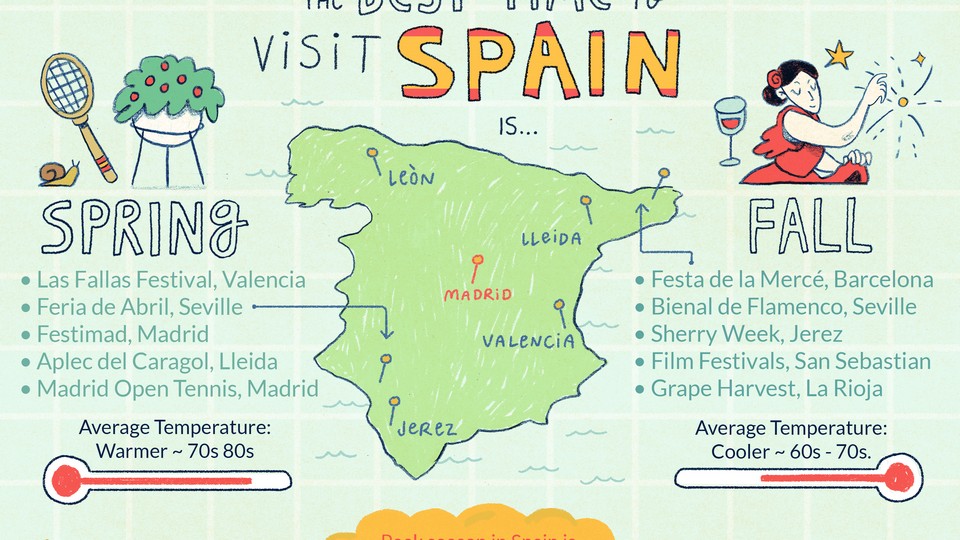
As the second largest country in Europe by area and with a diverse topography, the climate in each region of Spain can be very different. The southern and eastern coastal regions favoring by the Mediterranean climate, so the weather is very pleasant all year round. The north is usually colder than the south, while the central Spain will be drier and hotter.
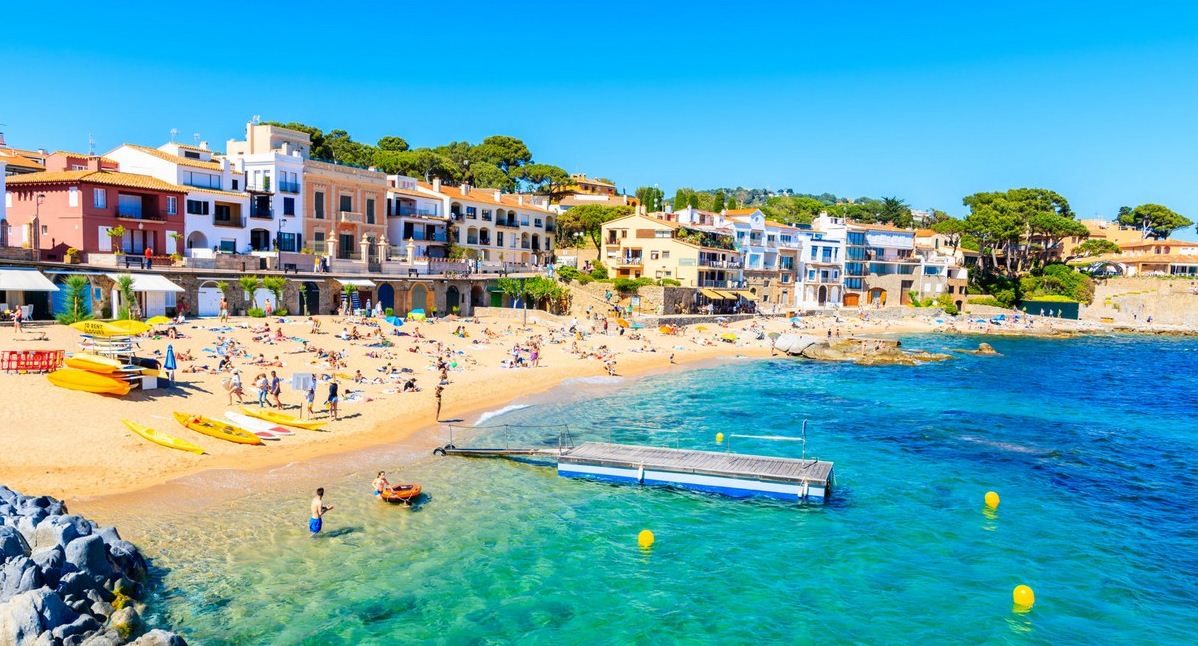
If you want a sunny beach vacation, the period from June to August is the best time to come, but this is also the peak tourist season so you need to be prepared that the number of tourists flocking here will very crowded and prices may be higher than usual. Spain’s low season is usually late spring and late autumn, April, May, October and November. At this time the number of tourists will decrease but the weather is still very pleasant.
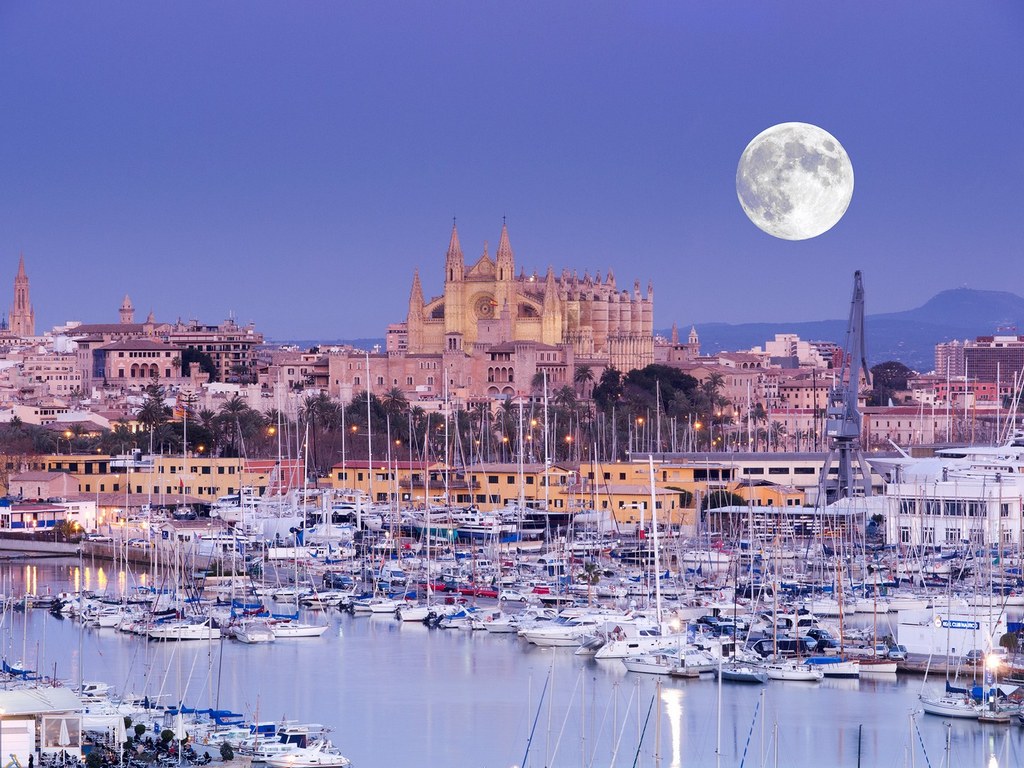
Spring (March – May): The spring climate in Spain is quite comfortable, especially in the mainland when the weather is getting warm but not too hot. This is a great time to visit major cities such as Madrid, Cordoba, and Seville because the groups of travelers have not yet come back too crowded.
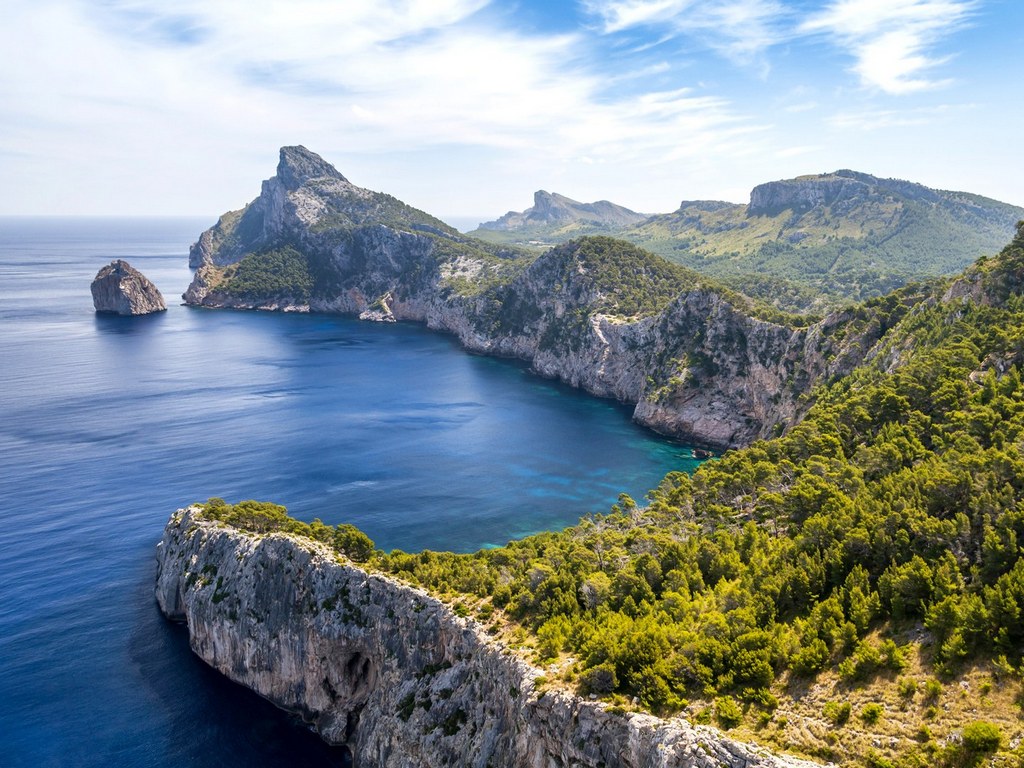
Summer (June – August): This is the peak tourist season in Spain, cities located deep in the southern territory like Seville, Malaga or Cordoba will be extremely hot and dry. This is the good time for you to visit northern cities like San Sebastian, Santiago de Compostela or Galicia to avoid the heat of summer.
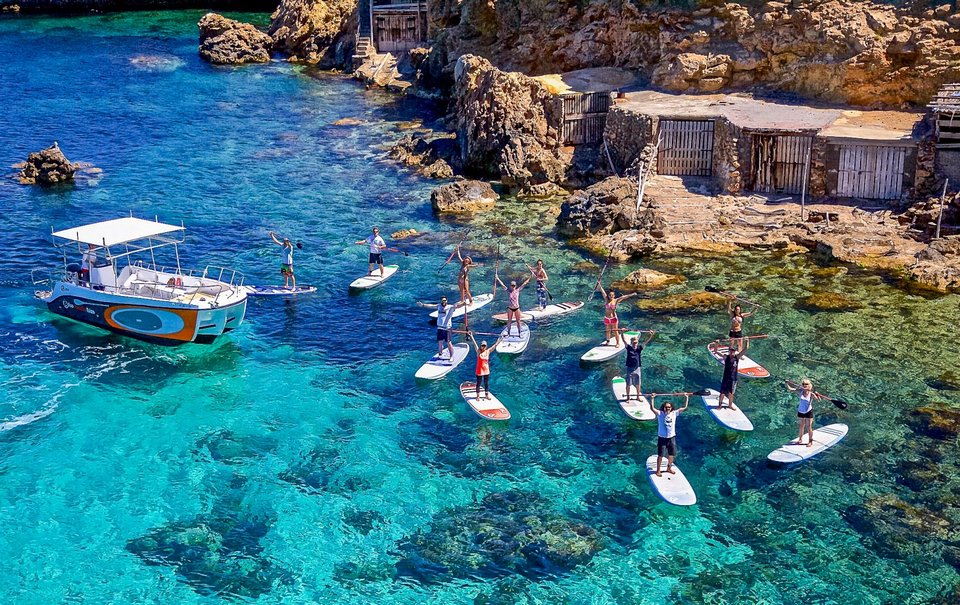
Autumn (September – October): The weather in this season is pleasant with some rain in October. This is probably the last time of year when you can visit the beaches in southern Spain before they close for winter.

Winter (November – February): Winter is a great time for skiing in the North. However, the weather is often very cold with thick snow, so before visiting Spain this season, you need to make sure the roads are still open.
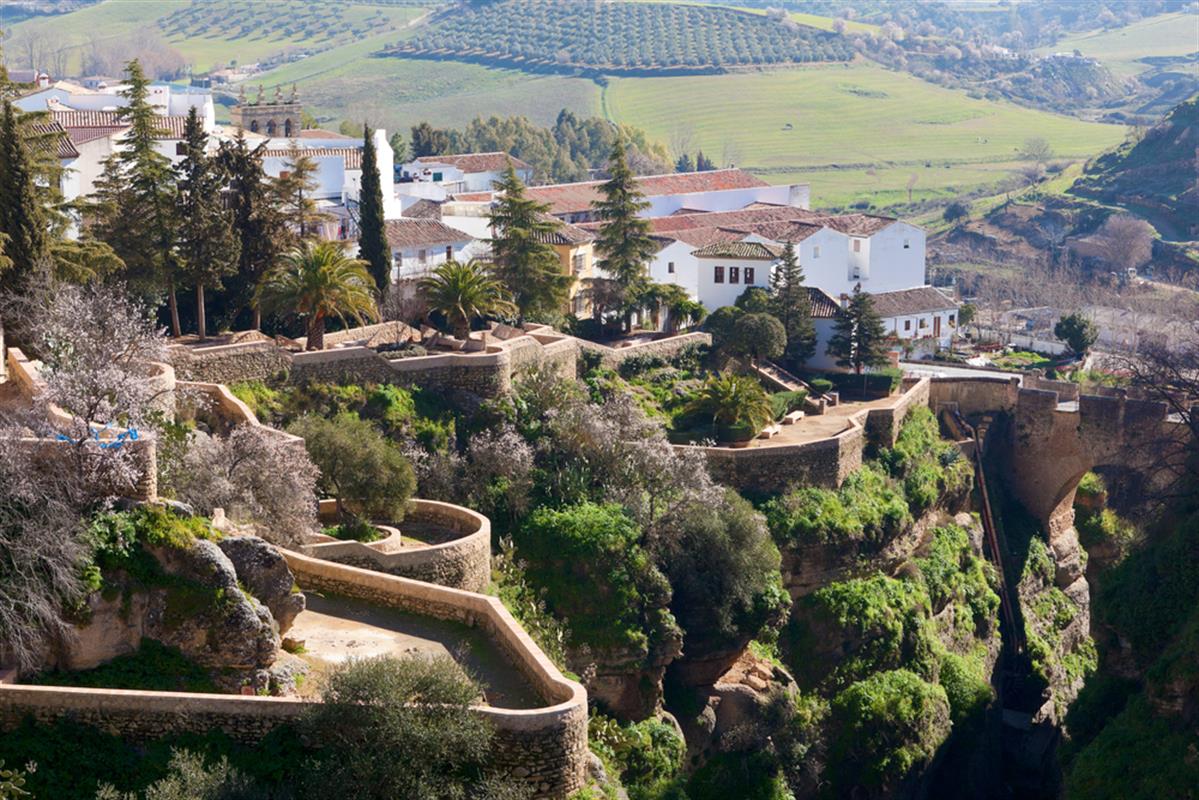
You also can attend the San Fermín bull-running festival in Pamplona which takes place on July 4-7 every year. If you have an opportunity to visit Spain at this time, you should attend this festival to experience the thrill, to seeing the bravery of the people here. If you have not witnessed the bullfights or this bull running festival, you have not really experienced the full culture of the Spanish people. This is the most unique festival of the year in Spain that you should attend.
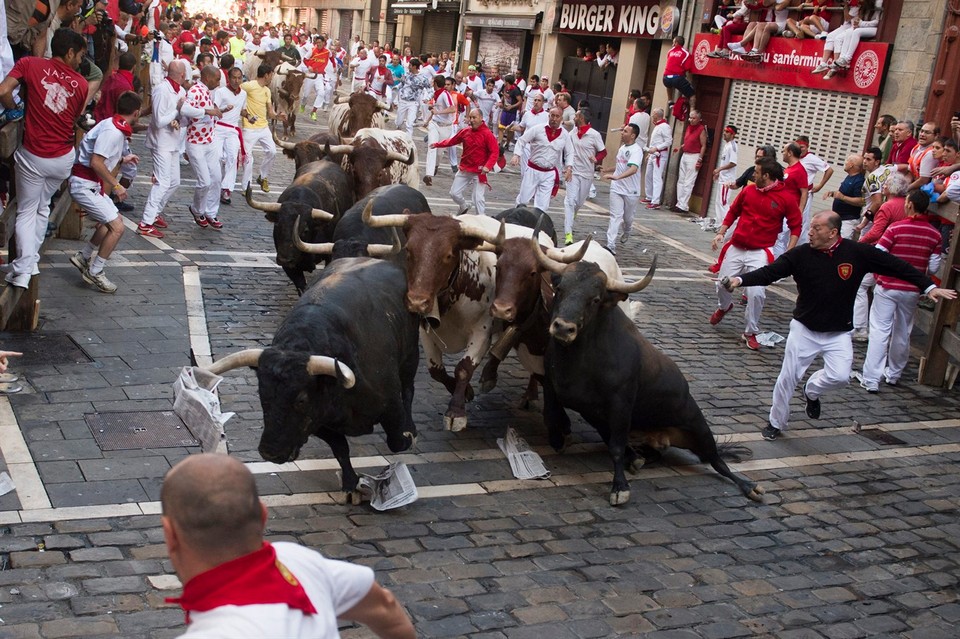
If you have the opportunity, you should also attend the annual La Mercè Festival Barcelona (“Castellers”) – human towers festival which is held for around five days in honor of the patron saint La Merce (the Virgin of Mercy). The prominent Spanish event will held at the end of September every year (around Sept 24) in the city of Barcelona.
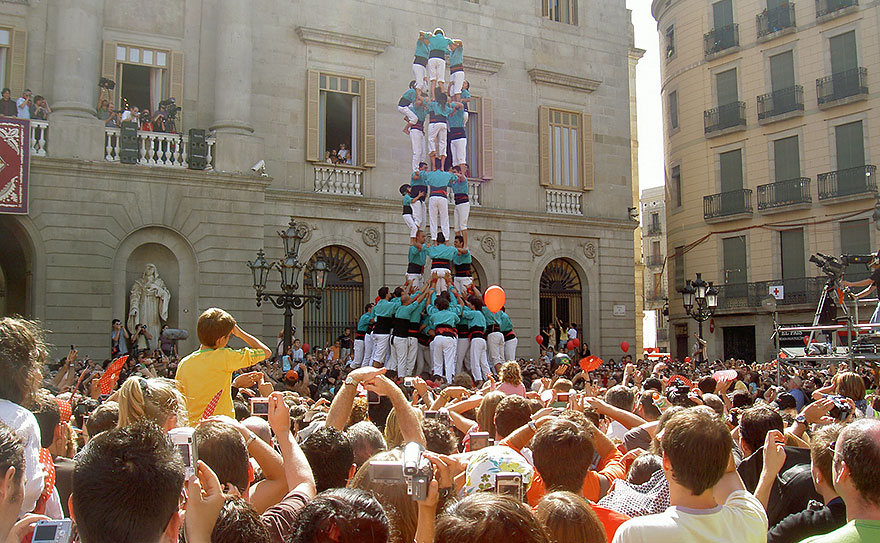
Or attend the Spain’s weirdest festival – the festival of throwing tomatoes called La Tomatina to enjoy the feeling of dirty play of the Spanish people. It takes place on the last Wednesday of August in the town of Bunol, Valencia.
Read more: Spain itinerary 10 days — What to do & How to spend 10 days in Spain perfectly?
Spain travel blog: Getting to Spain
The easiest and most convenient way to get to Spain is by air. There are many direct flights from major U.S., Asian, European cities to Spain’s major cities of Madrid or Barcelona operated by big airlines such as United, American, Etihad, Emirates, Air France, Turkish Airline, Singapore Airlines… Depending on your departure point, you can find the suitable flights on schedules, routes via websites: Google Flights , Skyscanner , Kayak . Usually, travellers will landing at Madrid airport (Adolfo Suárez Madrid-Barajas Airport ) first before visiting other Spain cities on their Spain itinerary.
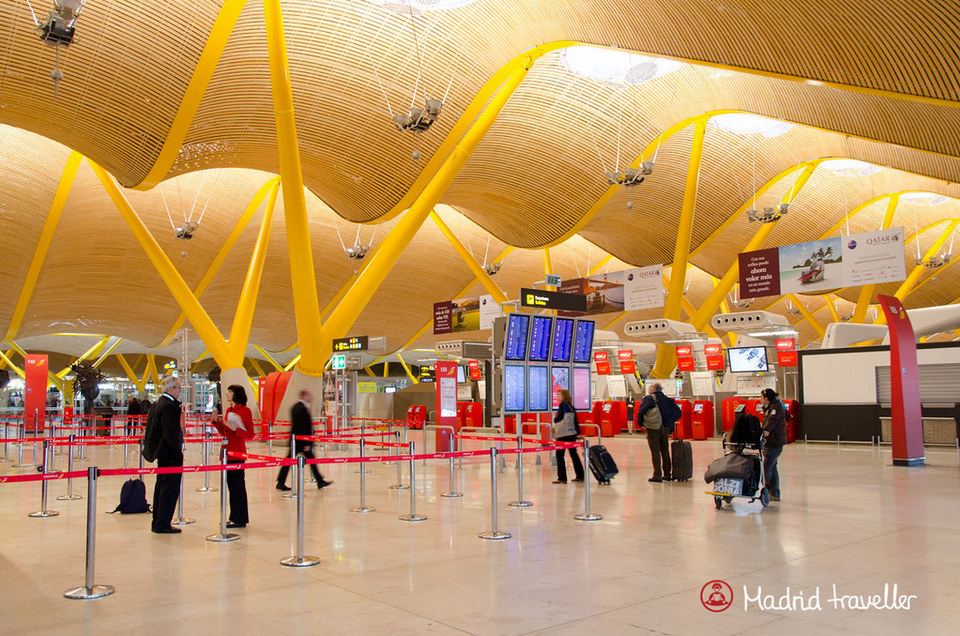
There are 4 terminals in Madrid Airport, each terminal has a 24-hour shuttle bus service which running to the central area of Atocha and Plaza de Cibeles for EUR 5/way. Taking the shuttle bus will be more convenient than taking the metro. If you want to take the metro, you have to go to terminal 2 to find Aeropuerto station, the price will be EUR 4.5/single-trip or more, depending on which station you arrive, the price will increase.

In addition, you also can reach Spain via ferry (see ferry routes here ) and especially by train which is very convenient to traveling within European due to the train systems of European countries are very modern and develop, well-connected between regions, cities within Euro zone. You can refer to train timetables and routes to get to Spain here .
Spain blog: Getting around Spain
Subway (metro).
To getting around the city of Madrid and its surrounding areas, the metro is a good choice for you. Metro is a fairly popular means of transport in Spain because of its speed, convenience and very cheap price. With only 1 euro you can travel comfortably in that route without limiting the number of travel times. If you travel a lot, you can buy a 10-Journey Tickets Metrobus for about 7.4 euros (With this type of ticket you can travel with 10 tram lines and even EMT bus lines).

Public transport tickets: Do not buy single tickets with the price of more than 2 Euros/trip, but should buy T10 ticket (Individual 10-journey ticket) for 11.35 Euros in Barca and 12.2 Euros in Madrid, which allows you take both bus and metro, if traveling in a group, tickets can be shared by using single ticket of T10 tickets package.
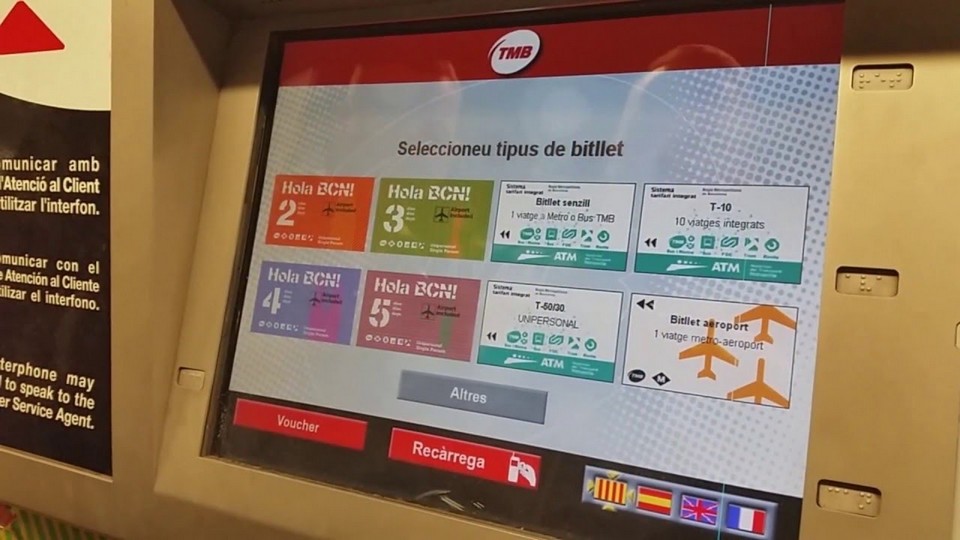
In big cities and even smaller towns in Spain, you can travel easily thanks to the inner city bus system, which usually operates from 6am to 11pm or midnight. Some cities also have night bus systems with more expensive fares. Besides, traveling between cities is not too difficult, especially from Madrid thanks to the central location of this city by the largest long-distance bus company in Spain is Alsa – Enatcar (ALSA). Buses are chosen by many visitors because it is quite cheap with 1 euro you can go 1 route. Most night buses stop at metro stations, so if you go out at night, you don’t need to worry too much.
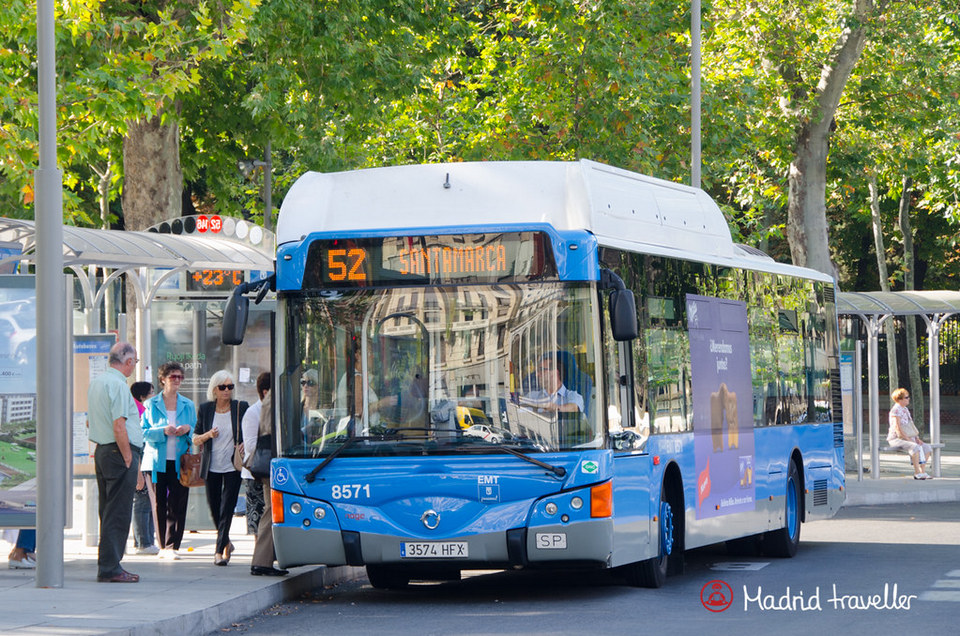
Madrid – Barca is the most popular route in Spain: It takes about 3 hours by high-speed train, but the ticket is very expensive, or by plane with the price is similar. If you want to save more money like me, let book bus tickets on Alsa.es , departing at 11pm from Madrid, arrive in Barca at 7am the next morning. Tickets from 25 euros/ person, buy for a group of 4 people to get another 30% discount.
Some cities in Spain still keep this transport system like Valencia or Barcelona. Besides, a few cities like Malaga or Zaragoza are also considering to rebuild their tram system.
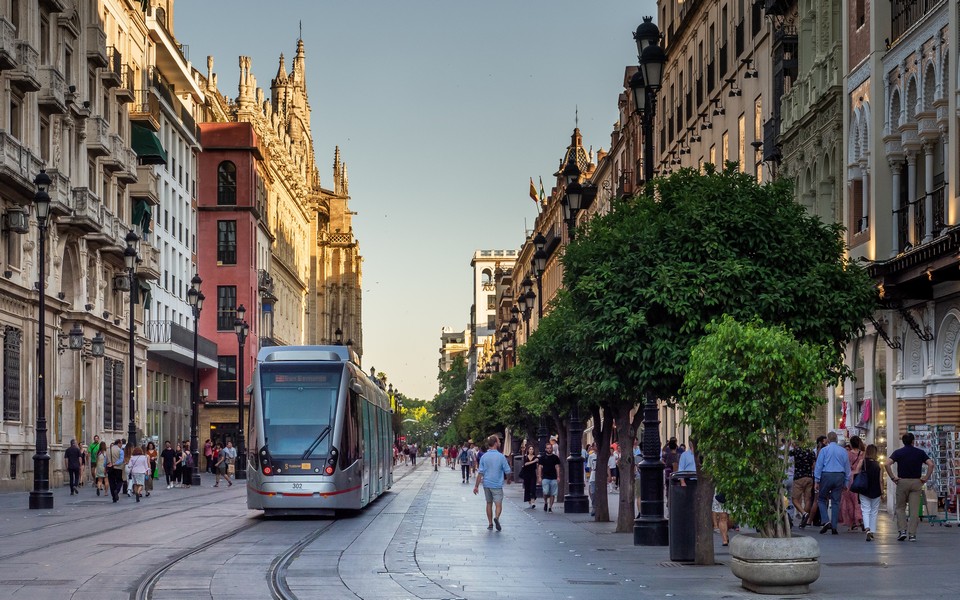
The cost of taking a taxi in Spain is inexpensive, but still not as convenient as the metro and bus.
Some cities alos have its own bike path, so you can rent a bicycle to get around the city. In Barcelona there is a bike-sharing system called “Bicing” that provides 6,000 bikes over 420 stations across the city. So you can comfortably ride a bicycle to enjoy the scene here.
If you want to get to other cities in Spain you can travel by plane or train. You can get to Seville from Barcelona by plane of Vueling – Spain’s low-cost domestic carrier, the fare is 20 euros. Then you can take the train from Seville to Granada, it takes about 3 hours with a fare of about 20.88 Euros/way, the train is clean, spacious and you also go from Granada to Madrid by bus, with 1 trip in every 1 hour with the price is 15 euros.

Read more: Guide to rail transport in Spain — How to travel around Spain by train & travel by train in Spain.
BlaBlaCar rideshare service is now gradually popular in Spain. You will save significant travel costs with this type of car sharing service, but also need to beware of risks such as the car pick up late or not picking, then you will miss your travel ride.
Spain travel blog: Where to go and what to do?
Considered as one of the most popular destinations for international tourists. The houses here all have ancient look and unique architecture. This place also has many heritages as well as extremely unique architectural works for you to freely explore as well as take beautiful check-in photos.

One of the most prominent ancient world wonders of this city is the Mosque-Cathedral of Córdoba. This is a Spanish-Portuguese Muslim-style mosque with columnar domes from the Hispano-Flemish period. The details are delicately sculpted, mixing the Baroque style with the beauty of the Christian civilization of the 16th – 17th centuries.

The capital of Spain – Madrid is also the largest city of this country, with diverse cultural identities of many ethnic groups but equally vibrant and bustling when night falls.
The main tourist attractions are mostly concentrated in the city center such as the Royal Palace – the residence of the King of Spain, Puerta del Sol Square – where festivals and street performances take place, Plaza Mayor Square, San Miguel Market, Thyssen-Bornemisza National Museum.
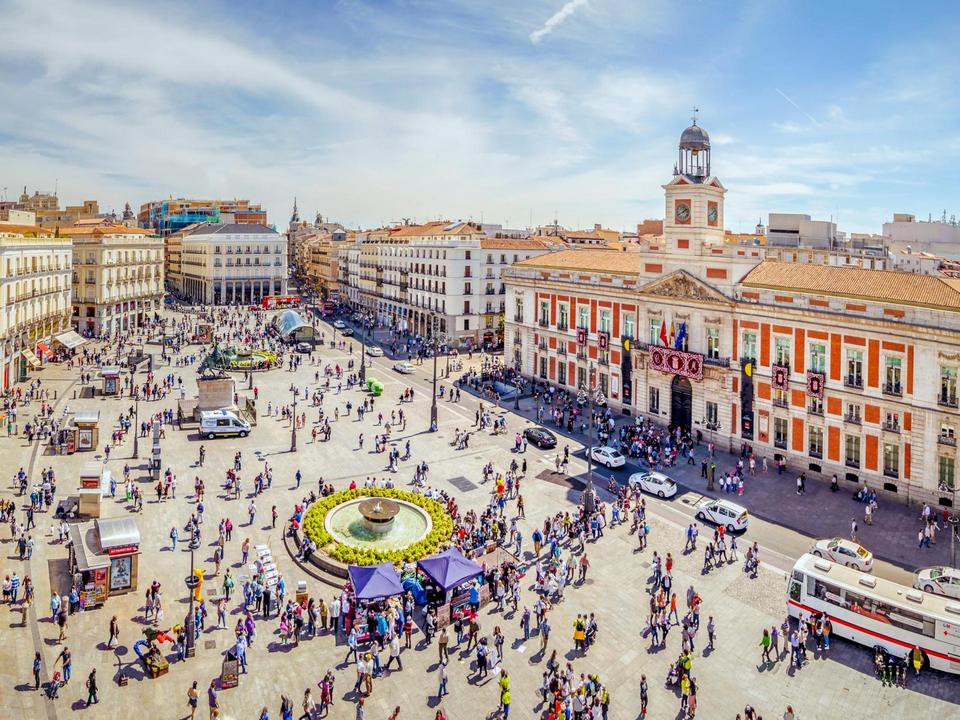
Located in northeastern Spain, Barcelona is one of the country’s top tourist destinations and is also home to the famous painter Pablo Picasso. It has everything tourists look for in a European city from historic architecture to vibrant shopping malls and bustling nightlife. The architectural marvels of the famous Spanish architect, Antoni Gaudi such as Casa Batllo, Casa Mila and the La Sagrada Família (Church of the Sacred Family) definitely will make you overwhelmed. In particular, if you are a fan of the Barcelona football club, you can visit the FC Barcelona museum and the Camp Nou stadium.

In addition, stroll along the tree-lined pedestrian boulevard La Rambla, stroll through Guell park and sunbathe at Barcelona’s most famous beach are interesting activities for travelers.
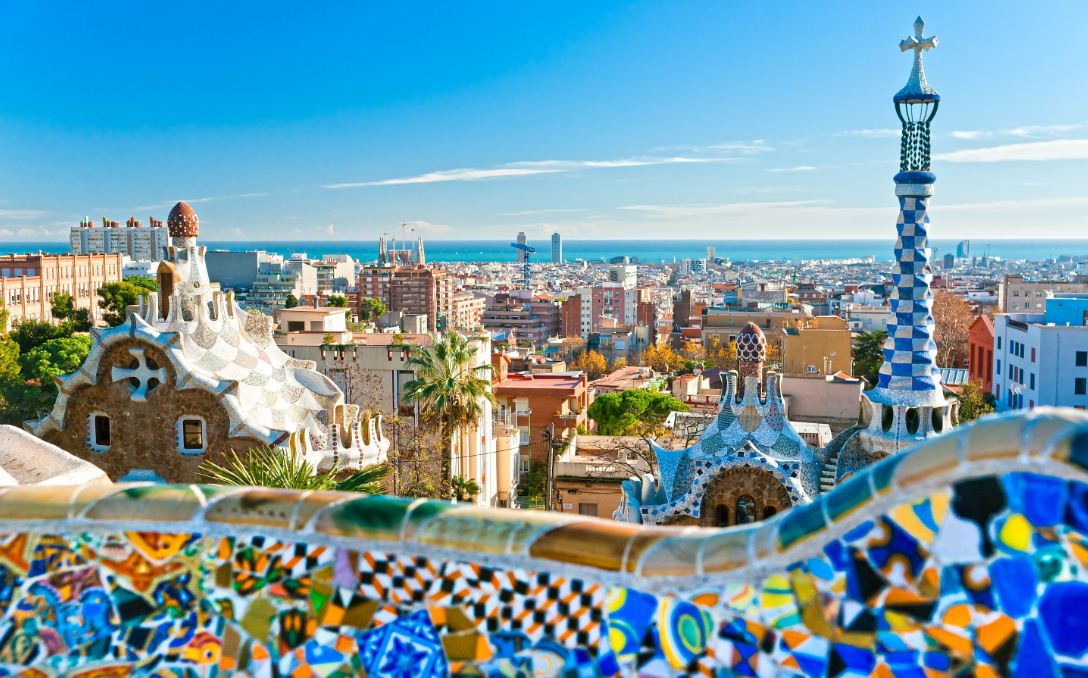
Valencia is located in the east of Spain, famous for its delicious food, theatre, science museum, aquarium designed extremely modern and green space. Come here, you should not miss the opportunity to visit the City of Arts and Sciences cultural and architectural complex, which includes a science museum, planetarium and aquarium.
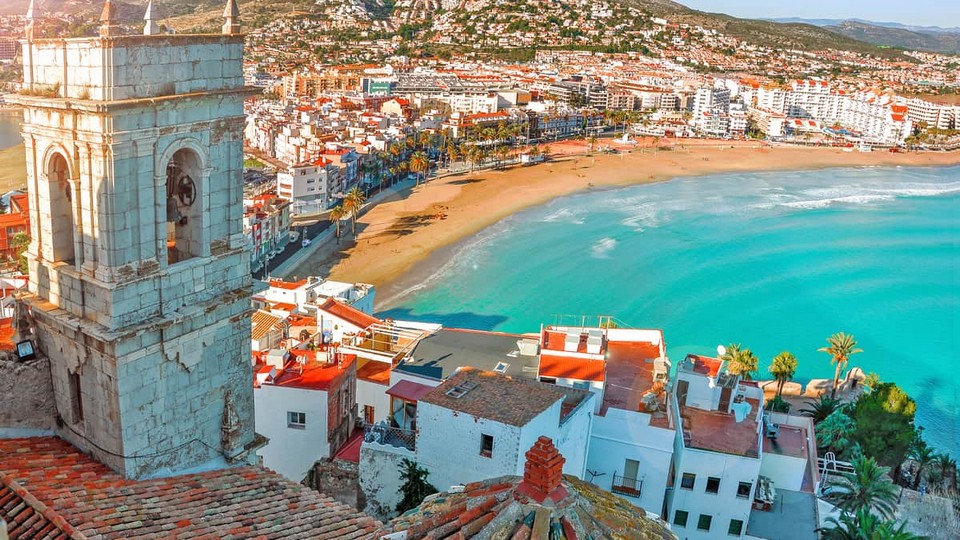
In addition, La Fallas festival held every March is also a cultural feature of the city. On the streets will display paper effigies of different colors and sizes. At the end of the week, these effigies will be burned according to local rituals while people celebrating and partying all night.
In particular, August is the time of the weirdest La Tomatina tomato throwing festival in this city, so if you have an opportunity, visit Valencia in August to experience one of the most vibrant festivals in the world.

Mallorca is located in the Mediterranean Sea and is the largest island belong the Balearic Islands. The attractive beauty of the island is created by the long sandy beach, turquoise color and clear of seawater and especially a very quiet atmosphere. Climbing the mountains in the southern part of the island, you will be even more excited by the vast ocean surrounding as if lost in a magical land.
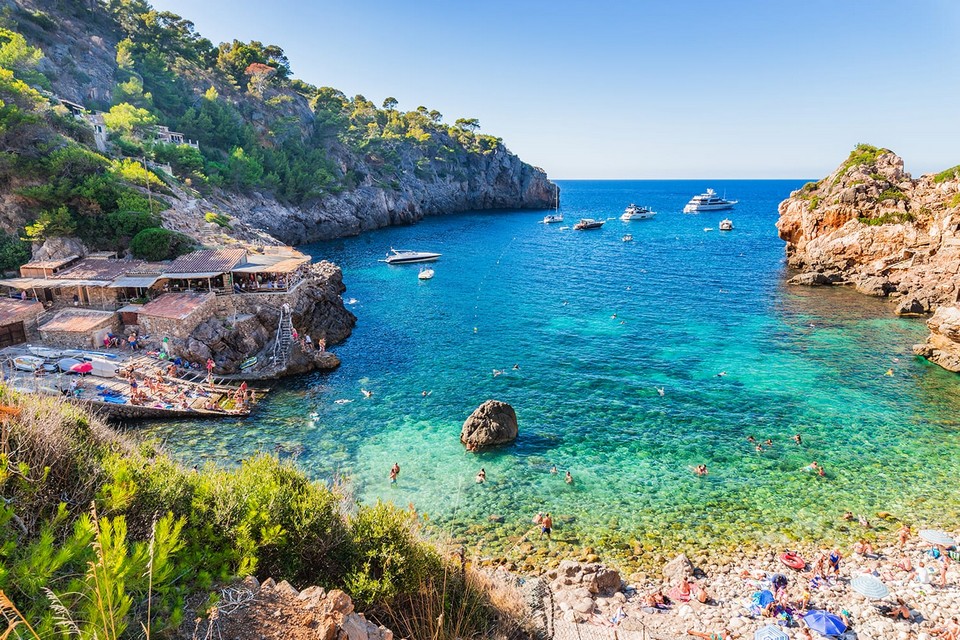
To tasting typical Spanish wine, you must go to La Rioja. Located in the North of Madrid, this region is covered with extensive vineyards where you can take a tour to see vineyards and wine making process. Moreover, you can also taste and buy a few bottles as gifts right at winery.
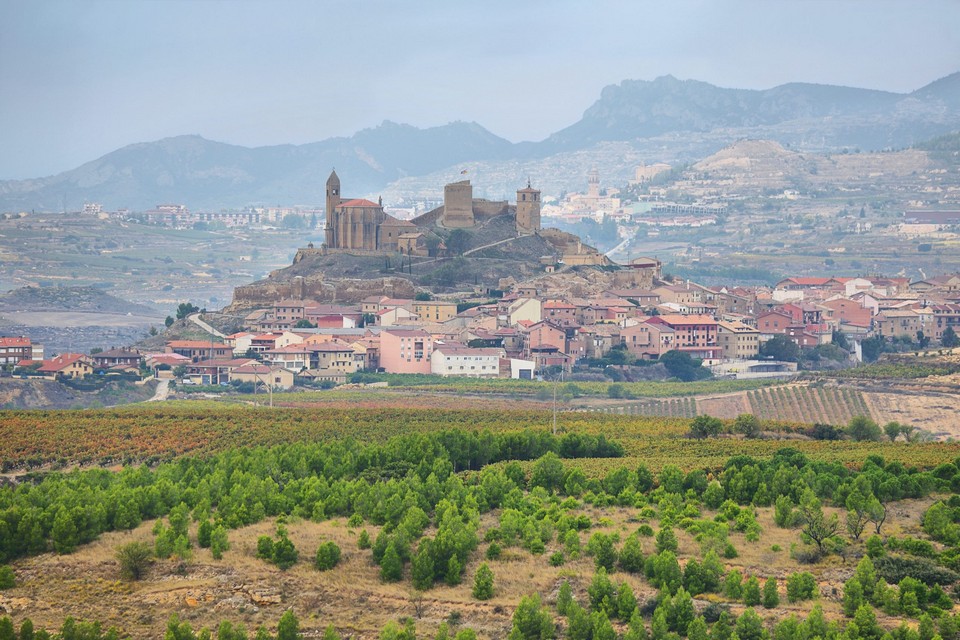
Then, if you have time, visit the small village of Ezcaray, which has a beautiful and peaceful landscape.
The vibrant of Seville brings together all the most unique features of Andalusian culture. The Roman-style buildings are mixed with the religious beauty of Islam and gothic style. It is also the cradle of vibrant Flamenco dance and world-famous bullfights.
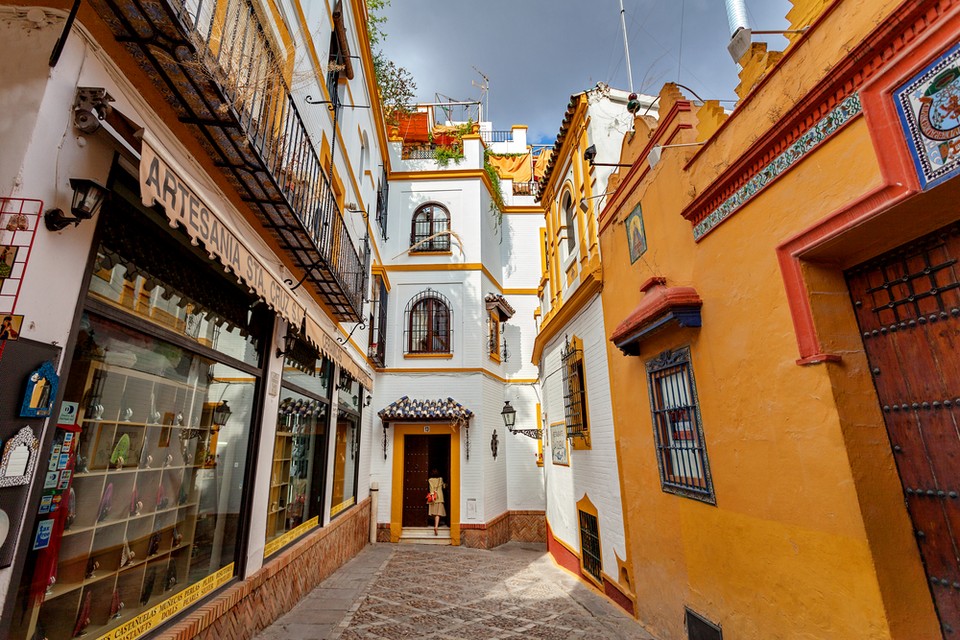
Coming to Seville , visitors also should not miss the tomb of the famous expeditor – Christopher Columbus and the Giralda bell tower, this is a world famous architectural complex with its splendid and magnificent beauty.

Santiago de Compostela
The capital city of the Galicia region located in northwestern Spain, Santiago de Compostela is famous as the final destination of the Camino de Santiago pilgrimage. This pilgrimage is very important to Christians because it is believed that this is where Saint James, an Apostle of Jesus, is buried.
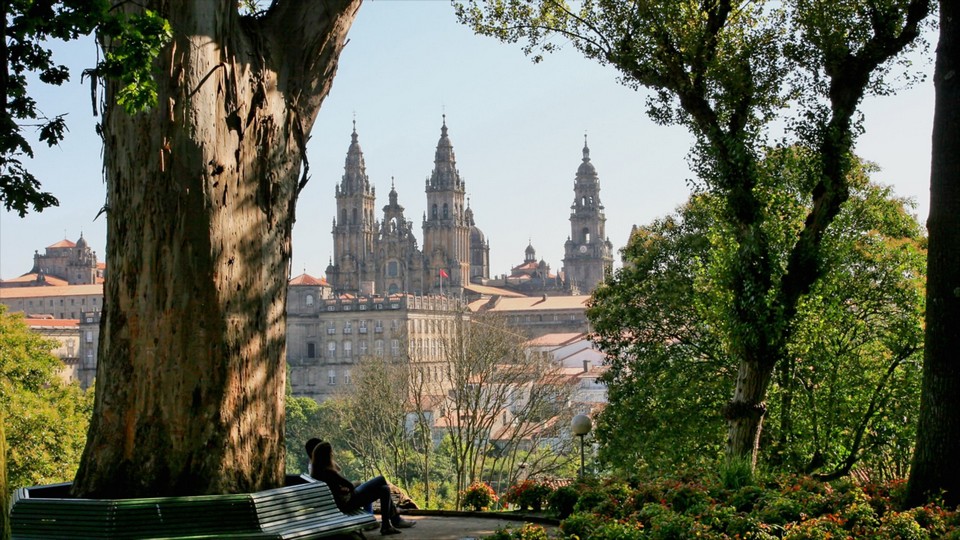
Today, the city attracts thousands of visitors each year because of its rich history and religious traditions. The destination for most pilgrims is the main square located in the city center – Praza do Obradoiro, the Cathedral Basilica where the tomb of St. James is located.
Don’t forget Ibiza island if you are a partygoer, the party island of Spain, a perfect vacation spot for celebrities and famous football stars with vibrant nightlife, stunning beaches.
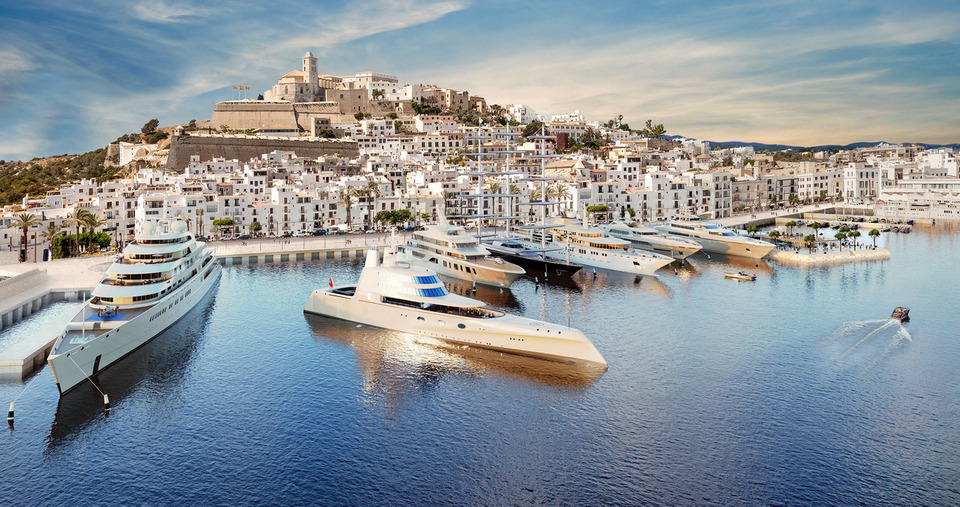
This is an impressive beach resort town and not to be missed when traveling to Spain. With a beautiful stretch of coastline, visitors will be able to admire the beautiful nature and enjoy delicious seafood dishes not to mention premium wines and hotels designed with large balconies overlooking the sea will bring you a wonderful view.
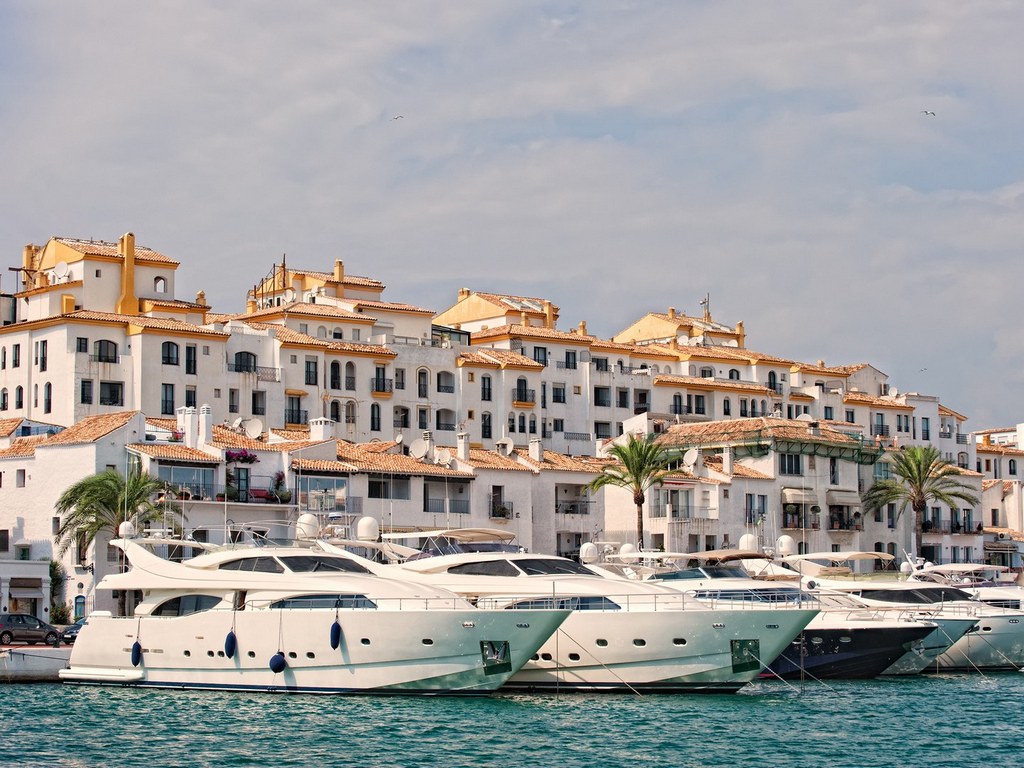
The most famous landmark here is the Red Fort – a palace complex recognized by UNESCO as a world cultural heritage. Not only magnificent and preserving many historical imprints, the Red Fort, also known as Alhambra, is also located on a massive hill, right under the mysterious Sierra Nevada snow mountains.
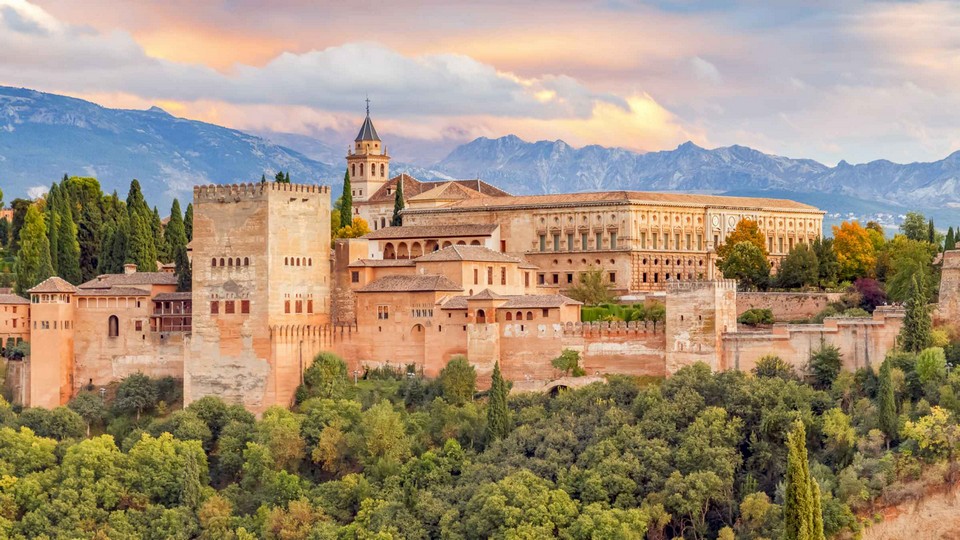
Discovering the culture here will bring the most interesting things, when you can learn what belongs to the history of the Jewish people, Arabic culture, Gypsy culture, etc. Remember to buy some souvenirs sold in the city’s markets, they will help you remember how beautiful Spain is.
This place is very famous, the beauty of Bilbao is mainly made up of architecture. Guggenheim Bilbao Museum is the symbol of the city. The museum was built in 1997, displaying antiques and artifacts of great historical significance. The most special feature of the museum is that the outer layer is “built” of titanium, creating an extremely majestic and modern appearance.

In addition, Basilica of Our Lady of Begoña is another unique work. Built in 1591, the cathedral was buit to commemorate the arrival of Saint Mary. Other beautiful places of the city include the old town of Casco Viejo, the Arriaga theater, the Florale palace, etc. All are exquisitely decorated with works of art on display that will make you amaze.
Mijas Village
This is an ancient village, which visitors when coming here have to say “so beautiful”, especially for those who love photography. The houses close to each other are painted white, have small balconies with “mini-hanging gardens”, street corner cafes with very attractive romantic decorations. There is also the Iglesia de la Inmaculada Concepcion church was built in the 18th century, which is a place to take impressive “virtual-living” photos.
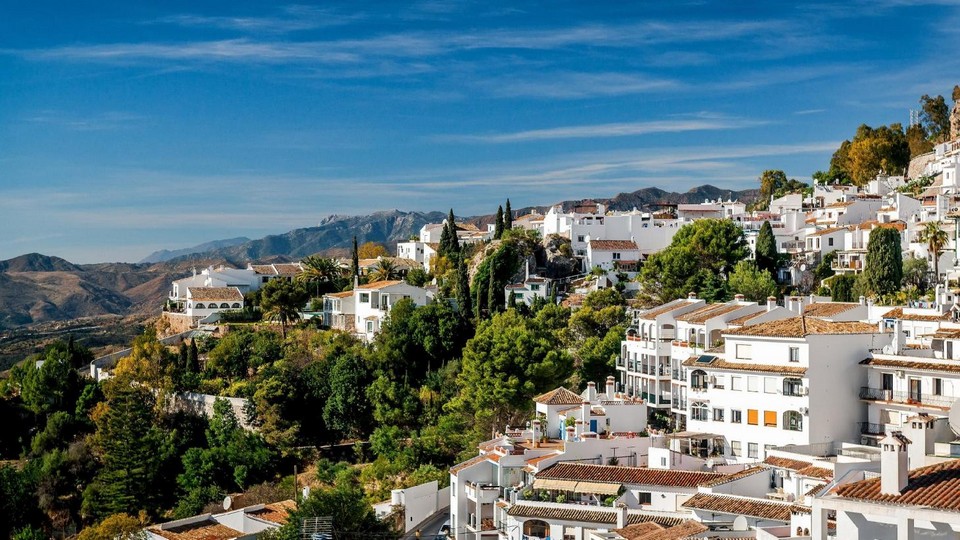
The people in Mijas are very friendly, hospitable, laid-back and open, so are the friendly cafes, or the amusement parks on the beach. You will feel nowhere on cozy and warm like here.
Picasso Museum
Located in the province of Malaga, the Picaso museum is of course the place to display the paintings of one of the most talented painters in the world. You will be admired 204 wonderful works preserved intact here. You can also find some “check-in” spots such as Phoenician archaeological site, Roman ruins, and more located right in the ground of the museum.

Tenerife Island
As the largest island in the Canary Islands where San Cristóbal de La Laguna is a city recognized by UNESCO as a world heritage site with unique architecture and beautiful beaches. The land around Teide volcano is more than 3,700 meters high, very fertile with many species of flora and fauna. If traveling to Tenerife, you should not miss the natural attractive landscapes and unique architectural features in the town on the island.
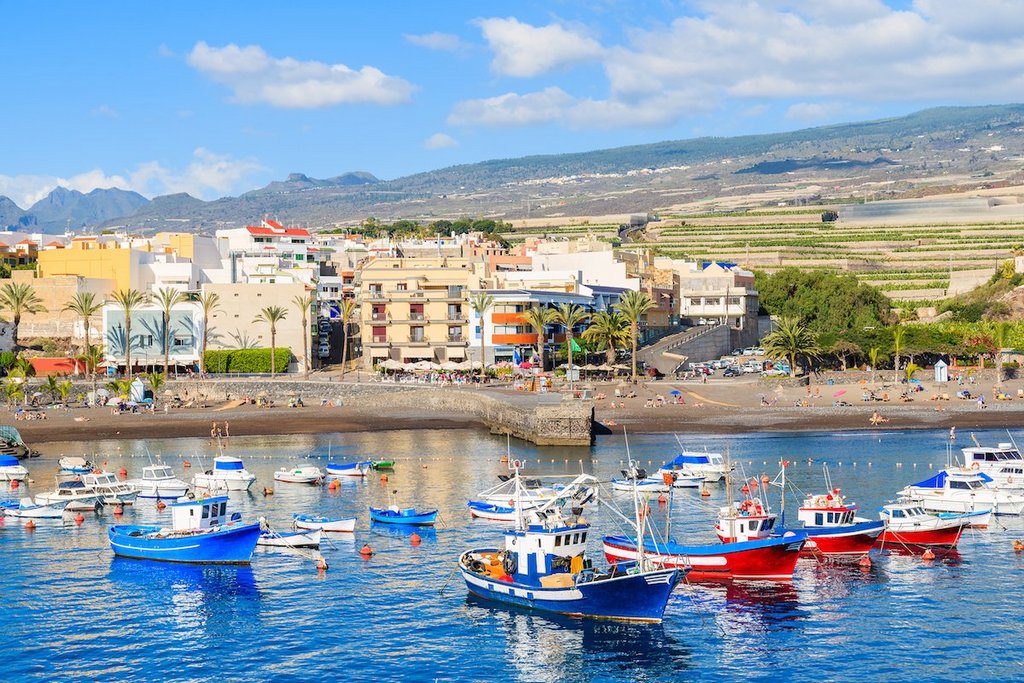
Also known as the city of 3 cultures, because Toledo has been inhabited by Jews, Christians and Muslims for centuries. Perhaps thanks to this special feature that the city is known as a destination rich in history, art and architecture of the Roman Empire. Toledo is located on a mountaintop in central Spain, and served as the capital of Spain until the 16th century.

San Sebastian
Is the capital city of the Basque region in northern Spain, off the coast of the Bay of Biscay. This place is known as a great resort, with clear blue beaches, long white sand beaches, warm sunny weather, etc. Especially, the culinary tradition here is extremely outstanding.

Spain blog: What to buy as gifts?
Want unique souvenirs? Visit the craft markets in Madrid and Andalusia. These places selling a lot of wooden crafts, porcelain and jewelry. Andalusia is also home to some of Spain’s finest wines, bring home a bottle wine of sherry it would be great. You can also buy souvenirs for children at Alicante, the largest toy manufacturing center in the country. Spain also owns famous fashion brands, and if you want to own trending and unique designer clothes, Madrid and Barcelona are your destinations.
As the birthplace of guitar, you don’t need to worry about the quality. However, because it is quite bulky, it will not be easy to bring it back, so you should only buy it if you are sure that the person is a real guitar enthusiast. It is not difficult to find these guitars at famous stores in Madrid.

Gifts with signatures of Spanish players
Being the home of world famous football teams like Barcelona, Real Madrid… it will be a big regret for any football fan if you don’t buy the souvenir items with signature of idols when coming here.

Boxes and jewelry
Spain sells many decorative boxes, jewelry, beautiful watches with various designs. These items are very youthful, elegant and easy to mix with other accessories because they are inlaid with gold or silver. You can buy them in ancient capital of Toledo or central Madrid, shops on Prado Avenue at affordable prices.

Spain is known as the land of vineyards and major wine production in the world. The wine taste here is also very special and will give you a distinct feeling. In particular, Spain has Rioja, which is considered a traditional wine-making region of the Spanish with the famous Campo Viejo wine, which is an indispensable gift when leaving.

Spain travel blog: What to eat?
Spanish cuisine is also a tourist attraction. Spanish love their cuisine so much, so almost all their meals are prepared with great care and attention. Spanish specialties include paella, cocido, fabada, butifarra amb mongetes, tortilla, jamón, chorizo, longaniza, lomo, salchichón, churros, and seafood. Regarding drinks, Spain is famous for wine, beer and sherry – a specialty wine in southern Spain.
Tapas is an experience not to be missed if you want a taste of authentic Spanish cuisine. A regular plate of tapas will cost between 3-5 Euros and 12-20 Euros for seafood tapas.

Flamenco eggs (huevos a la flamenca)
Using eggs as a familiar dish in Spanish cuisine, with a creative and special preparation. In particular, must mention the Flamencos eggs, fried eggs with bacon, tomatoes and vegetables.

This is one of the traditional dishes in Spain originating from Valencia region. Pealla rice dish consisting of white rice, then added with green vegetables, beans, seafood and meat… There are 3 types of Paella for you to choose from: Seafood Paella, Mixed Paella, Valencia Paella.
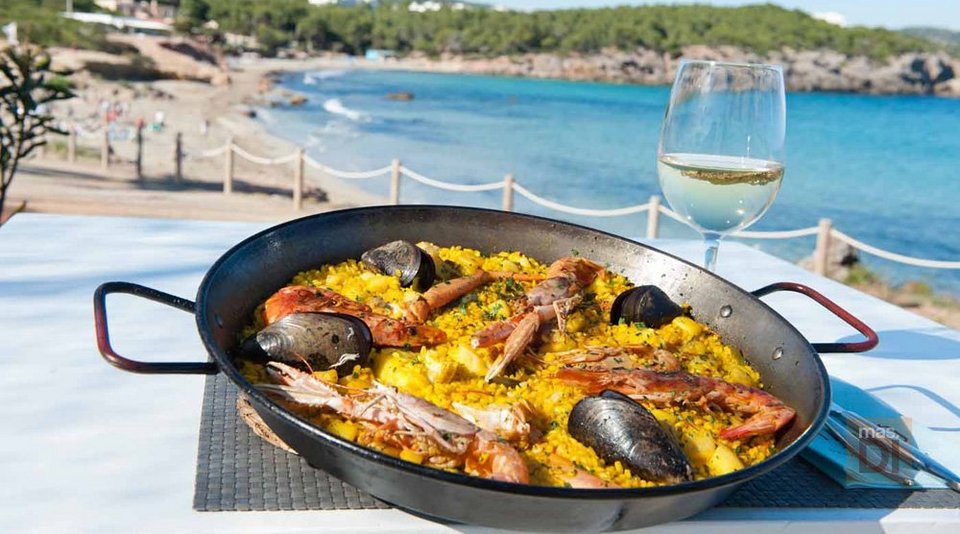
This is a traditional Spanish Stew made from fresh vegetables, dried vegetables and various meats. You can find this dish anywhere. Each region will have a different way of processing, so you can completely enjoy it with different flavors.
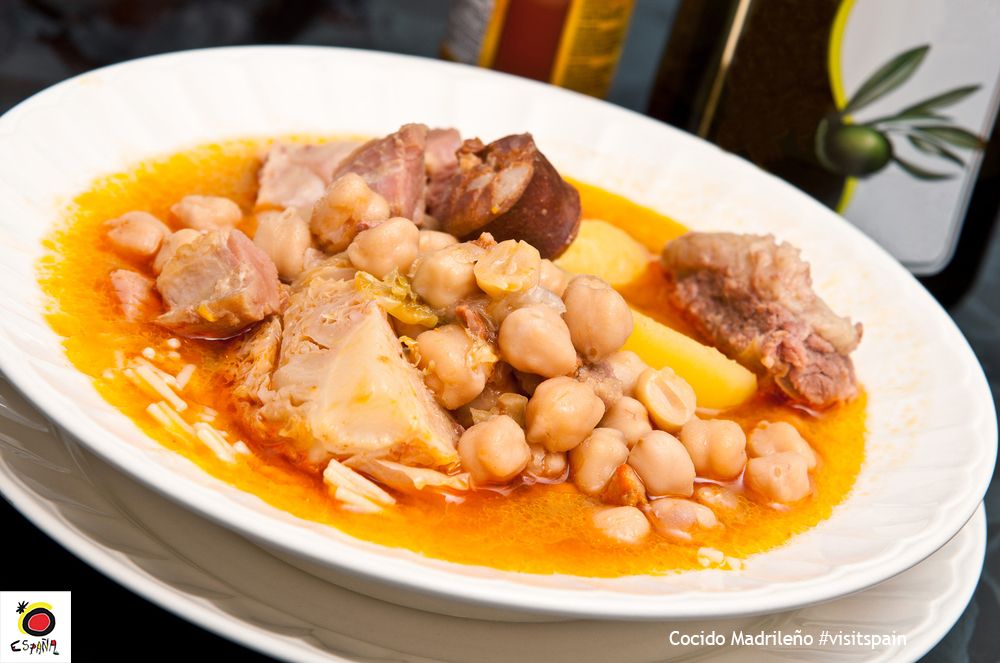
Pimientos de Padrón (Spanish-Style Blistered Padrón Peppers)
Also known as Padrón Peppers from the town of Padrón in the Galicia region of Spain, made from green peppers is one of the popular appetizers in Spain.

A competitor of the paella rice dish. This is a pasta dish but has a similar cooking method to Paella rice. This dish is very popular in Catalonia and Valencia.
One of the most appreciated dishes in Spain is salted cod. Cod is caught from as far away as Norway or Newfoundland and salted for preservation.

This dish is made similar to Chinese fried dough sticks covered by sugar-covered, served in many in the festival or afternoon tea.

Leche Frita
If you think milk can’t be fried, think again. Fried milk Leche frita is a very popular dessert made from condensed milk into whipped cream, egg yolks and flour. All are mixed well, then rolled in bread crumbs and fried until golden brown. This dish can be eaten both hot and cold.

Jamón Serrano ham, Galician seafood, Torrija… are also attractive dishes that you should not miss when visiting this beautiful Spain.
The famous drinks of Spain are Vermouth, Granizados (fruit shaped-ice), Clara (lemon beer), especially Sangria (fruit wine) – the national drink, Espresso coffee, wine, beer, and sherry – is one specialty wine in the south of Spain.

Spain travel blog: Where to stay?
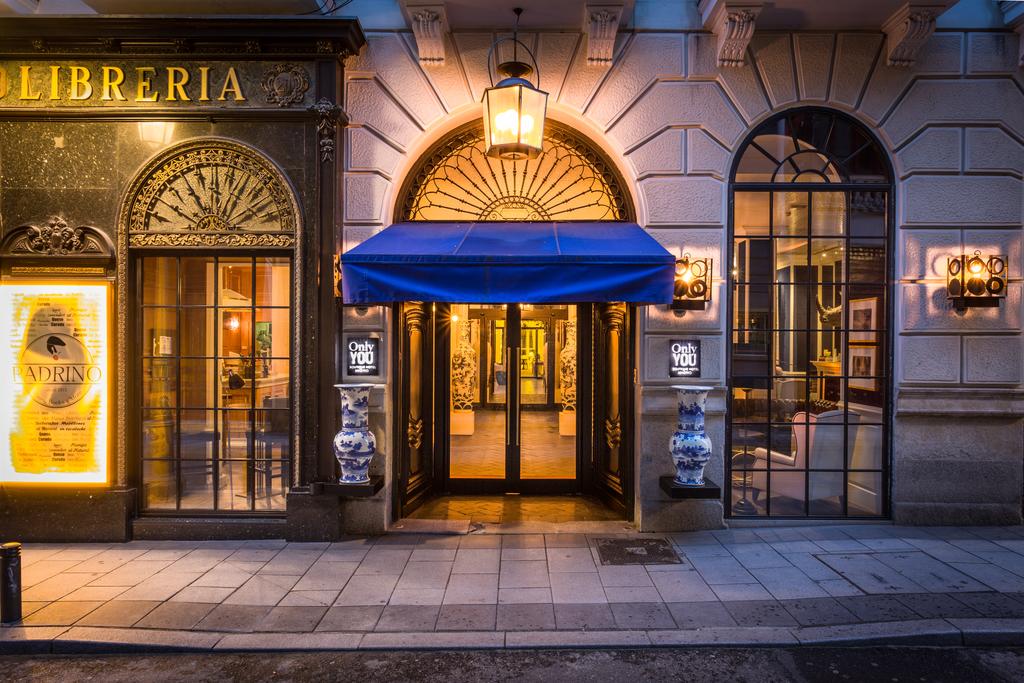
Hotels in Spain are very diverse with wide range room rates for visitors to choose from, and ensure dedicated service with all necessary amenities. There are also family apartments and overnight guesthoues in the suburbs, but there will be no weekend discounts like big hotels in the city.
To find top rated and best hotels, acommodations you should visit Agoda.com , Booking.com .
Spain blog: Traveling cost
Spain has many attractive tourist attractions, but you will not have to spend too much for those attractions. With attractions and museums will cost for admissions from 2-14 Euros. For rides at amusement parks cost 20-30 Euros, visiting the islands will cost about 45 Euros for each dive.
Staing in a dorm room cost from EUR 15/person/night up to 30 EUR/person/night in big cities like Barcelona or Madrid.
Cheap hostels cost from EUR 45/night. If you want to be a bit more luxurious and comfortable, you can choose to stay in apartments through services like Airbnb or Couchsurfing with more diverse prices and have interesting experiences when you have the opportunity to meet and live together with locals.
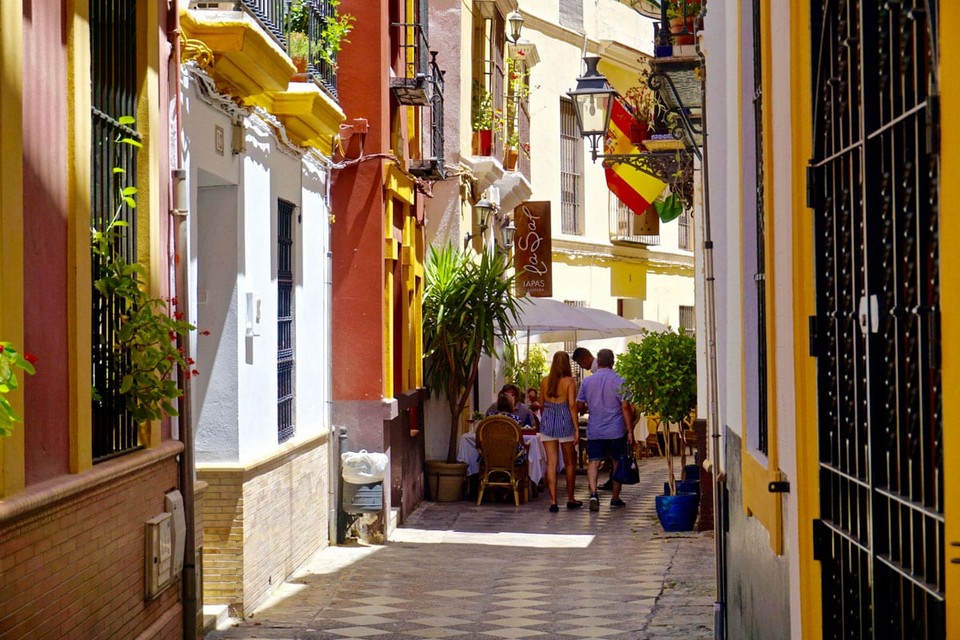
A sandwich cost from EUR3-7/part. Fast foods also cost around EUR7. Price from 15-22 EUR/person if you eat at small restaurants. And enjoy a meal at the luxury restaurants, will cost at least EUR27/person. You can also cook for yourself by buying ingredients from local markets for between 25-40 euros/person, which is also one of the interesting experiences when you go to the market in Spain.
Thus, the proposed budget for a tourist day in Spain will range from EUR50 – 60/day. This expected budget is calculated with the service of staying in the dormitory, self-cooking and traveling by public transport, which is the best and most economical budget calculation for you. However, the budget will be higher if you choose to stay in hotels and dining at restaurants.

Spain travel blog: Other notes before you go
- Please keep your money and personal documents carefully when traveling on public transport or going to crowded places because pickpocketing is quite common here.
- Some public places or restaurants, eateries have signs prohibiting smoking, you must pay attention to this because if you violate, you will be severely fined.
- When taking an escalator, remember to stand on the right side in case the person behind wants to pass.
- Spaniards often go out and have dinner quite late, after 8 or even 9 o’clock and they often eat while talking so the meal time is quite long. So there are a lot of restaurants that are only open from after 8pm to night. There are also some restaurants that open earlier, but they will be divided into two areas: the tourist area serving from 7 pm, the local area serving from 9 pm.
- Not all Spanish can speak English, even in big cities like Madrid or Barcelona. Do not rush to think that people are not friendly when you speak English with them but do not receive a response, simply because they may not understand what you are saying. So, learn some common Spanish phrases before coming here.
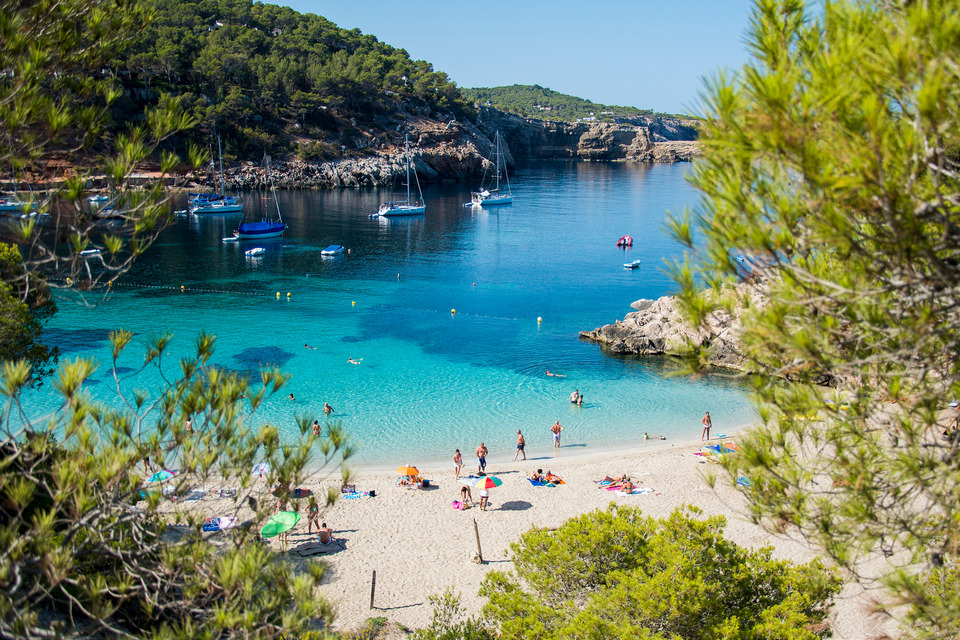
Some best day tours, trips, activities and transfer services, tickets in, from and to Madrid you can refer to
- Private Madrid International Airport (MAD) Transfers for Madrid
- Toledo and Segovia from Madrid
- Toledo & Windmills Tour from Madrid
- Toledo Half Day Guided Tour from Madrid
- Madrid Segway Tour
- Avila and Segovia Full Day Guided Tour from Madrid
- Madrid Half-Day Tour with Prado Museum, Royal Palace or Bernabeu Stadium Visit
- Prado Museum Skip-the-Line Entrance Ticket
- Madrid City Hop-On Hop-Off Bus Tour
- Royal Palace of Madrid Guided Tour with Fast Track Access
- Real Madrid Santiago Bernabéu Stadium & Museum Entrance Ticket in Madrid
- Cheapest & Fastest Trains from MADRID to BARCELONA
- Eurail Pass for Spain (3, 4, 5, 6 or 8 Days)
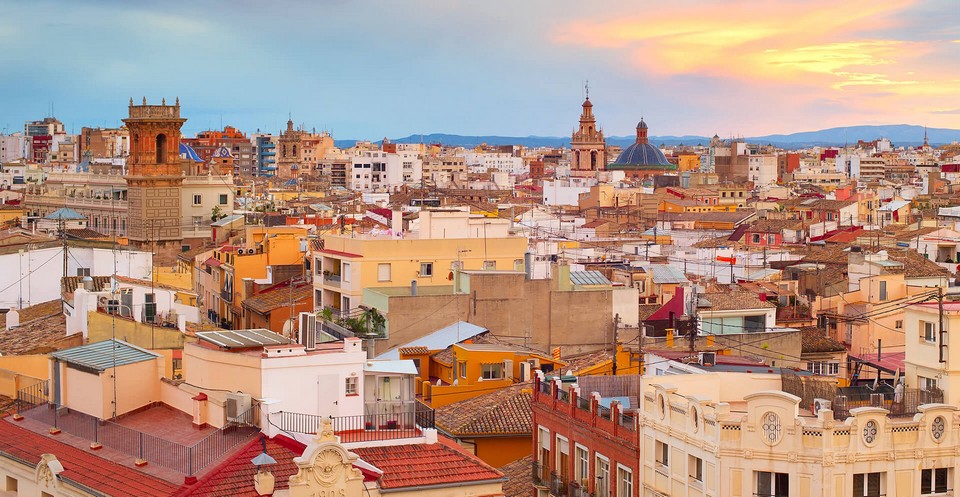
Are you looking for more top things to do in Madrid: Tours, activities, attractions and other things? Let’s check it out here . And Spain travel guide here .
Related articles

RELATED ARTICLES MORE FROM AUTHOR
Leh ladakh bike trip blog — ladakh bike trip guide & tips for first-timers, guide to shenzhen nightlife — top 5 things & what to do in shenzhen at night, ladakh trip cost per person from delhi — how much does ladakh trip by bike cost, india travel tips — 25+ what & things to know before traveling to india.

Coron itinerary 5 days — What to do & how to spend 5 days in Coron?

Arashiyama travel blog — The fullest Arashiyama travel guide with top things to do in Arashiyama

Explore Fenqihu old street — What to do in Fenqihu in a day trip?

Where to go in Kunming? — 15+ top Kunming attractions & best places to visit in Kunming
Must eat in melaka — 10+ famous malacca street food & must try food in melaka, editor picks.

Leh Ladakh bike trip blog — Ladakh bike trip guide &...

Guide to Shenzhen nightlife — Top 5 things & what to...

Ladakh trip cost per person from Delhi — How much does...
Popular posts.

What to buy in USA? — 17+ must buy in USA...

Must buy souvenir in Taiwan — Top 17+ most famous, cheap...

Must buy in Korea — Top 23 cheap, famous & best...
Popular category.
- Inspiration + Guide 1460
- Trip Inspiration 468
- Thailand 209
- Food + Drink 208
- Coasts + Islands 193
- South Korea 168
- Vietnam 166
- Travel Photos 144
- Work for Us
- Terms & Conditions
- Privacy Policy
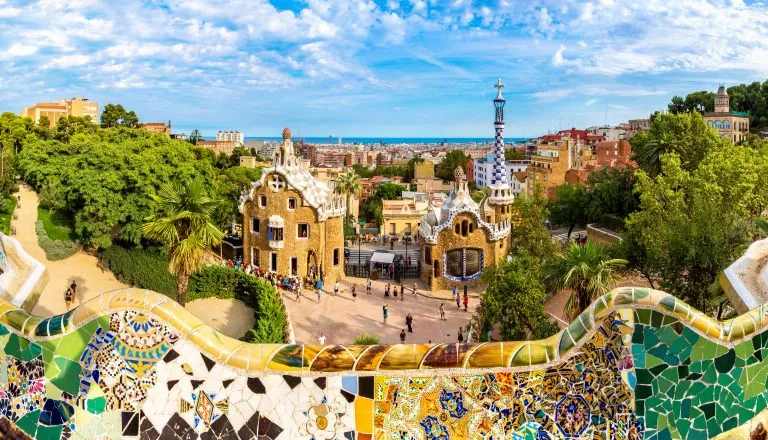
The Ultimate 10 Days in Spain Itinerary (+ Travel Tips)
If you’re planning your first trip to Spain and are hoping to sample a variety of what makes this sun-drenched country special, we designed this 10 day Spain itinerary for you!
Spain has had a special place in our hearts ever since we landed in Madrid for the first time when kicking off our supposed “6-month” round-the-world trip (that was almost 7 years ago, and that trip arguably never ended).
In the years since, we have been lucky enough to visit Spain so many times that we’ve lost count, exploring countless cathedrals, castles, alcabazas , beaches, and cities along the way.
We’ve explored the country via train, car, bus, and ferry, sampling iconic attractions and little-known villages alike, traveling both alone and with various groups of family and friends.
This itinerary for Spain in 10 days has been curated for first-time travelers based on our lived experiences in Spain, and we hope that you walk away loving this beautiful country as much as we do!
Here’s how to fall in love with Spain in 10 days.
Table of Contents
How We Structured This 10 Day Spain Itinerary
Getting around during your 10 days in spain, the ultimate 10 days in spain itinerary, the best time of year to enjoy this itinerary for spain, more than 10 days in spain, what to pack for your trip to spain, your 10 day spain itinerary map.

Some links in this post may be affiliate links. If you make a purchase through one of these links, we may earn a small commission at no extra cost to you. Please see our disclosure policy for more detail.
We structured this 10 day Spain itinerary to cover many of the country’s most popular destinations in a “U” shape, beginning in Madrid and ending in Barcelona.
In addition to the ever-popular Madrid and Barcelona, this itinerary also loops through Toledo, Seville, Granada, and Cordoba in a quest to sample a variety of what makes traveling in Spain special.
With the help of the high-speed train between Madrid and Barcelona , you can easily enjoy this trip by either flying round-trip to and from Madrid, or booking an open-jaw ticket where you fly into Madrid and leave from Barcelona.
And, while we opted to start this itinerary for Spain in the capital, you can easily reverse it and start in Barcelona instead, if the flights work out better that way!

Since this 10 days in Spain itinerary is focused on cities, there’s no need to rent a car or drive on this route!
The simplest (and most fun) way to travel between each destination on this itinerary is via train.
For most places, you’ll have the choice of a high-speed train (more expensive but much faster), or a slower regional train.
We recommend comparing train schedules and prices via Omio , the service we use to book many trains around Europe.
Spain’s high-speed AVE trains, like many high-speed trains around Europe, use dynamic pricing–in other words, you should lock down your fares as soon as you can commit to dates!
Once you’re in a given destination, each city is walkable (with the help of public transportation and/or cab rides in certain places).
Shop train tickets for your trip to Spain today!
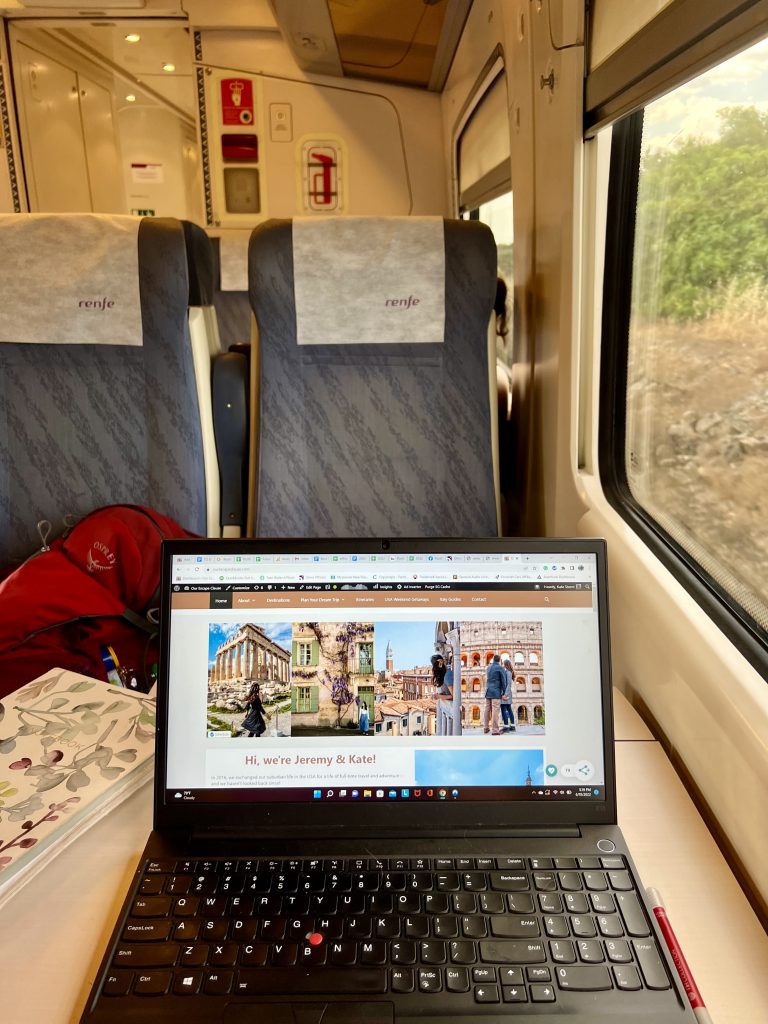
Day 1: Arrive in Madrid and start sightseeing.
There’s nowhere better to kick off your 10 days in Spain that in the vibrant capital city of Madrid!
Often underestimated compared to popular Barcelona, Madrid is beautiful, endlessly interesting, and pulsates with life from every corner.
It’s one of our favorite cities in Europe to fantasize about living in, and who knows–one day we might just make it happen.
On your first day in the city, tour the (gigantic, opulent) Royal Palace , check out the cathedral, meander through Plaza Mayor, and stop by the Templo de Debod.
And, of course, your first day in Spain can’t be complete without tapas!
Head to Mercado San Miguel for endless options, or opt for this popular tapas tour to learn the ins and outs of this tradition (knowledge that will be very useful for the rest of your time in Spain).
Book your Madrid tapas tour today!
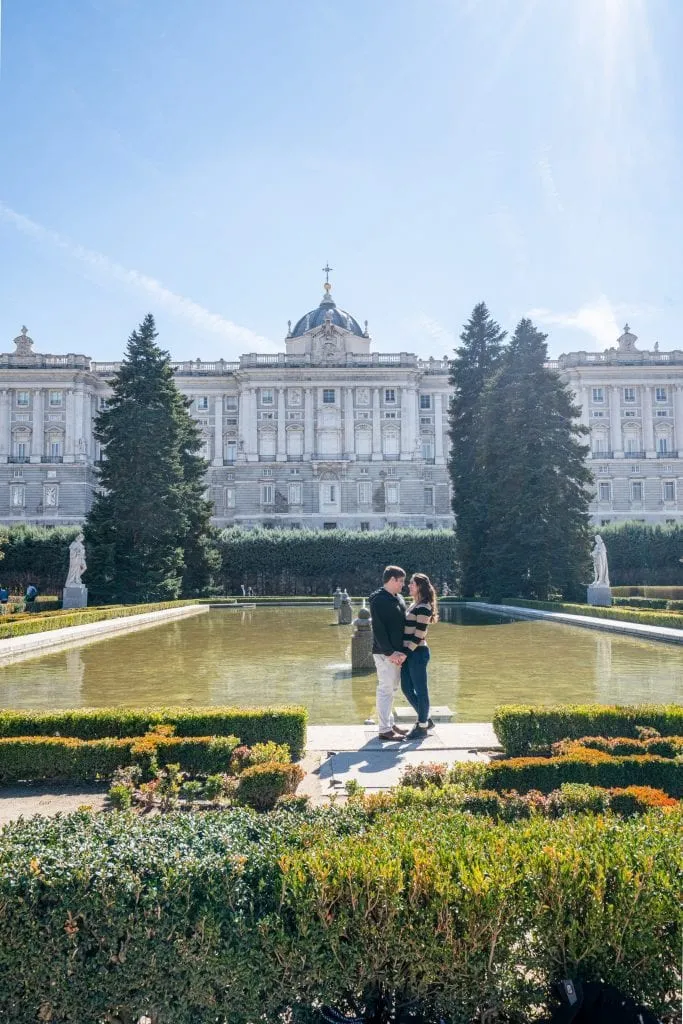
Where to Stay in Madrid
Hostal Adis — Located just off Puerta del Sol and boasting excellent reviews, you couldn’t ask for a better location in Madrid–and at a budget price, too!
Hostal Adis is an excellent property for budget travelers looking for an excellent location and plenty of privacy–rather than being a traditional hostel, Hostal Adis is more like a budget hotel.
Check rates & book your stay at Hostal Adis today!
Hotel Regina — Featuring plush beds, spacious rooms, excellent customer service, and a perfect location near Puerta del Sol, mid-range travelers can’t go wrong with a stay at the popular Hotel Regina.
If you’re feeling like a bit of a splurge, upgrade to a room with a panoramic view for an experience you won’t forget anytime soon!
Check rates & book your stay at Hotel Regina today!
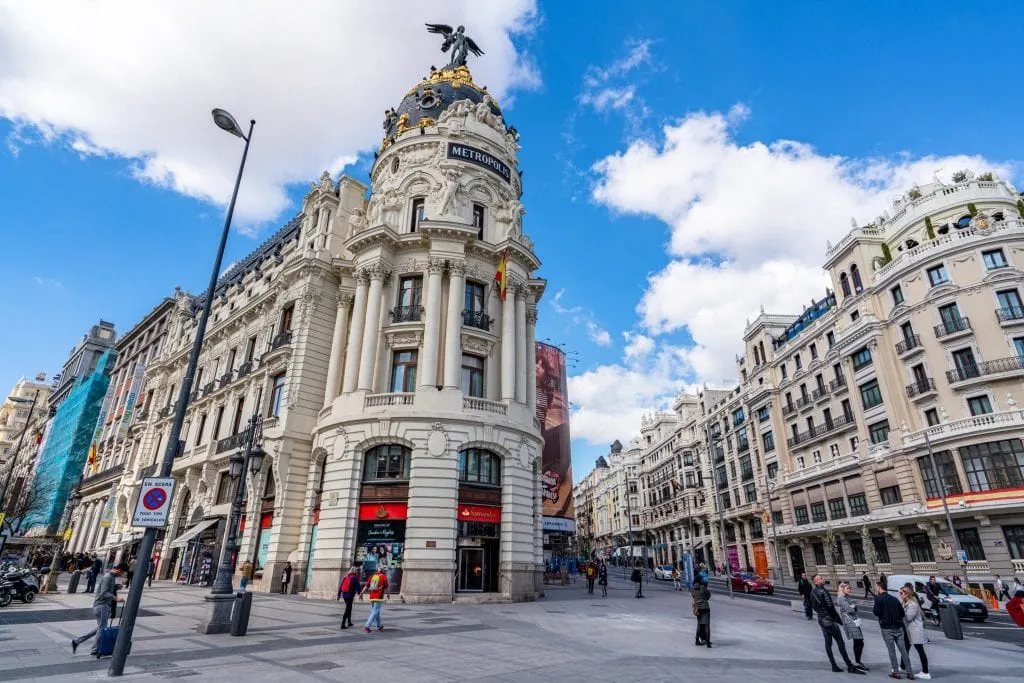
Catalonia Las Cortes — Simultaneously sleek and cozy, modern and traditional, Catalonia Las Cortes is housed in an 18-century building in the heart of Madrid and has blended together all the best of classic atmosphere and modern convenience.
We’ve stayed at a few Catalonia hotels over the years and have always been impressed.
An excellent location near Puerta del Sol, rave reviews and beautiful rooms make Catalonia Las Cortes the perfect luxury hotel choice for those looking for a blend of traditional and modern during their 3 days in Madrid!
Check rates & book your stay at Catalonia Las Cortes today!
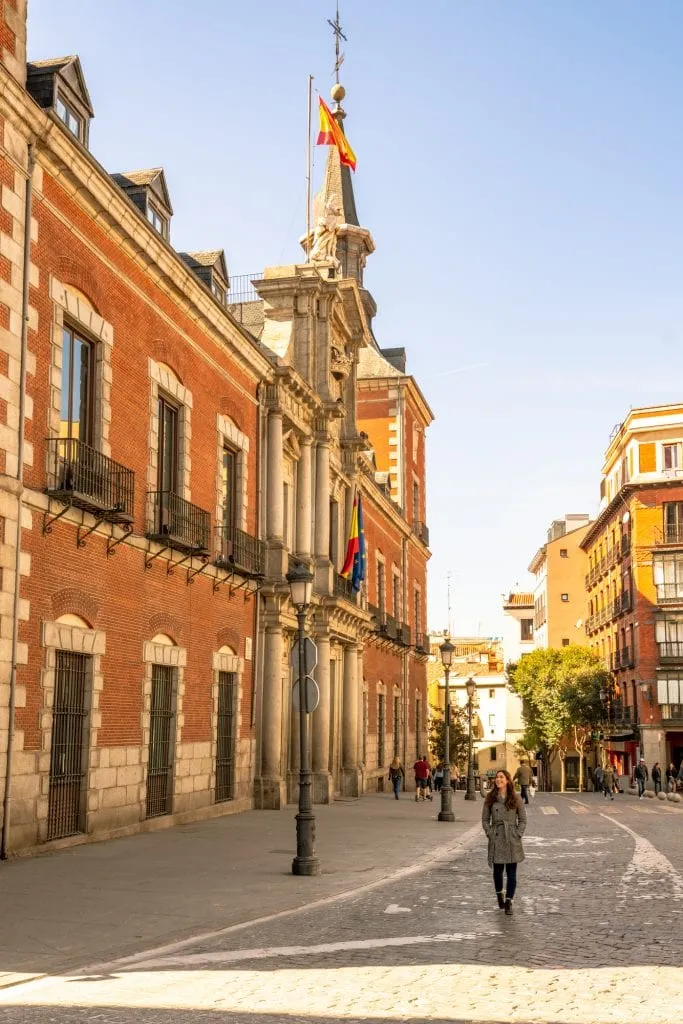
Day 2: Enjoy a second day in Madrid.
The second day of this itinerary for Spain opens with one of the most memorable art museums in the country: Spain’s National Art Museum, the Prado.
Packed with masterpieces (primarily Spanish, but also from across Europe), the Prado is one of those museums that we never get tired of.
Skip-the-line tickets are a great idea here, but for the most context (and efficient sightseeing), consider taking a tour in order to make sure you see the best of Velázquez, Goya, El Greco, and beyond!
Book tickets to visit the Prado today!
Once you’re ready to move on, head to the delightful Retiro Park.
With gardens to explore, rowboats to rent, statues to admire, lawns to lounge on, and even the Palacio de Cristal to enjoy, Retiro Park is a wonderful place to relax.
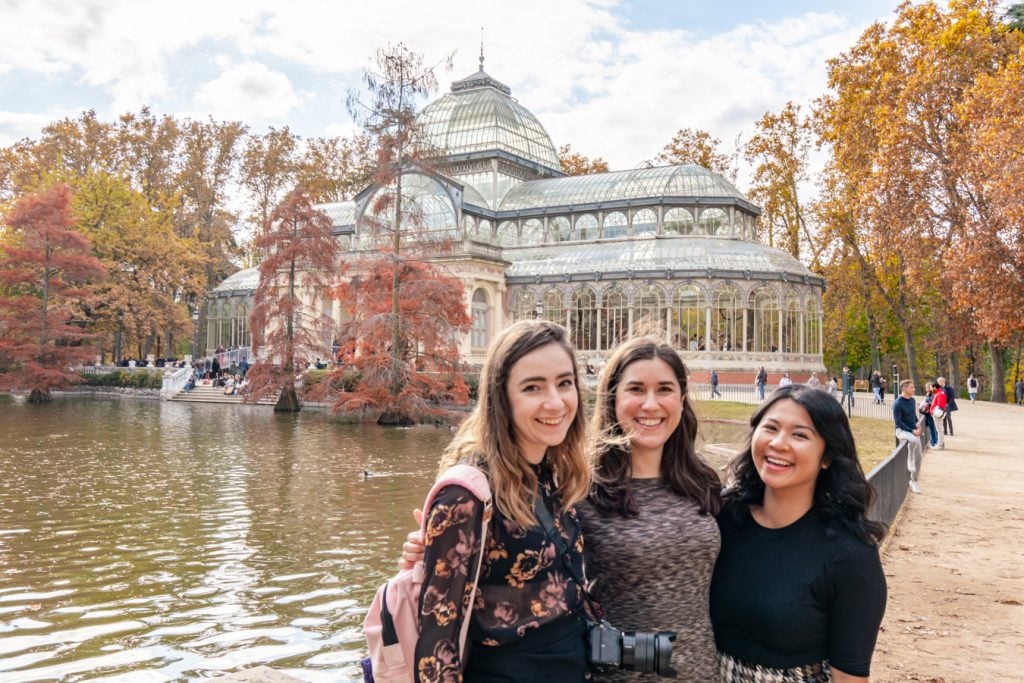
Eventually, make your way to the exit by the Puerta de Alcalá and head up Gran Vía to check out some of Madrid’s most famous architecture!
This shopping street is where you’ll find the iconic Metropolis Building (the rooftop bar and restaurant on top of the Círculo de Bellas Artes has an amazing view of it!), as well as the Cybele Palace.
Branch off to explore the Puerta del Sol and lively La Latina neighborhood in the afternoon and evening!
Don’t wrap up your last (full) day in Madrid without at least one round of churros con chocolate at Chocolatería San Ginés , either.

Day 3: Take a day trip to Toledo.
Today, it’s time to leave the capital behind and take a day trip to the beautiful medieval city of Toledo.
Set about 35 minutes away from Madrid by high-speed train (or about an hour by bus or car), beautiful Toledo is easily one of the best day trips from Madrid.
Surrounded on 3 sides by the Tagus River, Toledo is as charming to look at as it is historically relevant.
The city once briefly served as the capital of Spain, and was even an independent kingdom at one point!
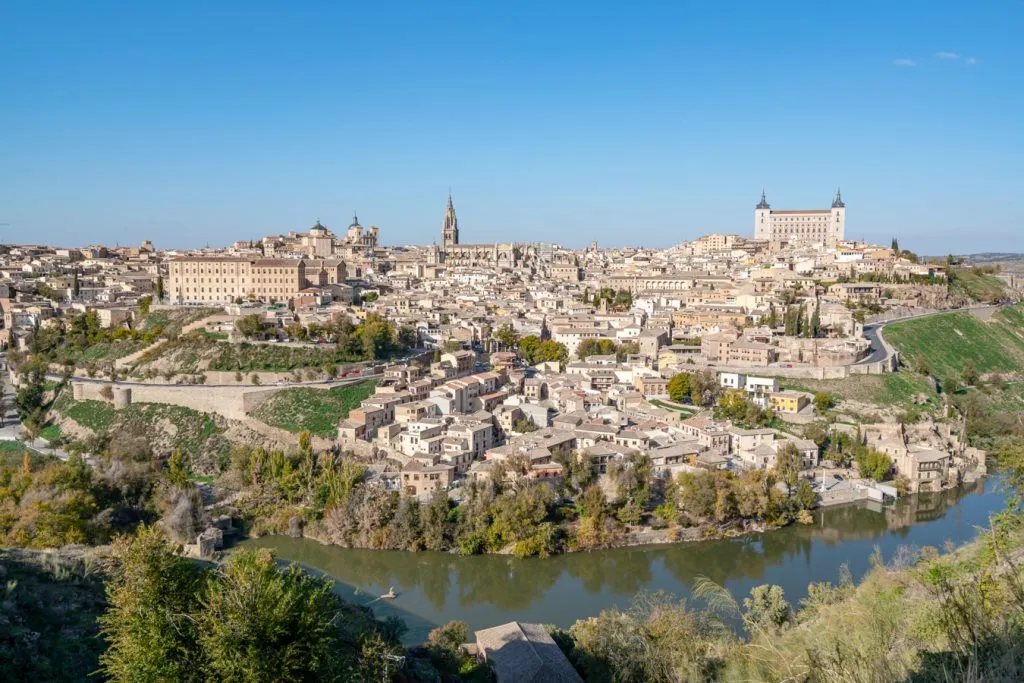
Some of the best things to do in Toledo include visiting the magnificent Toledo Cathedral, touring the Alcázar, stepping inside the Monastery of San Juan de Los Reyes, and meandering through the city’s charming streets.
Don’t miss the viewpoints of the town from across the river, either!
You can easily take the high-speed train to Toledo yourself for the day, but if you prefer the context of a tour (and/or want the easiest access to the viewpoints from across the river), this popular day trip is also an excellent option.
Book your day trip to Toledo today!

Day 4: Head south to Seville.
Sunshine, sour orange trees, flamenco, and some of the most fascinating architecture in Europe await in the next part of this Spain itinerary: welcome to Andalucia.
This is one of our favorite regions in Spain, and it always seems to keep drawing us back.
A roughly 2.5-hour high-speed train journey will deliver you from Madrid to Seville, the capital of the Andalucia region and an excellent jumping-off point for your explorations.
We recommend taking an early train down from Madrid, dropping off your luggage at your hotel (most are happy to hold it until check-in for you), and starting your sightseeing.
Today, be sure to check out the stunning Seville Cathedral , climb to the top of the Giralda (bell tower) for beautiful views of the city, wander through the famous Plaza de Espana, and explore the delightful neighborhood of Barrio Santa Cruz.

The Royal Alcazar of Seville is stunning, and also one of the best attractions in town–but we’d only recommend visiting today if you’re a really big architecture fan.
As amazing as the Alcazar is (and it is, truly), it’s somewhat overshadowed by the Alhambra, which you’ll see in another couple of days when following this 10 day Spain itinerary.
On the other hand, if you’re interested in adding a flamenco show to your Spain itinerary, Seville is the place to do it.
Andalucia is widely considered the birthplace of flamenco (though the specific origins are debated), and a flamenco show like this is a wonderful way to close out your evening.
Book your flamenco show in Seville today!
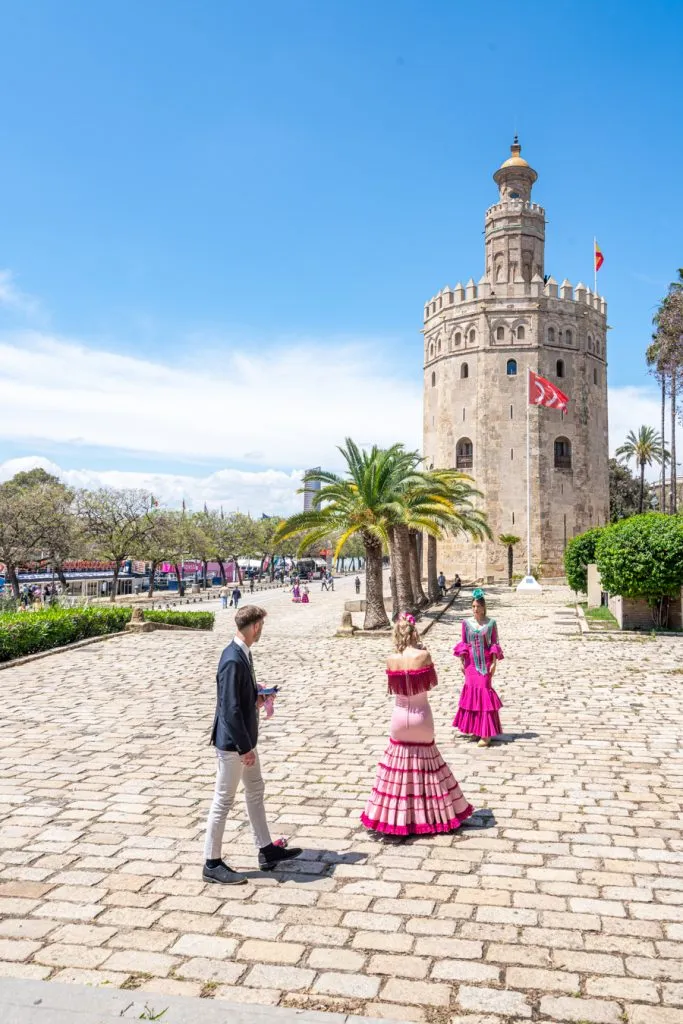
Where to Stay in Seville
When deciding where to stay in Seville, location is key as ideally, you’ll want to stay within walking distance of Seville’s best attractions.
We had a fantastic experience at Petit Palace Puerta de Triana on our most recent trip to Seville.
The hotel has a fantastic location (central but also quiet–a far-from-guaranteed combination in Spain), a delicious breakfast, and comfortable rooms.
Looking for something a bit different?
The incredibly popular Hotel Rey Alfonso X is an excellent choice, and its rooftop views are sublime!
If you’d like to stick to more of a budget, Hotel America Sevilla gets wonderful reviews and doesn’t sacrifice too much in terms of location.
Meanwhile, for the height of luxury, you can’t beat the absolutely stunning Hotel Alfonso XIII !
Check rates & book your stay in Seville today!
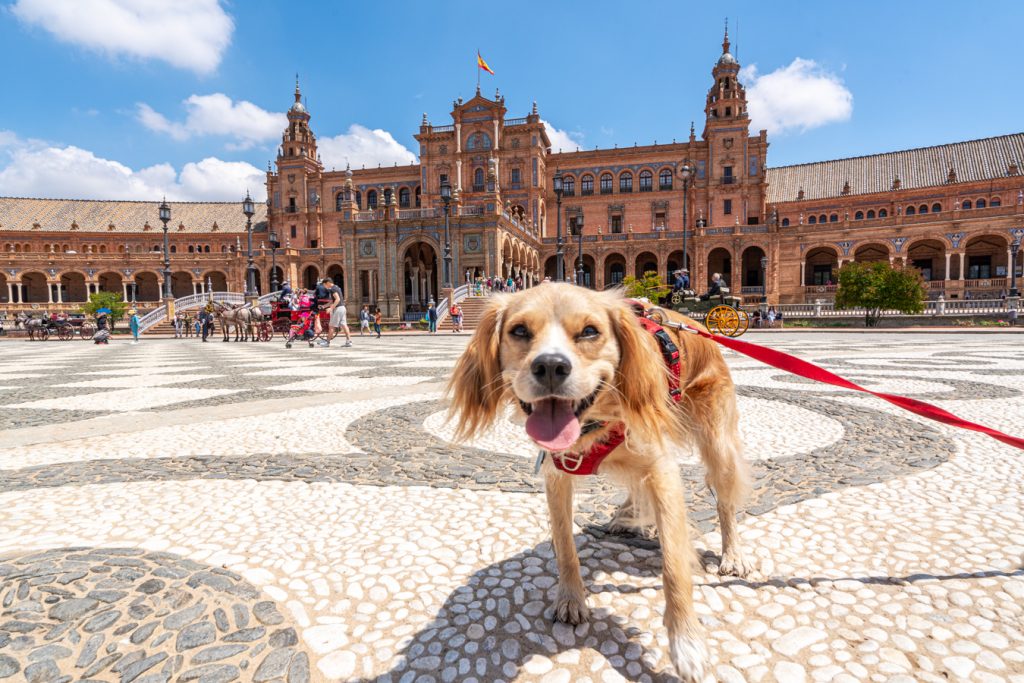
Day 5: Take a half-day trip to Cordoba.
Less than an hour from Seville by train or car, you’ll find the captivating Andalucian city of Cordoba–which happens to be one of our favorite places in the region!
Once the most powerful city in Islamic Spain, the Cordoba of today is small and manageable, a bite-size tourism destination that nonetheless leaves a big impact on visitors.
Cordoba is most famous for its incredible Mosque-Cathedral –literally a former mosque with a cathedral built into its center–which is one of the most memorable buildings we’ve had a chance to visit anywhere.
The Mosque-Cathedral should absolutely be your top priority when visiting Cordoba, but beyond that, there’s still plenty to see within a short walk!
Snapping photos of the picturesque Calleja de las Flores, relaxing in the Patio de los Naranjos, wandering through the Jewish Quarter, and checking out some of the beautiful patios of Cordoba should also be on your to-do list.
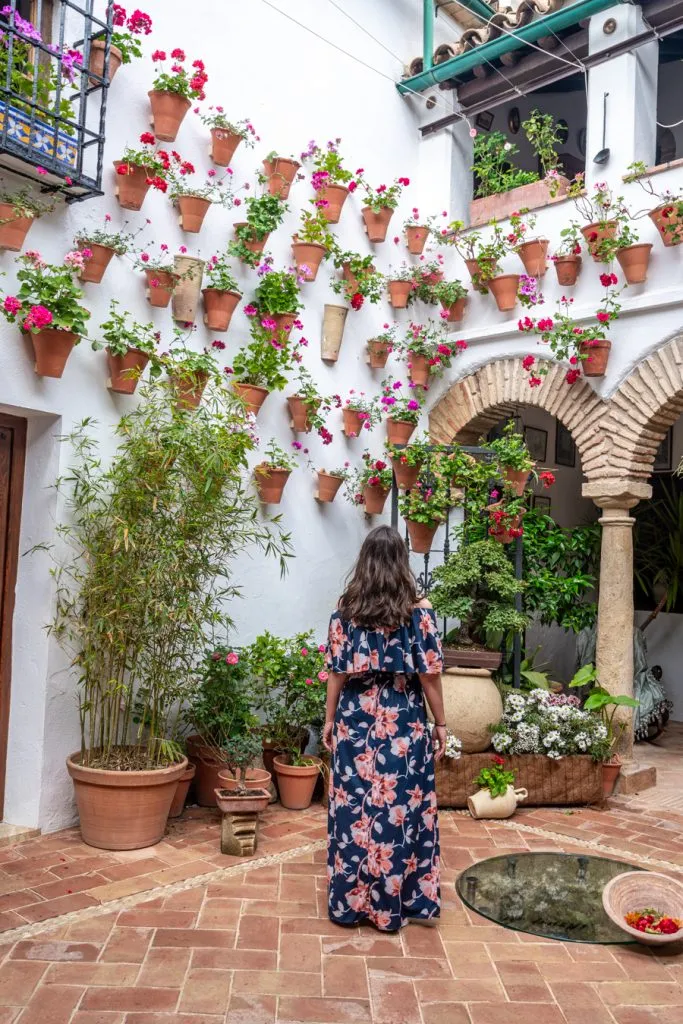
After seeing the best of Cordoba, you have two options for the rest of your day: first, you could enjoy another evening in Seville.
Or, if you’d rather make today particularly busy in favor of having more time for sightseeing tomorrow, you could head onto Granada.
Granada, home to the Alhambra, is about 3 hours from Seville by train or car and is your destination for tomorrow.
You could opt to continue sleeping in Seville and take a long day trip there on day 6, or, if you’re open to packing and unpacking an extra time, you could sleep in Granada starting tonight to give yourself more time in the city.
Personally, we love Granada and would recommend spending extra time there, but both options are compatible with this Spain itinerary.

Where to Stay in Granada
When spending a few days in Granada, we opted to rent an apartment from Mosaiko Homes and could not have had a better experience: the owner was responsive, the apartment fantastic, and the location unbeatable!
Mosaiko Homes is located on a quiet street a short walk from many of Granada’s top sights, offering the combination of a convenient location and a lack of noise at night–two things that can be difficult to find together in Andalucia!
Another excellent option with near-perfect reviews is the incredibly unique Casa de Reyes (that decor!).
For a bit of luxury, the popular Shine Albayzin is not only housed in a 16th-century palace, it overlooks the Alhambra .
Generally speaking, lodging in Granada is much more affordable than in, say, Barcelona or even Seville.
If you’re going to splurge on a luxury property during your 10 days in Spain, Granada is a fantastic place to do so!
Check rates & book your stay in Granada!
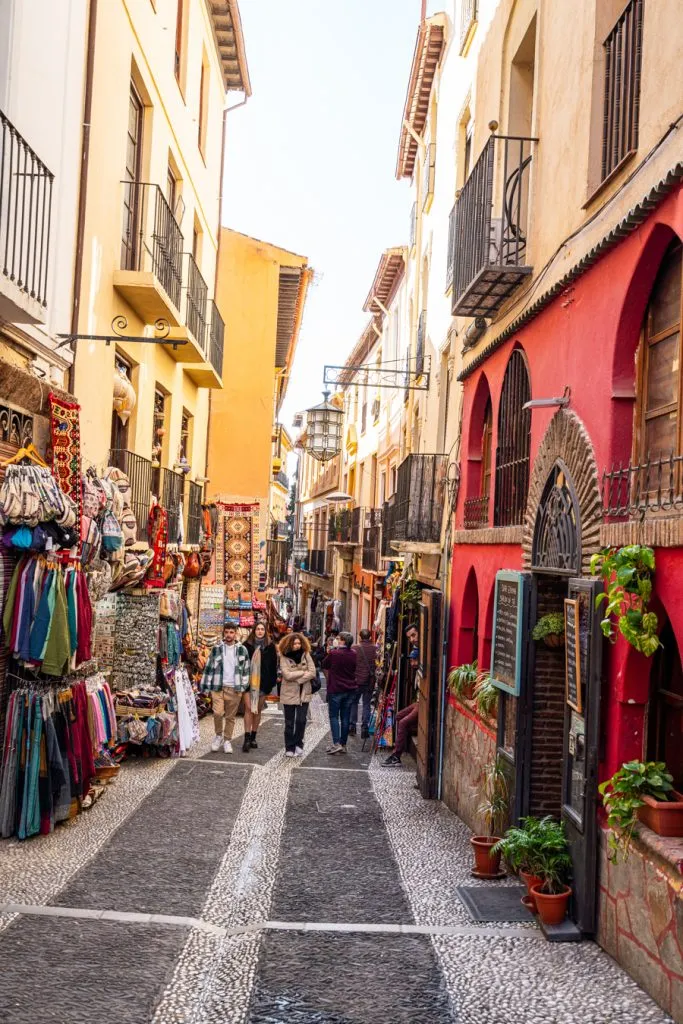
Day 6: Explore Granada and tour the Alhambra.
Whether you’re visiting on a day trip from Seville or spending the whole day in Granada (we recommend the second, but the first is doable too), there is one major item on the agenda today: the Alhambra.
This collection of centuries-old palaces (plus a fort, gardens, ruins of a medina, and more), is one of the most unique groupings of architecture in Europe, and the most-visited tourist attraction in Spain!
We wrote about visiting the Alhambra extensively here , so I’ll try to keep this (kind of) brief, but the long and the short of it is that this is a place you need to plan ahead for.
Tickets often sell out, and a tour is a great idea here if you like historical context ( we enjoyed this one ).
If you’re visiting from Seville, we recommend booking a day trip , because 3 hours of transit each way plus navigating to and from the complex is a headache in a short time frame (we rarely suggest taking day trips this long, but the Alhambra is worth it).

However you decide to visit, make sure that you book a ticket or tour that includes the Nasrid Palaces!
These magnificent palaces, the final stronghold of Islamic Al-Andalus before the Reconquista was officially completed by the Catholics in 1492, are the jewel of the Alhambra and an absolute must-visit.
Not all tours and tickets include them, though, so book yours carefully .
Once you wrap up at the Alhambra, if you’re staying in Granada, be sure to wander through the Albayzin neighborhood, admire the views of the Alhambra from a distance at the beautiful Mirador de San Nicolas, and visit the beautiful Granada Cathedral.
Granada is also a fantastic place to enjoy Spain’s tapas culture, so be sure to indulge in some snacks along with a tinto verano .
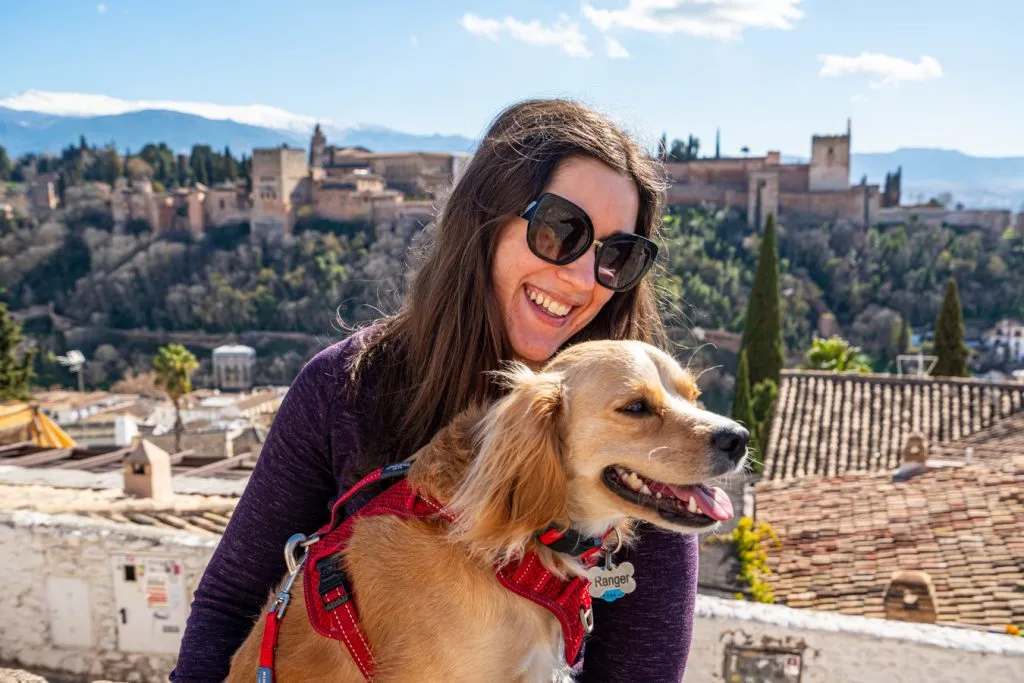
Day 7: Head north to Barcelona.
Today, say goodbye to Andalucia and head north to Barcelona!
This is the longest travel day included on this 10 days in Spain itinerary, and you can expect to spend 6+ hours on a train from Granada to Barcelona.
We recommend booking this trip at least a few weeks in advance, as you’ll want a choice of schedules and to get the best price possible.
If you’re on a budget, you can price out flights too, but traveling by train is much more fun!
Once you arrive in Barcelona, you can check into your hotel, get unpacked, and start exploring.
Meander through the Gothic Quarter, check out the Barcelona Cathedral, sample the Santa Caterina Market, stroll down Las Ramblas, and soak up the beauty of Plaça Reial.
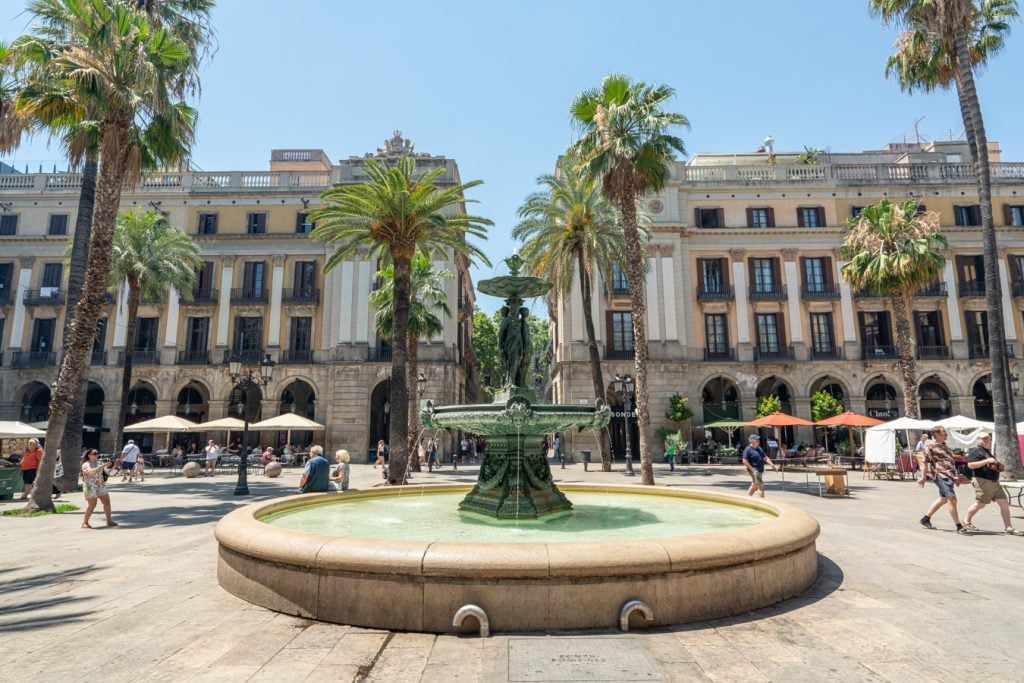
Where to Stay in Barcelona
When deciding where to stay in Barcelona, it’s important to keep in mind that this sprawling city requires some effort to move around–there’s no way to stay near all the best things to see in Barcelona, but it’s best to stay by some of them!
We checked into Citadines Ramblas Barcelona and were extremely satisfied–to the point that we may just keep going back on additional trips.
Our room was spacious, complete with a kitchenette, and extremely quiet despite the hotel being located in a prime spot right along Las Ramblas.
The view of the Barcelona Cathedral from the rooftop deck of the Colón Hotel Barcelona is pretty incredible too, though, and we have it bookmarked for a possible future trip.
If you’re traveling on a bit more of a budget, Hotel Nouvel also gets excellent reviews and is in a wonderful location.
Check rates & book your stay in Barcelona today!

Day 8: Explore Barcelona’s unique architecture.
On your first full day in Barcelona, start with a visit to either Casa Milà or Casa Batlló , two of the most famous homes designed by Gaudi!
They’re fairly close together, but with only a couple of days left in Spain, we recommend only going inside one and seeing the other from the outside.
You’ll also want to get an early start–personally, we recommend pre-booking tickets for Casa Batlló when it opens).
From there, explore any nooks and crannies of the Gothic Quarter you didn’t get to see yesterday, including Catalunya Plaza and Mercado de la Boqueria.

If you’re excited about all of Barcelona’s Catalan modernism architecture, we can also heartily recommend a visit to Palau de la Música Catalana .
Though not designed by Gaudi, it’s an amazing (and compared to much of Barcelona, uncrowded) example of the style and a memorable place to visit!
Barcelona’s Arc de Triomf is also only a 10-minute walk away.
From there, you’ll be about a 25-minute walk from Barcelona’s beaches and bustling coastline.
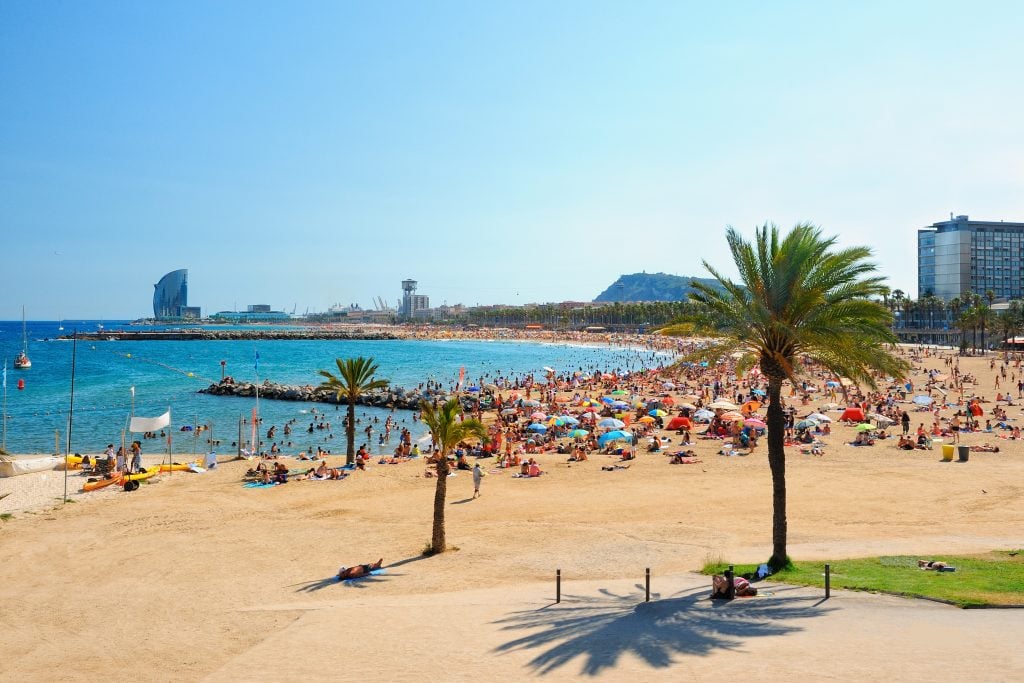
Day 9: Dive deeper into Barcelona (and possibly take a day trip).
With its long list of incredible attractions, it would be very easy to spend the penultimate day of your Spain vacation exploring the city in-depth–but another option would be to add on a trip to the monastery of Monserrat.
This mountain retreat away from the city is known for its incredible views, and a half-day trip there is a wonderful way to get a taste of Catalonia beyond Barcelona itself.
However, staying in the city also has its charms: the views from Park Güell and/or Tibidabo, the incredible Picasso Museum (which holds over 4,000 of the artist’s works), and a visit to Camp Nou are possible additions to your list.
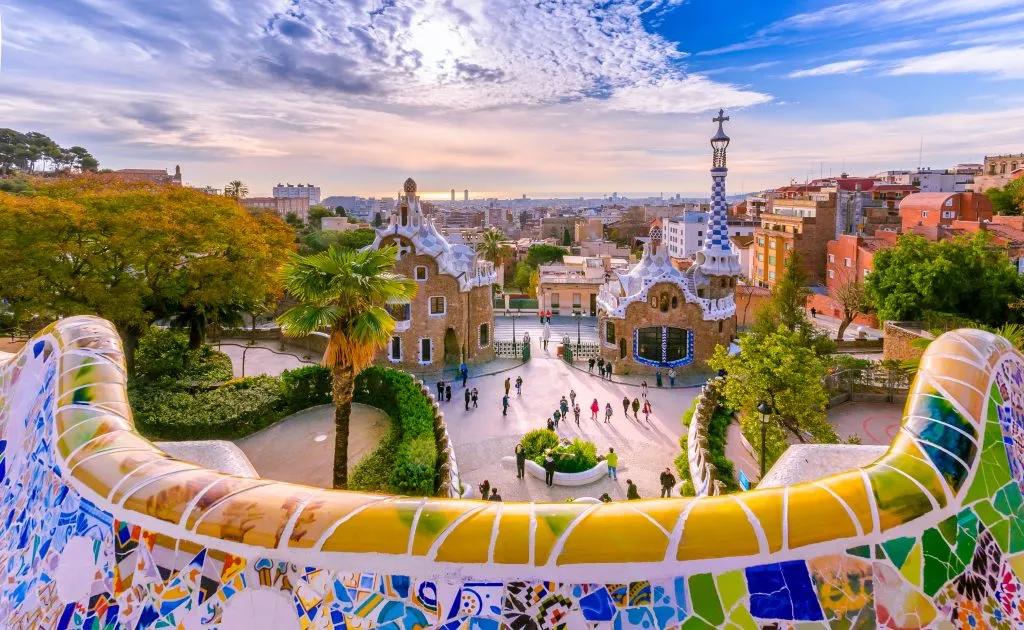
And, of course, we can’t forget the Sagrada Familia : Gaudi’s unfinished masterpiece of a cathedral is an absolute must-see when visiting Barcelona!
We visited in the early evening after hearing that the interior’s light was at its best then, and we were not disappointed–the colors were phenomenal.
If you wrap up at the Sagrada Familia before sunset and would like to enjoy the Mediterranean while in Barcelona, consider wrapping up your evening with a sunset catamaran cruise .
Book skip-the-line tickets to visit the Sagrada Familia today!

Day 10: (Maybe) head back to Madrid and say goodbye to Spain.
How the final day of this itinerary for Spain works for you depends on one factor: whether you’re flying home from Madrid or Barcelona.
If you’re taking an evening flight home from Madrid, you’ll need to take the high-speed train back to the capital (we highly recommend booking this in advance ).
If you’re leaving from Barcelona, you may have time for one more round of pan con tomate enjoyed while admiring the bustling of the city before you catch your flight!
However you close out your 10 days in Spain, we hope you say goodbye already dreaming of your trip back.
Shop train tickets from Barcelona to Madrid today!
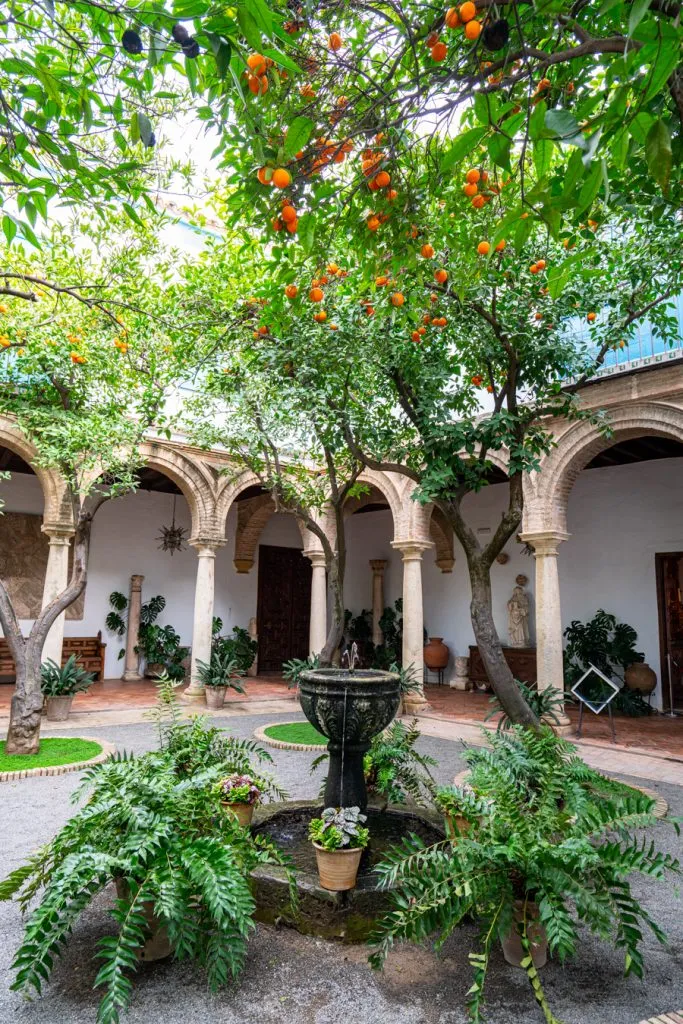
Spain is the definition of a year-round destination, and that includes this Spain itinerary!
That being said, though, if you have flexible dates and are trying to pinpoint the ideal time to travel Spain, we recommend enjoying this itinerary in the spring or fall.
Summer in Spain, especially in Andalucia, can be brutally hot (we shudder to think of visiting the Alhambra at noon in July).
Winter is perfectly doable, but the weather can be rainy and less predictable than in spring or summer.
On the plus side for winter, though, you’ll experience few crowds, low prices, and still have a decent chance at soaking up some Spanish sun, albeit with a jacket at hand.
The sweet spot for this 10 day Spain itinerary, though, which travels a decent chunk of the country and therefore needs to take multiple climates into account, is the spring and fall.
We have visited Spain in every season, and while each trip was a delight, we have a special place in our hearts for our spring and fall visits!
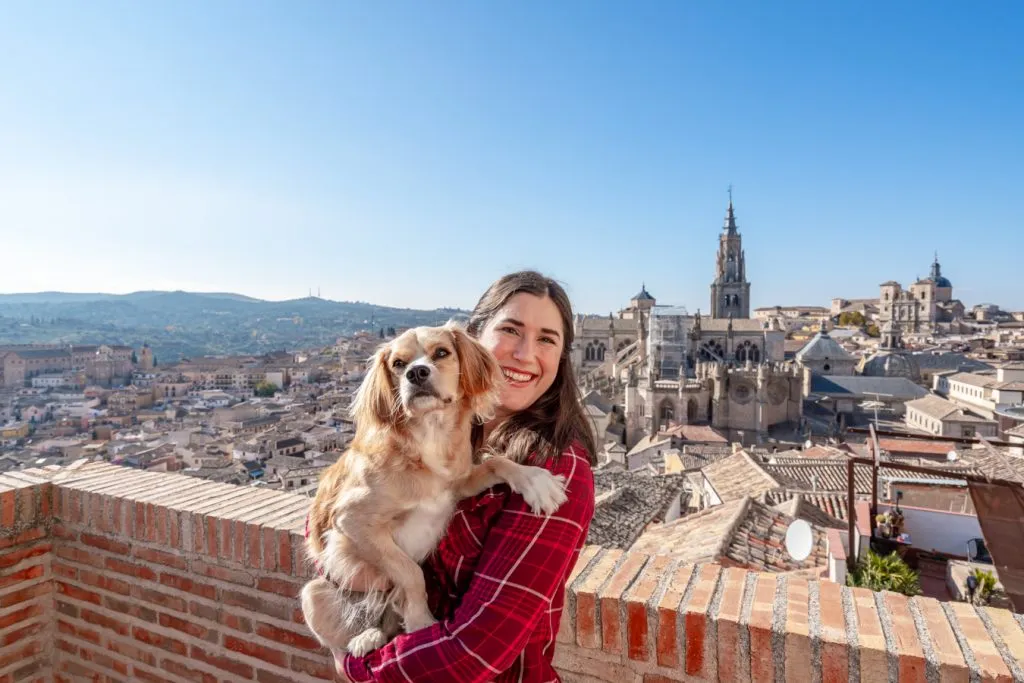
Lucky enough to have longer than 10 days in Spain? If so, congratulations!
Our first recommendation with a couple of extra days to add to your Spain itinerary is to slow down: every destination covered in this travel guide could easily use another day or two at least.
While it’s doable to travel Spain at a breakneck pace for a week and a half, the longer you’re there, the slower you’ll want to travel.
Alternatively, if you want to keep the speed going, you could add on another day trip: visit Girona from Barcelona, Segovia from Madrid, or Ronda from Seville, for example.
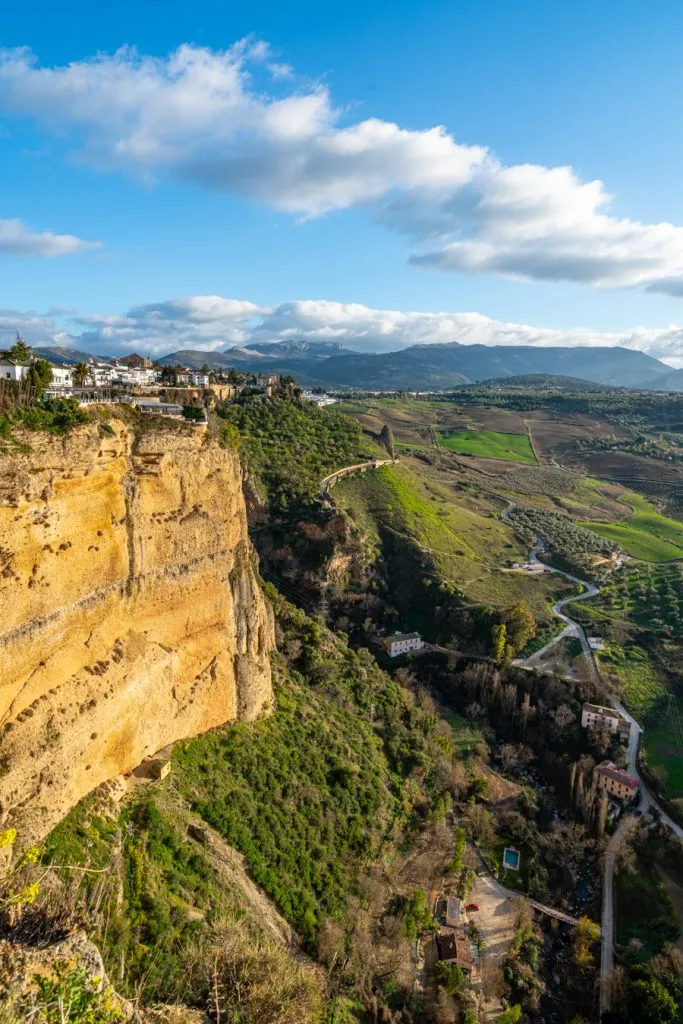
If you have closer to 2 weeks in Spain, consider adding Basque country to your itinerary!
San Sebastián, Bilbao, Vitoria-Gasteiz, and beyond makes for a wonderful extension to round out a couple of weeks in Spain.
Alternatively, you could opt to extend the Andalucia portion of your trip to include a couple of days on the Costa del Sol.
With near-limitless ways to enjoy a Spain vacation, it’s safe to say that wherever you head, you’re bound to have a wonderful trip.
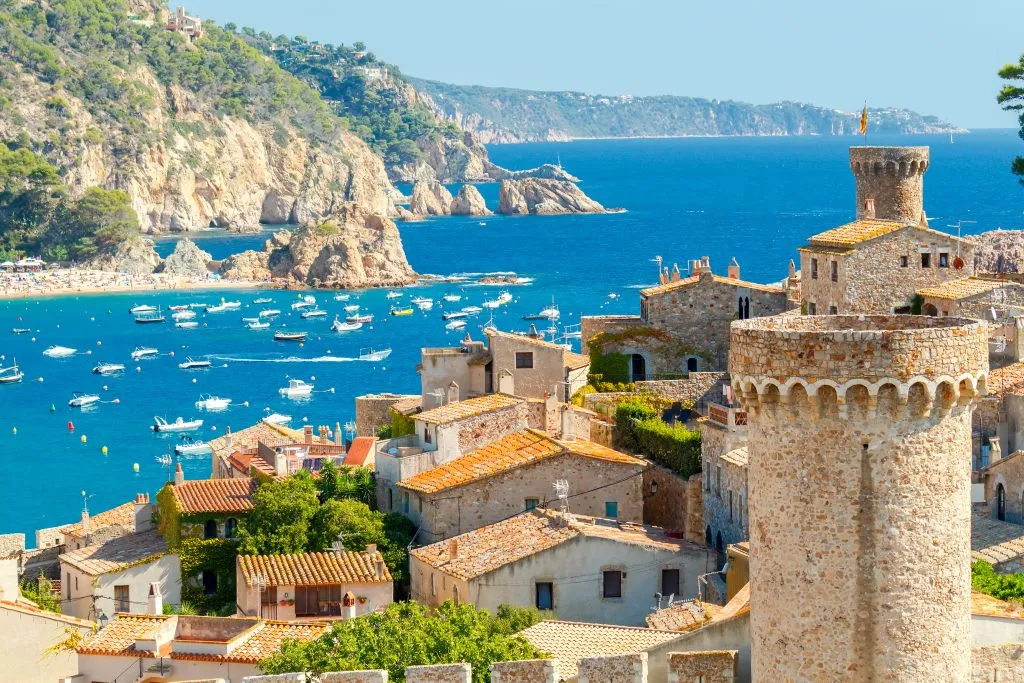
Our detailed packing lists for Europe in summer , fall , and winter cover just about everything you’ll need to bring on your 10 day Spain vacation!
To get you started on your list, though, here are a few essentials to add to your packing list:
Travel Adaptors for Spain — If you’re coming from outside of mainland Europe, you’ll definitely need adaptors for your electronics.
Camera — We completely adore our Sony a7R III , but whatever camera you’re comfortable with works–just make sure you have something with you to preserve your memories!

Comfortable Day Bag — We currently use Pacsafe’s sleek anti-theft backpack and love it, but if you don’t want to shell out the cash for this trip, that’s totally understandable.
Just aim for something comfortable to wear, not flashy, and medium-sized–we used a Northface Jester backpack for years and loved it as well.
Sunglasses — They’re not kidding about the Spanish sun! I find myself reaching for sunglasses regularly even when visiting Spain in winter.
Portable USB Charger — Don’t stress about your phone dying while you’re sightseeing in Spain: bring a USB charger along for the ride.
Take This Map With You! Click each highlight to pull up the name of the destination. To save this map to “Your Places” on Google Maps, click the star to the right of the title. You’ll then be able to find it under the Maps tab of your Google Maps account! To open the map in a new window, click the button on the top right of the map.
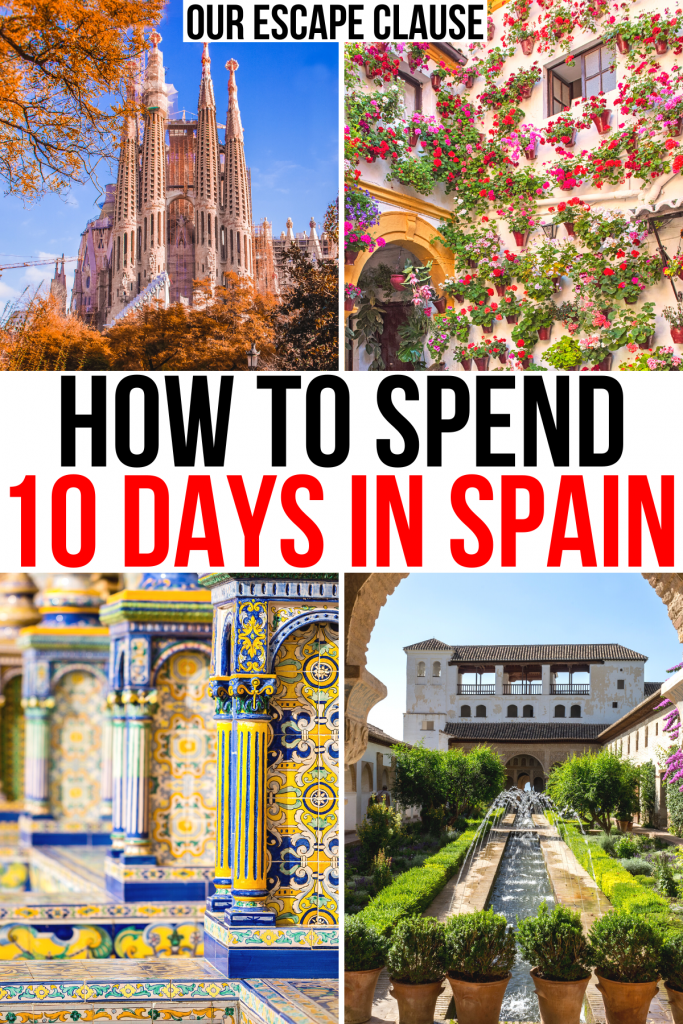
About Kate Storm

In May 2016, I left my suburban life in the USA and became a full-time traveler. Since then, I have visited 50+ countries on 5 continents and lived in Portugal, developing a special love of traveling in Europe (especially Italy) along the way. Today, along with my husband Jeremy and dog Ranger, I’m working toward my eventual goal of splitting my life between Europe and the USA.
63 thoughts on “The Ultimate 10 Days in Spain Itinerary (+ Travel Tips)”
Great overview and suggestions, Kate!
Any suggestions you can offer for an afternoon of wine tasting along the journey?
Thanks, Rob!
We haven’t done a lot of dedicated wine tourism in Spain, though of course, the local wines are delicious. You’ll be near wine regions in each stop, though, so can easily opt for a half-day wine tasting outside the city somewhere.
Alternatively, every city has more excellent wine bars and wine shops than you can count!
Amazing!! Thank you so much for all of this!!
Kate quick question if I may bother you for a bit.
I went through everything you wrote and I calculate maybe about $5,000 would cover the hotel, train and eating expenses between cities for a family of three (My husband and I and our baby girl, toddler) This does not count the air flight ✈️ to Spain.
We were thinking of visiting ending of May or Beginning of June.
Does this sound about reasonable amount to take ??
$5000 (USD, I’m assuming) is very doable, especially if you’re conscious of your budget when booking hotels! I’d recommend booking your train tickets in advance too, as those can be pricier at the last minute.
Generally speaking, Barcelona will be the most expensive stop on this itinerary and Andalucia the most affordable.
Thank you so much!
Thank you so much for creating this! This is extremely helpful and I appreciate all your tips. I am going to Spain in the middle of Semana Santa, but flying into Barcelona and departing from Madrid. I would love to visit the cities you mentioned, but this is the current itinerary I have going. Do you think that this is doable?
DAY 1 – ARRIVAL IN BARCELONA DAY 2 – BARCELONA DAY 3 – BARCELONA Easter DAY 4 – Fly to GRANADA DAY 5 – GRANADA (Alhambra visit) DAY 6 – SEVILLE DAY 7 – SEVILLE (day trip to Cordoba) DAY 8 – SEVILLE DAY 9 – MADRID DAY 10 – MADRID DAY 11 – Fly home
Yes, that sounds like a very reasonable itinerary! You’ll have a great time.
I’d definitely have some food/snacks with you as you’re traveling on Easter Sunday, as you’ll no doubt run into lots of closures.
The week of Easter is also VERY busy in Spain (and in much of Europe), so expect higher-than-usual prices and crowds. I’d recommend booking your hotels ASAP and Alhambra visit ASAP!
I love your site and this itinerary for Spain. We’re spending about 12 days in Spain in early April (unfortunately also over Easter, like Chloe in the message above), and using your itinerary as our template, we want to add a day or two in Gibraltar & Tangier. Have you done this? Too ambitious to add to the itinerary? It would look something like this:
1 – Arrive in BARCELONA 2 – BARCELONA 3 – Fly to GRANADA 4 – GRANADA (Alhambra visit) 5 – GIBRALTAR 6 – TANGIER 7 – SEVILLE 8 – MADRID 9 – MADRID (Toledo) 10 (Easter) MADRID 11 – Back to BARCELONA 12 – Fly home
That is a very packed schedule, but I do get the temptation of adding on a quick day in Morocco (and the UK, in a manner of speaking).
If you want to add on Gibraltar and Tangier, I’d consider trimming a different destination to give yourselves more breathing room, as that’s a tough pace to keep up for 12 days (though doable, if you are dedicated to seeing every last place).
Seville is a gorgeous city, but taking it off your itinerary would give you another day to work with, which you could then add to Granada or Gibraltar, since you’ll really only have an afternoon and evening there.
If you really want to see Gibraltar, of course it’s worth seeing, but if it’s more or less just a stop on the way to Tangier, you could also look at Tarifa, a beautiful Spanish beach city (no passport control) that you can access Morocco from (I believe the ferry is slightly shorter from there, too–we’ve taken that one ourselves).
Alternatively, the high-speed trains do run on Easter, so if that day is more or less just a holding day on your calendar (since the Madrid sites will be closed), you could travel back to Barcelona then, which would give you day 11 back to see a bit more of that city.
Any high-speed trains you do opt for, though, I’d book ASAP. It’s often a mad rush for trains over Easter with people traveling for the holiday.
Thanks Kate. After doing some more reading and research, we’re going to bypass Tangier. Instead, we’ll use that time to explore the towns between Granada and Seville (Thinking Nerja and Ronda) by car. Have you rented a car and driven in southern Spain? Any issues we should know about or is it a pretty standard car rental experience?
Gracias! Chris
We’ve driven in southern Spain many times(including Granada, Seville, Ronda), but generally by renting cars in Portugal and then driving them over.
It’s a pretty standard European driving experience, though–parking outside of historic centers and walking in, etc. If you’re a confident driver I wouldn’t be worried. The driving is also stunning–plenty of chances to enjoy gorgeous views along the way!
There is no condensed itinerary on this page
Here you go, Sarah. 🙂
Day 1: Arrive Madrid Day 2: Madrid Day 3: Day Trip to Toledo From Madrid Day 4: Travel to Seville Day 5: Half- Day in Cordoba Day 6: Granada and the Alhambra Day 7: Travel to Barcelona Day 8: Barcelona Day 9: More Barcelona or Day Trip Day 10: Travel Home
This is a GREAT article. I’m going to follow your itinerary. I’d also like to visit San Sebastián and Cadiz. Could you recommend a way to incorporate these into your itinerary? Thank you!
So glad you found our post helpful!
There’s not an incredibly efficient way to add San Sebastian to this itinerary, as it’s several hours out of the way regardless of where you add it on. It is a gorgeous city, though!
Your best bets would probably be either visiting after Madrid and then flying to Andalucia from San Sebastian, or visiting after Barcelona (especially if you’re flying out of Madrid) and then taking the train back to Madrid to head home.
Of course if you find a good flight to or from San Sebastian you could use it as a starting or ending point, but Madrid and Barcelona tend to have the best deals for transcontinental flights (assuming you’re not coming to/from Europe).
Cadiz is much easier to add on–it’s just an hour or so south of Seville by car, so you can easily add it to your Andalucia leg. Some people even visit it as a day trip from Seville.
Hi! Your trips look amazing! Wondering if you could offer advice. I have 10 days to plan. In my head I will be able to see Madrid, Barcelona, Seville, a beach town, Lisbon or some location in Portugal, and Morocco. As I’m researching, this looks like it might be impossible. Knowing my family would like to hit all 3 countries, what would you offer as a reasonable way to spend these days without feeling crazy and traveling constantly. It is myself, my husband, and kids age 13 & 17 who travel very well. Thanks for any help!
You know, I actually have it on my list of future blog posts to write some sample itineraries combining Spain and Portugal. Thanks for the reminder!
If you want to see all 3 countries in 10 days, the most realistic way is to do it via a sampler platter style, meaning 1-2 base destinations in each of Spain and Portugal, depending on whether you want to take a day trip to Tangier or you plan to spend a few days in Morocco.
One option could be 3 days in Lisbon (with a possible day trip), 3 days in Seville (with day trips further afield–possibly Granda/the Alhambra and Cordoba), 2 days in Tarfia (pretty Spanish beach town with ferries to Tangier), and then a couple days in Tangier. But that’s already pushing it as far as what you can fit in!
Keep in mind that unfortunately, Spain and Portugal are not very well-connected to each other by rail. When you’re short on time, your best options will be renting a car and driving across the border (in the south/if you want to go to the Algarve) or flying (between major cities).
Hi, Thank you for this great itinerary! My husband and I are planning a trip on similar lines this year and I had a few questions I was wondering you could advice us on: 1. Is early September a good time to visit? Would August be too hot?! 2. Is one day in Granada enough? I have heard that Alhambra itself can take quite a while and hence was wondering if one day would be too tight a squeeze 3. Between Barcelona and Madrid, if you had to suggest one for first time travellers, which would you recommend?!
Hi Rushali,
Of course, happy to help!
Early September is definitely preferable to August. It’ll still be warm, especially in Andalucia, but it’ll be much less crowded. It often feels like all of Europe heads to the beaches or mountains in August and then promptly goes home by September 1–so September will be much more pleasant from that angle.
One day being enough in Granada is all dependent on how much else you want to do! In a perfect world, I’d love to rent an apartment in Granada for a few months and take advantage of all the food and nearby hiking. 🙂
But for the purposes of a short trip, one day is enough to see the Alhambra (it will take up the bulk of your day) and then do a quick pass through the rest of town, hopefully prioritizing the Albayzin neighborhood, the Mirador de San Nicholas, and tapas.
If you’re able to add on a second day (or even half day, like I laid out as an option above), you won’t be sorry, though.
Barcelona vs Madrid… that’s an intense debate! Personally, we prefer Madrid, but we’re in the minority. Barcelona is wildly popular (deservedly so!) and has the beach, more outlandish architecture, and a more fast-paced vibe.
Madrid is arguably more elegant, with world-class museums, and is a bit cheaper.
Both are incredible–if you are struggling to decide, I’d make a list of the top 3-4 things you want to see in each city and see which ones pull to you more.
Hope you guys have a wonderful time!
Hi Kate, Would you recommend activities like River Rafting, Hot Springs, Walk in the wild while in Spain? We are planning a trip during early May
If they’re priorities for you and you have time, absolutely! Andalucia in particular has great options for all of those. You might want to look into extending your time in Granada if you want to get outdoors during your trip.
Hi! My husband and I are going on a 10 day trip starting in Barcelona. We go to Mallorca then Seville. Were having a hard time deciding if we want to end in Madrid or Lisbon, any recommendation?
Hi Samantha,
That’s a hard call, as they’re both wonderful but very different!
Very generally speaking, I’d say that Madrid is best if you’re looking for museums, the royal palace, and a chance to travel overland from Seville (it’s an easy train ride).
Lisbon is best for views, being near the coast (you can easily take a day trip to Sintra, Cascais, or both), and the chance to sample another country during your trip. There’s no train service from Seville, you’ll need to fly, drive, or take a bus.
Both offer popular food options, but Lisbon has a bit more of a seafood focus while Madrid tends toward pork.
This is all very general, but I hope it helps a bit!
If you haven’t seen them, our guides to spending a few days in each city will give you a feel for them:
Madrid: https://www.ourescapeclause.com/3-days-in-madrid-itinerary/ Lisbon: https://www.ourescapeclause.com/3-days-in-lisbon-itinerary/
Good luck deciding! 🙂
Hi Kate! Would recommend Lisbon or Madrid if we can only go to one on our trip? Were going to Barcelona, Mallorca and Seville before.
Hi Kate! Thank you for this great itinerary. My husband and I are planning to visit Spain this September (finally will be going on our honeymoon!). We are thinking of being out there for about 10-12 days. I have two questions that I would love your insight on. First, considering we may have extra days, any suggestions on which cities we should extend our stay at? We love wine, great food, and the outdoors. Second, what, if any, restrictions are still in place due to COVID that we should keep in mind? Thank you in advance for your help!
Congratulations on your marriage!
Honestly, any of these cities are worthy of spending more time in, but if I absolutely had to pick, I’d recommend Granada (because your time there is really compressed in the original 10-day itinerary and there’s lots of great hiking just outside of town) or Barcelona (the most popular day trips include the Penedes Wine Region and the beautiful small towns along the Costa Brava–a different kind of nature to appreciate).
I could make a case for any of them, though!
As far as COVID, there aren’t any current restrictions that are likely to impact your trip. I believe masks are still required in pharmacies and hospitals, but that’s about it.
Hope you guys have a fantastic honeymoon!
Hi! Thanks so much for this super helpful blog.. I have a question about transportation. We are a group of 3 ladies arrving from US to Madrid in the afternoon and would like to start our trip in Barcelona and end in Madrid for return flight. I think we will travel via train same day to Barcelona but my concern is luggage. Do you know if trains allow for larger suitcases or will we be met with bag costs?
Thanks so much for any advice!
You can take your luggage onto the train without issue! European trains are much more flexible with bags than any plane is, you’ll even see people bringing sporting equipment and such onboard, depending on the place.
We have many more tips on what to expect on trains here: https://www.ourescapeclause.com/travel-europe-by-train/
Have a great trip!
Hi Kate! I am planning a two-week trip to Spain for my husband and me for next spring. (Your 10-day Spain itinerary has been super helpful!) So far, I am generally following that itinerary with a few extra nights in some places (we have 3 nights in Madrid with a day trip to Toledo, 3 nights in Seville with a day trip to Cordoba, 2 nights in Granada, and 4 nights in Barcelona with a day trip to Girona). My question is, if we still have 2 more nights we can add on somewhere, would you recommend renting a car and seeing some of the White Hill Towns of Spain (with 2 nights in Ronda), or using the Lisbon stopover program and spending those 2 nights in Lisbon (with a day trip to Sintra)? I can’t decide between the two! Any thoughts or suggestions you have would be great! Thanks!!
Definitely a very hard decision! And unfortunately, there’s no right answer.
I’d opt for the hill towns if you’re looking for more peace and quiet with a side of nature, and Lisbon if you’re looking for a city break and palaces (in Sintra). The hill towns are gorgeous but aren’t as heavy on sightseeing as a capital city is.
Lisbon definitely adds more variety to your trip, so I’m inclined to lean that way (the stopover program is very convenient, we used it ourselves several years back), but if hill towns definitely make for a more relaxing trip since you’ll be spending a full week in Andalucia that way.
Hope that helps a bit, but I’m afraid there’s no clear winner or loser here!
I think we are going to spend a few days in Lisbon! Thank you!! 🙂
Hi, how would you recommend adding Ibiza to this itinerary in a 2 week trip?
Hi Rebecca,
Assuming you’re trying to fit everything within 14 days, the only realistic way to do so would be to trim another destination or two. Personally, I’d recommend visiting either Madrid or Barcelona (whichever appeals to you more/has better flight options for you), then Ibiza by plane, then fly to Andalucia from there.
You can take the ferry to Ibiza as well, but I’d recommend looking into an overnight route so you don’t lose one of your days to traveling there.
If you have longer than 14 days and want to add Ibiza as an addition, I’d probably leave from Barcelona and then fly to Andalucia afterward.
Hi Kate, we will be visiting friends who live in Madrid in later March-early April of 2023 (exact dates still TBD). We’re spending a week 3/23-3/31 with them at a rental house in Benimeli, but will likely travel around on our own for another week or two on our own. Your itinerary sounds lovely. Can I ask why you don’t include Valencia? My sister studied there in college and loved it.
For the same reason we didn’t include Basque Country, Mallorca, Galicia, and many more… simply time! Can’t see it all in 10 days, as lovely as that would be, so we focused on the destinations that tend to be a priority for first-time visitors.
Valencia is a beautiful city, though, and would definitely allow you to trim the budget a bit if you swapped it for Barcelona. 🙂
Hi Kate! This is SO helpful!
I’m planning a trip for December, which will be winter and on Christmas Eve/Day. Do you have advice or tips for travelling, where to go, what to do/not do or anything that would be useful for being in Spain at this time?
Thank you!!
In general, expect for things to be closed and everything to be VERY quiet on Christmas Eve and Christmas Day! Some places will be open the morning of the 24th and then close around midday.
I’d recommend stocking up on groceries and planning to spend a relaxed day exploring places that can’t “close”–parks, plazas, etc.
If you’re there before Christmas, check out any Christmas markets that are around! They don’t have quite the same atmosphere as the ones in Central Europe, but they can still be lots of fun.
We’ve already been to Seville (loved it of course), any thoughts on swapping it with Valencia? Curiously nobody in the comments has mentioned it, and you don’t either…we travel in January and seems like a really nice place to visit that time of year. Looks beautiful. 10ish days split between Madrid/Valencia/Barcelona seems easy travel wise too.
Valencia is a beautiful city, and very popular with expats! It doesn’t tend to call as many tourists as Seville, probably due to both location and fame. I don’t know anyone who has visited who didn’t love it, but as most people are working with very limited time, the most iconic cities tend to pull visitors.
I’d have a hard time suggesting someone skip Andalucia entirely if it’s their first trip to Spain (it’s one of our favorite regions, and we’re far from alone in that), but you’re obviously in a different position!
We are planning this trip from Jan 1-11th. Thank you so much for sharing your trip. The only place we are skipping is Granada. Should we try to accommodate a stop there, or leave it for another trip.
1st DAY- MADRID (1)(Hotel Regina, RIU, or any other) 2nd Day- TOLEDO (2) (35 mins highspeed train) 3rd Day- MADRID TO SEVILLA (3) (2.5 hrs highspeed train) 4th Day- Still in Sevilla (Day trip to Cordoba (4)) 5th Day- Sevilla to Cadiz (5) 1hr 24 mins 6th Day- Cadiz to Malaga (6) 3hrs 48 mins (day trip to Marbella(6)) 7th Day- Malaga to Barcelona (7) 6hrs 17 mins 8th Day- Barcelona 9th Day- Barcelona 10th Day- Madrid
Your itinerary is already very full, so if Granada isn’t at the top of your priority list, I think it makes sense to leave it off for this trip!
I’m not sure if you’re planning to sleep in Toledo on day two or take a day trip, but personally, I’d recommend opting for a day trip to keep the transition simpler.
The other day that sticks out is day 6. It doesn’t seem like you have enough time to explore both Malaga and Marbella, so I’d recommend choosing one of them and staying there. If you’re mostly hoping to appreciate Marbella, in other words, I’d just head right there and spend the night instead of taking a half-day trip after spending several hours getting there from Cadiz.
Hope that helps and that you have an incredible time in Spain!
Kate and Jeremy,
Thank you so much for taking the time and effort to educate those of us who will be traveling to Spain for the first time. My wife and I, who are around 70, are planning a 10 – day trip to Spain in September. Your 10-day intinerary sounds fantastic. While we are both in good health, my wife does have a knee that can act up. Based on your experience, is this itinerary a reasonable one for people our age?
The other question I have is whether there is a travel agent you would recommend to help us coordinate everything? We are spoiled as we just returned from a trip to Argentina and worked with an amazing person — both professionally and personally. Plans came together perfectly. Does anyone come to mind?
Thank you, again, for your thoughtful recommendations. It is incredibly helpful and reduces the anxiety of being completely overwhelmed by all the touring options. Happy holidays.
Gayle and Alan
So happy you’ve found our site helpful!
Everyone is different at any age, of course, but I’d say you’d have better luck with this Spain itinerary than, say, a similar one in Italy–fewer hills. You’ll definitely want to take advantage of tours to smaller towns (with possibly some hop on/hop off bus tours), including Toledo, to limit walking in hilly places. For the Alhambra, definitely take transportation up to the palace–it’s a long, steep walk from town.
But Madrid, Barcelona, and Seville all offer lots of flatter walking areas.
Anecdotally, we visited Seville and Cordoba last year with my grandparents in their late 70s, and they found it very doable.
As far as travel agents, no advice to offer there, I’m afraid–we’ve never worked with one ourselves.
Hope you guys have an incredible trip!
I have been practicing Spanish for the goal of traveling to Spain in 2024 or 25 with my family. I wanted to do 10 days and capture all the popular and non-popular but recommended spots. I think this is perfect – going to save it!
That’s great to hear, thanks Anita! Good luck with your Spanish studies–it definitely does a lot to enhance a trip. 🙂
HI KATE HOPE YOU DOING GOOD . UR DETAILED ITENIARY ABOUT SPAIN IS AMAZING . WE ARE PLANNING A TRIP IN START OS MAY . THOUGH WE ARE CONFUSED WHETHER WE SHOULD DO SPAIN OR ITALY . WE HAVE 10 TO 12 DAYS IN HAND , COULD YOU PLEASE SHARE SOME OF YOUR VIEWS TO IT . THANK YOU MARISHA
So happy you found our posts helpful, Marisha!
Choosing between Spain and Italy definitely isn’t easy! Personally, we have a slight preference for Italy, but both countries count among our favorite places to travel. You truly can’t go wrong, so I’d decide which is home to your absolute top 1-2 destinations, whether that’s Madrid, Cinque Terre, etc, etc, and then go with whichever country that is.
Alternatively, you could of course enjoy one city in each country with a flight betweeen!
Here’s our recommended 2 week Italy itinerary if you want to compare: https://www.ourescapeclause.com/2-weeks-in-italy-itinerary/
Thank you for all your wonderful tips! My husband and I are planning a 10-12 day trip to Spain this year and wanted to ask for some advice on cities to see. We love architecture, churches, markets, and music and enjoy walking and exploring new sites.We were thinking of doing the following cities: Madrid (fly in/out of), Toledo, Seville, Cordoba, Granada but wanted to know what other day/overnight trips you would recommend to places such as Ronda, Nerja, Malaga, Andalusia or Estepona. As much as we would love to visit Barcelona we would rather do that on another trip.
Hi Melinda,
There are definitely more than enough day trip options (or overnights) to keep you busy with that timeline! Truly you don’t necessarily need to add any others–slowing down a bit in the places you mentioned will still leave plenty of stones unturned–but if you would like, the white villages (including Ronda, Setenil de las Bodegsas is also very memorable, among others) are a great option.
The Costa del Sol is a bit further, but if you want to spend some time on the beach, Estepona, Malaga, Cadiz, Tarifa, etc, are all wonderful bases as well.
Our Seville day trips guide might give you some ideas, it covers the general area pretty well: https://www.ourescapeclause.com/day-trips-from-seville/
Thank you Kate for the info! Do you mind giving recommendations on day trips vs. overnight stays? I don’t want to feel rushed when visiting a city but don’t mind spending a night or two in places where there’s plenty to see and do.
In your case, if you’re hoping to spend time on the Costa del Sol, I’d pick one base to spend a night or two in down there and potentially visit another spot from that base. Personally, we love Tarifa, while Malaga is very convenient for hopping from village to village. The smaller beach towns are lovely, but I’d opt for one of those if you’re hoping to stay in one place for a bit, as opposed to using it as a place to take day trips from.
The small white villages, like Setenil de las Bodegas, can easily be done as a day trip. We spent a few days in Ronda and loved the slower pace, but you can easily cover over half its main attractions on a day trip as well–just depends on your priorities!
Hi Kate, thank you for creating this itinerary! We used your Portugal itinerary last year and loved it! Planning a 12-day family trip to Spain in July with 3 kids ages 14-17. Currently considering the following: Fly into Malaga (2-3d) Granada (1d) Seville (1d) Cordoba (1d) Madrid (1-2d) /Toledo day trip (opt) Barcelona- remaining time/fly out of Main question- is Malaga worth visiting? Or we can do start/ end in Barcelona. Is it too much? Remove/add something? We don’t plan to rent a car, but may consider if it makes sense for a portion of the trip. Thank you in advance!
That’s amazing you hear you enjoyed our Portugal suggestions, thank you for sharing!
First, Malaga–if you’re wanting to spend a couple days relaxing on beaches, I’d consider going a bit further afield, perhaps to Nerja, Estepona, etc. If you’re just wanting some general sightseeing, a full day in Malaga is probably enough, and I’d consider trimming a day or two there and giving it instead to Seville, Granada, or Madrid.
Malaga has some cool places, and it’s definitely worth seeing the Alcazaba, Picasso Museum, Cathedral, etc. if you fly into there, but I would say that personally, we find it the least compelling city on your list (which is admittedly a list with very stiff competition).
You may already be planning on this, but I’d definitely take a day trip to Cordoba from Seville rather than spending the night there to avoid the hassle of changing hotels again–it’s a very easy day trip.
If you trim a bit from Malaga, I think you’ll be moving at a very doable pace, and agree there’s no need for a car on this route.
Enjoy some tapas for us!
Hi Kate, thank you so much for your reply and additional tips! I was thinking the same regarding Malaga, given the competition :). So reworked the itinerary as follows: D1 Fly into Madrid (seems to be doable with current flight options) D2 Madrid /Toledo day trip D3 Seville D4 Seville/Cordoba day trip D5 Granada D6 Granada D7-D12 Barcelona- /fly out of
A couple of questions: 1. Would you recommend adding a day or two D1-D6, and if so, where? 2. In addition to sightseeing in Barcelona, we hope for some beach time. Would you recommend staying in Barcelona for the beaches? Or is there one that is a reasonable day trip and is worth it. 2a. I looked into Cala sa Boadella, do you have any thoughts on that or any other one? Thank you so much!
Personally I’d suggest adding one day to Madrid to give you time to see a bit of the city in addition to visiting Toledo. Gives you a little more time after the flight to get settled, and Madrid is also a very cool city (we love it there).
Barcelona’s beaches are expansive, sandy, and good for relaxing on, but they’re generally not considered the best beaches in the region. If you’re looking to get out of the city for a little beach time, Sitges is a very easy and popular day trip, and Tossa de Mar offers a combination of beach + castle. There are lots of beach towns nearby, though! A Barcelona expat we know wrote up several day trip options from Barcelona for us and she included quite a few beach destinations: https://www.ourescapeclause.com/day-trips-from-barcelona/
Hi Kate! I am so sorry, somehow I missed your reply, just saw it. Thank you so much, I greatly appreciate it! Love Barcelona day trips, we will plan to do at least one. Thank you again!
Hi Katie I just read through your entire itinerary and it sounds great. My husband and I and our two adult children are flying into madrid, arriving on 4/15 and out of Barcelona on 4/24. We want to visit Sevilla during the Feria de Abril. I was thinking 4/15 and 16 in Madrid. Should we take train to Sevilla on the 17th or plan to leave Madrid on the evening of the16th? Want to do a day trip to Cordoba and see Granada before heading to Barcelona, Could you give me your thoughts how we should alot time in each city
Hi Suzanne,
If you are open to a more fast-paced itinerary, I’d definitely consider an evening train to Seville on the 16th, since it sounds like you’re hoping to fit in quite a bit down there.
From there, I’d recommend spending the 17th-19th in Seville (with one day allotted for Cordoba), then head to Granada on the 20th, see the Alhambra on the 21st, and head to Barcleona the 22nd.
That leaves you with only enough time for a very whirlwind tour of Barcelona, but since you’re hoping to enjoy the Feria de Abril, you won’t want to cut Seville short!
Kate This might be a duplicate comment. Going to Spain arriving in Madrid 9am on 4/15/24 and leaving from Barcelona on 4/24/24. We want to see El Palacio Real and Prado museum for sure. We are thinking of just staying one night in Madrid and then heading to Sevilla. We would like to go to Toledo. Should we go from Madrid or Sevilla? We are not interested in other museums in Madrid but have considered 2 nights in Madrid. We also want to go to Granada before Barcelona. Not sure how to split up our days. Any suggestions? We are traveling as a family with my husband, 31 yr old daughter and 28 yr old son. Also what are would you suggest if we would rather get an apartment than hotel in Madrid
Just saw you left two comments! I also have a message for you under your other one. 🙂
For Toledo, I’d recommend taking a day trip from Madrid and not changing hotels. You will have to double-back slightly that way, but overall it should be more efficient than changing hotels again, as the city is really very close to Madrid.
As far as using a hotel vs apartment in Madrid, there are pros and cons to both (and we use both depending on the trip). For such a short trip, though, we’d personally probably opt for a hotel unless you’re planning on eating most of your meals in an apartment versus going to markets/restaurants. If you do opt for an apartment, I’d carefully peruse the reviews for noise, as it can be an issue in Madrid depending on the street and neighborhood!
Not sure about the festival but we will be there during that time. How much time should we consider spending in Sevilla? If we want more time in Barcelona would you give up Cordoba or Granada?
I’d recommend making your you have one full day in Seville itself, excluding days you arrive, depart, or take a day trip to Cordoba. Here’s what we’d recommend doing with one day in the city: https://www.ourescapeclause.com/one-day-in-seville-itinerary/
As far as Granada versus Cordoba, they’re both wonderful.
Based purely on sightseeing, I’d recommend Granada, as it’s a distinct city that has a very different feel than Seville, and it also has the Alhambra, which is easily one of the best historic sites to visit in Spain.
However, Granada can’t easily be done as a day trip from Seville (you really need an organized tour for it, and even then, it’s a very long day), so I’d make the decision based on whether you want to keep your pace of travel slower (in which case I’d visit Cordoba), or if you want to prioritize seeing as much variety as possible in limited time, in which case I’d visit Granada but make sure to spend at least one night there.
That being said, we love Cordoba too! The Mosque-Cathedral is an unforgettable building, and either city will be a great addition to your trip.
Leave a Comment Cancel reply
Be prepared to visit Spain with these 16 things to know before you go
Jun 21, 2023 • 6 min read

Here's what you need to know to get ready for a trip to Spain © Flashpop / Getty Images
Spain has been home for the past 16 years, ever since I moved to its capital Madrid in my early thirties.
From day one, it was easy to be charmed by this warm and inviting country . It ticks a lot of boxes in terms of what you’re looking for in a European destination – great cuisine and wine , spectacular landscapes , architectural gems, green spaces and a thriving art scene.
Getting around the country is also very convenient, thanks to Spain's efficient and reliable multi-modal public transport system . And the Spanish people are some of the friendliest locals, who will happily go out of their way to point you in the right direction if you’re lost.
Of course there were still some cultural quirks I had to adjust to – for one, eating times in Spain are very late in comparison with the rest of the world's dining schedules. I still remember my early days in Madrid when my belly would be in outright rebellion while waiting for “early” dinner reservations at 9pm. And forget about making a speedy exit from social gatherings; in Spain saying farewell could take up another hour of your time.
Cultural idiosyncrasies aside, your trip to this incredible country can be your most memorable one yet if you plan well ahead, and follow these useful travel tips.

1. Pack warm clothes. Really.
There is a humorous Spanish expression that goes, “Hasta cuarenta de mayo, no te quites el sayo” , which translates to “Until the 40th of May, don’t remove your coat” – sage advice to keep a jacket handy until mid-June. While Spain may be famous for its blue skies and sun-drenched beaches, it actually has more colder seasons in the year than warm ones, during early spring (March to May), autumn (September to November) and winter (December to February). Regions in northern Spain, such as the Basque Country, Asturias and Galicia, have cooler temperatures compared to the rest of the country.
2. Being cashless is common
Card is king in Spain. The main tourist hubs such as Madrid, Barcelona , San Sebastián and Ibiza are generally credit card-friendly destinations. In fact, you could go cashless for days and pay for your meals, drinks, taxis and bus fares without a problem using a credit or debit card.
If you do bring cash, make sure you have loose change. Several establishments, bus and taxi drivers, especially on morning shifts, usually do not have change for bigger bills. So if you prefer paying cash, it’s a good idea to be stocked up on smaller bills (€5 and €10) and coins.
3. Choose your time to visit Madrid wisely
Think twice about visiting Madrid in August . Most establishments in the Spanish capital close, and Madrileños usually head for the beaches to escape the brutal August heat .
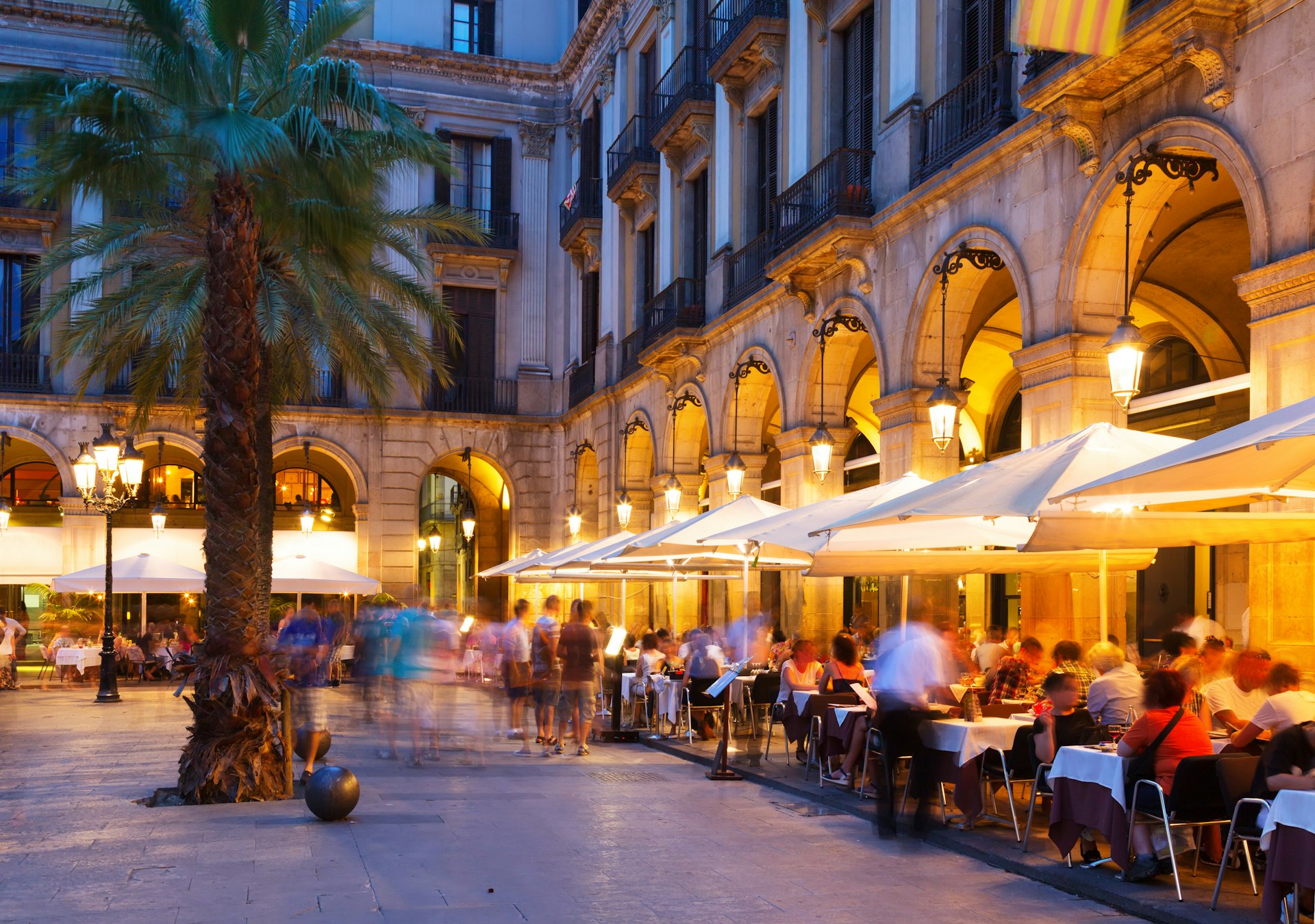
4. Expect to eat late
Prepare for late Spanish dining times. Many tourists who come to Spain for the first time end up hungry while waiting for restaurants to open. Most restaurants open for lunch from 1pm to 4pm, and dinner from 8pm to 1am. A lot of establishments also close on Mondays. You can stave off hunger pangs before mealtimes by snacking on tapas – small savory plates that are usually free with a drink order in many Spanish cities. In San Sebastián or Bilbao in the Basque Country , you can savor pintxos , or bite-sized portions typically served on a slice of bread and skewered with a toothpick.
5. Ordering certain drinks will immediately mark you as a tourist
A popular drink among tourists, sangría is usually served in pitchers meant for sharing, and not by the glass. Instead, try ordering a local favorite that’s similar to sangría, tinto de verano , a concoction of red wine and lemon soda.
Ask for a caña like a local instead of a cerveza . A caña is a small glass of beer on tap (about 250ml).
6. Tipping is not expected
European countries in general don’t have a tipping culture. But of course, it is very much appreciated – especially if you enjoyed good service.
7. Don't eat food while you’re on the move
Eating is an age-old pleasure that must be savored unhurriedly, so it’s uncommon to see Spaniards biting sandwiches or munching on fries while walking down the street or riding public transportation.
8. Look for fixed-price lunches
Order the menú del día (daily menu) for lunch on weekdays. Take your cue from the locals and ask for the fixed-price menu (ranging from €8 to €17) that includes a three-course meal with dessert, drinks, bread and coffee.
9. Eat late, stay late
Make time for sobremesa – lingering long after a meal for a post-dining conversation. This is a hallmark of sociable Spanish culture, to extend conversations well beyond mealtimes to be able to enjoy each other’s company for as long as possible, usually over drinks.
10. Keep an eye on your belongings
Be vigilant of pickpockets and keep your belongings close. Pickpockets are unfortunately rampant in high tourist traffic areas. If you’re sitting at an outdoor table, watch out for vendors that get suspiciously close and distract you with their items for sale, such as flowers or lottery tickets, while they surreptitiously steal your wallet or mobile phone on the table (this is a modus operandi I’ve witnessed more than once!).
11. You can drink tap water in Spain
Go ahead and drink the tap water. Spanish tap water or “agua de grifo” is safe to drink, though the taste varies across regions.
12. There's one number for an emergency
Call 112 for any emergency. You can contact this number for any kind of emergency in Spain, even without a Spanish SIM card on your mobile phone. You’ll be connected to the right emergency service through multilingual operators. To contact the Spanish National Police, dial 091.

13. Dress appropriately when away from the beach
Opt for smart casual attire and avoid overly casual outfits like athleisure wear, beachwear, or excessively revealing clothing in the city. If you’re visiting religious sites such as churches, cathedrals or mosques, cover your shoulders and knees to show respect for these places.
14. Brush up on basic Spanish
Like any destination, it helps a lot if you know basic local phrases. While you can get by speaking English in the bigger, more touristy cities, it is a different story when visiting smaller, lesser-known towns outside the tourist radar.
Don't say “no problemo”, which is incorrect. The correct phrase is “no hay problema” or more colloquially, say “no pasa nada” .
15. Know what is considered polite
Greet people, even strangers. It’s commonplace to greet people in elevators, shops and along hallways. Compliment good service by saying “muy amable” . Meaning “very kind”, this is a commonly used polite phrase to express gratitude for someone’s helpfulness. It can be said in different situations – if a person has gone out of their way to assist you, like giving you directions, holding a door or giving up their seat for you. You can also say this to show your appreciation for customer service that goes above and beyond.
16. Don’t leave a social gathering without saying goodbye
It is generally frowned upon to leave an occasion without letting your host know. However, be prepared for a long, drawn out goodbye – the Spanish are highly sociable people who like extending conversations, leading to lengthy, and often multiple stages of farewells.
Explore related stories

Apr 19, 2024 • 10 min read
Summer is just around the corner in the northern hemisphere. Here's where the Lonely Planet team is going.

Mar 31, 2024 • 6 min read

Mar 26, 2024 • 8 min read

Mar 25, 2024 • 6 min read

Mar 21, 2024 • 6 min read

Mar 17, 2024 • 5 min read
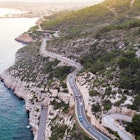
Mar 13, 2024 • 7 min read

Mar 8, 2024 • 17 min read

Mar 2, 2024 • 7 min read

Feb 28, 2024 • 3 min read

Spain Travel Blogs
These are all of my travel blogs about spain. .
From exploring the food scene in Barcelona, to adventures in the Balaeric Islands and great cities such as Malaga, Cadiz, Seville and Valencia, find out the best places to travel to in my Spain travel blogs and travel guides.
Happy exploring!
How To Spend 4 Days In Tenerife
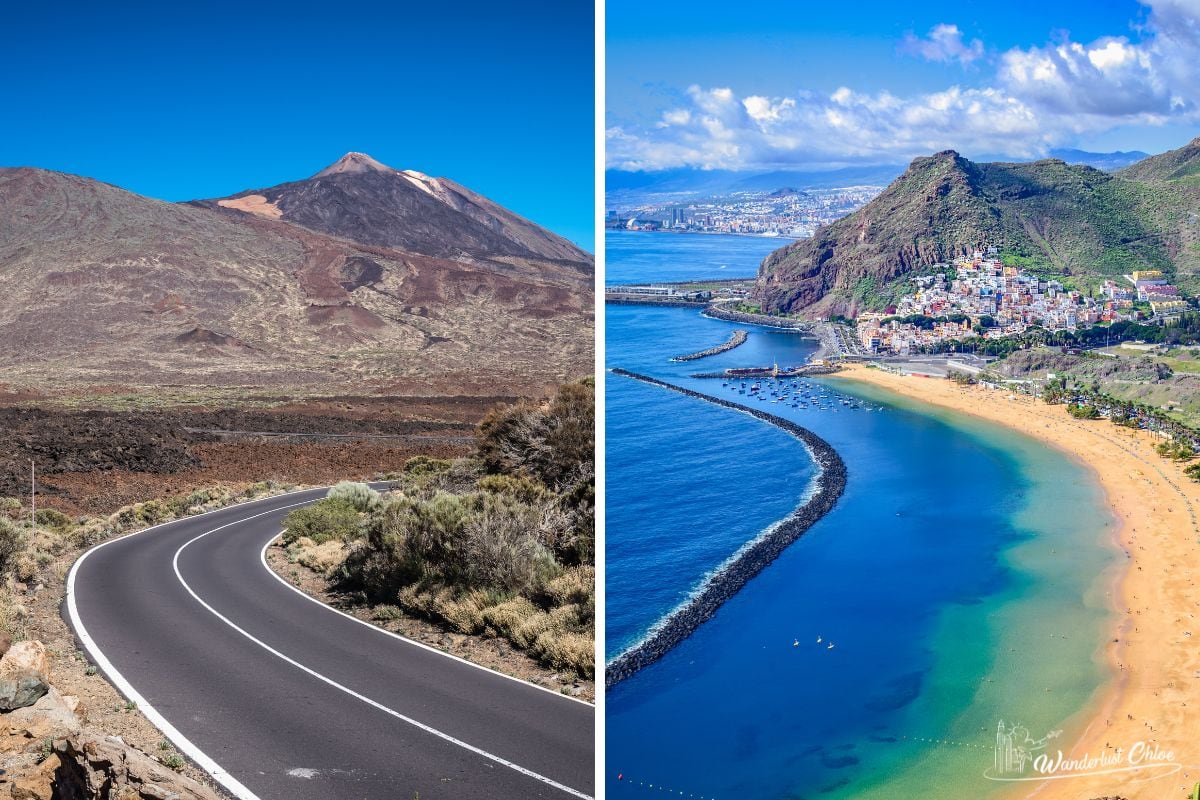
From hikes around volcanic Mount Teide, to exploring pretty towns and epic beach adventures, here’s how to spend an amazing 4 days in Tenerife.
An action-packed 3-day ibiza itinerary.
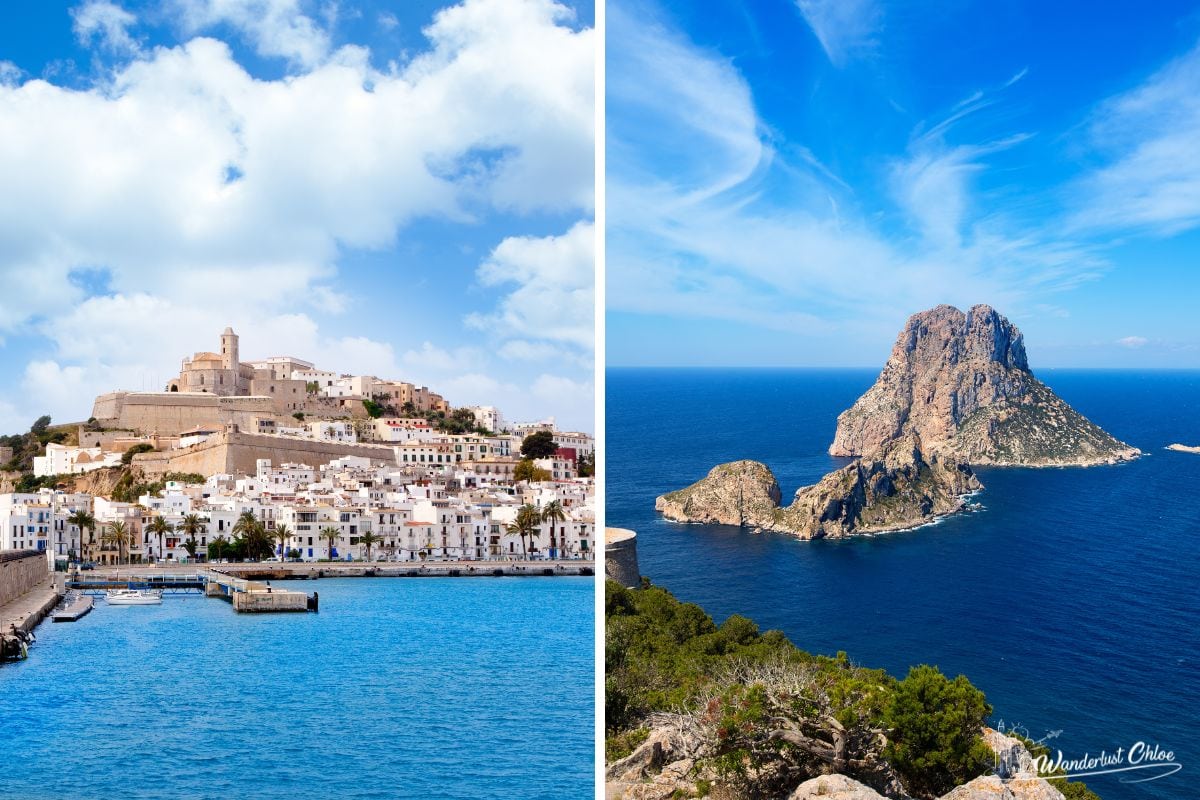
From sunset sessions at Cafe Mambo, day trips to Formentera and tasty food by the ocean, my 3-day Ibiza itinerary shows you the highlights.
13 best coastal cities in spain.
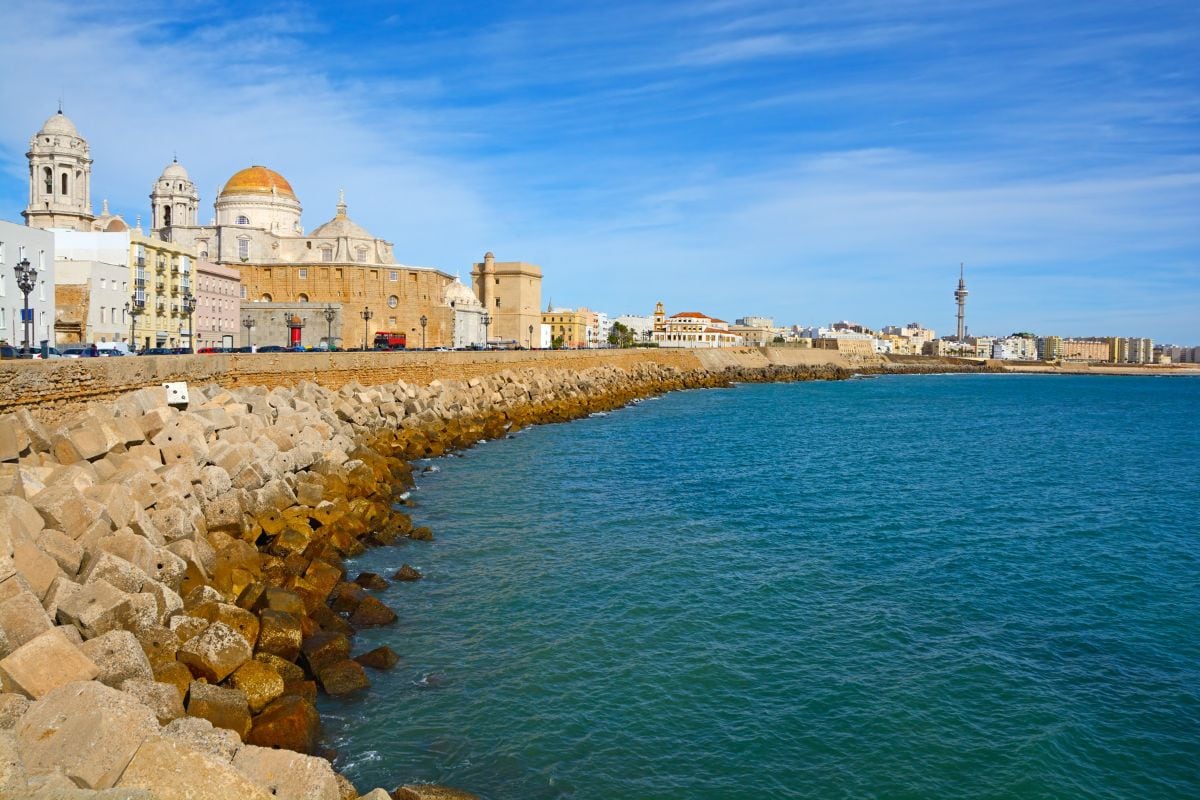
From the culture rich cities on the Atlantic to the glittering metropolises of the Mediterranean, these are the best coastal cities in Spain.
Where to stay in menorca, spain.
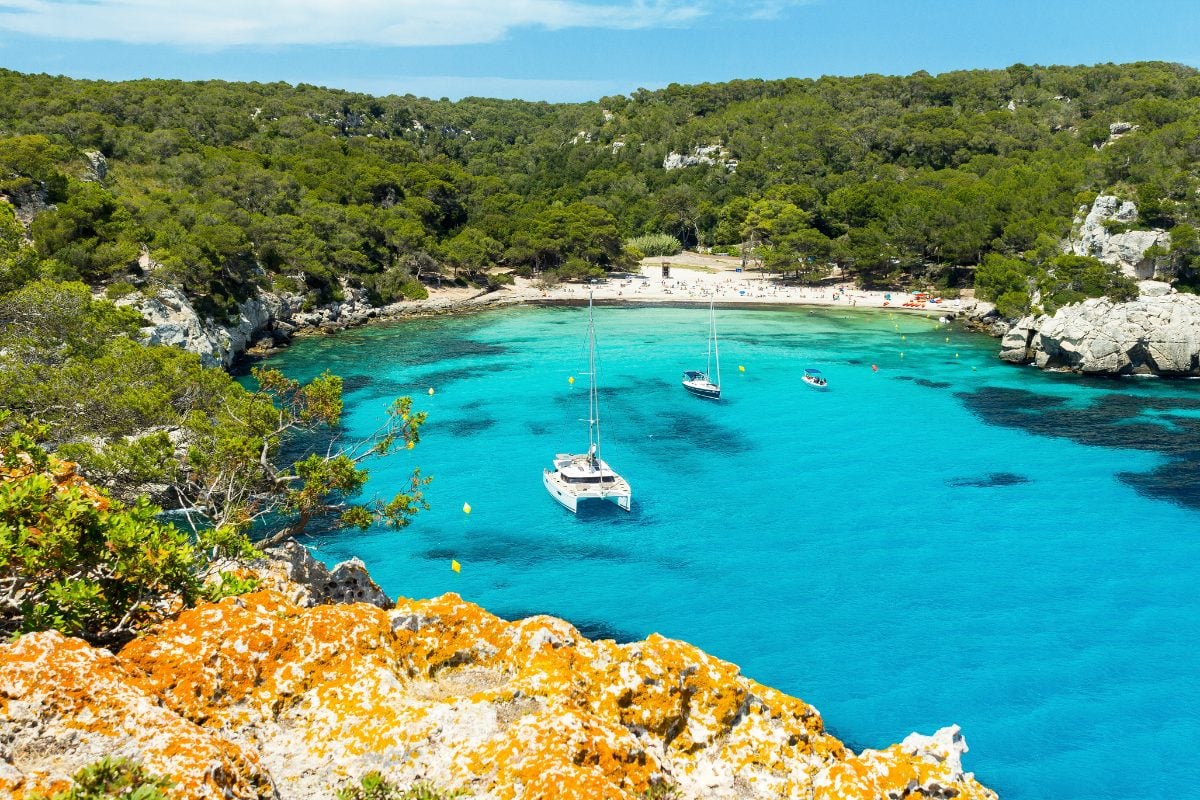
From boutique hotels on cobbled streets to sophisticated resorts on stunning beaches, find out where to stay in Menorca.
The best beach towns near barcelona.
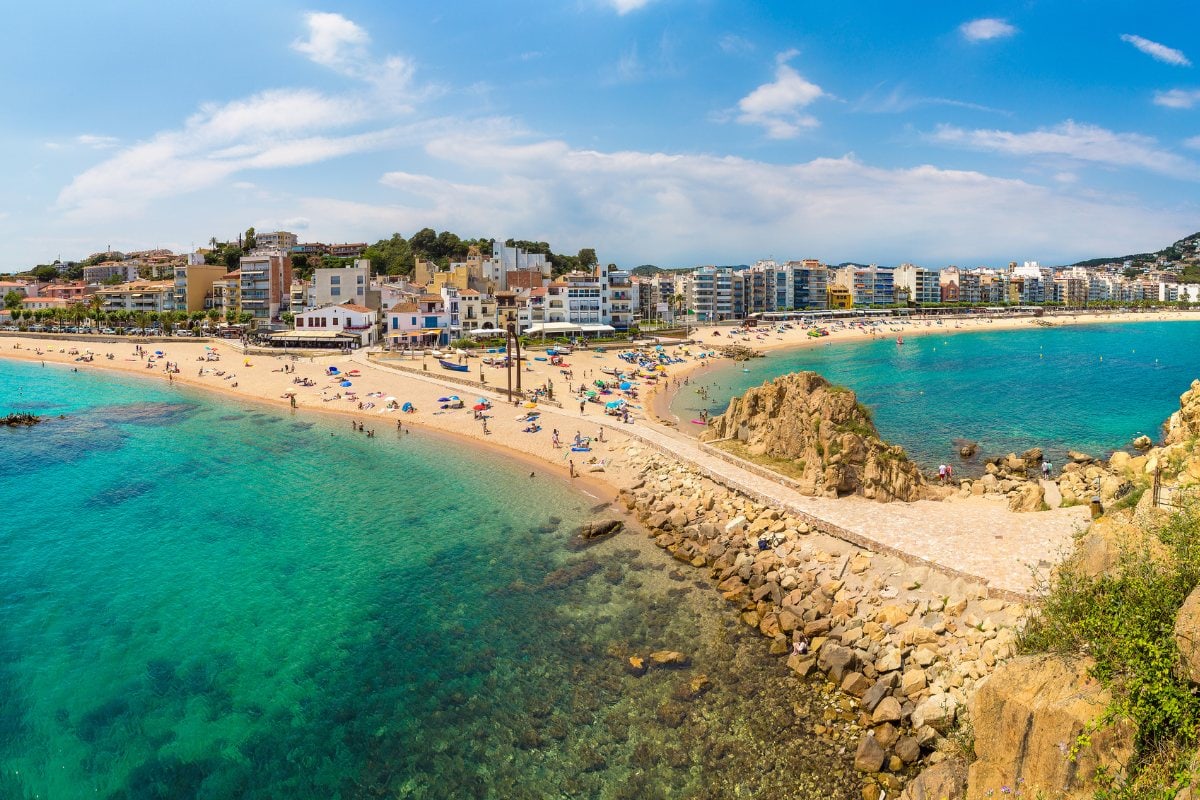
From lively Sitges and tranquil Calella de Palafrugell, to action-packed Salou, these are the best beach towns near Barcelona.
Andalusia Road Trip: The Ultimate 2-Week Itinerary
Andalusia: one of the most heart-stoppingly beautiful regions in all of Spain . There’s nothing better than driving along the meandering mountain roads between hilltop castles and stopping at beautiful white villages for mouthwatering tapas along the way. The landscapes are iconic; sweeping olive groves cross the open valleys, dotted with orange trees that overlook white sandy beaches in the distance. From charming pueblos to historic cities, discover the best places with this ultimate 2-week Andalusia road trip!
Andalusia Road Trip Itinerary
Andalusia is one of the greatest places to road trip. The drives are beautiful, crossing a diverse range of landscapes—between canyons, under viaducts, and on coastal roads. Two weeks is the ideal amount of time to see all the charming white villages of Andalusia that sit among the hilltops, as well as the most famous cities and beaches in Spain.
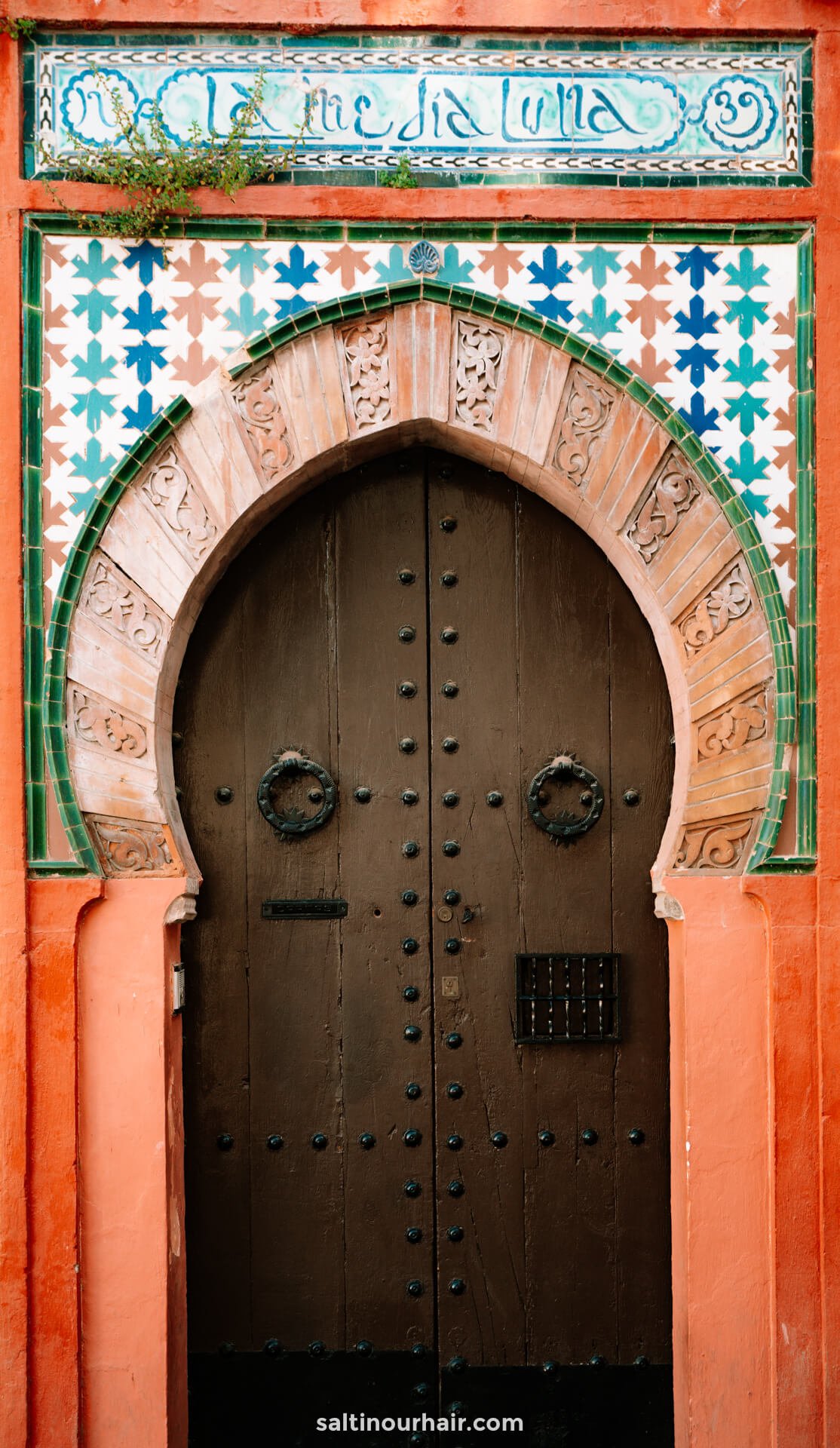
Whether it’s action or relaxation, there’s something for every type of traveler on this 2-week road trip itinerary (best done by car for ultimate freedom).
We recommend to rent a car in Spain through Sunny Cars with free cancellation and insurance included. Book your rental car here .
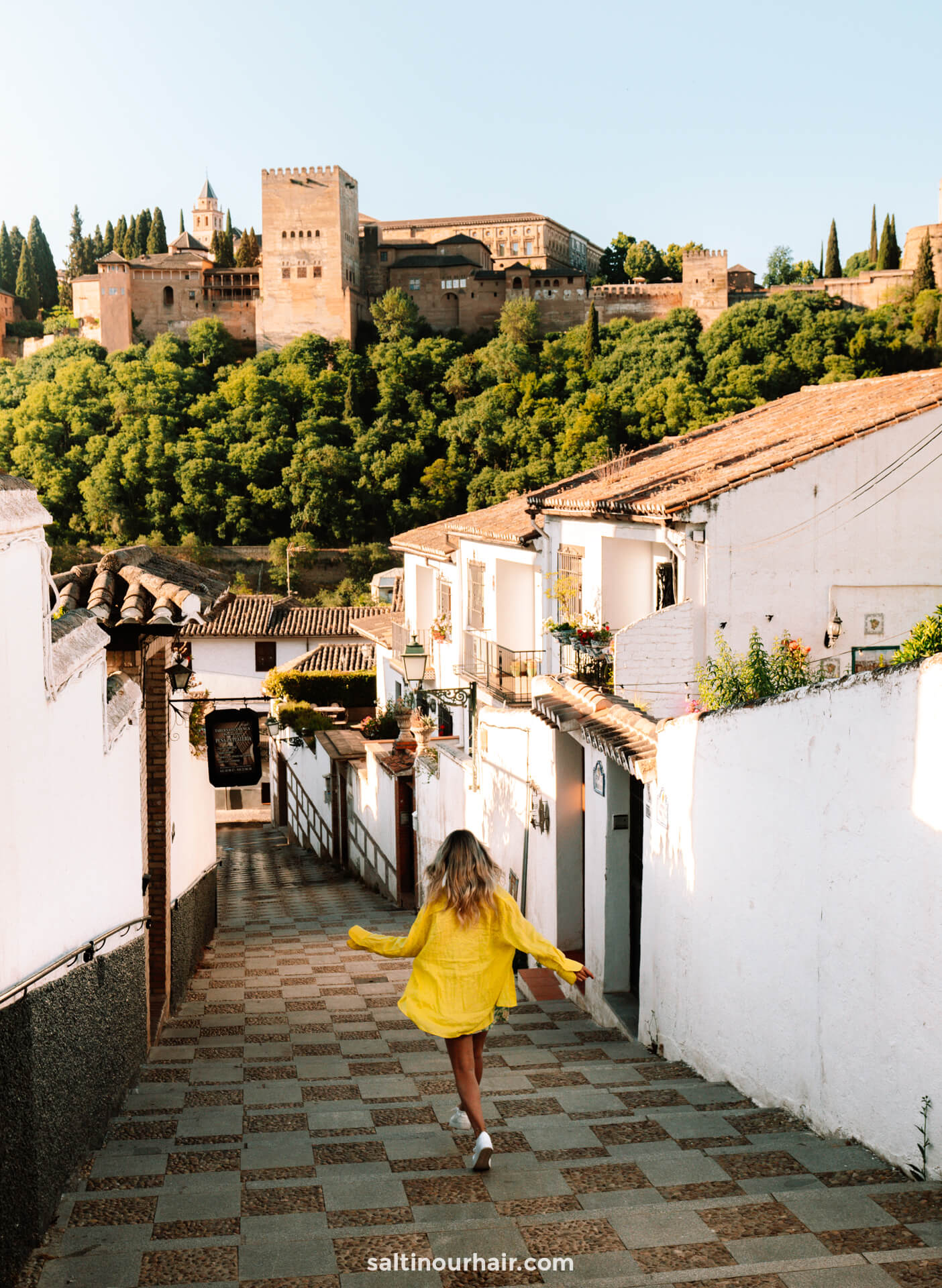
Day 1 – 2: Seville
On day 1 of your Andalusia road trip, begin in one of the most stunning cities in Spain: Seville. This city is famous for the Alcazar, an incredible Moorish palace with the most intricate details and beautiful gardens.

This is your first glimpse of the Moorish history in Spain, an Islamic reign that lasted hundreds of years from the 8th until the 15th century before the country was reconquered by the Christians. This part of history lives on in the architecture seen all around Spanish cities, particularly in the southern region of Andalusia.
Here are all your hotel options in Seville.
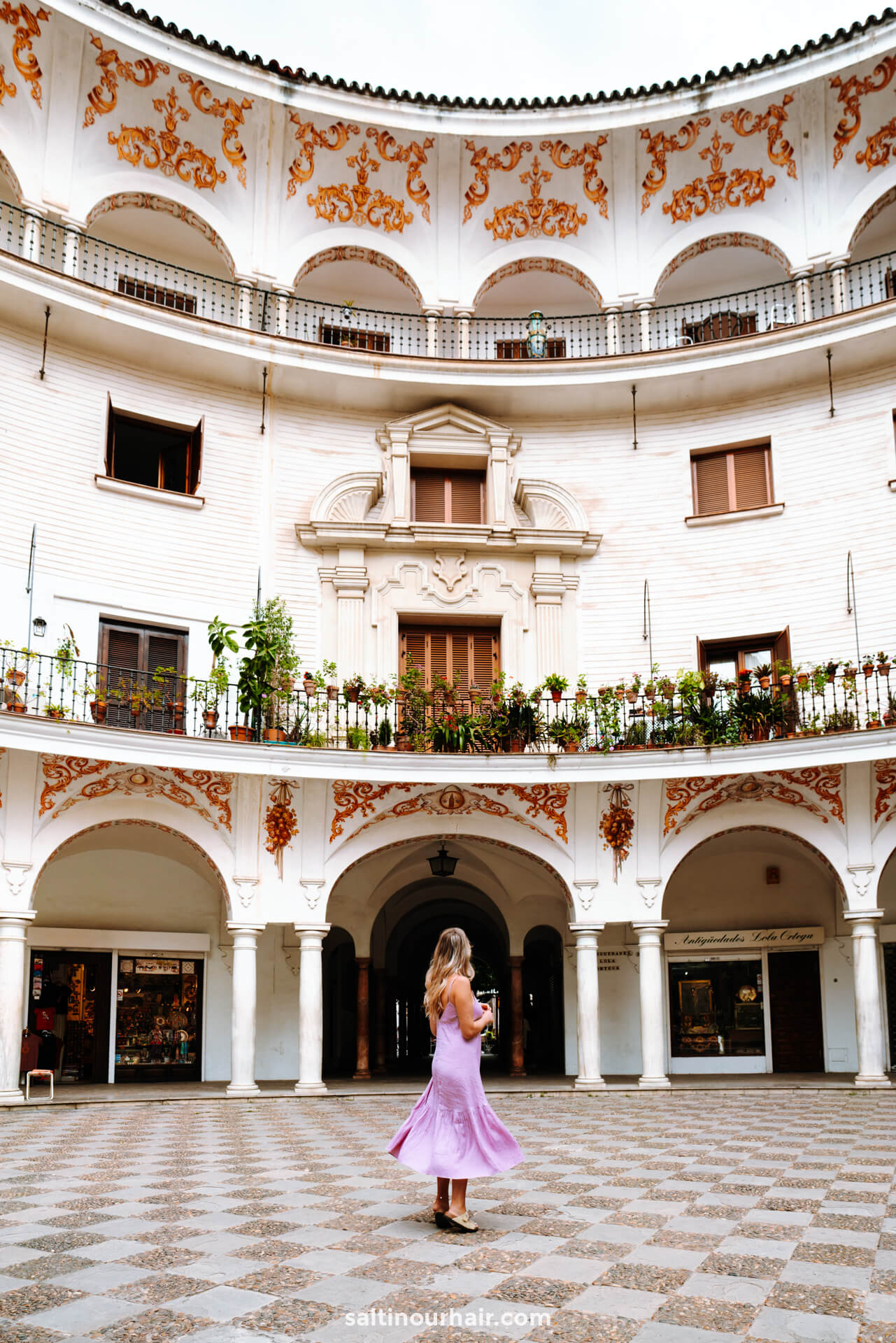
You’ll also notice this architecture at Seville Cathedral, which still looks more like a mosque than a church. It’s also possible to climb the bell tower (minaret) for the most beautiful panoramic views over the city.
Read: 14 Best Things to do in Seville

Aside from learning about the rich history of Seville, it’s a beautiful city to wander and explore. Everywhere you go, you’ll smell the strong scent of Sevillan oranges among the trees, hear the sound of flamenco dancing, and see the traditional Andalusian courtyards with their gorgeous tilework and fountains.
Tip: Seville is well-connected to other major cities in Spain, like Barcelona or Madrid , so you can arrive in the city by train if traveling from an international airport.

Where to Stay in Seville
If you’re visiting in the summer, we recommend booking a hotel with a rooftop pool and aircon to escape the heat in the afternoons when temperatures can reach upwards of 40°C (104°F). The more modern hotels with these amenities are just outside of the center.
Hotels in Seville 😴

If a pool isn’t essential for you, look for a traditional boutique hotel in the historic center of Seville, which normally have the traditional inner courtyards and Moorish architectural details.
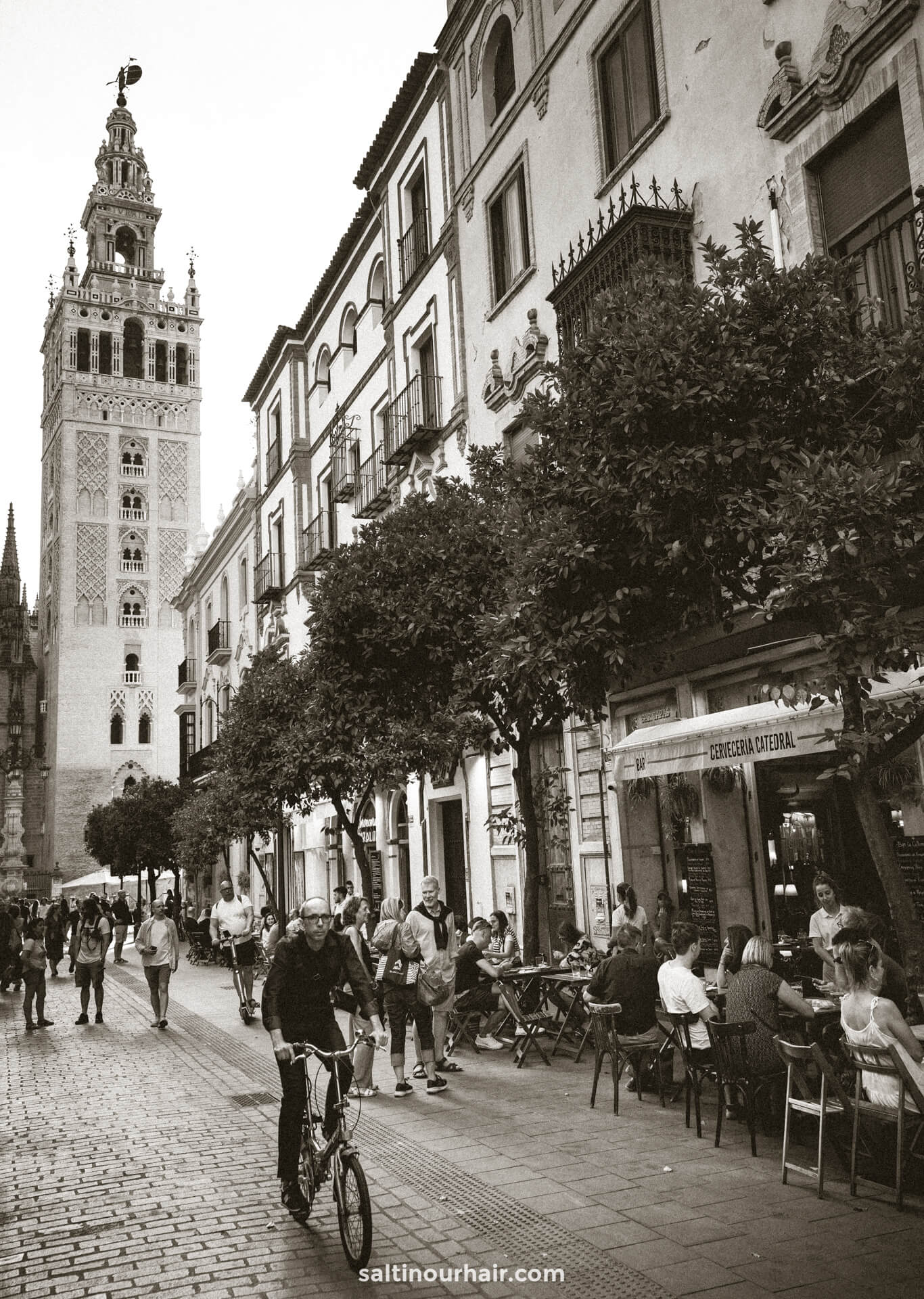
Day 3: Cordoba
Wonderful Cordoba: the city of flowers! This city might be small, but it’s perfect as a stopover on your Andalusia road trip. One day is the ideal amount of time to wander the beautiful streets, admiring the many patios (courtyards) filled with vibrant-colored flowers and blue ceramic pots.
Here are all your hotel options in Cordoba.
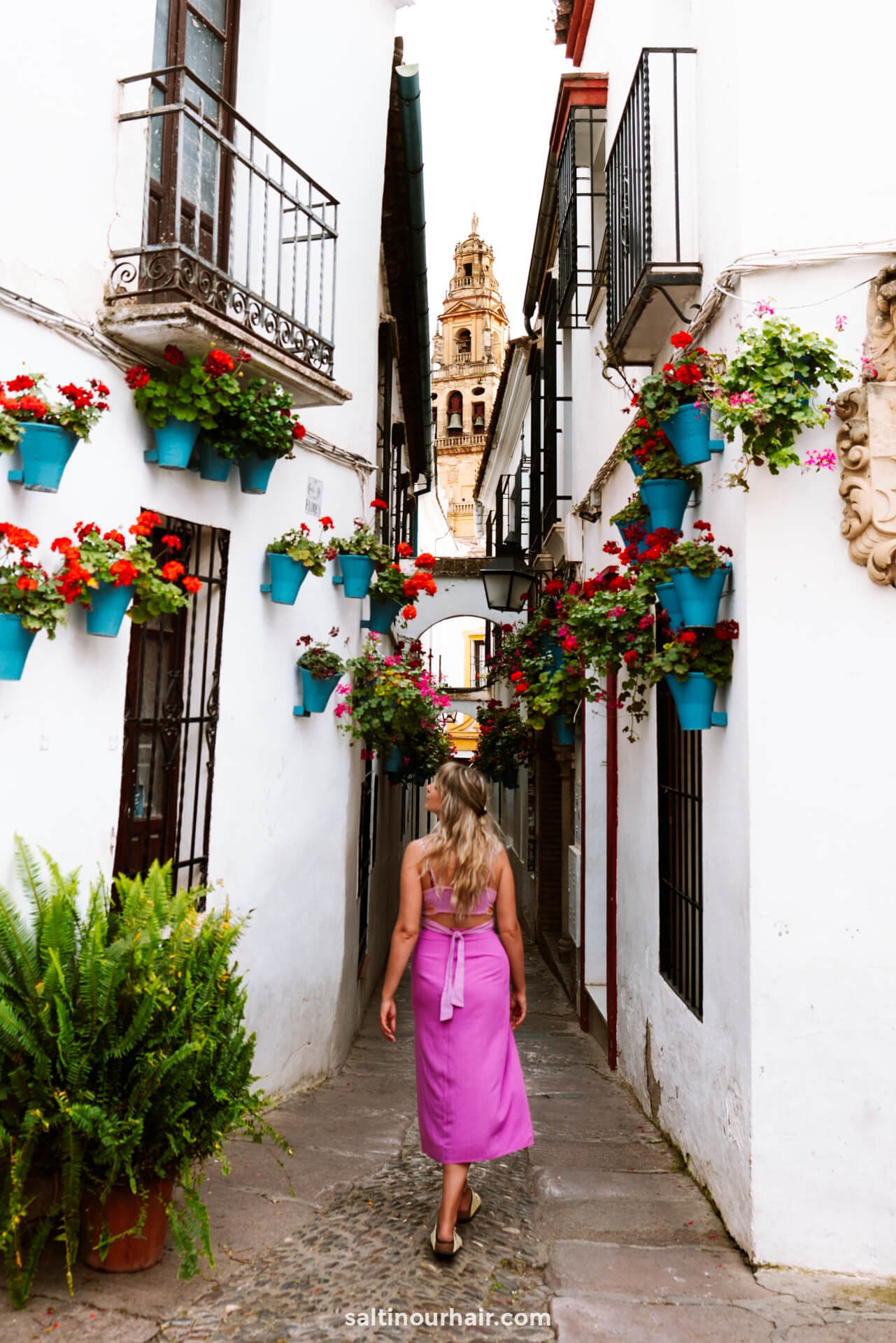
If you’re visiting in May, watch the city come alive during the Festival de los Patios, a competition for the best florally-decorated courtyard in the city! In fact, this festival is so important that it’s been classified as an ‘intangible heritage’ by UNESCO .
Read: Best Things to do in Cordoba (The City of Flowers)
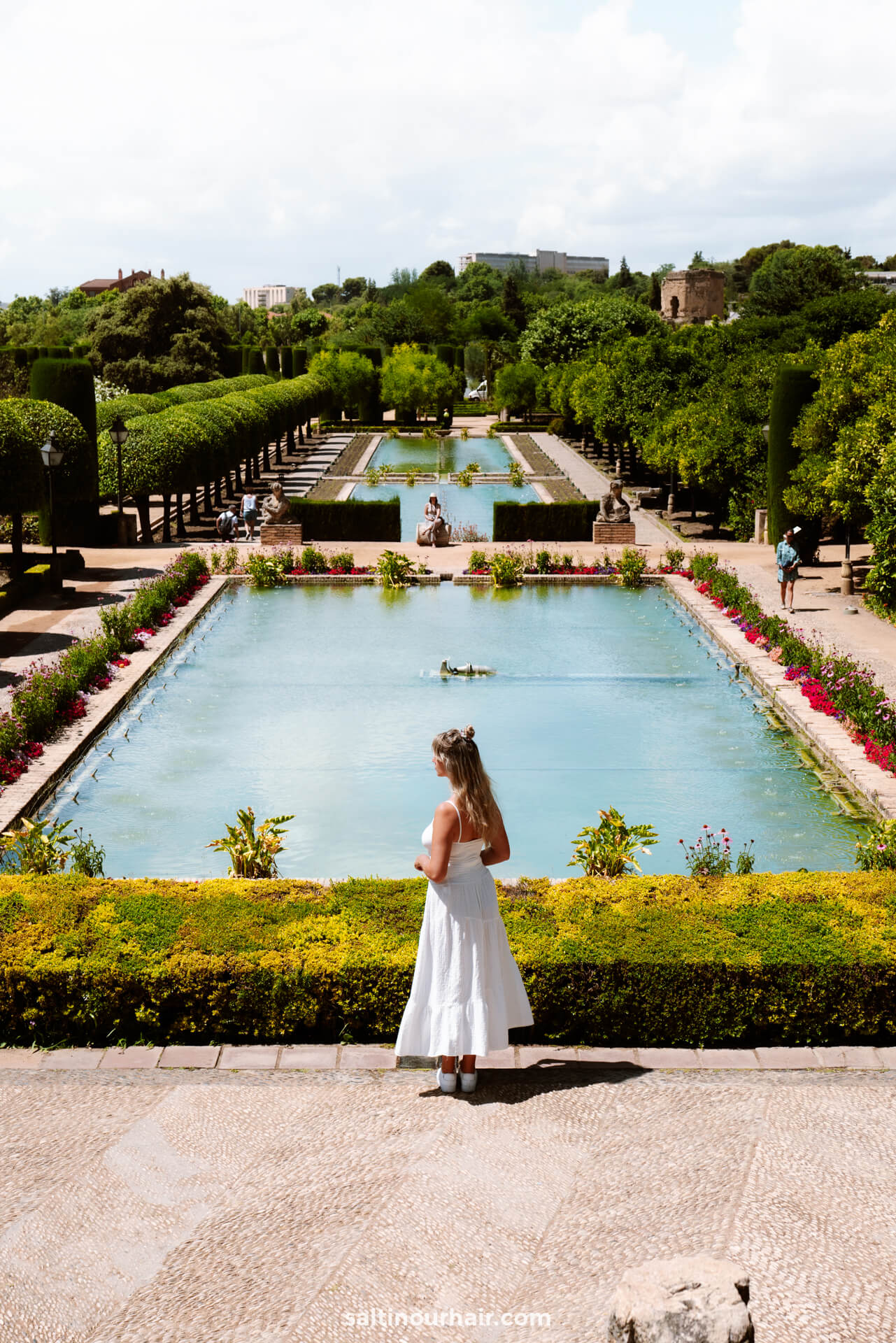
There are many beautiful buildings to see in Cordoba , but the most famous is the Mezquita (the cathedral of Cordoba). This is one of the most incredible cathedrals we’ve ever seen! What was once a mosque during Moorish times is now a cathedral.
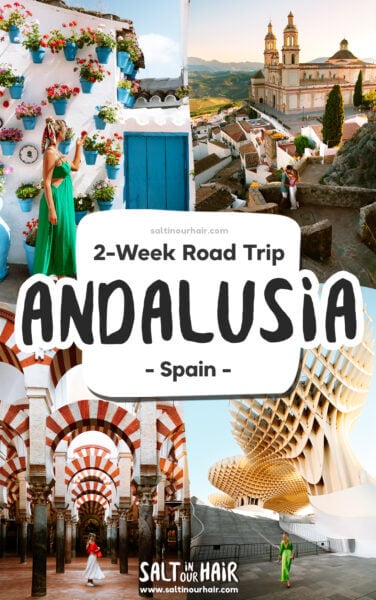
However, barely any changes have been made, and it’s home to some of the most magnificent Islamic architecture you’ll find in Spain. The interior is fantastic, with perfect archways decorated in red and white candy-cane stripes.

Where to Stay in Cordoba
Cordoba is home to lots of beautiful boutique hotels, which can be found in the historic center. Make sure to book well in advance if you’re planning on traveling to the city during May, as the festival means that accommodation gets booked up fast and is far more expensive than usual.
Hotels in Cordoba 😴

Another good time to visit is April, when the patios will nearly be ready for the fiesta, but it won’t be as busy.
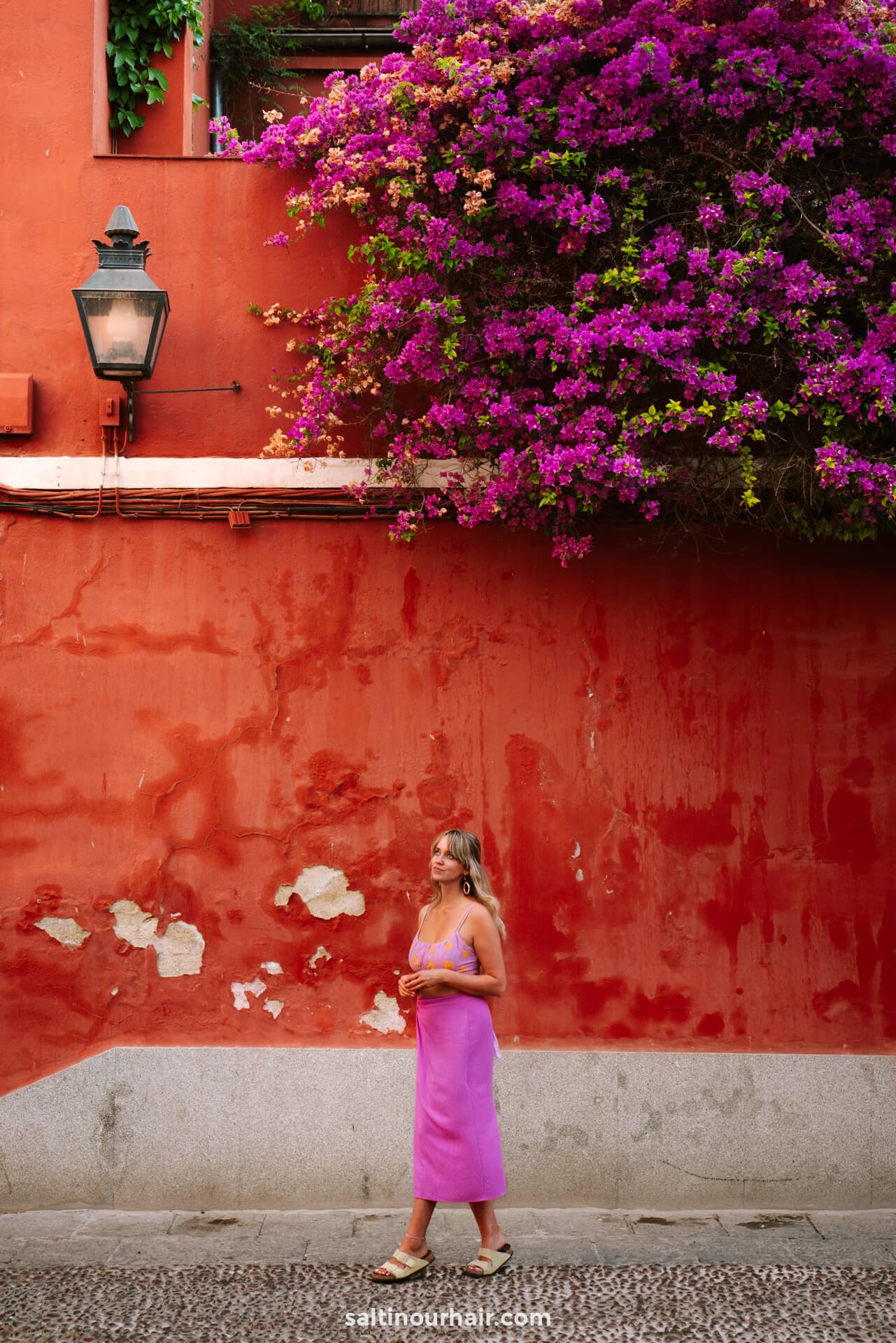
Day 4 + 5: Granada (Must-do on your Andalusia Road Trip)
Arrive on day 4 in Granada, the most magical city in Spain. Not many cities can boast this kind of scenery; the ancient city is surrounded by snow-topped mountains and has a beautiful river that trickles down into the town.
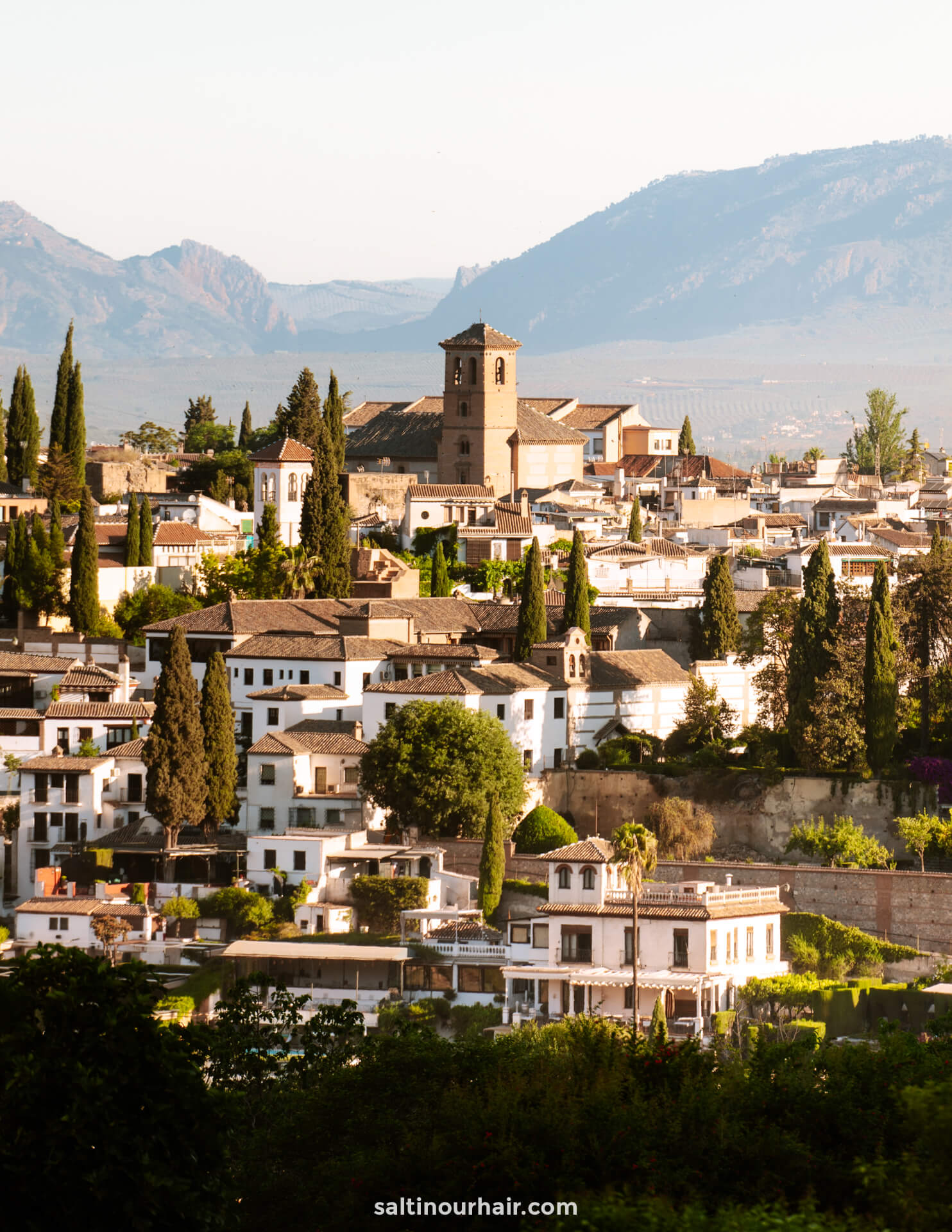
In the background, sitting on top of the cliffside, and shadowed by the mountains, is the majestic Alhambra Palace (one of the most famous sites in all of Spain).
Here are all your hotel options in Granada.

This colossal fortress complex was once the home of the ruler of the Nasrid dynasty (during the Moorish period in Spain ), and every detail is spectacular. You need a half-day alone just to walk among its opulent buildings and gardens filled with roses and orange trees.
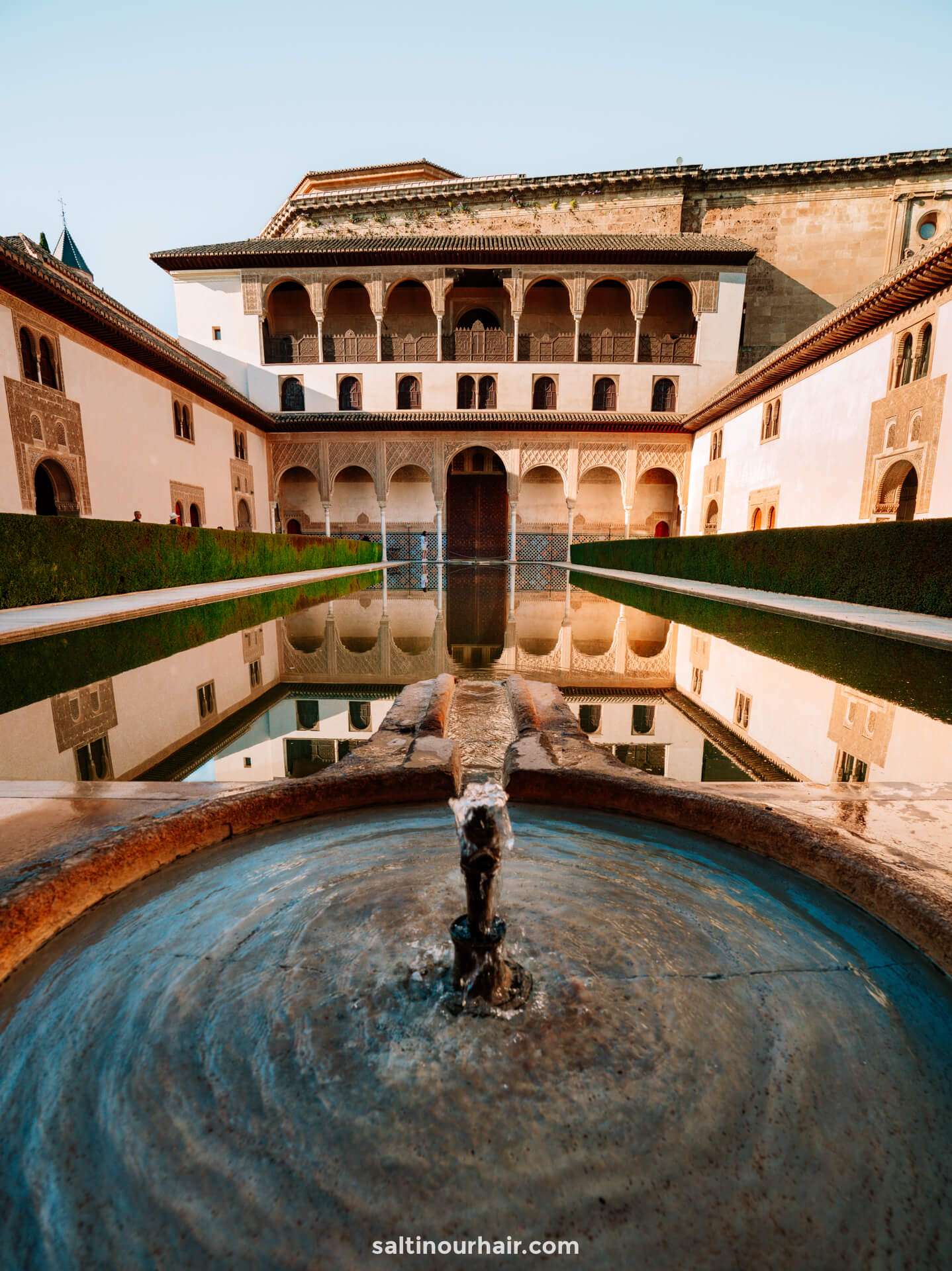
After your time sightseeing, get lost in the maze-like streets of the old town, paddle in the river off the hillside Albaicin neighborhood, or eat free tapas (in Granada, you get a free plate of tapas with every drink you purchase).
Read: Ultimate Granada Travel Guide
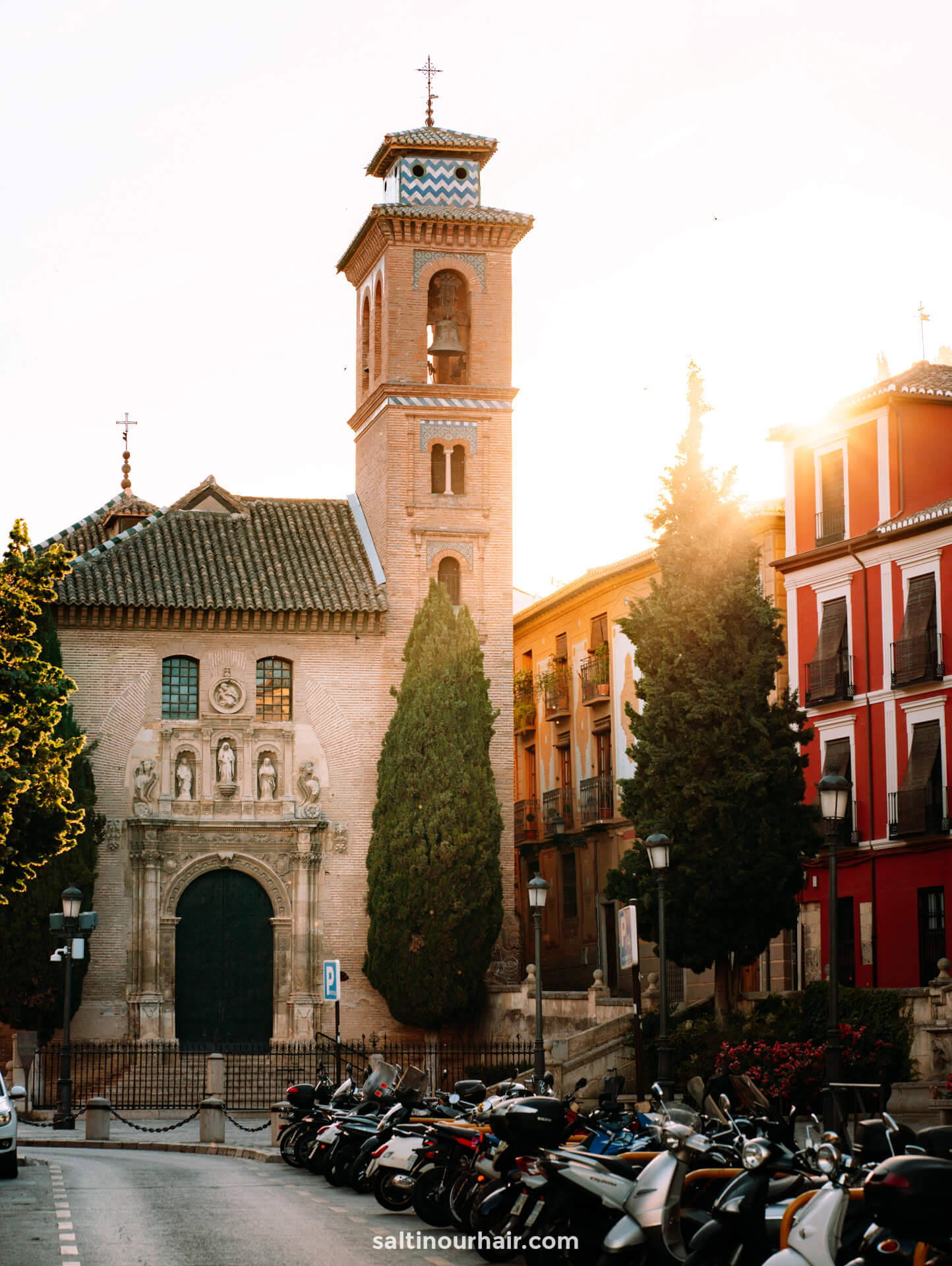
Where to Stay in Granada
Stay in the historical center close to the cathedral to easily access the city’s shops, restaurants, and most ancient buildings.
Hotels in Granada 😴
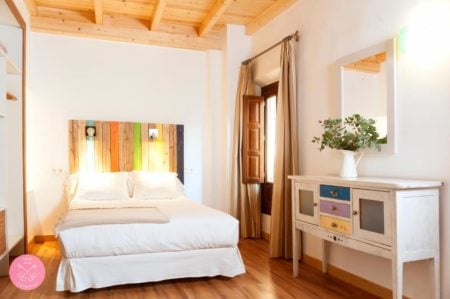
Albaicin is also a lovely neighborhood to stay in, particularly as it has excellent views of the city below and across the river to Alhambra.
Potential Day Trips from Granada: Iznajar + Montefrio
Iznajar and Montefrio are two of the most beautiful white villages in Andalusia and must-sees on your Andalusia road trip itinerary! Both lie close to Granada and can be visited as half-day trips. We recommend Iznajar as a top priority and Montefrio at sunset if you have time.
Iznajar has one of the most picturesque locations, sitting high up on a hilltop overlooking an open valley and lake below. It’s most famous for its beautiful streets and patios, which are decorated with hundreds of flowerpots and brightly colored geraniums.
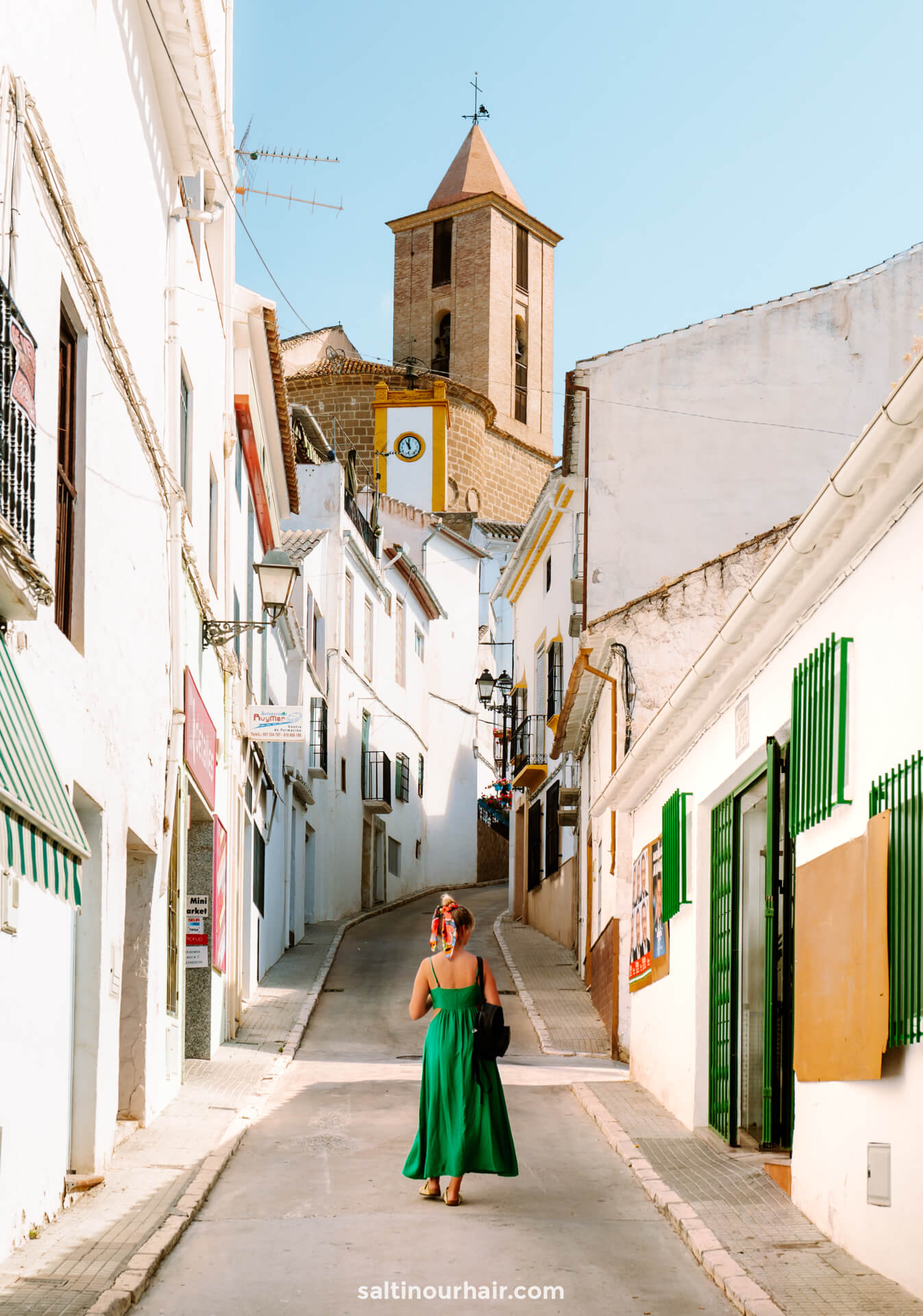
This tiny village is mainly home to elderly local people, so the pace of life is slow (it’s the perfect place to wander for a few hours and soak up the atmosphere of Spanish life!). Best of all, Iznajar is just over 1-hour drive from Granada, so it is the ideal half-day trip from the city.
Click here to read all about the things to do in Iznajar .
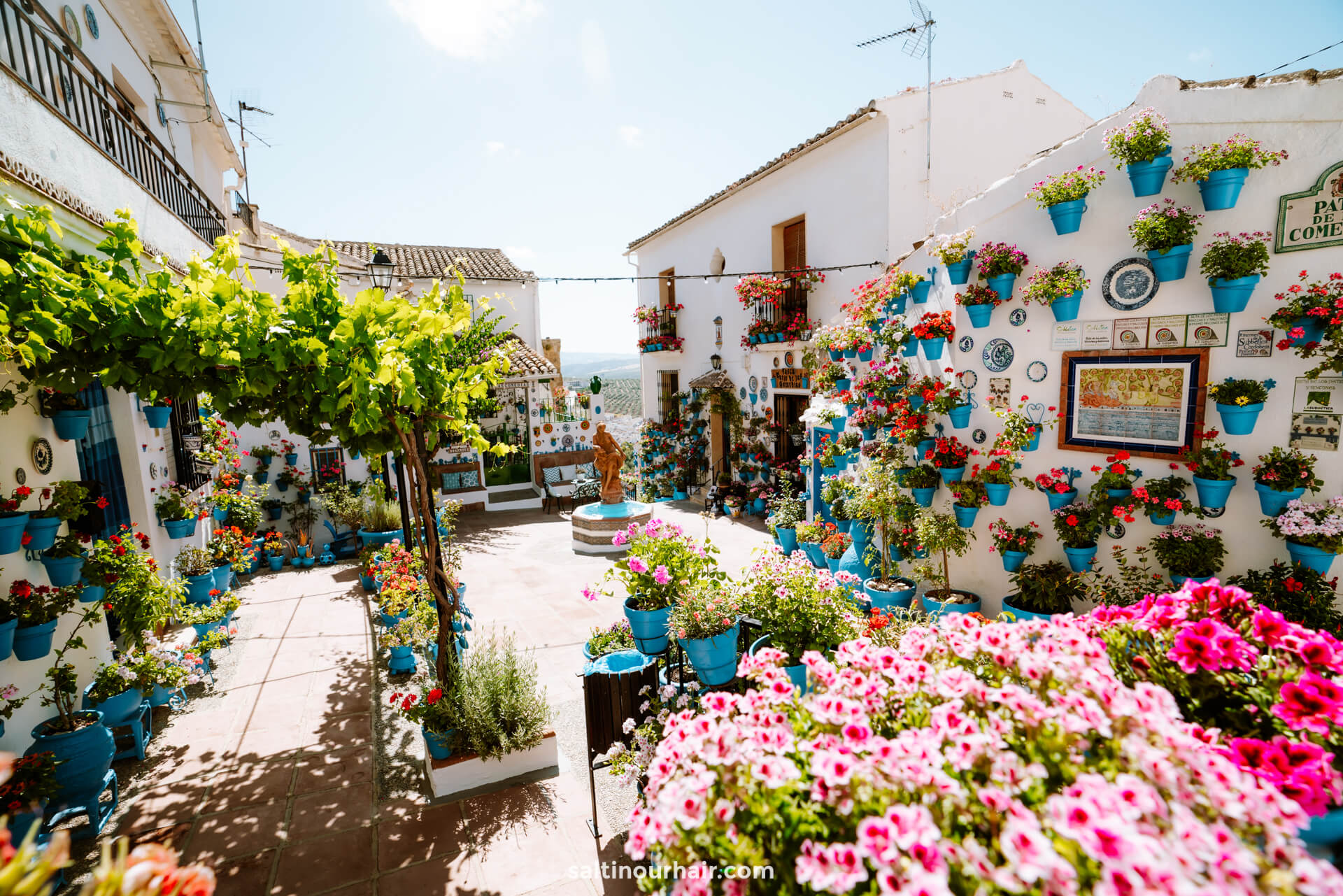
Montefrio is a hilltop town home to the ruins of an ancient Moorish castle. The views from here are unparalleled, so much so that National Geographic voted Montefrio as one of the top 10 views in the world! Visit the fortress to reach the highest point of the village, followed by a walk to the National Geographic viewpoint, where you can see a direct view of Montefrio sprawled across the hillside. It’s truly one of the most beautiful villages in Spain and the perfect place to visit at sunset.
We stayed in this lovely hotel looking onto the castle .
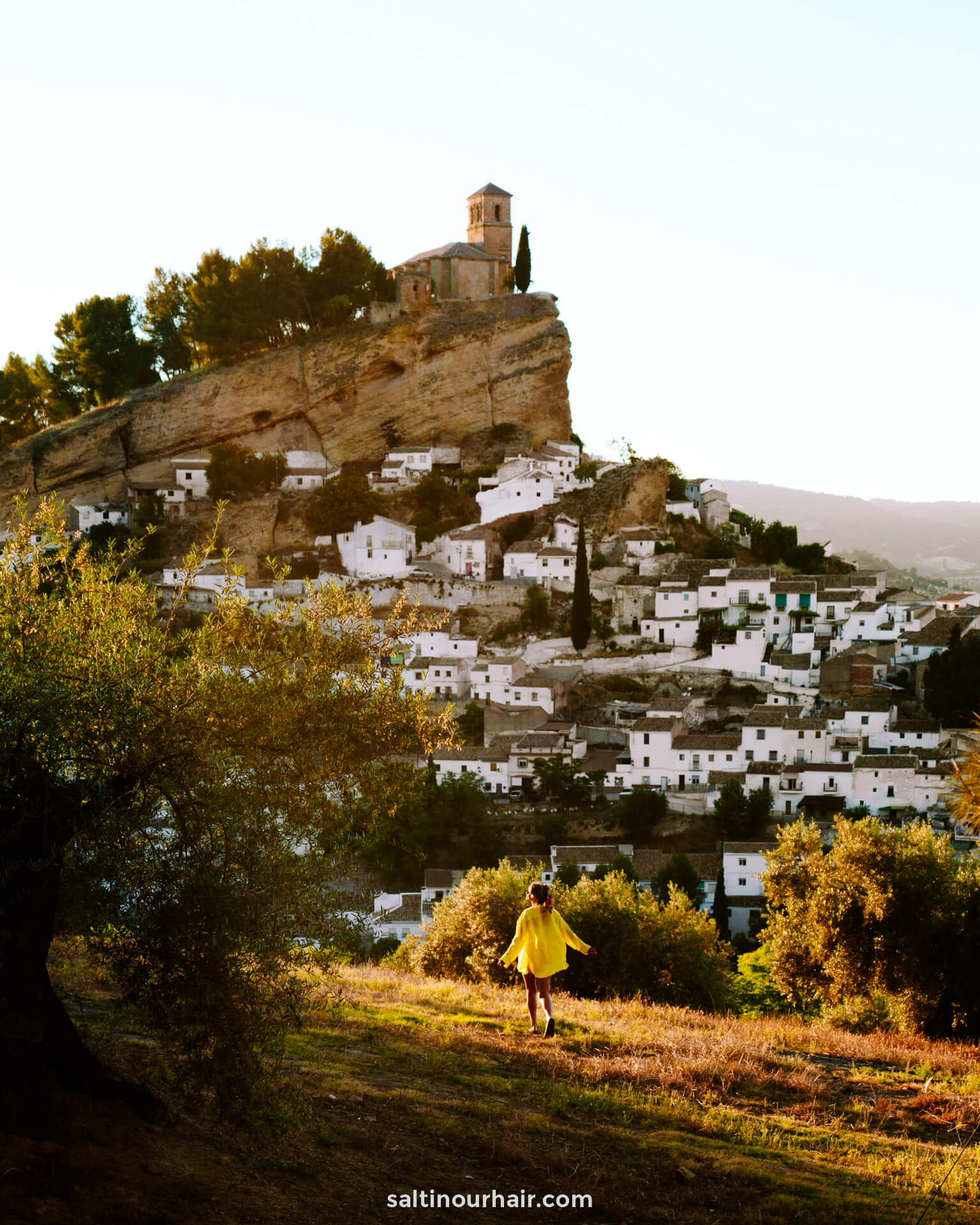
Day 6 + 7: Frigiliana + Nerja
It’s time to head for the beach! This strip of coastline is named ‘Costa del Sol’, meaning sunshine coast, and it lives up to its name. This area has many beautiful resorts and villages, but Frigiliana and Nerja are some of the loveliest.
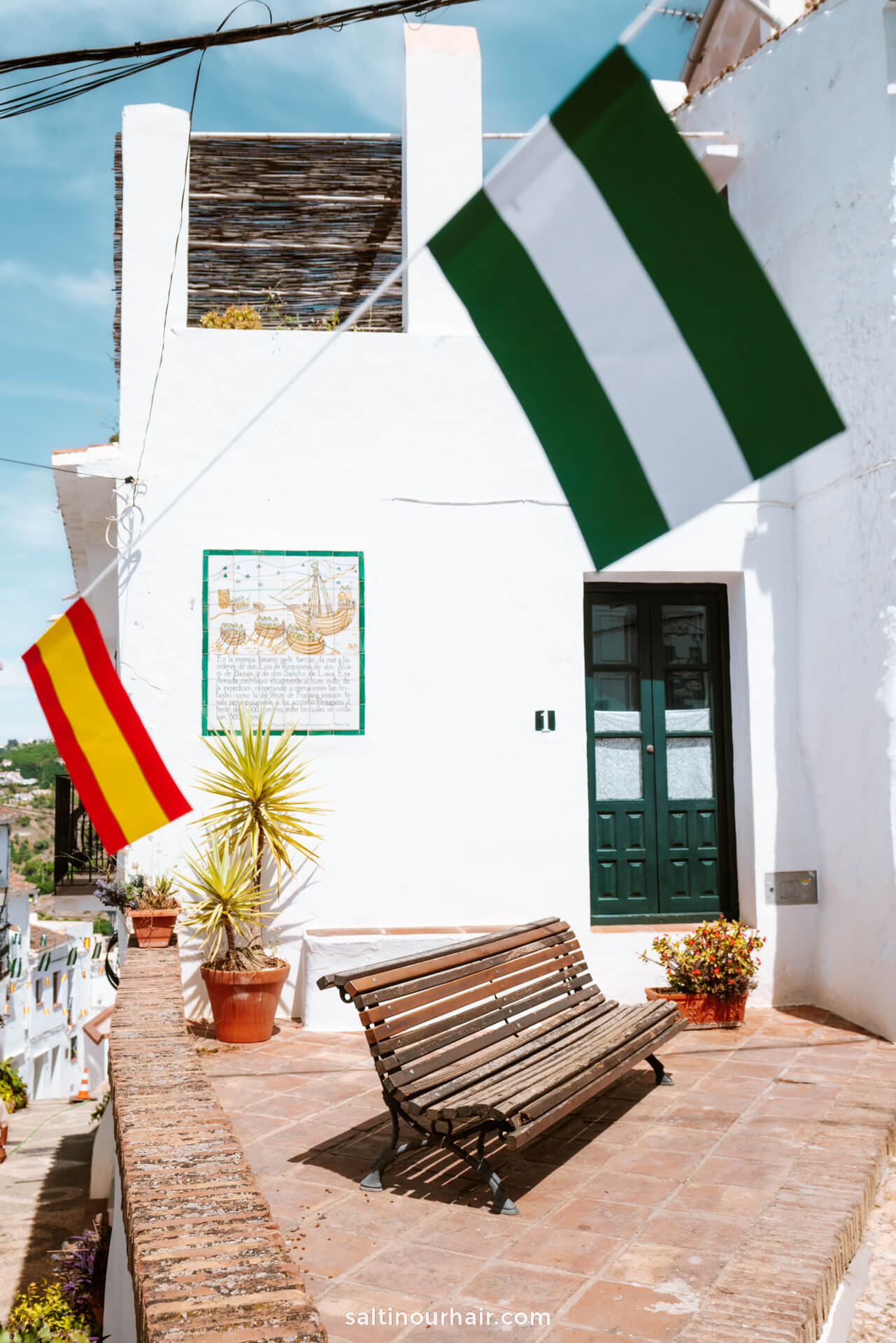
Nerja sits on a clifftop overlooking the sea, with fantastic views of the coves and coastline below. It’s the perfect place to stay for the night, with many lovely hotels, restaurants, and shops.
Here are all your hotel options in Nerja.
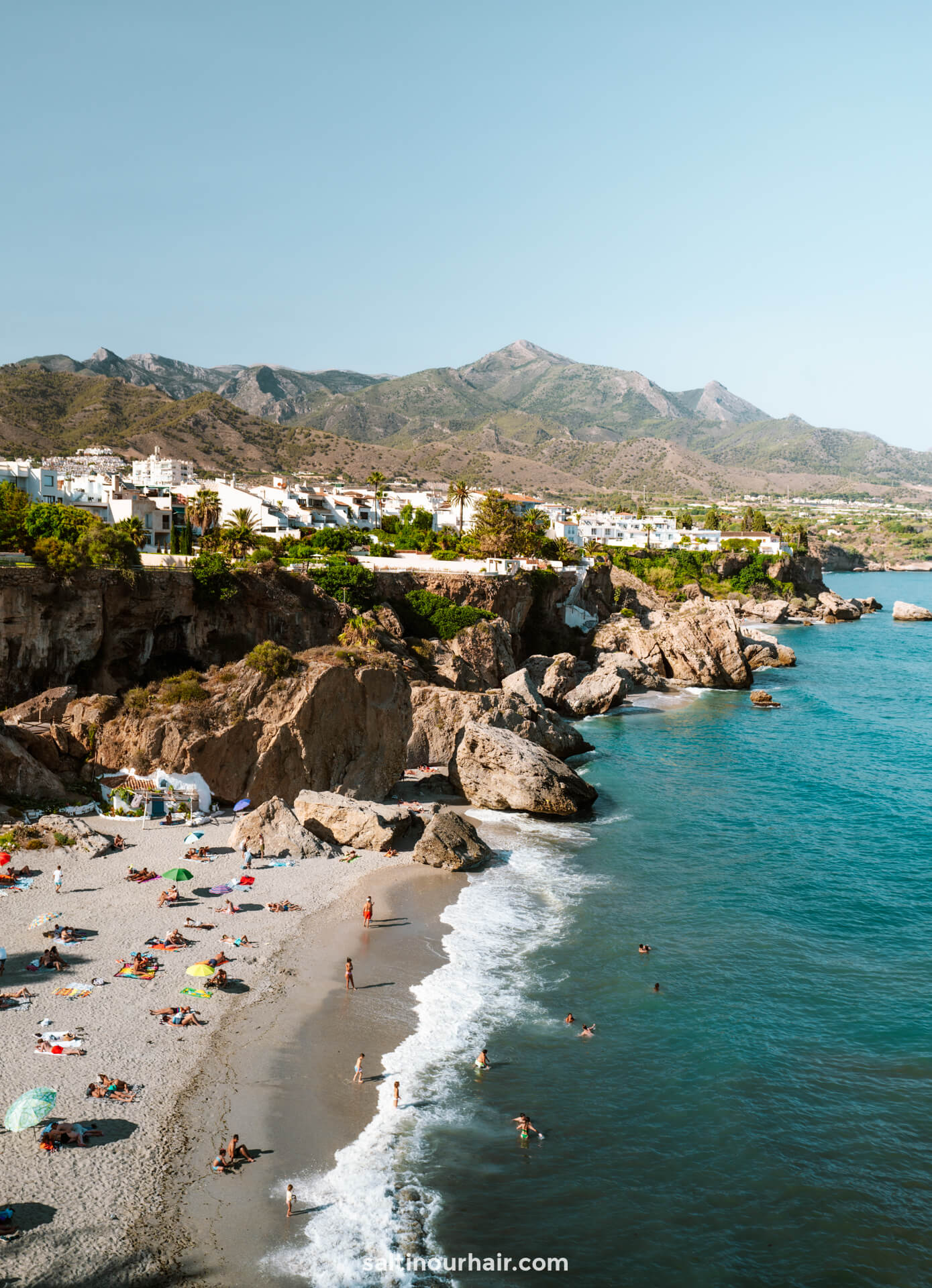
From Nerja, you can drive to Frigiliana in under 15 minutes. This beautiful whitewashed mountain town is one of the most photogenic spots on your Andalusia 2-week road trip. Cobbled streets worm uphill, bordered by white houses with painted doorways and flower pots.
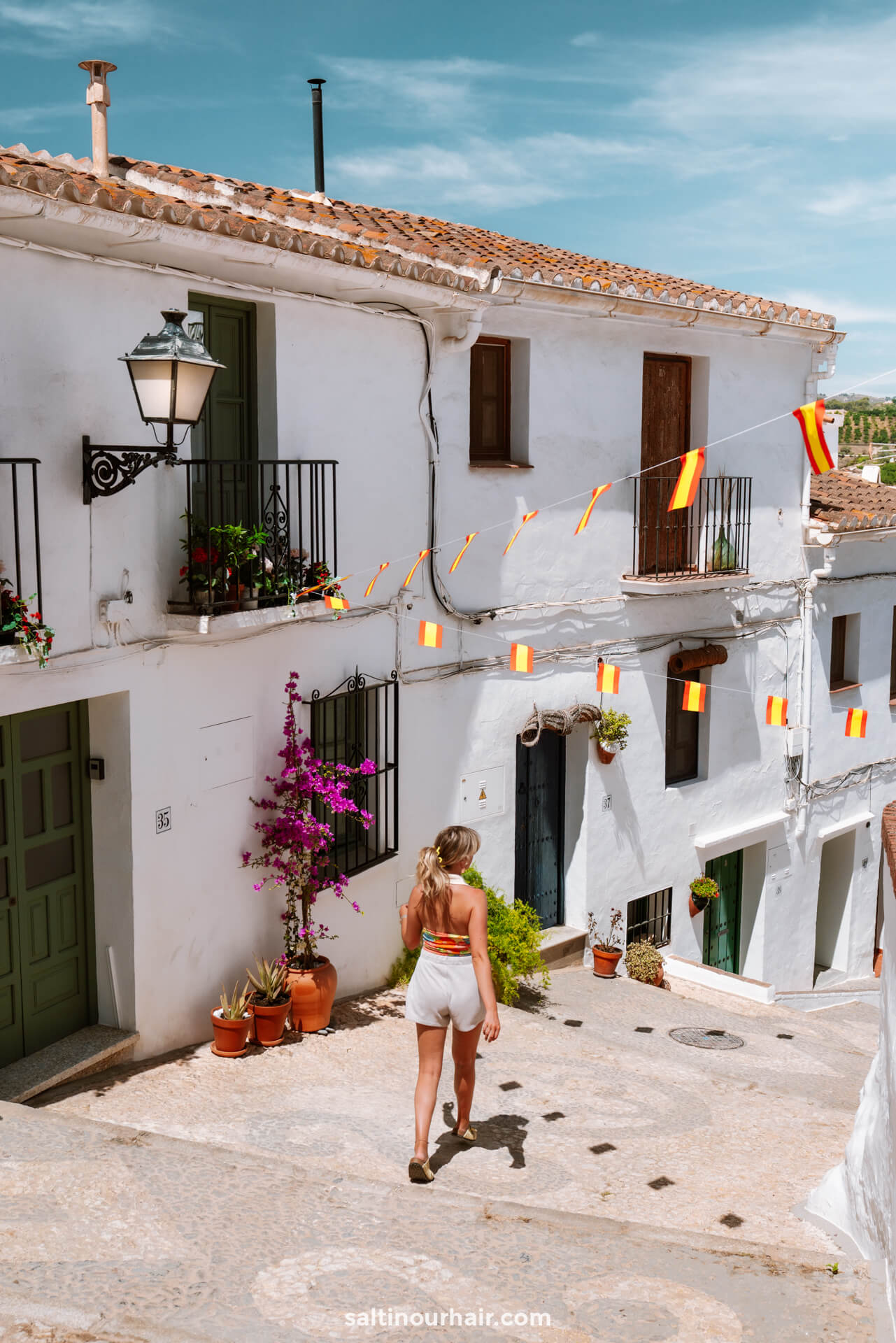
You could spend a few hours just getting lost in the streets, taking photos of each beautiful entranceway, and shopping in all the cute ceramic shops. We recommend booking dinner here one evening as many restaurants have terraces where you can sit and enjoy fantastic views of the valley below.
Here are all your hotel options in Frigiliana.
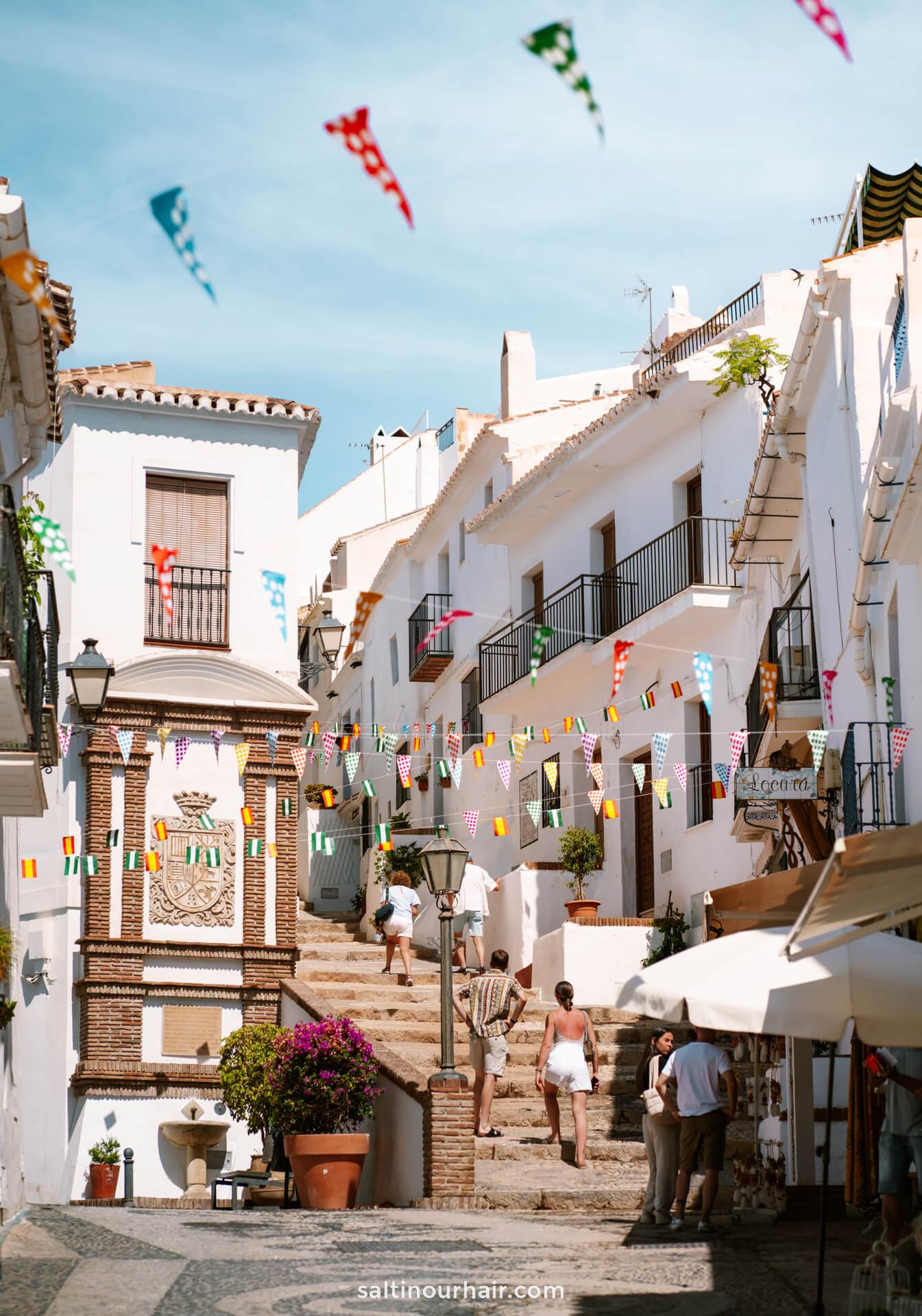
Where to Stay
There are more accommodation options in Nerja, and you can easily access the beaches if you’d like to swim or sunbathe. If you want to stay in a villa, Frigiliana has many pool options, but you’ll need to book ahead as it’s very popular.
Hotels in Nerja 😴

Hotels in Frigiliana 😴

Day 8 – 9: Malaga (Half-Way on Your Andalusia Road Trip)
Welcome to dynamic Malaga, a beachside city with a picture-perfect old town. You can find almost everything in Malaga , whether it’s castles, museums, galleries (Malaga was the birthplace of Picasso), or street art. It’s also home to some of the best restaurants and cafes in Andalusia!
Here are all your hotel options in Malaga.
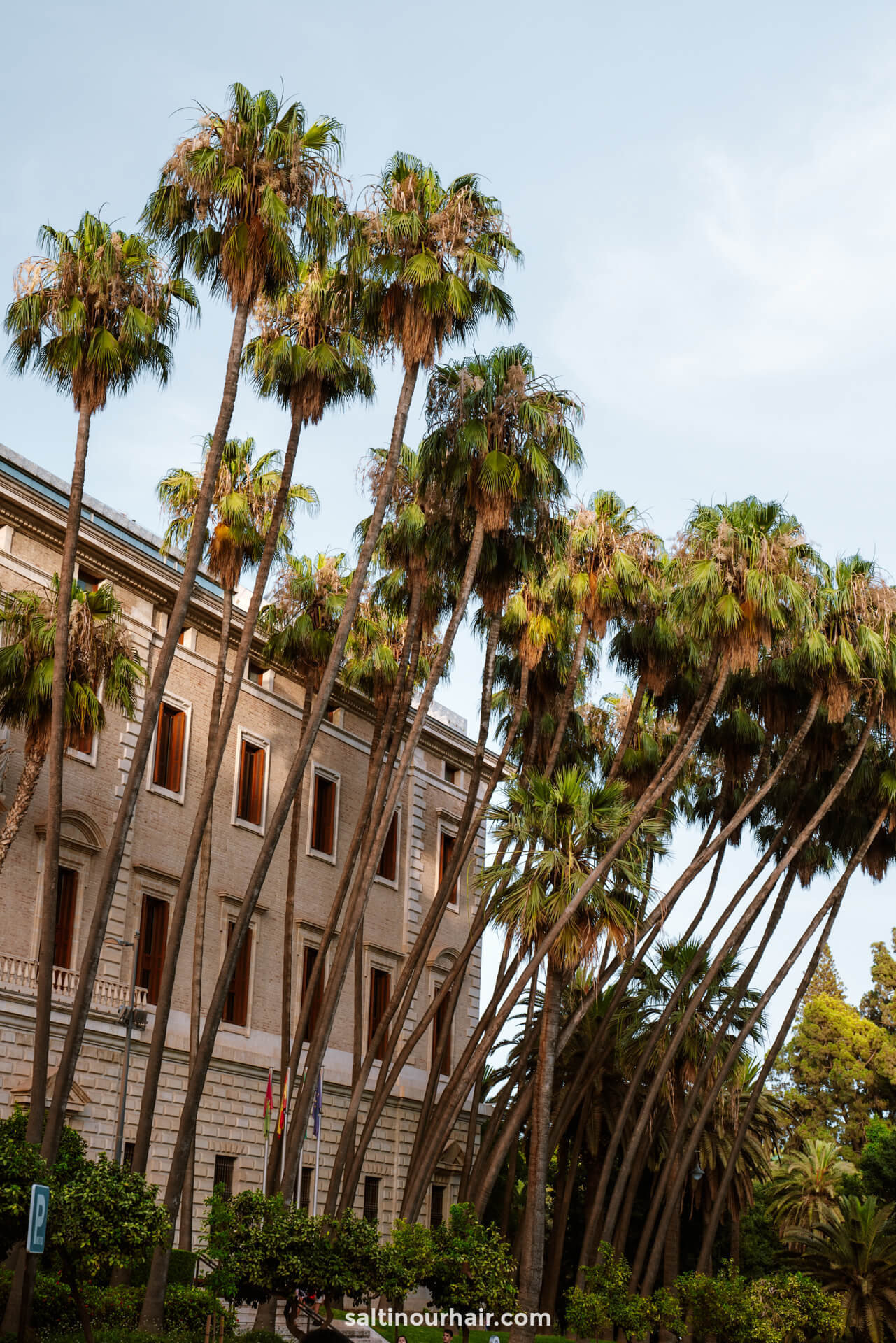
Exploring the sights of the old town is a must-do on your 2-week Andalusia road trip, for example, the Alcazaba and the Castillo de Gibralfaro, which are both historical monuments with beautiful views of the city. If you have time, we also recommend taking a half-day trip to the Caminito del Rey , one of Spain’s most thrilling hikes.
Read: Best Things To Do in Malaga

Where to Stay in Malaga
Stay in the old town to be near some of Malaga’s most historic and beautiful buildings.
Hotels in Malaga 😴
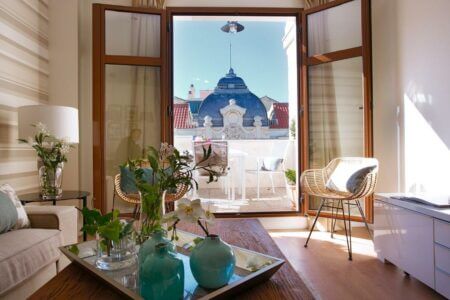
Alternatively, if you want more of a beach break, there are plenty of great hotels next to the sea, which are still within walking distance of the city center.
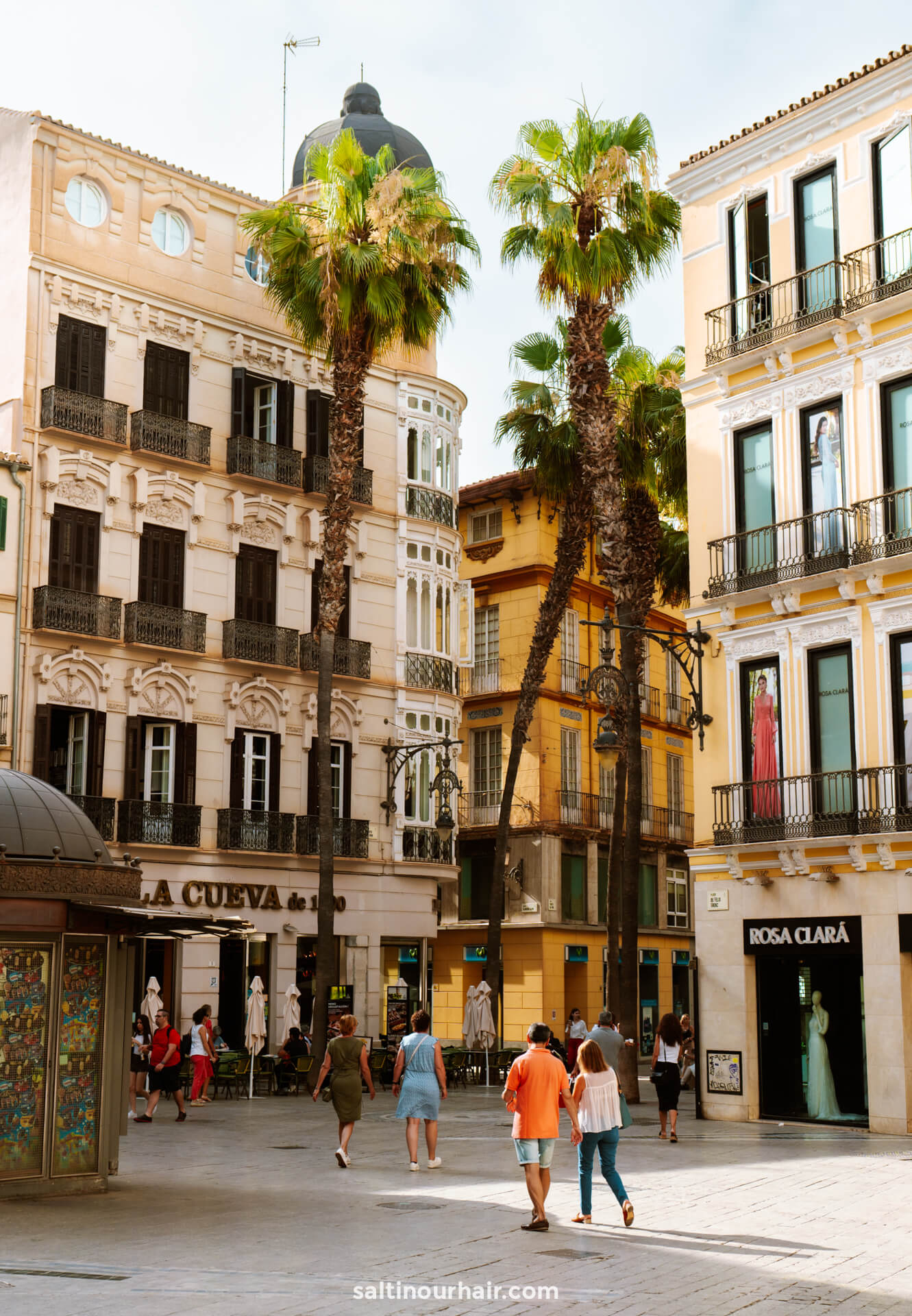
Day 10 – 11: Ronda
Beautiful Ronda is a place famous throughout Spain for its iconic bridge that hangs over the canyon. The town itself almost looks as if it is balancing precariously on top of the gorge, providing some of the most incredible views out over the Andalusian landscapes.
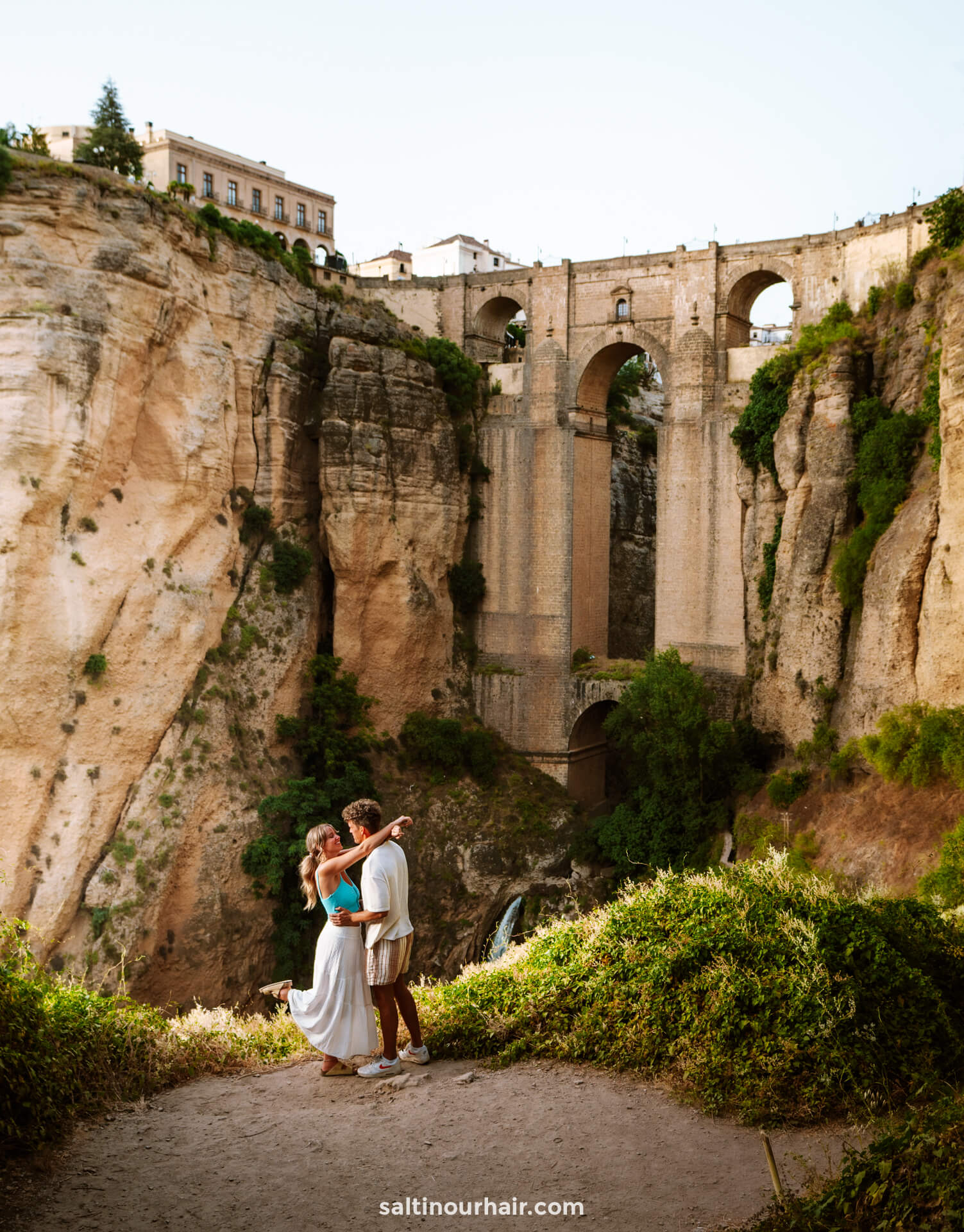
There are several viewpoints to see the bridge (Puente Neuvo) at its finest: either from below, the lovely Jardines de Cuenca, or the Mirador de Aldehuela. Grab your camera and take some incredible photos from these locations.
Here are all your hotel options in Ronda.
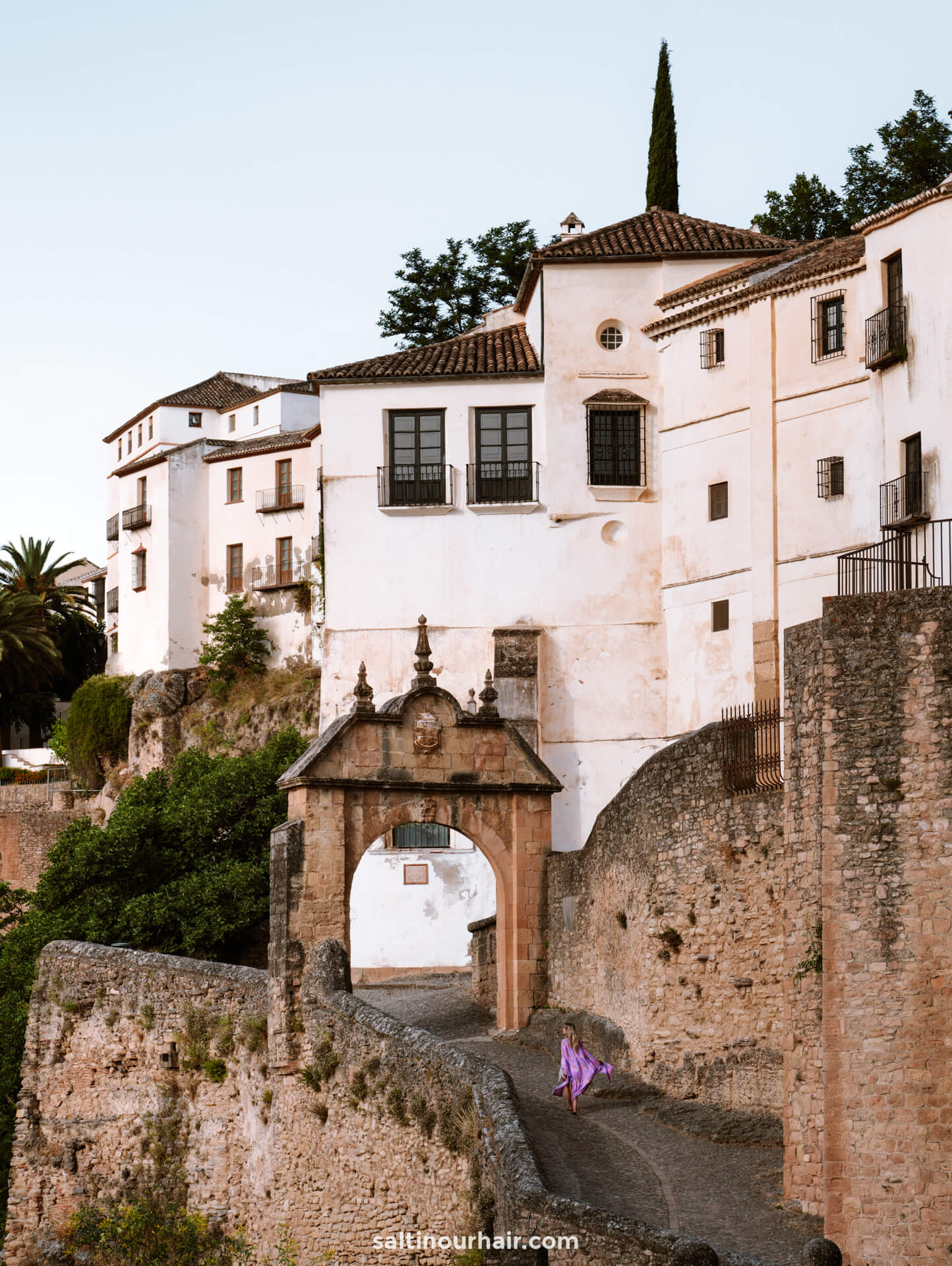
In the late afternoon/evening, take some time to explore the town of Ronda, whether it’s the main street with its boutique shops or the pretty churches and ancient Arab baths. Ronda is magical and will steal your heart!
Read: 11 Best Things to do in Ronda, Spain
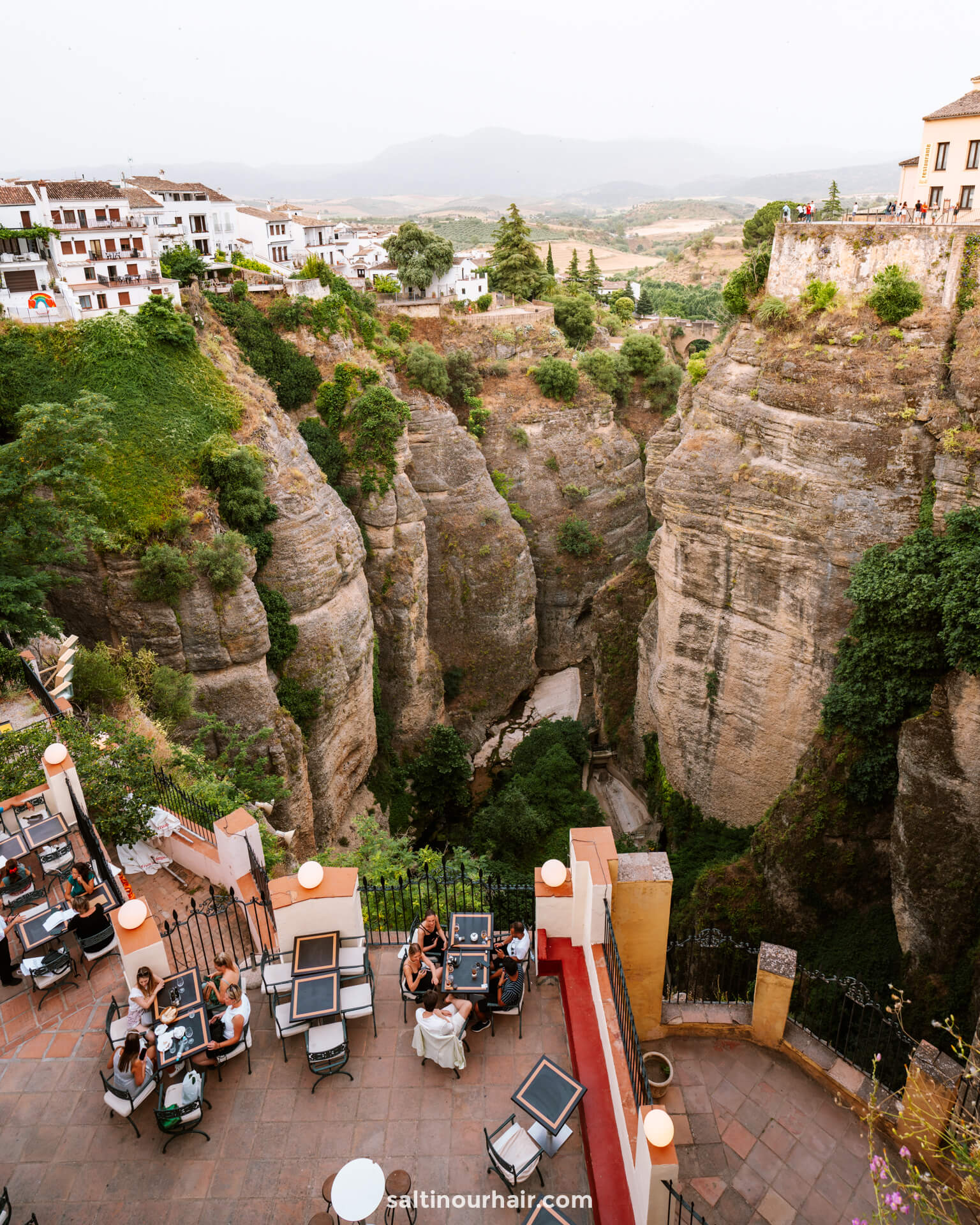
Where to Stay in Ronda
The main draw to Ronda is the incredible views from the top of the Tajo Gorge. For this reason, many hotels sit on top of the gorge looking out over the valley, so you’ll be spoilt for choice regarding accommodation.
Hotels in Ronda 😴

Day 12: Setenil de las Bodegas
Setenil de las Bodegas is one of the most unusual white villages of Andalusia and is a fascinating stop on your Andalusia road trip. This pretty town has houses wedged between and under the gorge rock, looking as if they’re almost growing out of the stone itself.
Here are all your hotel options in Setenil.
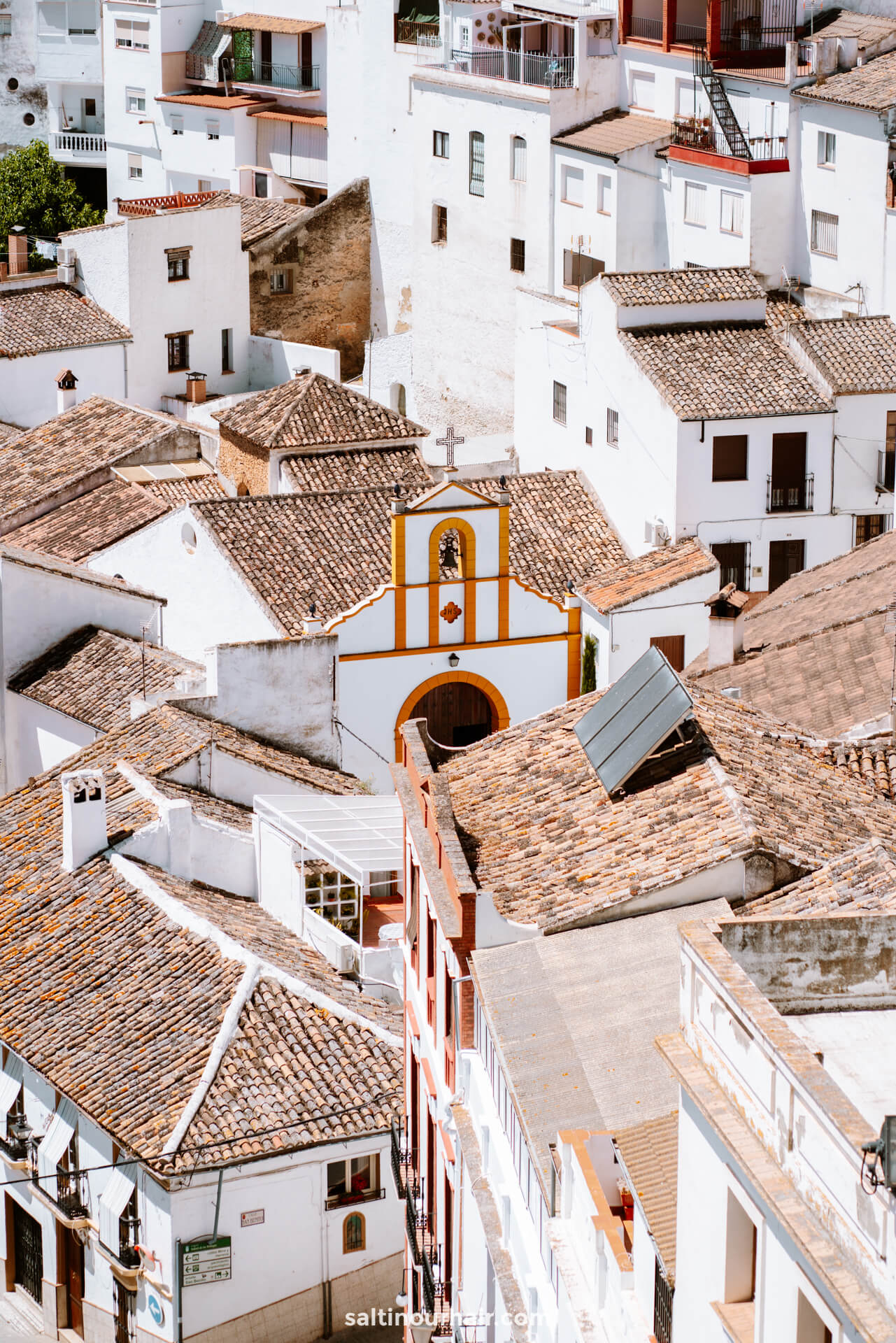
It’s a popular visit for those who want to visit Calle Cuevas del Sol, a street filled with cave bars and restaurants—one of the most unique experiences on your Spain trip!
Read: Setenil de las Bodegas (The Cave Village of Spain)
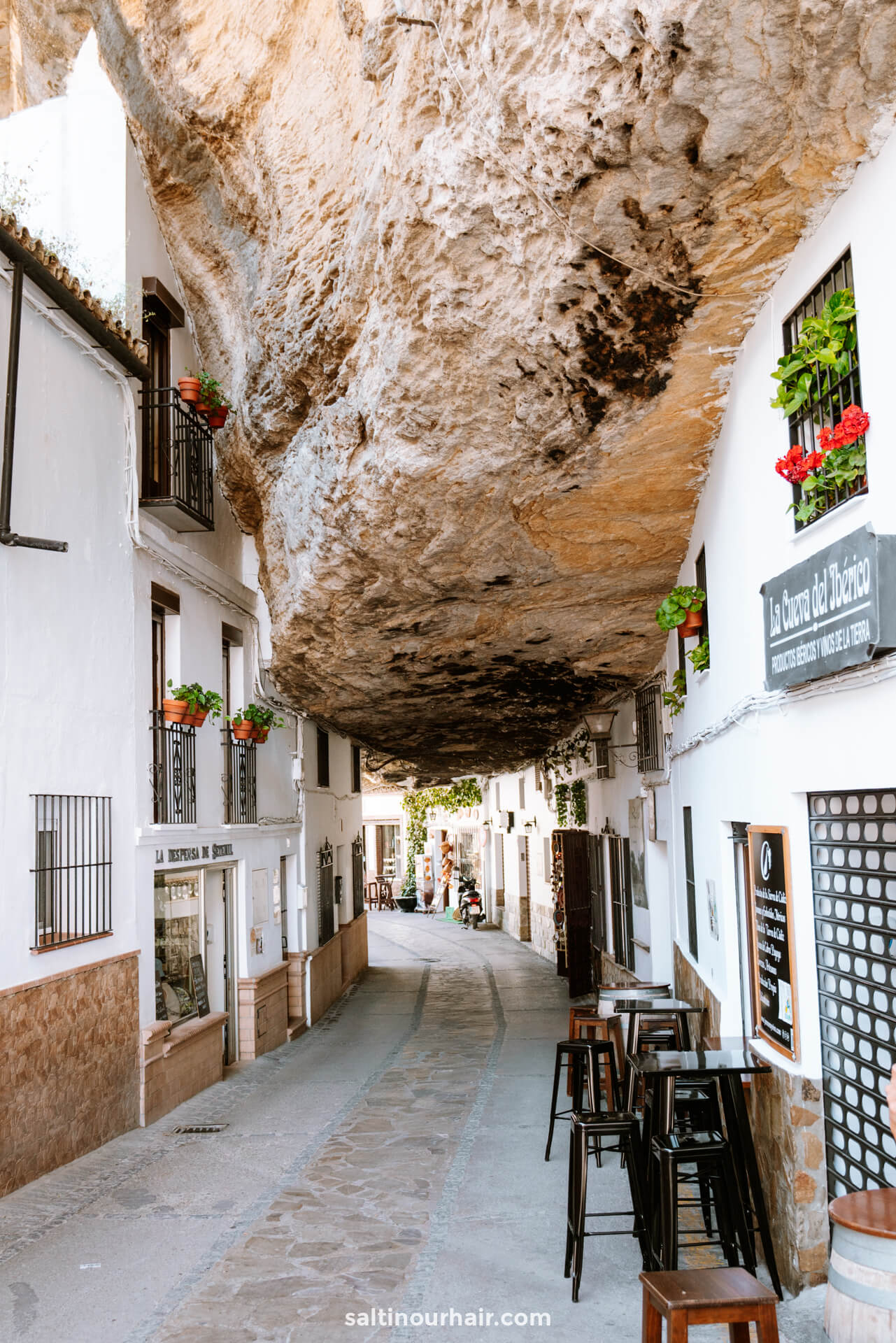
Tip: Combine Setenil with Olvera (another white village) for one of the most beautiful drives along meandering roads and through sweeping valleys of olive groves and fields of sunflowers.
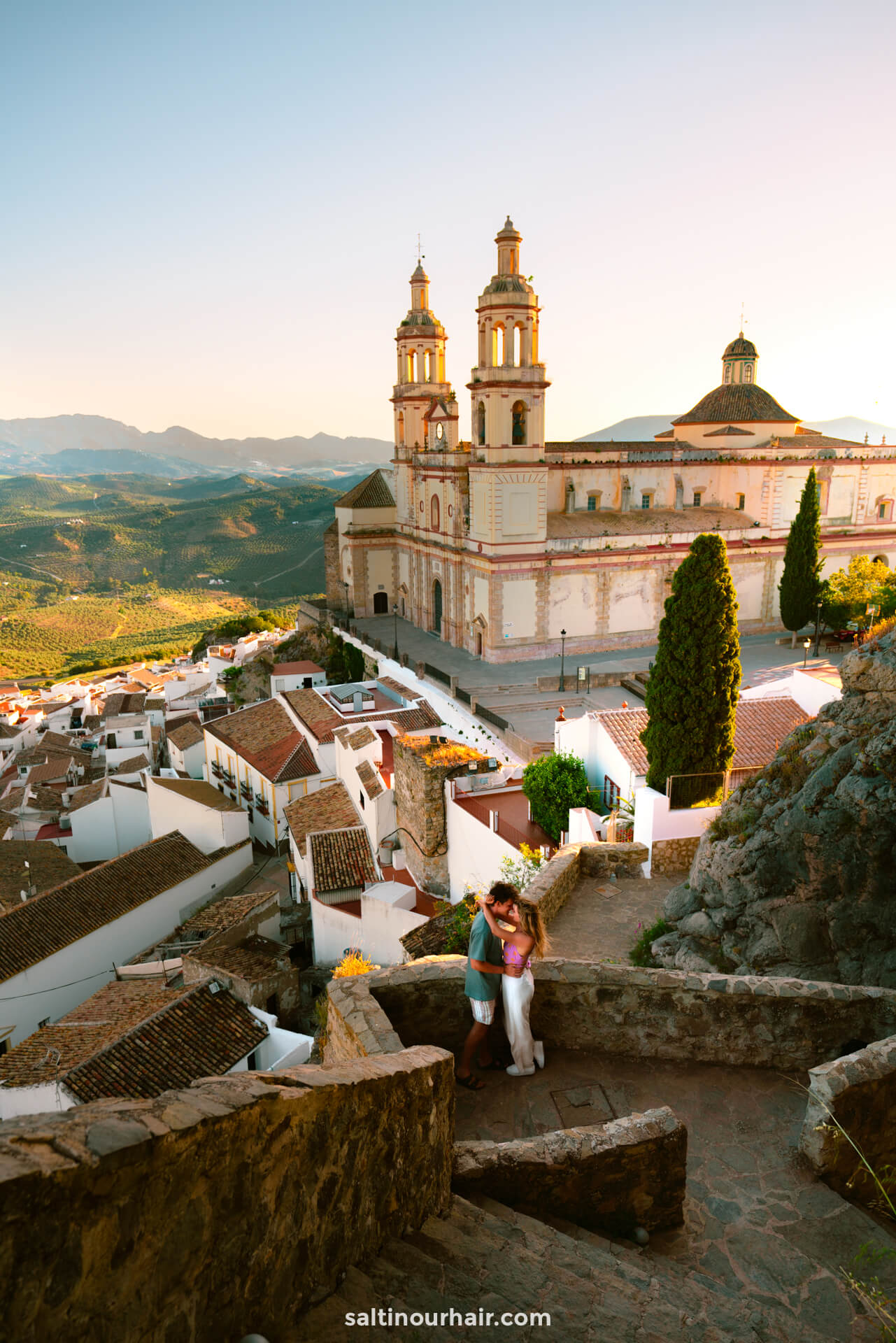
Where to Stay in Setenil
Setenil is small, but there are some great accommodation options, particularly the cave houses, which have been turned into apartments or hotels.
Hotels in Setenil 😴
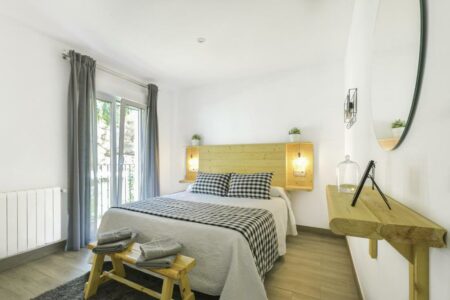
Alternatively, stay in any of the white villages of Andalusia and visit Setenil de las Bodegas on a day trip.

Day 13: Villaluenga del Rosario or Zahara de la Sierra
Villaluenga del Rosario and Zahara de la Sierra are another 2 of the white villages of Andalusia . This is a group of 19 whitewashed pueblos (small towns) in the region that are known for their charm and beauty.
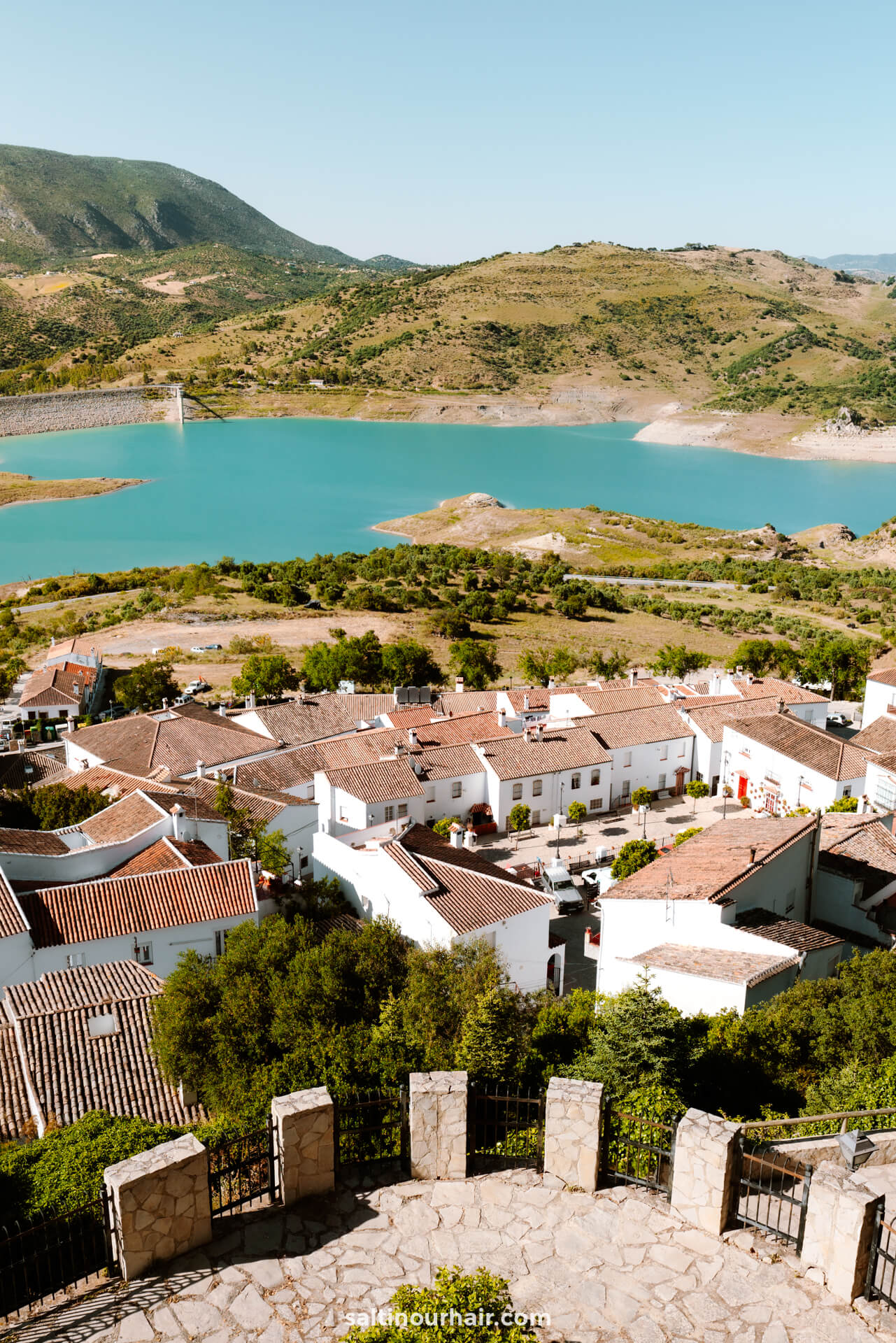
Villaluenga del Rosario
Villaluenga del Rosario, meaning ‘town of the rosary,’ is unusual in that it hugs the side of the mountain and doesn’t have any hilltop viewpoints, unlike some of the other white villages in the area. However, it’s actually the highest, sitting at 900 meters above sea level! Many great hiking trails lead up into the mountains from here, and there are some beautiful, ancient sites within the town itself, from the old bull ring to the cemetery (one of the most picturesque we’ve ever seen).
Here are all your hotel options in Villaluenga del Rosario.
Zahara de la Sierra
If you have some time, drive to Zahara de la Sierra for some of the most spectacular views you’ll find on your Andalusia road trip itinerary. Discover one of the most important fortresses in the area that sits high up on the mountaintop, providing incredible views over the bright blue lake below. If you want, you can also take a boat trip across the lake to see the town from a different angle.
Here are all your hotel options in Zahara de la Sierra.
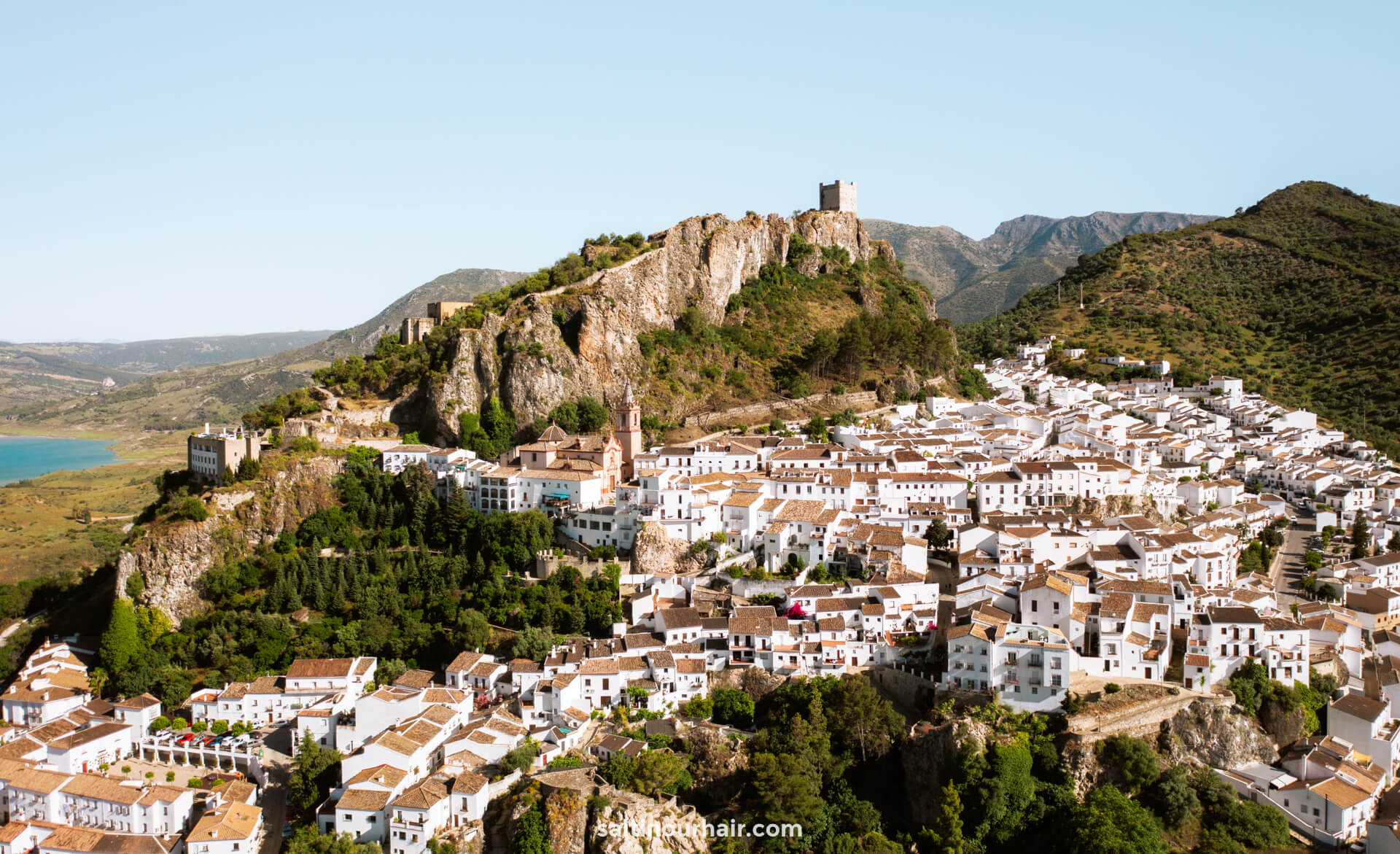
Stay in a rustic bed and breakfast or hotel in the countryside to enjoy the peace and tranquility of nature. There are also a few accommodation options within the towns themselves but book ahead to avoid disappointment.
Hotels in Villaluenga del Rosario 😴
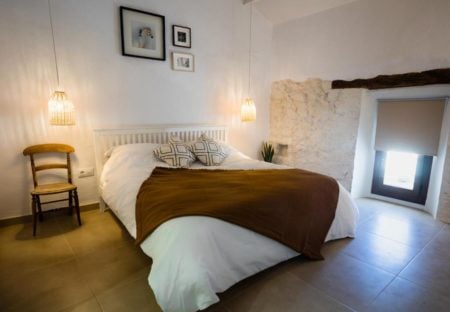
Hotels in Zahara de la Sierra 😴
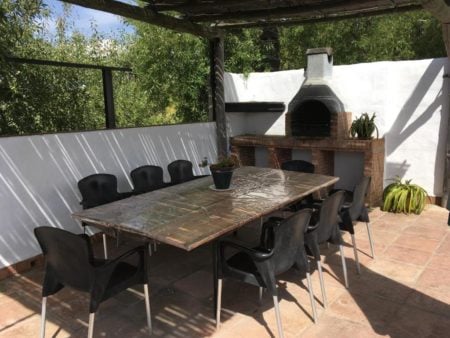
Day 14 + 15: Cadiz
Cadiz has really different energy compared to many other places in Spain. Not only is it one of the oldest cities in all of Europe , but its southernmost nature makes it feel very raw, wild, and rugged.
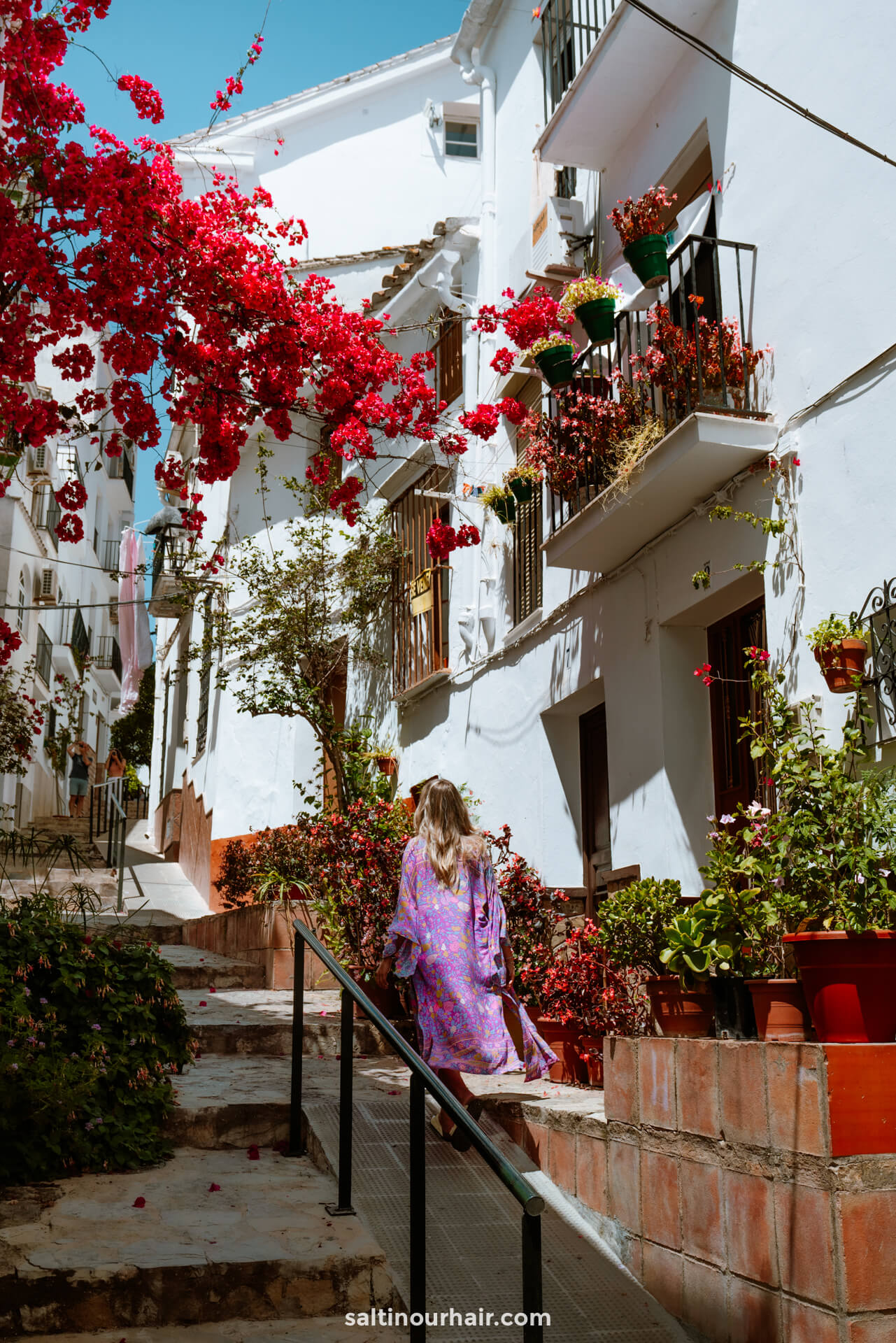
The coastline has long sandy beaches, with plenty of wind for watersports, backed by the city’s ancient maze of streets and beautiful historic buildings. It’s also a port town, so you’ll see plenty of fishing boats bobbing on the water, giving it a village atmosphere even though it’s a reasonably sized city.
Here are all your hotel options in Cadiz.
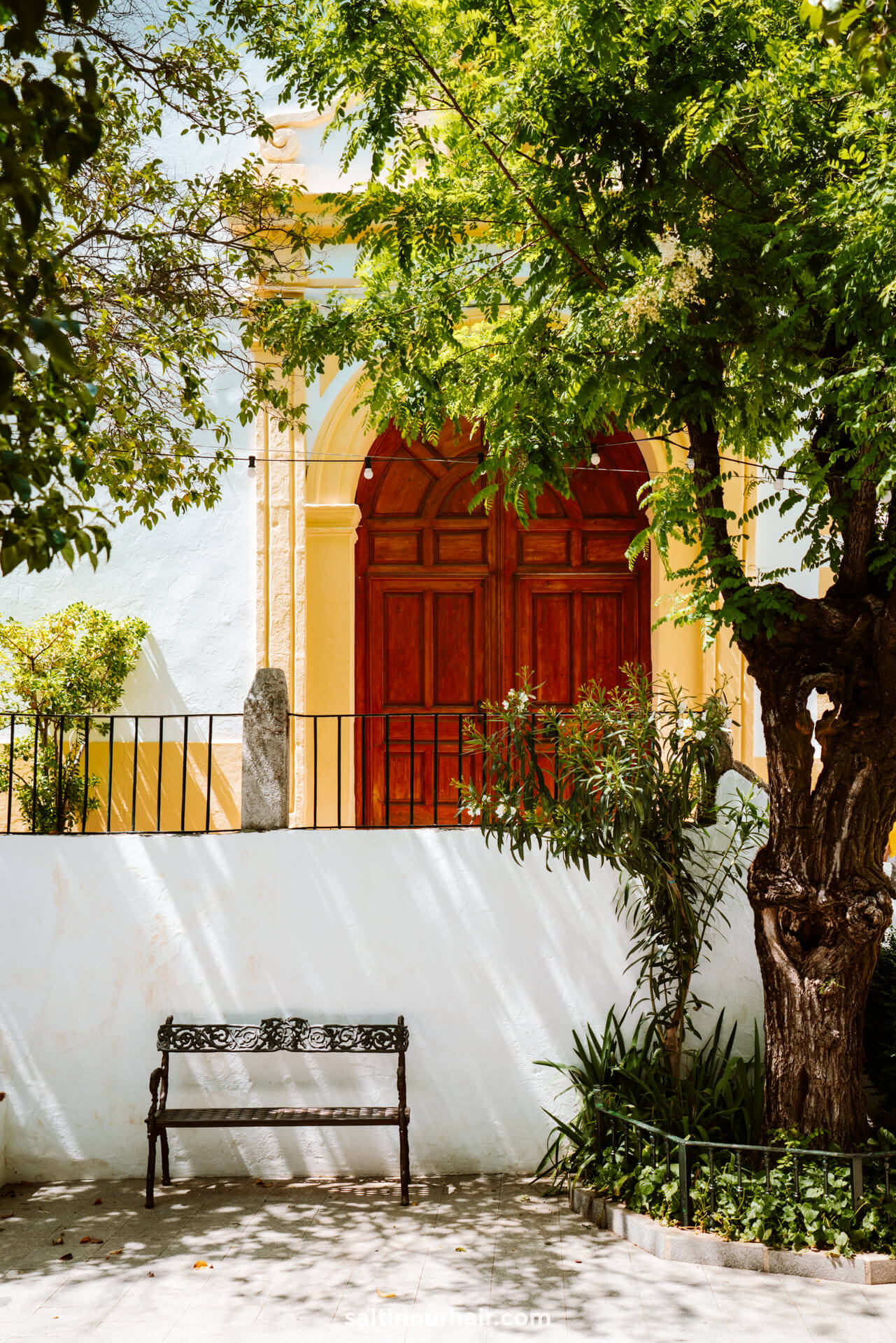
As it’s so far away from many of the bigger cities in Spain, like Barcelona or Madrid , it still has a very traditional Spanish feel (most restaurants only serve the traditional tapas menu and drinks). Two days is a great amount of time to explore the old city, climb the cathedral tower (incredible views), enjoy the nearby beaches, and shop in the local food markets.

Where to Stay in Cadiz
Stay in the historical center closest to the oldest sites in the city and enjoy the evening atmosphere when everyone congregates at the little bars among the narrow streets.
Hotels in Cadiz 😴

Day 16: Seville (End of your Andalusia Road Trip)
Day 16 is the final day of your Andalusia road trip itinerary, and what a trip it’s been! From charming white villages nestled among the hilltops to beautiful coastal towns and Moorish cities, you’ve seen some of the most beautiful places in Spain . Drive back to Seville (1 hour 20 minutes) to drop your hire car and head home. You might even have time to squeeze in one last Spanish meal before your train or flight!
Tip: Seville has an airport with flights leaving to major cities in Spain, as well as France and beyond. If you’re looking to travel further afield, take a train from Seville back to major cities like Barcelona , Madrid , or Malaga, where you’ll find international airports with more flights.
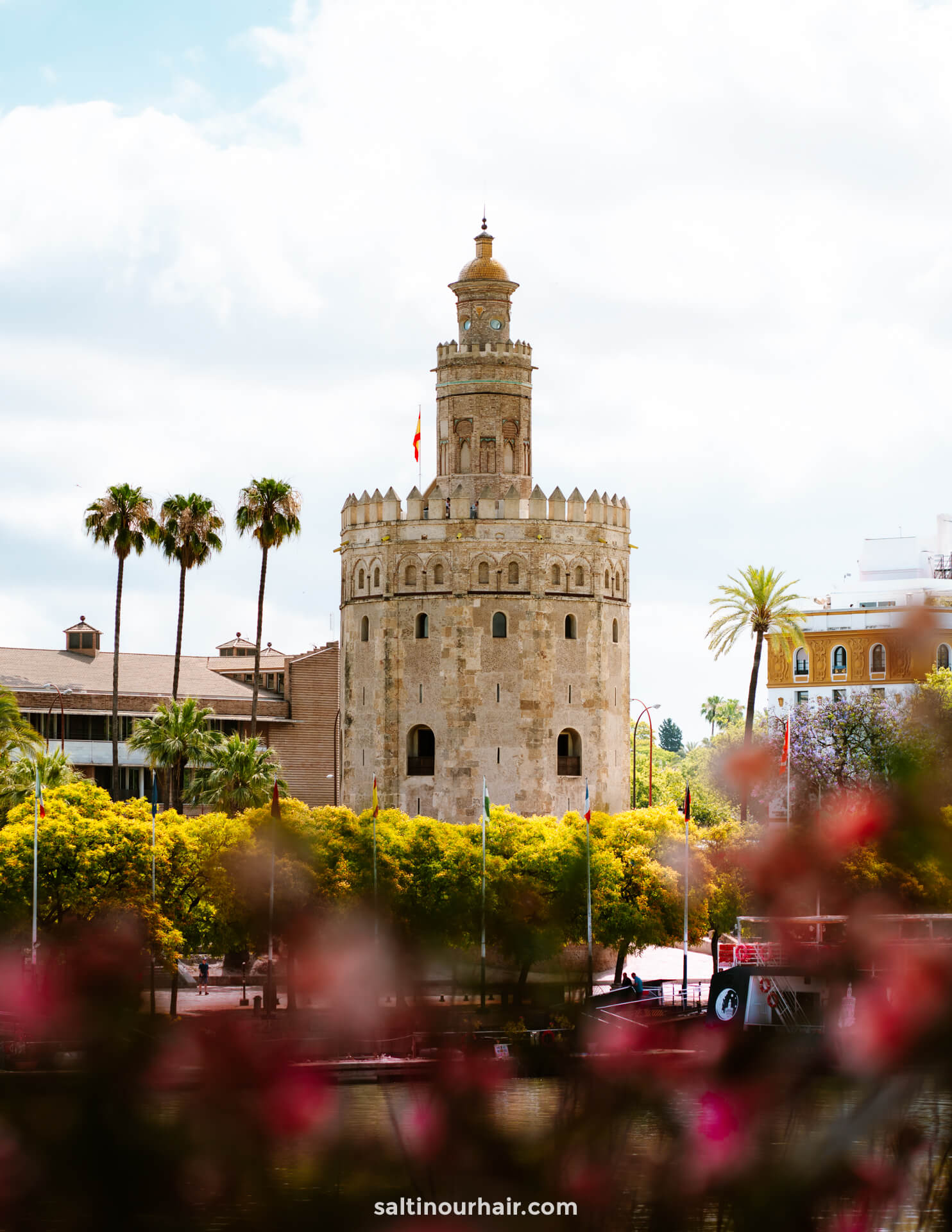
How to visit Andalusia in 2 weeks
Andalusia is a massive region in southern Spain, with countless beautiful villages, hikes, and cities to explore. You could easily spend a month or more slowly working your way around the region. However, 2 weeks is the ideal amount of time to see the majority of Andalusia’s highlights. This Andalusia road trip itinerary (2 weeks) is designed to be done by car, although it is possible to use public transport (with a bit more planning).
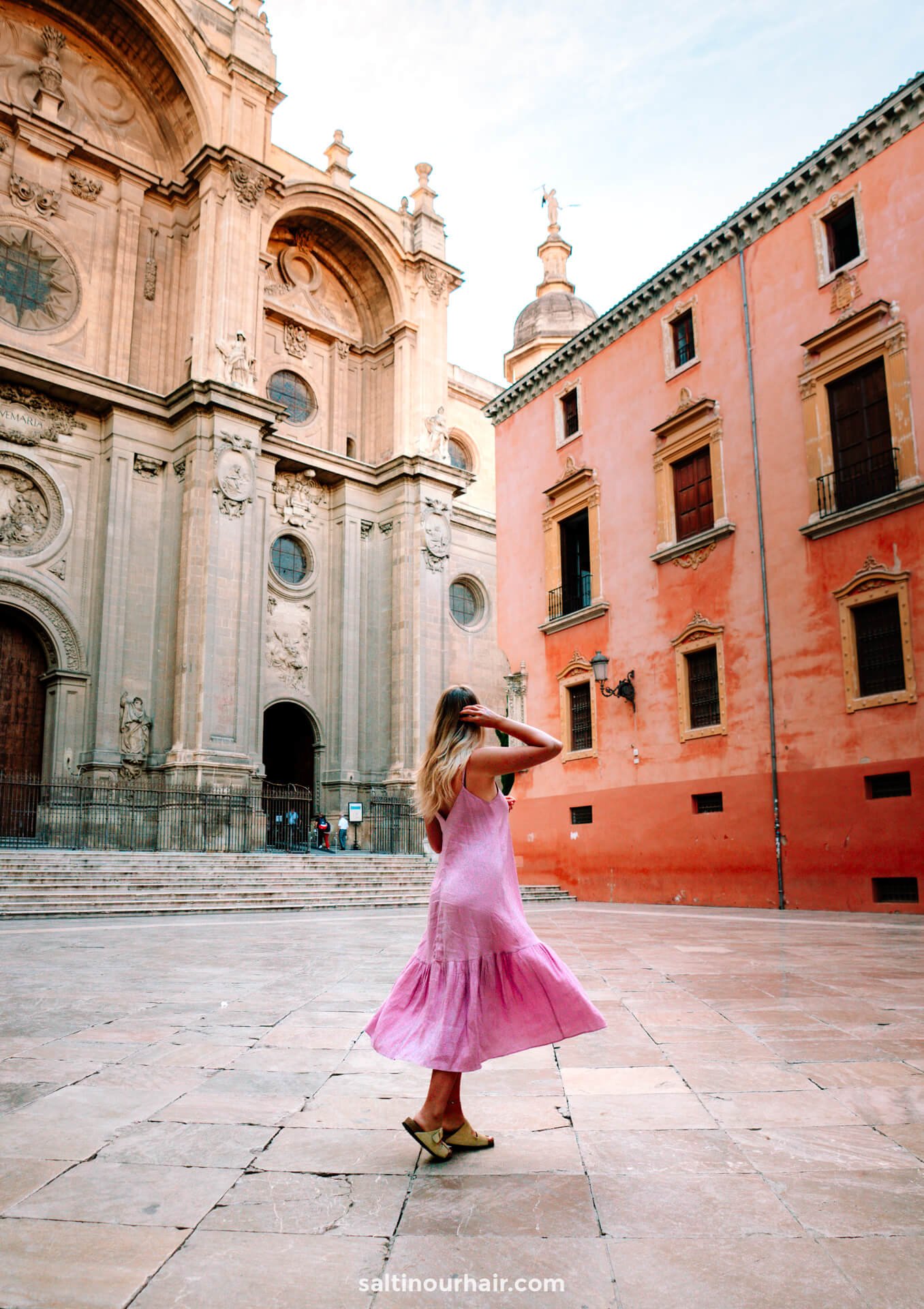
Getting to Andalusia
There are a few airports in Andalusia. However, Malaga is the biggest, with flights arriving from all over Europe as well as internal flights from other bigger cities in Spain.
If you’re flying into Barcelona or Madrid, consider taking the train to Andalusia. There are many high-speed, direct options that will get you to Malaga, Granada , or Seville in a matter of hours.
Getting Around Andalusia on your 2-week Road Trip
The best way to experience Andalusia is by car. The region is vast and very remote, meaning you’ll have greater freedom to reach the small villages and rural nature if you can drive.
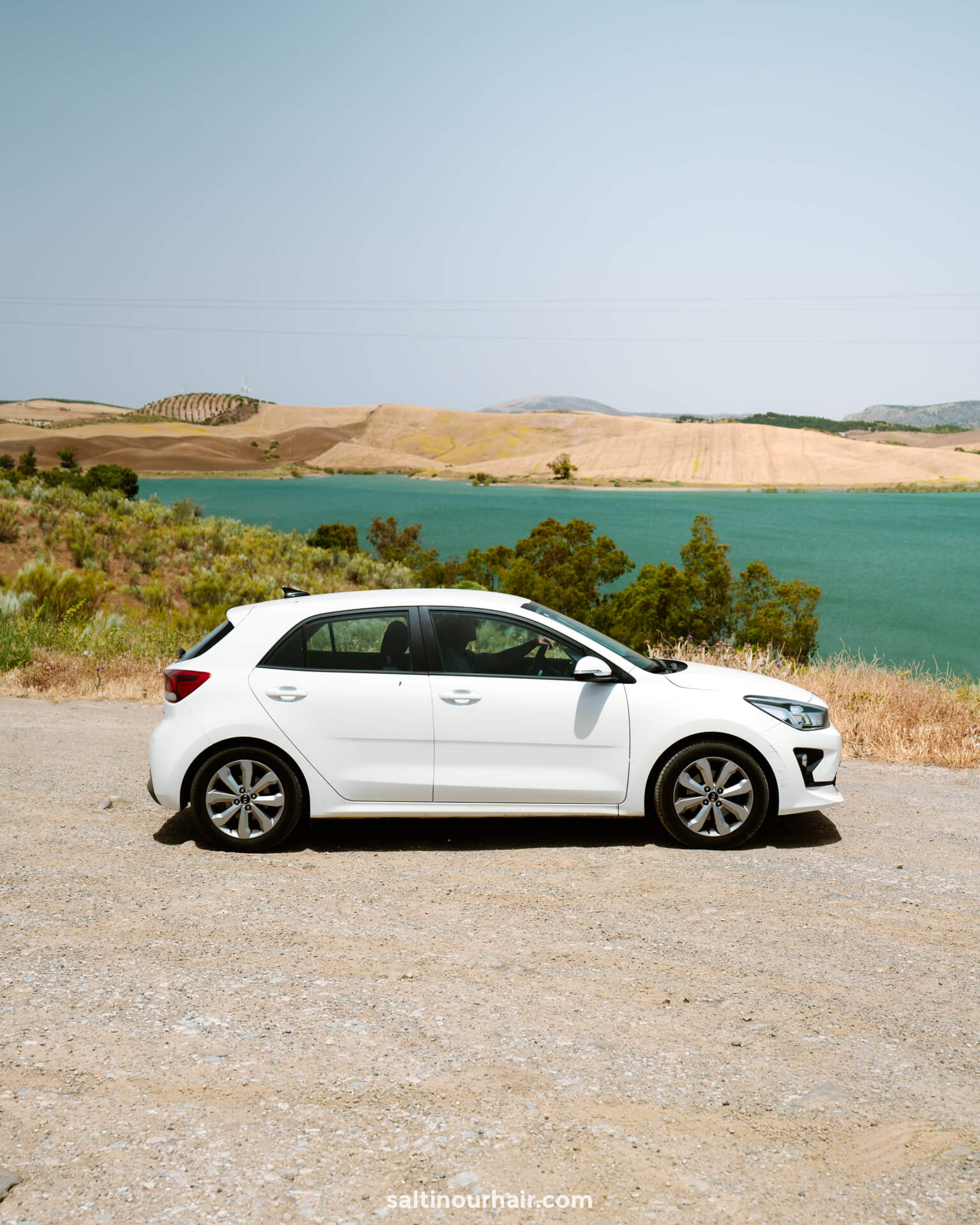
It is possible to travel by bus in Andalusia, but not all the destinations on this itinerary have public transport connections. You might have to make changes or take taxis to reach the more remote parts of Andalusia.
Buses move between the major cities and towns in Andalusia and are usually very cheap and comfortable. Make sure to do your research in advance as to whether you need to pre-book or can pay by cash on arrival.
Trains link major cities in Andalusia, as well as some towns. For example, Seville , Malaga, Granada , and Cordoba. However, you won’t be able to reach any of the white villages by train.

Our Favorite Accommodation in Andalusia
There are many beautiful accommodation options in Andalusia, whether it’s a charming old town hotel tucked down a narrow street in Seville , a cave apartment in Setenil , or a bed and breakfast overlooking the Alhambra in Granada . Below are some of our favorites for a 2-week itinerary in Andalusia.
- Seville: Hotel Gravina 51 , Lukanda Hospec , Hotel Dona Maria , Oboe Sevilla Catedral
- Cordoba: H10 Palacio Cordoba , Hotel Boutique Suite Generis , La Ermita Suites , Hotel Boutique Patio del Posadero
- Granada: Casa de la Catedral , Casa Bombo , BiBo Real Chancilleria , Häxaris Casa Boutique
- Nerja: Apartamentos NUEVA 22 , Casa Eva
- Frigiliana: Bed and Breakfast Villa Corte Azul , Casa Calle Real 87
- Malaga: Be Mate Hotel , Vincci Larios Diez , iloftmalaga , ICON Malabar
- Ronda: Apartamentos Circulo De Artistas , Salvatierra Guest House , La Escondida , Romántica Lofts
- Setenil: Casa Cueva un Rincon , Apartamentos Cantareria Jazmin , Casa Rural El Tajo , Casa Cueva Las Calcetas
- Villaluenga del Rosario: Casa de los Cuadros , Conjunto Rural Casa Victoria
- Zahara de la Sierra: Cuesta la Ermita , Alojamiento Rural El Pinsapo
- Cadiz: Boutique Hotel Casa Cánovas , Candelaria10 , El Armador Casa Palacio , La Casa del Consul
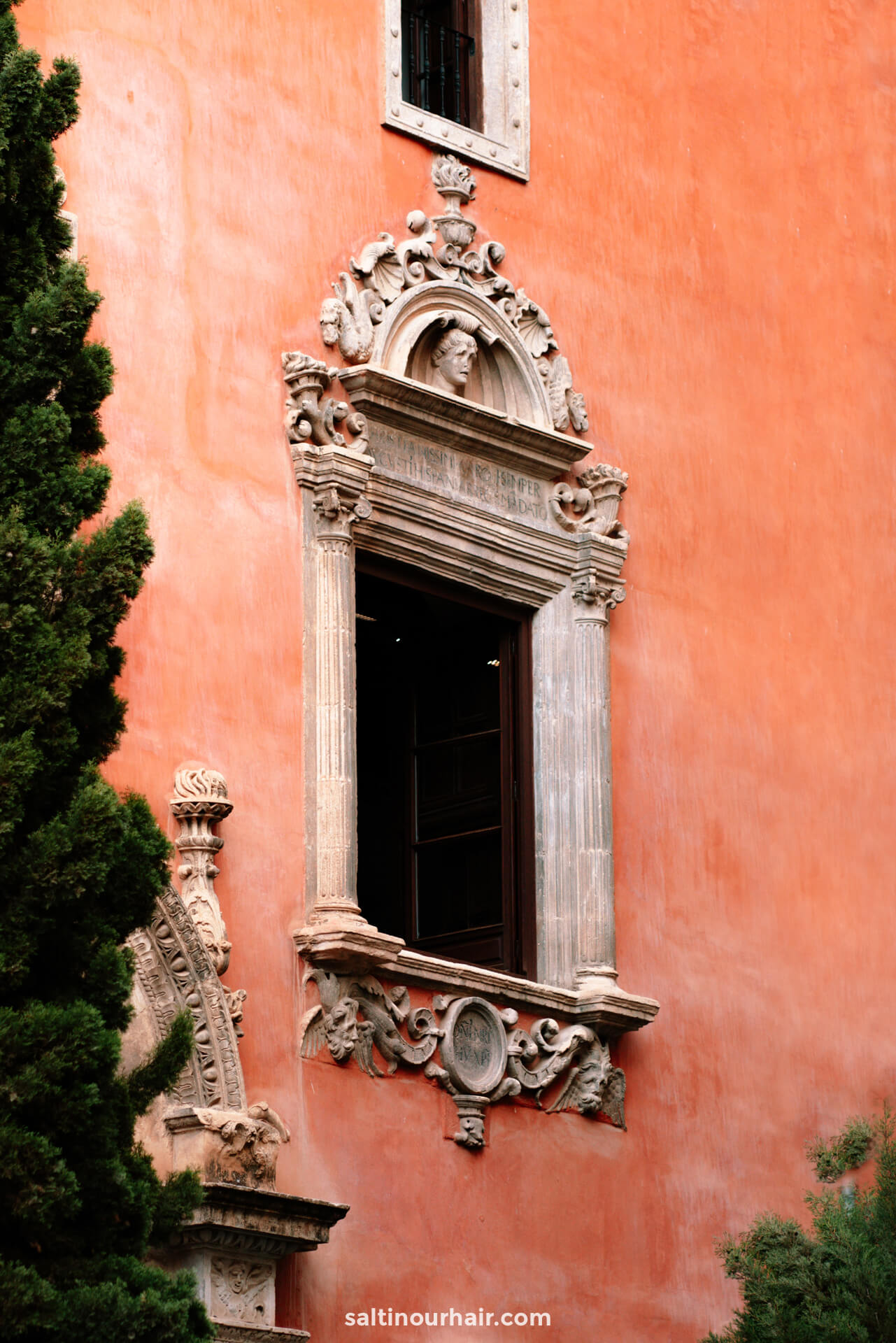
How Much Do 2-Weeks in Andalusia Cost?
Andalusia is one of the cheapest regions in Spain. Eating out is very reasonable, and in some cities, tapas is even free! What’s more, book ahead, and you can find beautiful hotels for a fraction of the price you’d find in bigger cities like Madrid or Valencia .
Expenses for a 2-Week Andalusia Road Trip
A 2-week road trip in Andalusia will cost you anything between 2000-3000 USD. This includes accommodation for every night of your stay, food, entrance fees, the price of your rental car, and fuel.
Costs of Traveling in Andalusia
Travel on a budget in Andalusia, from $180 − $380 USD weekly per person, mid-range $460 − $1590 USD, and high-end from $1590 − $2480 USD. However, costs depend on factors like accommodation, transportation, and activities. We did not include flights. Check flight prices here
- Hotels: $30 − $150 USD Check available hotels
- Hostels: $10 − $35 USD Check available hostels
- Transport: $5 − $10 USD Book public transport
- Car Rental: $50 − $150 USD Book a rental car
- Food: $5 − $15 USD
- Activities: $2 − $30 USD See tickets & tours
- Sim: $1 − $3 USD Get an eSIM or SIM here
- Travel Insurance: $2 − $6 USD Get Travel Insurance
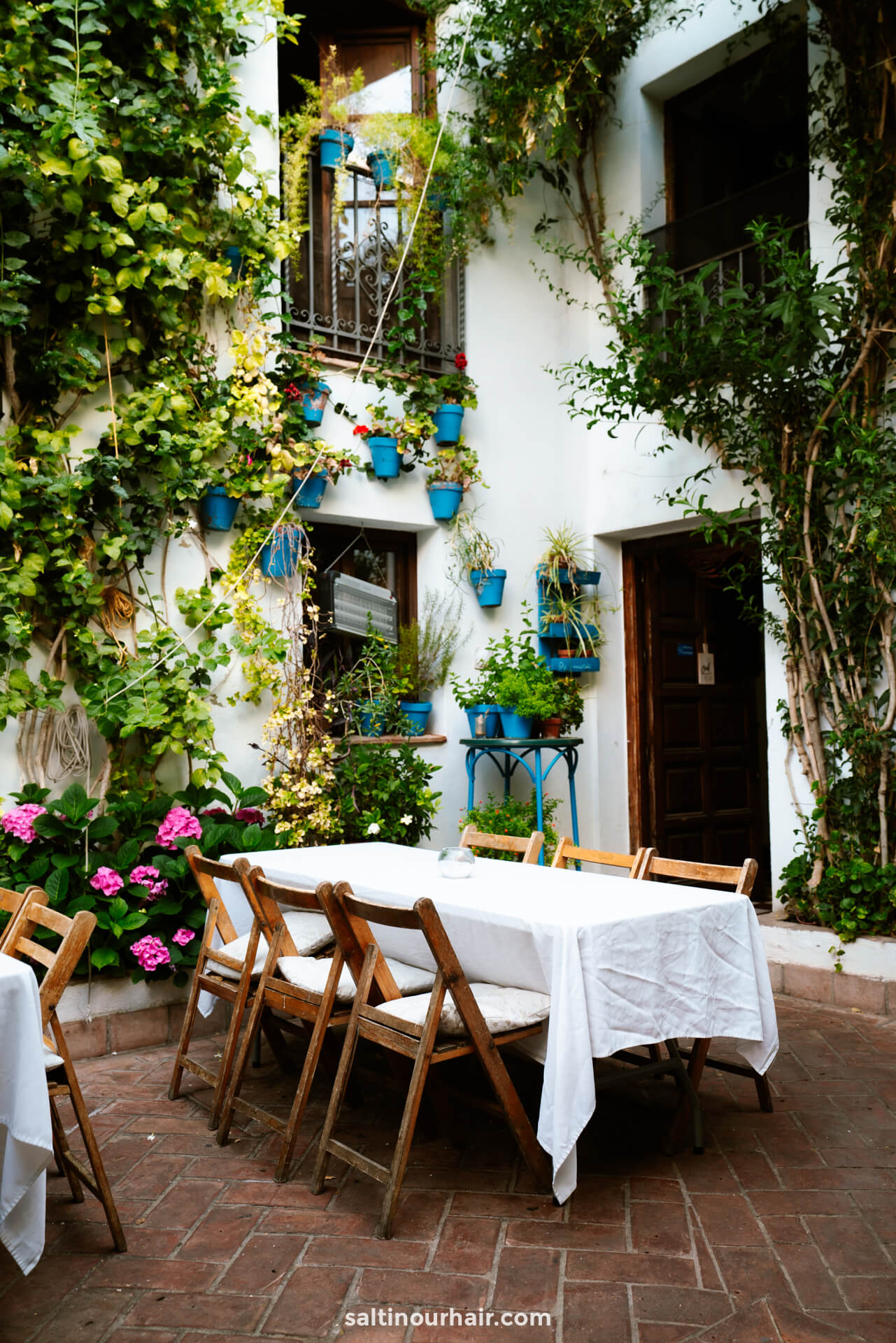
Best Time to Visit Andalusia
The most popular time to visit Andalusia is during the summer when you can make the most of the beautiful beaches and warm Mediterranean Sea. However, be aware that the summer months are very busy and can be more expensive (particularly in August when the Spanish take their holidays). These are also the hottest months when temperatures in places like Cadiz and Seville can exceed 40°C (104°F). Because of this, it’s not the best time for city sightseeing.
Instead, we recommend visiting in the shoulder seasons of late spring or early autumn. You’ll still get warm temperatures and beautiful sunny days, but it’ll be much more comfortable for sightseeing and road-tripping. Temperatures can be in the high 20s as late as the end of October!
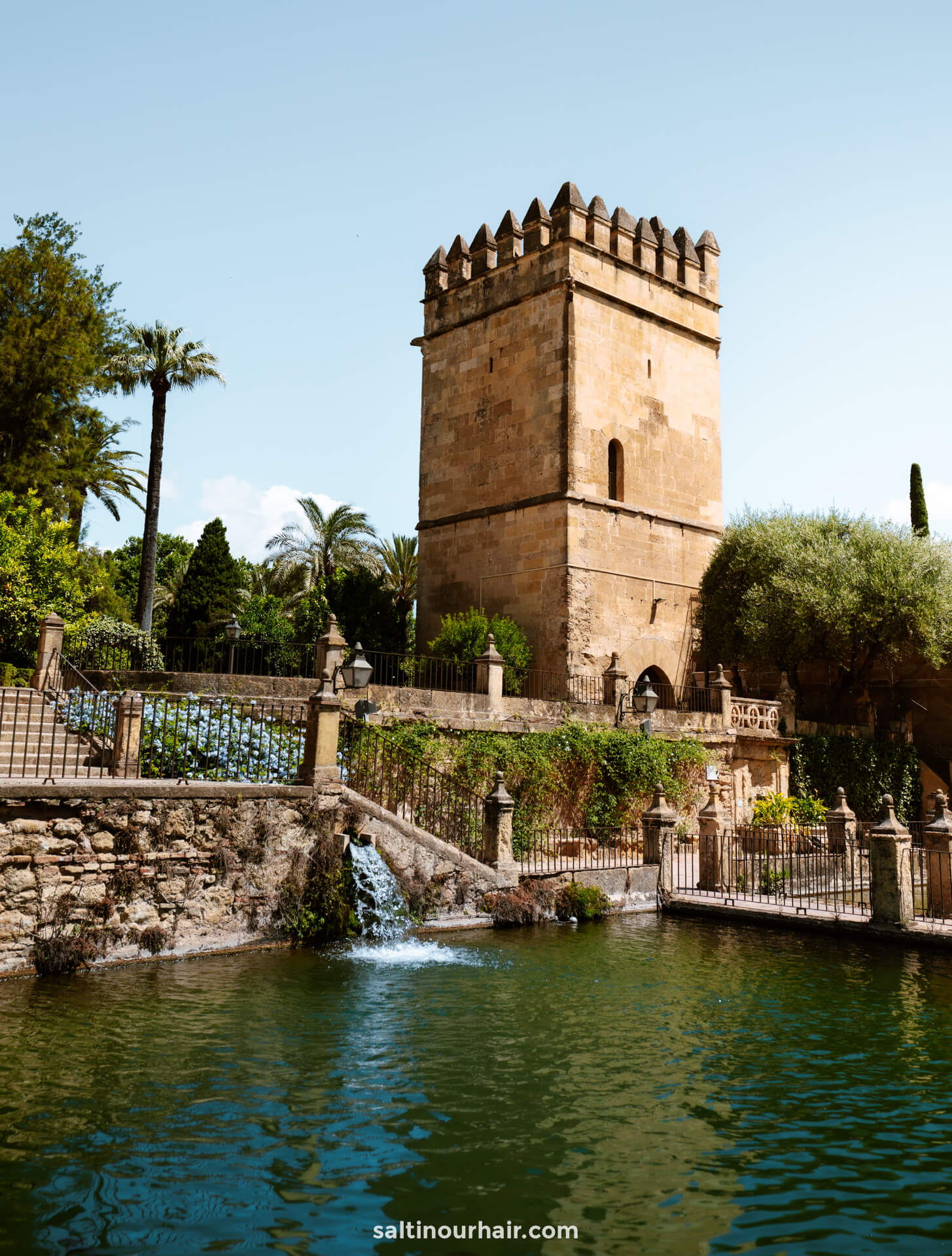
Travel Insurance for your Andalusia Road Trip
It’s always a good idea to purchase single-trip travel insurance, even if you’re only traveling for 2 weeks in Andalusia. This covers the potential for any accidents or loss, for example, theft of baggage, canceled flights, or a road accident.
We use Heymondo for all our trips, as they have very responsive customer service and a 24-hour online chat where you can speak with medical professionals.
Travel Insurance Don't forget a travel insurance for your Spain trip! Heymondo covers medical emergencies, theft, delays, cancellations, lost luggage, and more, with 24/7 worldwide assistance and medical chat. As a Salt in our Hair reader, we've got you 5% off! Check Heymondo here
Things to Know About Andalusia
There are a few things you can learn about Andalusia that will make your trip run a little more smoothly:
- Tap water is safe to drink in Andalusia. It is quite chlorinated, which can make it taste a little different from what you’re used to. However, drinking is safe, so bring your reusable water bottle and travel plastic-free !
- Siesta time. During the summer, all shops and restaurants close for siesta (typically somewhere between 4 PM – 8 PM). On Sundays, most conveniences are also shut.
- Public holidays. Spain is a country with some of the highest number of public holidays in the world! This means there is always a fiesta somewhere, so make sure to check ahead for shop, restaurant, and road closures.
- Hot summer temperatures . In August, temperatures can exceed 40°C (104°F). Make sure to plan your sightseeing in the early mornings or evenings to avoid being in the sun (the hottest time of day is usually around 4 PM). Make sure to wear a hat and sunscreen and drink plenty of water.
- Always carry cash , especially in small villages where sometimes card is not accepted.
- Bring extra layers if you’re traveling in the mountains, as it can get cooler in the evenings.
By purchasing through our links, you support us at no additional cost. Thank you for your support. ♥️
- Find Hotels via Booking.com
- Find a Rental Car via Sunny Cars
- Find Flights to Andalusia via Skyscanner
- Get a Travel Insurance via Heymondo
- Book Tours & Attractions via GetYourGuide
- Book a Bus/Train/Transfer via 12Go
Renting a Car in Spain in 2024: All you need to know
6 most beautiful white villages of andalusia, spain, malaga, spain: 16 best things to do on the costa del sol.
Looking for more travel information? Plan a chat with us for personalised travel advice or get an answer from the Salt in our Hair Travel Community on Facebook.
Hello, Do you feel like this would be a safe trip to do a solo female? (A solo female who does not speak Spanish at that.) Thanks!
Hi Meghan! Spain in general is a safe country to travel to, with low crime rates. As long as you’re aware of your surroundings and keep an eye on your belongings in crowded areas (pick pocketing does happen) traveling should be a breeze. Though we recommend learning some Spanish words, people in Andalusia are very welcoming and kind, and see a lot of other travelers. You can always download Spanish offline on Google Translate for those moments English (and hand gestures) don’t seem to work. Though we don’t think many of those moments will occur :) The region also has good public transport that’s easy to navigate, making getting around very straightforward, even if you’re not familiar with Spanish. Hope that helps a bit!
Your email address will not be published. Required fields are marked *
Notify me when new comments are added.
Top 15 Travel Blogs for Spain
Family life in spain, spain for pleasure, sunshine and siestas, driftwood journal, latitude 41, spanish sabores, scribbler in seville, barcelona blonde, new life in spain, notes in spanish.
Ben and Marina are an Anglo-Spanish couple based in Madrid. They created Notes in Spanish to help others learn the real Spanish, the one you don't learn in a classroom. In their blog, you will find articles and podcasts about the Spanish language at different levels. If we missed one of your favorite travel blogs for Spain, even if it's your own, don't hesitate to email us at [email protected] . Interested in language and travel? Check out these articles. - Top Online Tutors for Spanish - Best Language Schools in Madrid - Spanish Slang Words and Phrases - Spanish Verb Conjugation - Top Travel Blogs for France Have you written an article about travel or language that you think we should link to? Email [email protected] to let us know. Looking for an app with interactive lessons to improve you language skills? Download Learn Spanish + for free on your iPhone or iPad. Happy travels!

© vidalingua

13 BEST Day Trips from Valencia, Spain
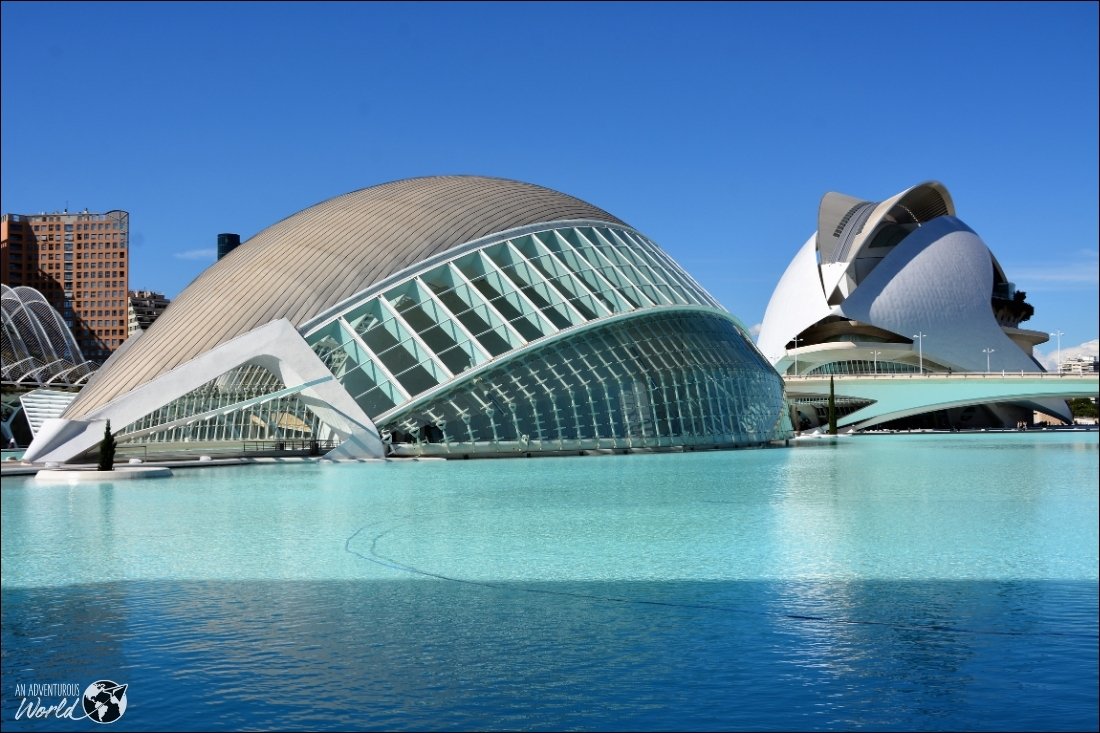
Exploring underground caves by kayak, soaking in hot springs and seeing Roman ruins – these are the best day trips from Valencia!
Madrid food: what to eat in madrid, spain.

Wondering what to eat in Madrid? Whether it’s a classic huevos rotos to traditional cocido madrileño, here is the best of Madrid food!
Barcelona food: what to eat in barcelona.
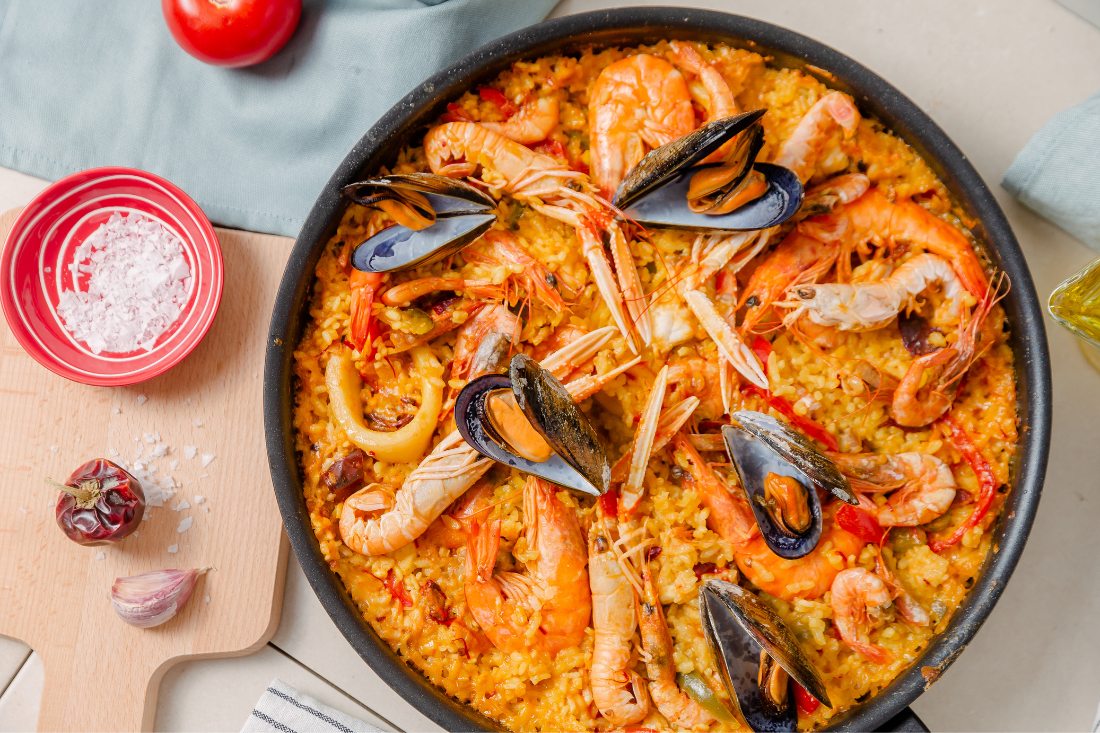
From Jamon Iberico to seafood paella, the Barcelona food scene is just unbelievable. With so many delicious dishes, this is what to eat in Barcelona!
12+ best things to do in barcelona in winter.
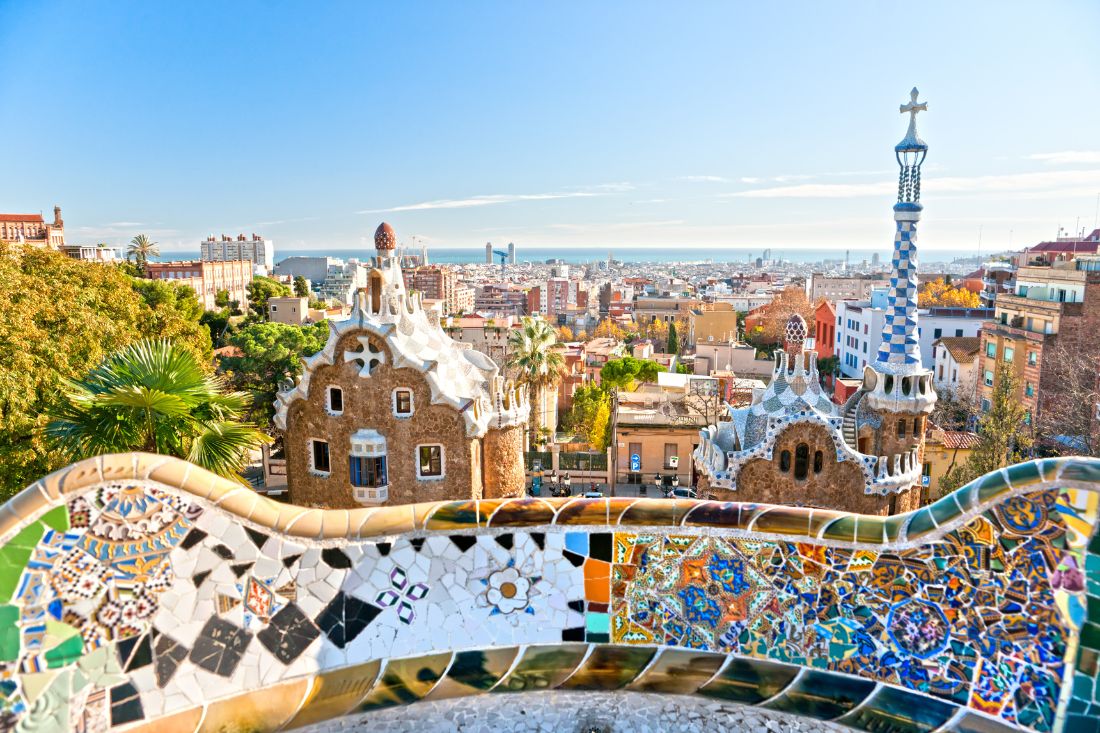
Chomping on calçots, soaking in thermal baths and visiting Christmas markets: here are the best things to do in Barcelona in winter!
12 best boutique hotels in lanzarote.
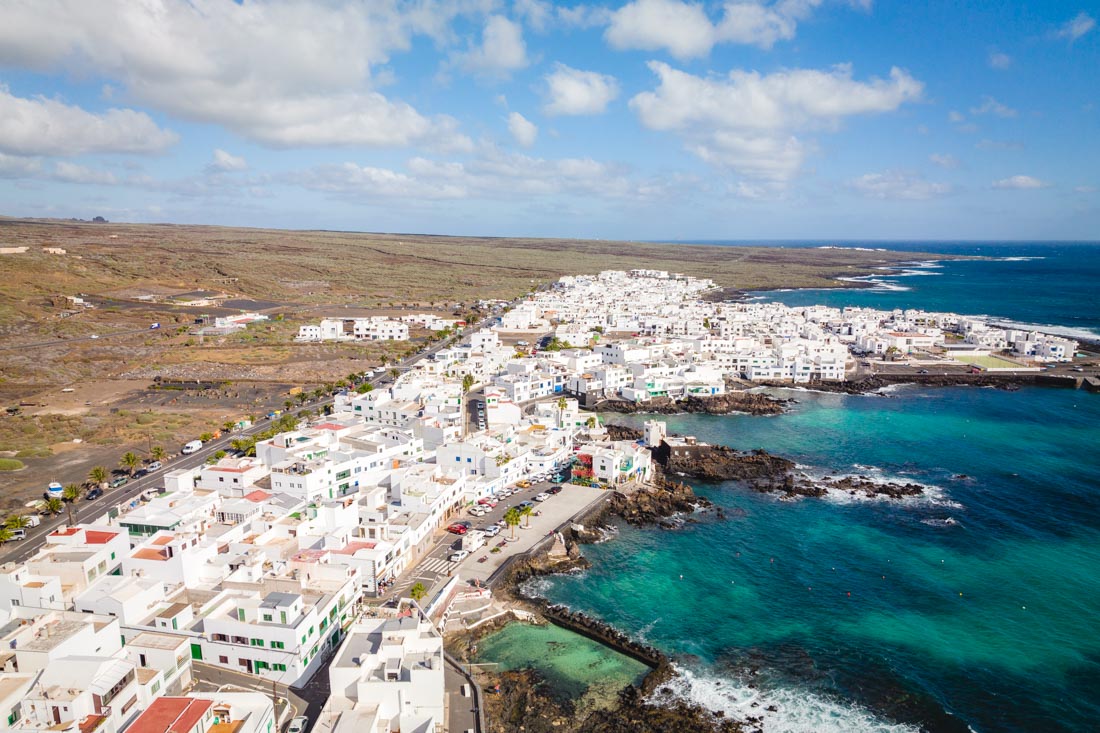
Planning a trip to Lanzarote? From wooden domes and quaint farmhouses, to adults only retreats, here are the best boutique hotels in Lanzarote!
3 days in san sebastian, spain.
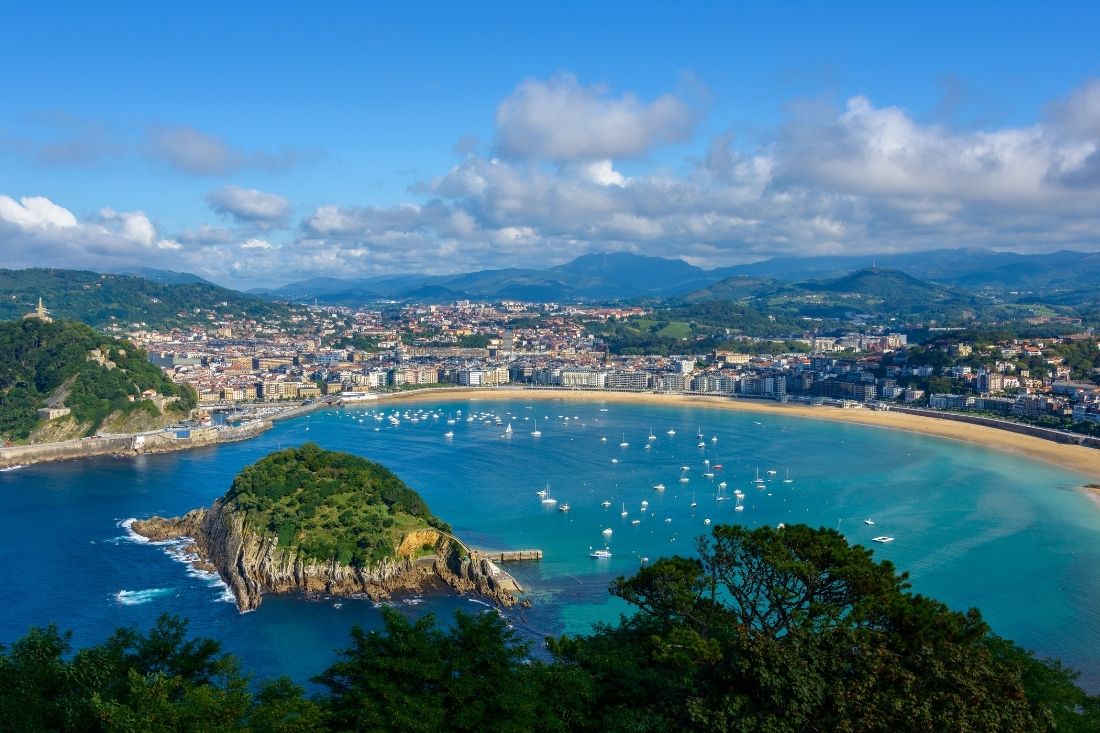
Looking for the top things to do in San Sebastian? From cooking classes to food tours, this is how to have the best 3 days in San Sebastian!
The ultimate guide to playa del papagayo, lanzarote.
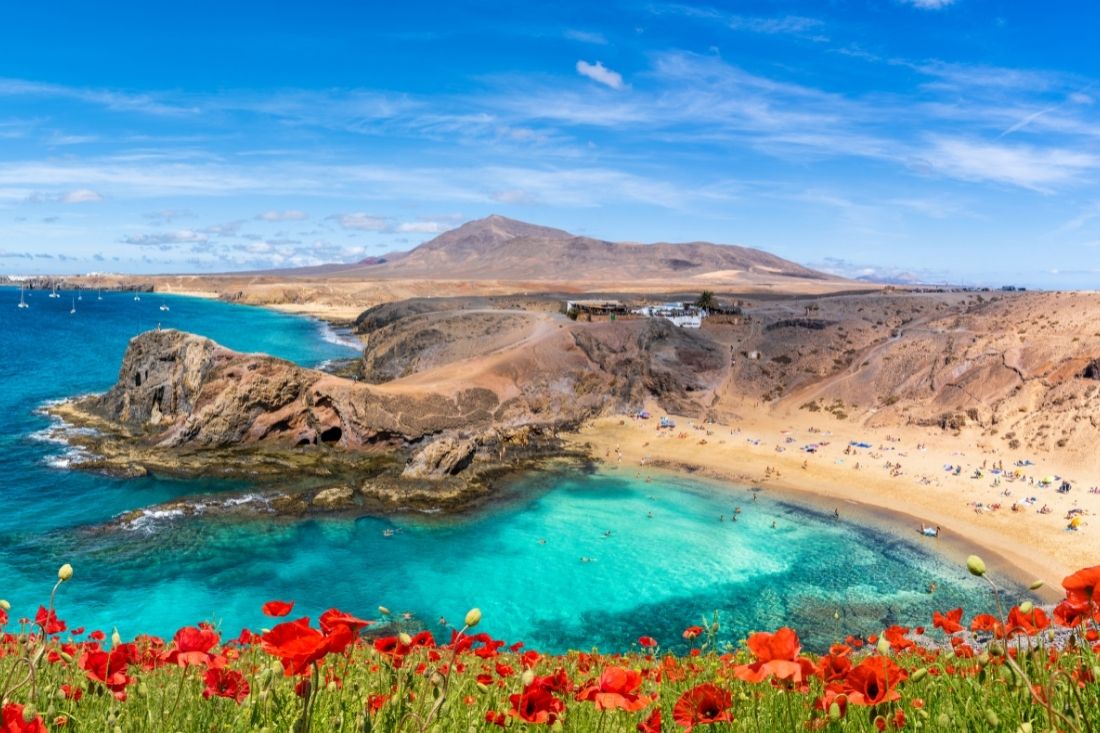
Looking for the best beach in Lanzarote? Then look no further than Playa del Papagayo! This guide will tell you everything you need to know about this beautiful beach!
The ultimate guide to the best architecture in valencia.

Are you looking for the most beautiful buildings in Valencia? Then check out my guide to the best architecture in Valencia including where to go!
The ultimate guide to buggies lanzarote.

Are you looking at booking a buggy experience in Lanzarote? From what to wear to other top tips, this is the ultimate guide to Buggies Lanzarote!
The ultimate guide to cueva de los verdes, lanzarote.
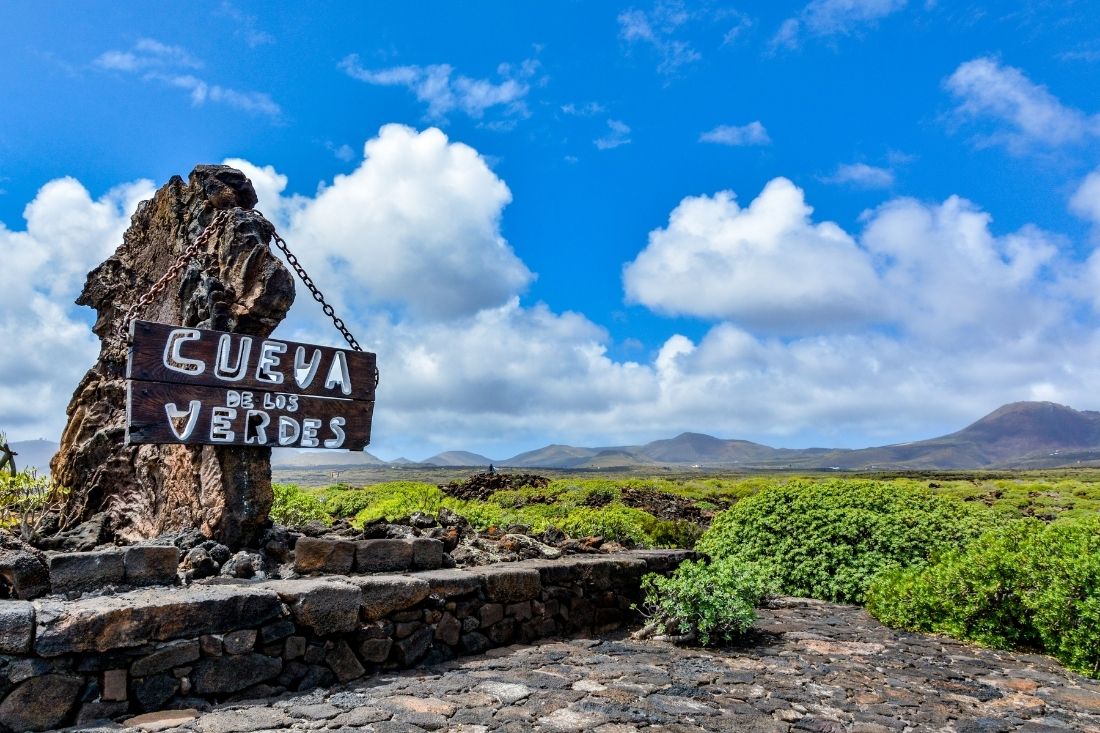
Planning on visiting Cueva de los Verdes? From opening times to ticket prices, this is the ultimate guide to these caves in Lanzarote!

Spain Travel Guide
Looking for an in-depth Spain travel guide ?
Then you’re in the right place!
Spain is a bucket list destination for so many travelers around the world for its rich history, incredible sights, and gorgeous environment. In fact, it was ranked the second most visited country in the world by the United Nations World Tourism Organization, right behind neighboring France .
Once you start to research this country, it’s easy to see why it’s so popular. From adventurous hikers to art lovers to foodies, there’s something for everyone in Spain.
While Spain is full of great individual destinations like Barcelona , Madrid and Sevilla , Spain makes for an excellent road trip.
You can circle around the country, visiting cities from Zaragoza to Cordoba over the course of three to four weeks.
But if you’re time is limited, it might be easier to stick to one section of this vast nation.
Drive through northern Spain from Barcelona to the Basque Country to get a taste of the many unique cultures that make up Spain. Or travel through southern Spain and explore the medieval architecture of Andalucia and the Sierra Nevada mountains.
Not feeling a full road trip?
Plan some day trips out to the countryside around your main destination city! Your options are endless.
Spain is also so much more than the mainland on the Iberian Peninsula. The country also consists of two groups of islands:
The Balearic Islands in the Mediterranean and the Canary Islands off the coast of North Africa. Both offer some of the best beaches in the world and have cultures all their own.
The Balearic Islands are home to the notorious party island of Ibiza but if you’re not down to party until the sun comes up, you can enjoy the laid-back beaches of Formentera or the caves and waterfalls of Majorca .
The Canary Islands also offer active travel adventures in nature and gorgeous beaches where you can get some much-needed rest and relaxation.
Plus Spain’s relatively low crime rate makes it a great destination for solo female travel , both on the mainland and the islands.
Keep reading to dive into resources that will help you with planning a trip to Spain in Europe.
Note: This ultimate guide to Spain travel contains affiliate links to trusted partners!

Use this Portugal travel map to begin planning your trip to this incredible country!
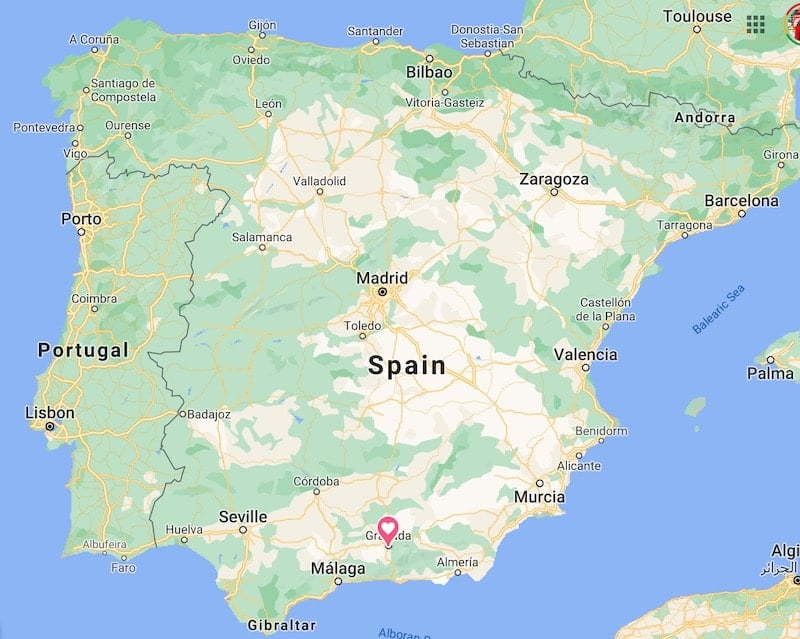
Click here for an interactive Google Map version of the above graphic.
Where To Go In Spain
Wondering where to travel in Spain ? These guides can help!

8 Secrets To Traveling Madrid On A Budget

The Alternative Traveler’s Guide To Barcelona, Spain

Things To Do In Majorca Besides Partying

24 Hours In Sevilla, Spain
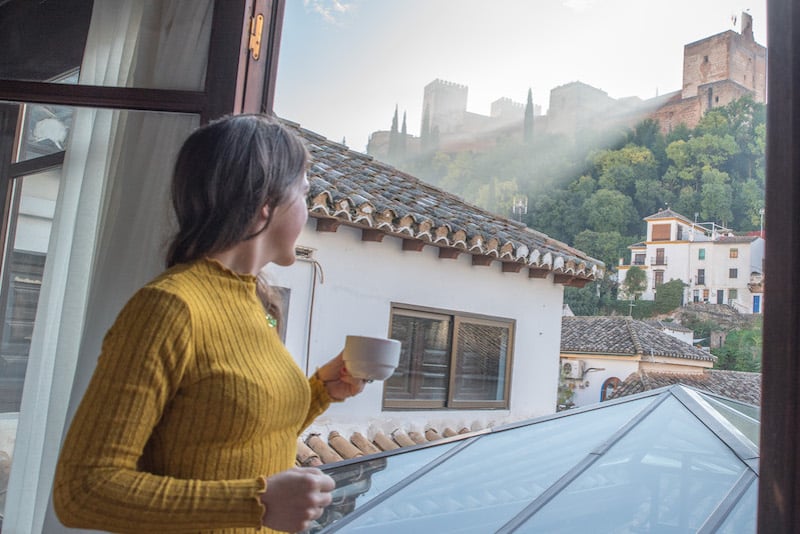
Solo Travel In Spain: The Ultimate Guide (With Map!)
Granada Travel Guide
Looking for a Spain guide focused on Granada? Check out:

14 Top Things To Do In Granada, Spain (Beyond The Alhambra)
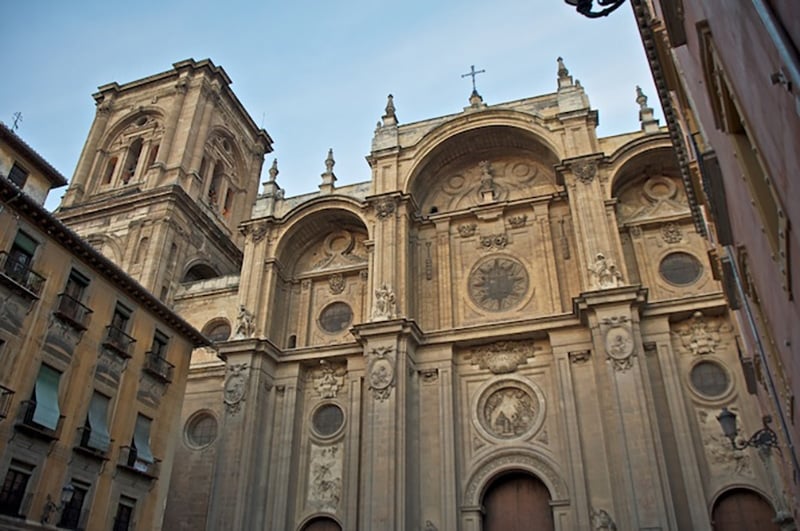
Spain On A Budget: Granada For less Than $25 A Day
Experiences In Spain
Check out this Spain travel information to learn about incredible local experiences!

A Guide To Spanish Fiestas In Benidorm

How Hiking The Camino Helped One Woman Heal & Grow
Best Spain Tours
Explore local culture with a Spain tour guide through these unique excursions:
- Kayak Safari with Dolphins and Turtles in Guaza from Arona
- Interactive Spanish Cooking Experience with Delicious Food in Barcelona
- Fast Track Sagrada Familia Guided Tour in Barcelona
- Hot Air Balloon Ride Over Toledo or Segovia with Optional Transport from Madrid
- Mallorca in One Day Sightseeing Tour with Boat Ride and Vintage Train from Playa de Palma
- Authentic Valencian Paella Workshop, Tapas & Visit Ruzafa Market from Valencia
- Tangier Day Trip from Seville
- Paragliding Epic Experience in Tenerife with the Spanish Champion Team from Adeje
Renting A Car In Spain
Need a rental car for your Spain trip?
Use Discover Cars to quickly compare your car rental options.
Spain Train Travel
Getting around Italy by train, bus, or ferry?
Omio is a must! I use this tool for all of my public transportation needs when traveling Europe.
The site is straightforward and user-friendly — and you can pre-book your tickets in advance at a discount.
They even offer flight and car deals!
Spain Hotels
Click here to browse the best Spain travel hotels!
Prefer self-contained stays?
Click here to check out unique local rentals!
You can also use this map to search for local stays:
Spain Travel Insurance
It doesn’t matter if you’re traveling solo or with a group on a Spain tour. When visiting Spain — or any other country in the world — make sure to get travel insurance to protect your health and safety.
In my opinion, the best travel medical insurance for travelers is SafetyWing as they’ve got a large network and offer both short-term and long-term coverage — including coverage if you’re traveling for months as well as limited coverage in your home country).
Additionally, SafetyWing is budget-friendly and offers $250,000 worth of coverage with just one low overall deductible of $250.
With coverage, you’ll have peace of mind as you embark on your Spain travel itinerary.
Click my referral link here to price out travel insurance for your trip in just a few clicks .
Spain Travel Guide FAQ
Below, find answers to frequently asked questions about traveling in Spain .
Q: What do I need to know before traveling to Spain?
If you’re looking for the best places to visit in Europe , Spain should definitely be on your list!
One thing you may encounter during your trip to Spain is a totally different daily schedule than you may be used to in your home country. People tend to eat later in the day in Spain, with lunch usually taking place around 2pm and many Spaniards starting dinner around 9pm or 10pm.
Many restaurants don’t even start serving dinner until around 8pm. Some tapas at a bar can hold you over if you’re hungry but be prepared to eat later than usual.
You’ve also likely heard of the siesta , a daily mid-afternoon break. While not every Spaniard actually takes a nap between 2pm and 4pm, most businesses close during this time, so always check a business’s operating hours before heading out.
Also worth noting is the fact that Spain is a multilingual country. Spanish is the nation’s official language and the one you will likely encounter the most during your trip but there are also several regional languages spoken throughout the country.
Catalan is spoken primarily in Catalonia, parts of Valencia, and the Balearic Islands. You’ll see many official signs in both Spanish and Catalan when visiting these areas and particularly in Barcelona.
Along with Catalan, Basque is an official language of the Basque Country and Navarre, Galician is spoken in Galicia, and Occitan is spoken in parts of Catalonia. You don’t need to be fluent in these languages to visit any of these places but knowing a bit of Spanish is helpful, especially if you’re venturing out of the major cities.
Much of the country also goes on holiday during the month of August, making it one of the worst times for travelers to visit Spain. Many businesses close for the entire month, particularly outside of the major cities. Sure, you’ll probably still be able to visit La Sagrada Familia, but you may not be able to find somewhere to eat lunch after your tour.
One other benefit of traveling outside of August:
Temperatures can reach up to 100 degrees Fahrenheit in certain parts of the country. Unless you enjoy sweating your way through a country, you’re probably better off finding another time to visit.
Q: What are the best places to visit in Spain?
Many of Spain’s major cities top the bucket lists of travelers around the world — and for good reason. Spain’s cultural capital of Barcelona is a world-class city full of incredible art, architecture, and nightlife. Barcelona is home to Antoni Gaudi’s unfinished masterpiece, La Sagrada Familia, a truly unique basilica featuring sculpted facades that tell Jesus’s story from birth to death, breathtakingly colorful stained glass windows, and towers that offer some of the best views of the city.
The church as been under construction since 1882 and is expected to be completed in 2026, but you can explore this incredible sight any time.
Aside from La Sagrada Familia, you can see more of Gaudi’s work at Park Guell and Casa Mila. Here, you can also visit the Picasso Museum, home to many of the iconic artist’s early sketches and famous works like Las Meninas Cannes .
You can also party into the wee hours in Barcelona at some of the city’s beachside clubs or try every tapas dish available at a local wine bar.
Madrid, the country’s capital, is also a must-do for visitors to Spain. Home to the world-famous Prado Museum, classic plazas and incredible palaces, Madrid is a modern city with a very rich history.
While away the day at the Buen Retiro Park or do some serious shopping on la Gran Via, the city’s main destination for shops and restaurants. From Madrid, you can visit Toledo, named a UNESCO World Heritage for its architecture that dates back to medieval times.
If you’re looking to get out of the cities, Spain has plenty of places to explore. Wine lovers should visit Spain’s Rioja region, home to the red wine of the same name and more wineries and restaurants than you can count.
Fueled by all that delicious food and drink, you can hike or ski the nearby Cantabrian Mountains for a different taste of the region.
More of a beach lover?
Spain is home to several awesome beach destinations like Costa del Sol in Andalusia and San Sebastian in the Basque Country.
You can also escape the mainland entirely and visit one of the Balearic Islands in the Mediterranean or the Canary Islands off the coast of North Africa. Alternatively, you can opt for one of the many yoga retreats in Mallorca !
Q: What is the best way to travel between cities in Spain?
One of the best ways to get around Spain is via train thanks to the country’s robust transportation system. RENFE, Spain’s national train system, services most of the major cities and suburbs, as well as parts of France and Portugal.
The AVE, or the high-speed train, is probably the most efficient way to get between major cities without dedicating an entire day to travel. Train fares are reasonably priced but be sure to book in advance to guarantee your spot on the high-speed trains and lock in the best rates.
The country also has an extensive bus system but keep in mind that Spain’s vast size can lead to longer trips between destinations.
Finally, you can find low-cost domestic flights between major cities and destinations like the Balearic Islands on carriers like Vueling.
Q: Is Spain expensive to visit?
Your budget for your trip to Spain will definitely depend on your itinerary. Things in major cities like Barcelona and Madrid tend to cost more than they do in smaller cities, so keep that in mind when creating your travel budget.
The average traveler spends about $136 USD per day in Spain on accommodations, food, transportation, activities, and more. You can cut down on costs by ordering the daily specials at restaurants, considering hostels or Couchsurfing for accommodations, and investing in a city pass to save money on attractions and transportation in certain destinations.
Q: Is Spain safe to travel?
Spain is generally quite safe for travelers. Violent crime is rare but street crime and scams have increased in recent years, particularly in tourist-heavy areas.
To avoid pickpocketing and petty theft, make sure you’re always aware of your surroundings, don’t wear anything too flashy, keep any valuables close and out of sight, and invest in some pickpocket-proof clothing .
Common scams in Spain include women offering flowers in the street in exchange for a few Euros, people offering to clean bird poo off your shoulder (yes, for real), and Metro delays that may separate you from the rest of your travel group. Card skimming is also common at ATMs and businesses so always keep an eye on your card and avoid any machines that look unofficial.
Sexual assault while traveling is also rare in Spain but unfortunately does happen. If you’re going out at night, always keep an eye on your drink and don’t accept drinks from strangers. If you do go out alone at night, get a taxi back to your accommodation if it’s more than a block away.
Q: How long can a tourist stay in Spain?
Most tourist visas will allow you to stay in Spain for up to 90 days without engaging in any professional activity during your stay.
Q: Do I need a Spain travel visa?
Travelers from the United States, the United Kingdom, Australia, Canada, Schengen Area member countries , and several other countries do not need a visa to visit Spain for a period of fewer than 90 days.
It’s recommended to view your country’s Spain International Travel Information page for the most up-to-date information on entry and exit requirements. You can also contact the Consulate General of Spain.
Q: When is the best time to visit Spain?
You’ll find great weather May through September, though traveling outside of summer can mean less intense heat, fewer crowds, and better deals.
Q: Where is Spain?
Spain is located in Southwestern Europe. Mainland Spain is bordered by the Mediterranean Sea in the south and east, Portugal and the Atlantic Ocean in the west, and France, Andorra, and the Bay of Biscay in the north.
Q: Are credit cards accepted in Spain?
Credit cards — particularly Visa and Mastercard — are widely accepted around Spain, though it is always wise to carry some cash for smaller establishments and in case of emergency, as well as in more rural destinations.
Q: Can you drink the tap water in Spain?
In most places, it is safe to drink the tap water in Spain but check with your hotel to be sure.
Q: What is the local currency in Spain?
The local currency in Spain is the Euro (€).
What would you add to this Spain travel guide?

Enjoyed this ultimate Spain travel guide? Pin it for later!
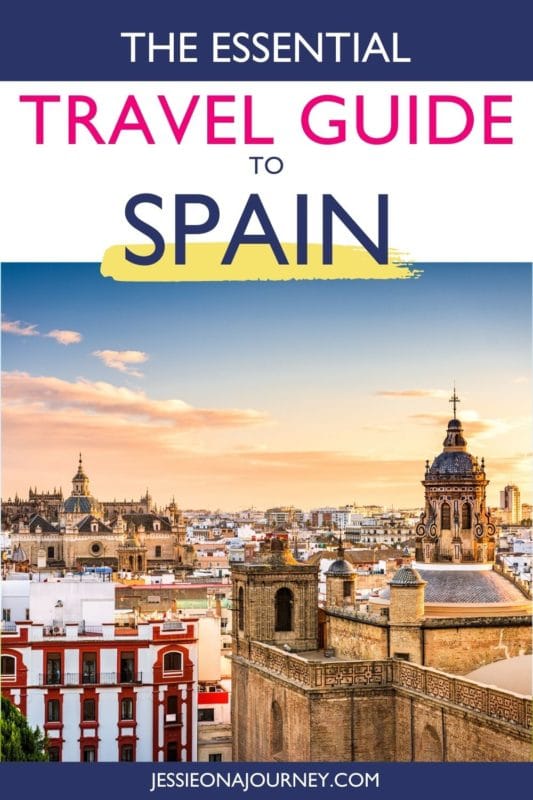

Spain Travel Blog
With its magnificent beaches and spectacular mountains, Spain, and its people’s dedication to living a good life should be a message to all of us.
Surrounded by history dating back to the Phonecians and Romans, it is hard to travel anywhere in this sun-baked country without being reminded of who was there before.
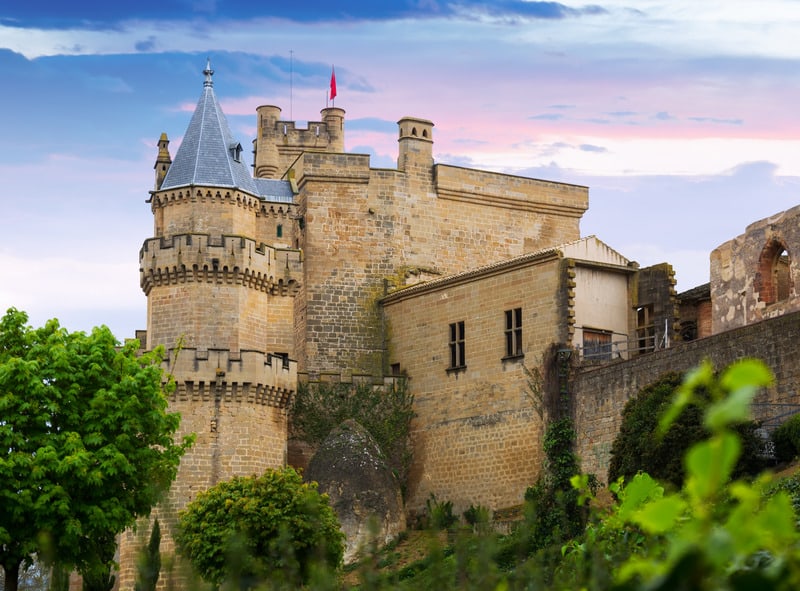
Proud of their history and excellent cuisine, Spaniards are a very family-oriented people who still come home each day for lunch with their loved ones.
While a castle may dominate each hilltop, Spain lives very much in the present, which is why the word”fiesta” is known worldwide.
No matter what type of vacation you are looking for, be it sea, sun, culture, or adventure, Spain delivers in every category.

Useful Travel Information About Spain
⚘ Avoid tourist traps and get the customizable “Spain Like a Local” itinerary. – Get it here ✈ Book cheap flights to Spain with Skyscanner ✔ Book tours in Spain with Viator ➳ Find the best hotels in Spain with Trivago ❖ Rent a car with the best discounts with DiscoverCars ☘ Get the best discounted outdoor gear (outlet) with REI.com ✎ Never leave without travel insurance . I get mine at SafetyWing . It is easy to set up, cheap and reliable. $ Withdraw money without hidden fees and avoid exchange rates with Wise (you’ll get a free card on top!)
Avoid tourist traps with the “ Spain Like a Local ” itinerary:
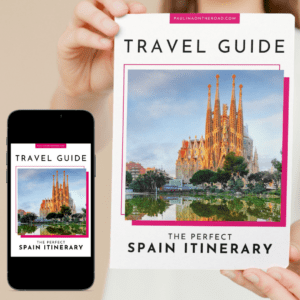
Good to know before traveling to Spain
Capital: Madrid
Currency: EUR
Power voltage and socket type(s): 230V, plug types F and C.
Official religion(s): 60% of the population is Roman Catholic, followed by atheist and agnostic citizens
Official language(s) and general knowledge of English: Spanish is the official language, followed by regional languages like Catalan and Basque. English is semi-widely spoken.
Main tourist areas: Barcelona , Mallorca, Andalusia , Canary Islands , Valencia , Marbella, Tenerife
Most famous places in Spain
Arguably the greatest Moorish treasure, the Alhambra Palace in Granada, is a testament to how advanced a civilization the Moors were. The city of Granada is also the birthplace of flamenco, so be sure and see this unique art in its purest form. – Buy tickets here
Golden Triangle of Art
Composed of three of the world’s most famous art museums, the Prado, Reina Sofía, and Thyssen-Bornemisza are all located in the center of Madrid within walking distance of each other. While visiting the museums wander through the Retiro Gardens and grab a bite to eat. – Get Skip-the-Line tickets here
Sagrada Família
Located in the Eixample district of Barcelona , Antoni Gaudí’s unfinished cathedral is a masterpiece of Spanish Modernist architecture. It is one of the most famous buildings in Barcelona . Stroll along the city’s popular Rambla and pop in the Boqueria indoor food market. – Get fast-track tickets here
The Guggenheim
Designed by world-renowned architect, Frank Gehry, the Guggenheim Museum in Bilbao is as spectacular on the outside as the art collection within. While visiting Bilbao, be sure and sample some of the region’s famous pinchos .
The Aqueduct, Segovia
Dating back to the first century, the Roman stone aqueduct in Segovia stretches for nearly nine miles before it reaches the city. The ancient waterway is one of the best-preserved Roman ruins in Spain. – Book a day trip to Segovia
Accommodation in Spain
With Spain being such a popular tourist destination, finding a place to stay that matches your budget will not be a problem.
Whether it is a hip, trendy hostel in the center of the city, or a luxurious beach resort in Marbella, when it comes to accommodation, Spain will never disappoint.
Budget Solo Travelers
Camping in Spain is prohibited except on licensed campsites, which are mostly on the coast. Pitches during the peak summer months cost around 20€ ($23.60) and include the use of all the campsite facilities. Just about every city in Spain has a hostel where you have the option of a shared dormitory.
Style rooms or a private room with a shared bathroom. Prices vary from city to city, but you should be able to get a bed for less than 16€ ( $19). – Check hostels here
Nearly all mid-range hotels in Spain are family-run and often located in old historic buildings. In recent years, many newly renovated boutique-style hotels have opened, and while they might look appealing, the price tends to be higher than an old-fashioned 3-star establishment.
In Madrid and Barcelona, you can expect to pay a premium while in other parts of Spain, you can expect to pay around 35€ ($41) per night.
Spain’s government-owned Parador Hotels are located in old historic buildings and castles, making them unique places to stay. Prices too are reasonable at between 100€ and 300€ ( $ 118 and $354) per night. – Check the best Paradores
Other Accommodation Options
Hotels in beach resorts are plentiful, with many now offering all-inclusive packages for families.
Airbnb is also popular in Spain and is an excellent option for families or people traveling with friends.
Do I need a visa to travel to Spain?
Fast-Track: Get your Spain Visa in advance
If visiting from North America , Australia, New Zealand, or Europe , no visa is required, and you are allowed to stay in the country for up to 90 days.
From anywhere else, contact your nearest Spanish Embassy or Consulate for more information.
Best time to visit Spain
Depending on what you want to see and do, there is never really a wrong time to visit Spain, especially if it is for a city break in Barcelona, Madrid, Malaga, or Seville.
In Spain, summer can be quite hot and especially so during July and August in the south of the country.
Spring and early autumn are particularly lovely with November and April the worst months for rain.
Transportation in Spain
Where to buy transport tickets: Omio
Flights: Traveling in Spain is a pleasure, with the country having an extensive motorway network and a high-speed train system. – Check flights here
Train: For cities and towns not on the rail network, intercity buses are available. – Get tickets here
How to get to Spain
If you are traveling from within Europe, low-cost airlines like Ryanair serve nearly every Spanish city and resort.
You can also go to Spain by train from France and Portugal or travel to Spain by ferry from the United Kingdom. All European countries have direct flights to Spain.
How to get around in Spain
Car Rentals: All the global car hire firms are represented at Spanish airports, along with a few local operators. – Get the best deals here
Train: As we already mentioned, Spain’s high-speed AVE trains are an excellent way to get around, and national rail operator Renfe sells a select multi-city railcard for people visiting from overseas. – Buy train tickets here
Taxi & airport transfers: Public transport in Spain is very affordable and most people’s way of getting from A to B. Taxis can be found at strategic locations and all work using a taximeter. Expect to pay more at night and on weekends and holidays. – Check transfers here
Picking up or dropping off at the airport also has an additional charge. – Book airport transfers in advance
Best Food in Spain
While the food in Spain varies slightly from region to region, generally speaking, it is always of a high standard. Spaniards love to eat with the seasons, and it is reflected in the menus at restaurants.
When you arrive in Spain, throw away your old eating habits and learn to eat like a Spaniard.
For breakfast, locals have a cup of coffee and a toasted roll topped with olive oil or butter.
For lunch which happens to be the main meal of the day don’t expect to find a restaurant open before 14:00 as that’s when the Spanish like to eat lunch. Started by Franco as a way to ensure workers got a proper meal, restaurants were all required to offer a three-course menu del dia at a price people could afford. Today you will see the menu written on blackboards with the price. Steer clear of the tourist areas and look for a place full of locals.
In the evening it’s tapas time! Spain’s tasty little morsels of food are enjoyed with a beer or glass of wine.
Before heading to Spain make sure to know about the best snacks in Spain and what to eat in Spain . Enjoy!
Typical food in Spain
You could not visit Spain without having what most people consider as being the national dish. Originally made with rabbit and garrofó beans, Paella has evolved into being a seafood delicacy everyone has on holiday.
Typically away from the beaches, it is now made using chicken, Valencian round rice, and saffron. – Get paella ingredients here
An Andalusian summertime favorite, Gazpacho is a cold soup made using tomatoes, peppers, garlic, and olive oil.
Jamón
A delicacy around the world, Spain’s famous cured ham comes in two distinct varieties. The least expensive is called Jamón Serrano, while the most costly Jamón Iberico comes from black pigs fed on acorns. – Get Spanish ham here
The humble Spanish omelet or tortilla known in Spain is a simple dish of eggs and potatoes made with or without onions.
Typically found on nearly every tapas menu, croquetas are mashed potato and either cod, ham, or mushrooms in a bechamel sauce covered in breadcrumbs and deep-fried. It’s one of the most popular Spanish snacks .
Best Things to do in Spain for Outdoor travelers
The sierra nevada.
Located close to Granada, the Sierra Nevada mountains are home to the most southerly ski resort in Europe. With a season that stretches into April, this is one of the few places where you can ski in the morning and go swimming in the sea after lunch. – Get tickets here
Caminito del Rey
Aptly named “the king’s walkway” following a royal visit, the Caminito del Rey is a narrow path built on a cliff hundreds of feet above a river.
Once exclusively used by workers to get to a hydroelectric power plant, the track was closed for ten years following several deaths. Now fully restored if you have a head for heights, it’s a unique adventure.
The Caminito del Rey is located near the town of El Chorro in Malaga. – Get tickets here
Located in Spain’s Basque Country not far from San Sebastian , Zarautz is the home of Spanish surfing. While decent waves can be had year-round, the waves are particularly challenging during the winter when the large Atlantic swells roll in.
Tenerife star gazing
Teide National Park is home to Spain’s highest mountain, Mount Teide, an active volcano at 3,718 meters (12,198 ft). It is also one of the best places to see the stars. With no ambient light for miles and clear skies, a visit here will change the way you see the world. – Get tickets here
Running of the bulls
Every year during Pamplona’s San Fermín festival, young men from around the world run with the bulls. Perhaps inspired by Ernest Hemingway’s writing about Spain, running with the bulls can be dangerous.
Camino de Santiago
Camino de Santiago or the “Way of Saint James” was one of the most important Christian pilgrimages during the later Middle Ages.
Today many people still hike the trail, and you do not have to be religious to enjoy it.
Sea Kayaking
Rent a sea kayak from Burriana beach in Nerja and paddle along the cliffs to Maro. During the trip, you will discover secret coves, caves, and even cascading waterfalls where rivers empty into the Mediterranean Sea. The entire area is also a Marine Reserve where fishing is banned, making it ideal for snorkeling.
Nerja is located on the Costa del Sol an hour east of Malaga. It’s the perfect place to rent an inflatable kayak !

Last articles about Spain:

10 Best Boutique Hotels in Tenerife
A guide to the best boutique hotels in Tenerife that are just perfect Thank you for visiting my guide on the best boutique hotels in …

14 Most Famous Landmarks in Spain
Here’s a list of famous landmarks in Spain you should not miss during your visit! Step into the captivating world of the most famous landmarks …

What to do in Tenerife in May – 10 Fun Things!
How amazing can a Canary Island tour get in the early summer? Let’s glimpse Tenerife, the largest and most visited island of the Canaries. But …
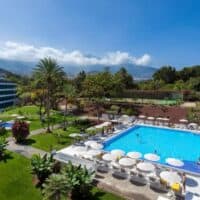
12 Best Puerto De La Cruz Accommodation Options
A guide to help you choose your Puerto De La Cruz accommodation according to your needs When you travel Tenerife, you’d want to know your …

10 Most Romantic Hotels In Tenerife
An accommodation guide that contains some of the best romantic hotels in Tenerife When it comes to igniting that loving spark, there’s nothing quite like …
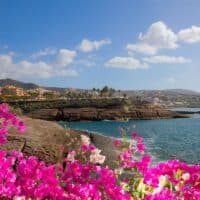
What to do in Tenerife in April? 16 Fun Ideas!
Not many tourists travel to Tenerife in April, but if you’re like me, who loves traveling when the weather isn’t scorching hot, and the crowds …

Where To Stay In Tenerife In April [12 Most Amazing Hotels]
Eager to explore travel Tenerife‘s vibrant allure? April sets the stage for an idyllic escape on this beautiful Canary Island. With its diverse landscapes, from …
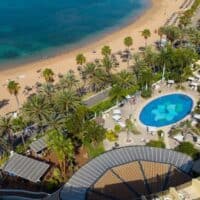
Where to Stay in Tenerife South [Best Spots!]
Here’s a great guide on where to stay in Tenerife South for your next island vacation! Tenerife is one of my favorite travel destinations – …
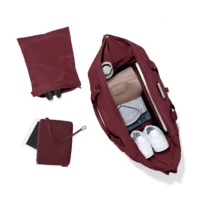
What to Wear in Tenerife [Every Season!]
Here’s a thorough guide on what to wear in Tenerife for every season you visit! Every traveler knows that one of the most important things …
Where To Stay In Tenerife in March [11 Amazing Hotels]
A guide that answers the question of ‘Where To Stay In Tenerife in March’ for a holiday to remember So, you’ve decided to escape the …

Welcome to Spain Travel Blog & Planning Guide
Heading to Spain, and don’t know where to start? Don’t worry, we got you covered! First off, we are so excited for you!
Spain is one of the amazing destinations in Europe . Filled with iconic Gaudi landmarks, Andalusian cultural nuances, Pyrenees, and the amazing coastline, Spain will not disappoint you!
Spain Travel Blog: City guides, itineraries & tips
Discover the best of Spain through our itineraries, detailed travel guides, and tips!

Disclosure: This post contains affiliate links. If you click one of them, we may receive a small commission at no extra cost to you.
Quick Facts: Ultimate Guide to Spain Travel
✔️ Officially Known as – Kingdom of Spain (or Reino de España in Spanish)
✔️ Capital City – Madrid
✔️ No of Provinces or States – 50
✔️ Population – 47.35 million (2020)
✔️ Spain Tourist Visa – Schengen
✔️ EU Member – Yes
✔️ Currency – Euros
✔️ Language – Spanish is the official language, also known as Castilian (English is spoken)

Getting ready for Spain – Travel Visa
Spain is located in Southwestern Europe. It is a country on the Iberian Peninsula and is blessed with a Mediterranean coastline of 4,964 kilometres (3,084 miles).
It shares a border with Portugal, another beautiful European country.

Spain is a member of the European Union, and belongs to the Schengen zone of countries, and follows the Schengen Agreement. So,
🗸 If your passport is not visa-exempt, then you will require a Schengen visa to enter and visit Spain
🗸 EU Nationals (European Union) countries do not need a visa
🗸 For citizens of the United States and Canada , no visa is required for staying up to 90 days in Spain for tourism purposes
Flight Tips for Spain
There are about 59 airports in Spain, and the Madrid Barajas International Airport is the largest and busiest airport in the country.
Madrid, the capital city of Spain, and Barcelona are great options to fly into. Depending on your departure airport, you can easily find direct flights leaving from North America.

Once you are in the country, you can easily make connections from one of the major cities to the various small towns, beachside resorts, and islands.
Spain has their own network of high-speed trains, regional trains, and buses, which you can rely on.
When traveling from within the European Union, there are a ton of budget airlines options available from RyanAir, Vueling, TAP Air Portugal, etc.
Iberia, or Líneas Aéreas de España is the national carrier of Spain.
Best time to travel to Spain
Spain experiences 4 seasons – spring, summer, autumn/fall, and winter. Although you may not notice heavy snowfall in most parts of the country, except for northern Spain – the dip in temperature will signal the change in seasons.
Here are the seasons, and months in Spain
- Spring: March to June
- Summer: June to September
- Autumn/fall: September to December
- Winter: December to March
The official dates do overlap and crossover into other months.

As mentioned the variations in temperatures change as you move from south to north, and also from inland to islands!
🗸 Spring and Fall Months – Spring and fall months are considered to be the best time to visit Spain. This is great because of the pleasant temperatures – you can easily wander outside and enjoy the various attractions and landmarks.
During this time, destinations in southern Spain like Seville, and Cordoba won’t be super hot (rather it will be bearable). Places in Catalunya will experience rains in the fall, but there are tons of festivals happening at this time as well.
There is no offseason as such in Spain. Based on the number of visitors there is a high and low season, but even on fall and spring days, we have seen people line up at attractions. We do recommend booking tickets online for major landmarks.

🗸 Summer Months – The summer months are super hot in Spain, particularly the months of July, August, and September. In July, you can expect average temperatures to be around 32 degrees Celcius (89 F). In the evening, the temperatures are cooler and sit around 18 degrees Celcius (64°F).
🗸 Winter Months – Officially, winter in Spain kicks off around 22 December and ends in March. This is also a good time to visit. The temperatures in December and January are crisp but not SUPER cold so you don’t have to wear multiple layers.
A nice warm coat and a scarf with winter boots are perfect outfits to enjoy the weather, Christmas markets, and festive cheer + shopping in the cities.
Rains are also uncommon in the winter. There are a few ski resorts in Spain that you can visit. Be sure to pack ski gear, if you do so.
Also pack extra woolens when visiting northern Spain, the Pyrenees, Sierra Nevada, etc.
Winter is also a great time to visit for those who wish to escape the snow. The Canary Islands are the answer for soaking in the winter sun!
Our favorite month to visit Spain is late September to October. April and May are not bad either (spring-summer crossover months).
Seasons/Temps
- Best time to visit: September – mid-October, April – May
- Avoid: July – August
- Winter Sun: December – January
Average Temperatures in Barcelona & Seville (popular destination in North and South of Spain)
- Winters : 15 C/59.6 F (Barcelona)
- Winters : 16 C/61 F (Seville)
- Spring : 20 C/67 F (Barcelona)
- Spring : 22 C/72 F (Seville)
- Summer : 29 C/84 F (Barcelona)
- Summer : 36 C/96 F (Seville)
- Autumn : 23 C/73 F (Barcelona)
- Autumn : 26 C/76 F (Seville)
- Las Fallas: March in Valencia
- Semana Santa (Holy Week): Easter week in Seville
- Carnival : Easter
- Feria de Sevilla : April
- San Juan (Saint John’s Day): June
- San Fermin: July in Pamplona
- Tomatina Tomato Fight : August in Bunol
- Semana Grande: August in Bilbao
- National Day of Catalunya: September in Barcelona
- National Day of Spain: October
Festivals in Spain:
Spain celebrates traditional and religious festivals, national/regional days as well as cultural fests all year long. In the table above, you can find the popular festivals taking place each month.
National Day of Spain is celebrated every year on October 12, and there are festivities all across the country. Barcelona and various parts of Catalunya also celebrate the National Day of Catalunya in September. More about Barcelona in September

When it comes to religious and traditional festivals, Easter is the prime time to visit, particularly in the southern cities like Seville and Cordoba. Holy Week, Carnival, and Semana Santa are very popular.
You can also join and participate in unique festivals like the La Tomatina (Tomato Flight) in Bunol. And Semana Grande in Bilbao in northern Spain.
Don’t forget the Christmas Markets in November and December, so when you do plan to visit Spain, you can check off some of these festivals.
What to pack for Spain? Spain Packing List
Generally speaking, the vibe in Spain is very casual and inviting. Locals dress stylishly and smartly like in most European cities. One can wear shorts and nice tops in cities and beaches.
Having said that, Spain’s dress code is a little conservative in nature too. Like there are dressing norms for religious sites and certain places. Spanish women wear modest clothing, without being too flashy.

Spanish men are also found to be well-dressed but in a very casual way. When visiting Spain, we recommend avoiding baggy pants, loose hoodies with loud logos!
Now depending on the month you are visiting, and the activities you will be undertaking your packing list for Spain will vary.
Summers are warm so carry airy and breathable clothing. Flowy dresses, tops, short or linen pants are good options. Comfortable walking shoes are a must plus a waterproof light jacket.
Autumn kicks in with moderate temperatures, and we recommend bringing in something warm (a scarf, cardigan, booties, etc) along with the summer clothes.
In the winter, a warm jacket or wool coat is a must. Add snow boots, a scarf, and a sweater for winter activities. In northern Spain, snow is common, so do carry your baselayers for layering and enjoying the snow.
Keep in mind that snowfall is very rare in a majority of Spanish cities.
In the spring months, temperatures are pleasant and are perfect for outdoor activities.
Here is your packing list for Spain
- Top: Long sleeve tops, shirts, blouses
- Nice sweater dress for dinners out (her, winter). Flowy dresses
- Bottoms: Fitted jeans, linen pants, shorts
- Shoes: Comfortable walking shoes, hiking boots (summer), booties (winter)
- Outerwear: Wool coat (winter). Light waterproof jacket (all year)
- Scarf (winter)
- Gloves (winter)
- Warm socks (winter)
- Beanie (winter)
- Lounge wear
- Sunglasses
- Toiletries : Moisturizer, sunscreen, toothpaste & toothbrush, shampoo, body cream, light make-up
- Your cellphone.
- Charger: Like this multi charging cable to power up multiple devices
- Universal travel adaptor: Europe uses a plug with two round pins (type C), unlike the flat ones in North America. Don’t forget to carry your universal adaptor
- Camera : Don’t forget your camera. We carry our Sony Mirrorless Camera and Sony A7iii.
- SD Card: To back up all the photos
- Laptop: Optional
- Passport: Your passport should be valid for at least 6 months from the date of arrival in Spain. The passport must be in good condition and not torn or tempered.
- Visa: If you require a Schengen Visa for Europe/Spain, do apply for it prior to your trip.
- Currency and Credit Cards : Don’t forget your credit cards, and currency
- Travel insurance (medical, trip cancellations, etc): You can get a quote in minutes from Worlds Nomad Insurance
- Transportation : City Pass, flight tickets, or any tour confirmation
- Hotels: Confirm hotel reservations, and save your emails or a screenshot of the booking email.
Read: What to pack for Barcelona in September
Budget for Spain Travel Tips
Spain is not super expensive like Switzerland or Iceland. In our experience, we were able to find hotels and nice restaurants (similar to what we do back home in Canada) in a mid-budget range in major Spanish cities, and also found affordable finds in southern Spain.

For us, we set aside a budget of $120 – $180 per adult which included the hotel (twin-share), day tour/pass, and food.
During our trips to Spain, we were eating out a lot. Southern Spain was very cheap, and we loved the tapas and bar hopping (with countless beers and coffee). If you are dining in fancy restaurants or in touristy areas, expect the prices to be higher.
You can also save money by picking up food and groceries at a store.
Shared accommodation in most popular Spanish destinations starts at $80 USD. Hostels are of course cheaper and you will find lots in Spain – that start at $30 USD and above.
On average, expect to spend around $2000 USD for 2 weeks in Spain – with food, transport and shared accommodation (flights and travel insurance are extra).
- Luxury : $300+
- Mid-Budget : $120
- Hostel : $26 (dorm)
- Restaurant : $20-60
- Fast Food : $10-20
- Day Pass : $5.70+
- Taxi: $7.50+ (is base)
- Car rental: $40/ day+
What to see in Spain? Best places to visit in Spain
The cultural landscape of Spain, along with its traditions and landmarks is diverse across the country. There is so much to do and see – here is our guide on the most beautiful places to visit in Spain
Add the following destinations to your Spain bucket list
🗸 Madrid – Madrid is the capital city of Spain, and also the most populous. The city is known for its historical buildings, the Royal Palace, markets, and parks. You can visit a lot of contemporary art museums, Renaissance architectural sites and enjoy a bustling nightlife with a host of great restaurants.
The heart of old Hapsburg Madrid is a must to explore.
Many travelers to Spain, wonder if Barcelona or Madrid is worth visiting. We recommend exploring both. You won’t be visiting Spain, just once – we are sure. So take the time to visit both.
Statistically, there are more metropolitan/contemporary galleries and city attractions in Madrid (versus Barcelona).
🗸 Barcelona – Barcelona is one of the first Spanish destinations that come to mind. And for good reasons.
Barcelona is home to architectural gems of Anthony Gaudi such as the Sagrada Familia, Park Guell, Casa Mila and Casa Batlló. There are also numerous green spaces, parks, and museums in the city that you must check out.

Do check out the Gothic Quarter, the popular La Ramblas, the Boquería market, and the Barcelona Cathedral, and the stunning coastline with the Barceloneta Beach close by.
Other things to see in Barcelona include – Picasso Museum, FC Barcelona, Port Vell, Born District, Bunkers del Carmel , and many viewpoints . Plus the nightlife in Barcelona is amazing!
🗸 Valencia – Valencia is one of the Spanish destinations that is still considered a hidden gem, as it is not super touristy still. But the city is home to many beautiful churches and many UNESCO World heritage sites.
Valencia’s City of Arts and Sciences is a must-visit, so do add it to your itinerary.
🗸 Seville – The capital of Andalusia – Seville, is one of the must visit places in Spain. From the iconic Real Alcazar Palace, Plaza de Espanya, and the largest Seville Cathedral with the Giralda tower, there are tons of attractions to visit in the city. Food or tapas in Seville is delicious and super affordable.
Read all about things to do in Seville here , and about day trips from Seville
🗸 Granada – One of our favorite Andalusian cities in Granada. Full of charming lanes and the iconic Alhambra makes Granada one of the must-visit destinations in Spain. With its Moorish influence, Alhambra is a showstopper. In fact, the entire Albayzin area and narrow winding streets are mesmerizing.

🗸 Cordoba – Cordoba is one of the most beautiful cities to visit. Located in southern Spain, Cordoba is home to the La Mezquita, the remarkable mosque dating from 784 A.D. When in Cordoba do explore landmarks such as the Alcazar of the Christian Monarchs, Castillo Almodovar del Rio, Roman Bridge, and Plaza del Potro.
🗸 Girona – Located in the northern part of Spain, Girona is a delightful city worth visiting. The city has stunning medieval cathedrals, churches, and historic monuments, including many Game of Thrones shooting locations that pull in a lot of tourists.
The historic center is a UNESCO World Heritage Site and makes a great place to explore the city and check off its remnants.
When you are visiting Barcelona, you can also add a day trip (or longer) to Girona.
🗸 San Sebastian – San Sebastian in Basque Country is located on the coast of the Bay of Biscay. Known for its beaches, restaurants, and laid-back and relaxing atmosphere. When in the city, do try out various Michelin restaurants and others offering traditional Basque dishes, including delicious seafood.
Spain Itineraries
We take pride in planning and crafting the perfect itinerary to make the most of our trips, and Spain is no different.
With an efficient transportation system and a plethora of day tours, you can easily explore a region in Spain by keeping one city as a base and then venturing on day trips from there.

Take a look at our Southern Spain itinerary , we have included a ton of samples with or without a car. Our recommendation is to keep Seville as a base for a short trip.
Have 7 days in Spain? We have a guide on – one week in Spain itineraries with samples, covering the length and breadth of the country.
Here are some more Spain itineraries that we have written about,
- 2 days in Barcelona
- 3 days in Barcelona itinerary
- Barcelona trip planner
- 2 days in Seville itinerary
How many do you need in Spain?
We recommend at least one week in Spain to visit a couple of cities, go on scenic day trips, check a few iconic landmarks, and eat delicious food!
Spain Package Tours
Guided tours are a popular way to explore Spain if you do not wish to do all the research and planning/booking. Our favorite booking website is Intrepid Travel. They are a small group tour company that organizes tours to Europe, including Spain.
You can choose from a range of departure dates, activities, areas and make the most of your travel time. You do have to book flights separately, but hotels are included. They include a few meals and guided sightseeing with free time.
They also book accommodation in a mid-budget range.

TourRadar is another site , worth looking into. We took a Cosmos tour a few years ago, which was a large size group tour. We were happy with the amenities that came with the package and utilized the free time by exploring on our own.
🗸 Explore the best of Andalusia – Andalusia in 8 days, from traditions, food to landmarks, book this tour here
🗸 Visit Spain and Portugal in this epic tour – Go on this 11-day tour of Spain and Portugal with Barcelona, Madrid, and Valencia. View the tour here
🗸 San Sebestian – Go on a 7 day surfing tour in San Sebestian. More details here
🗸 Pyrenees – 8-day snowshoeing tour in the Pyrenees in the winter. Check it out here
🗸 La Tomatina Festival – 4 day La Tomatina festival
🗸 Camino de Santiago – 10 day Camino de Santiago hiking tour (epic)
🗸 There are also day tours that you can use to make the most of your trip, without a full package!
Transportation Options in Spain
There are various ways to explore Spain – you can use tours, public transportation, or rent a car. We have already listed the guided multi-day tours – these tours cover transport, accommodation, and 1-2 meals.
Day tours are a great option too. We book all of our tours in Europe via GetYourGuide (they also have an amazing cancellation policy, so you are in safe hands when you book through them).
Day tours start at $65 USD+ which includes a return trip and may include an entry fee and a meal.
Public transportation is an affordable way of exploring Spain, especially if you are visiting major cities or relatively well-known towns. To connect between 2 places via public transportation, expect to pay around $91 USD, one way.

In Spain, you will find regional trains (including high-speed connections), metro and subway lines, buses, etc. Each city has its own city pass (full day pass, weekly or monthly pass) for trains which you might want to consider. They also include free or discounted entry tickets to attractions.
For exclusive train travel in Spain, consider getting the Renfe Spain Pass. This pass allows you to travel with all long-distance trains, for 4, 6, 8, 10, or 12 trips within one month after activation.
Note that you have to reserve your seats with this pass.
Renting a car is always an option in Spain. And road trip in Spain will be epic – trust us!
If you have a valid international driver’s license or national ones (like the USA, Canada) you can rent a car, and drive in Spain.
Spain drives on the right-hand side of the road just like the USA and Canada.
On average a rental car will cost about $40 per day. Keep in mind that many hotels may not have free parking especially in the city centre areas. We recommend using tours and trains for exploring major destinations and using a car for remote locations.
Where to stay in Spain?
When exploring Spain, it is possible to base yourself in a major city and then take day trips to venture into smaller towns or beaches. They will have the best places to stay, in terms of transportation, finding a variety of tours, restaurants, and accommodation options.

We recommend staying in Barcelona, Madrid, or Seville for a short trip, that way you can save money on hotel rates (multiple stay discounts), and also make it easy to base and store your luggage instead of lugging them around.
When you stay in a major city, opt for a hotel at the centre, so that all the major attractions and tour meeting points are within walking distance to your accommodation. If you are renting a car, consider staying away from the centre to secure parking.
From Barcelona, you can explore Montserrat, Girona, Baga, and the Pyrenees, or from Seville, visiting Granada, Cordoba and Ronda are easy options.
In Spain, you will find standard hotels, as well as luxurious resorts in all the major cities, and popular tourist towns. Hostels are quite popular in touristy cities, so are Airbnbs. ( Read: Best Airbnbs in Spain ).
Whichever accommodation you book, you are required to pay a tourist tax at the hotel reception, which ranges from 1 to 4 euros (camping, hostels, hotels).
In Catalonia, you will have to pay a city tax (of 0.75 Euro per person per night for 3-star hotels, 1.25 Euro per person per night for 4-star hotels, and 2.5 Euro per person per night for 5-star hotels).
We use Booking.com, and Airbnb to browse accommodation deals.
What to eat in Spain?
If not for its history and culture or beaches, visit Spain just for its culinary delights. Here you will easily find traditional and international cuisines, with vegan and vegetarian options, seafood, fast food chains, Michelin Star restaurants, and more.
Wherever you are traveling in Spain, you must try these foods
🗸 Paella: Paella is considered to be the National Dish of Spain. I love that it is a rice dish. Different regions have their version of paella (and Valencia is known to be the birthplace of paella)
🗸 Tortilla Española: This Spanish omelet is everything. YES! It has onions, ham, chorizo, spinach, potatoes, and what not – and tastes delish!
🗸 Pollo al ajillo: Yummy – garlic chicken! Or Gambas al Ajillo – garlic shrimp
🗸 Tostas de tomate y jamón: Iberico ham with tomatoes!
🗸 Spanish Chorizo: Fermented and cured sausage
🗸 Churros: Sugary fried dough rolled in cinnamon and served for breakfast or snack. It is eaten by dipping in a warm cup of chocolate
🗸 Crema Catalana: Similar to cream brulee
You can browse food tour options online and book them via GetYourGuide
Safety in Spain
Overall Spain is a safe country to visit in Europe. Locals are accommodating to tourists, and are used to seeing visitors in their neighborhoods, restaurants, and stores.

Spain is safe for solo, female, or senior travelers including couples or families. It is a great destination for any and all ages. Many retirees find Spain to be the perfect place to call home!
Violent crimes are rare in Spain.
Although safe, petty theft including pick-pocketing in major tourist attractions is very common, especially in Barcelona. You will find a lot of Spain travel blogs highlighting horror stories of travelers who lost their bags, camera, or passports!
Read our detailed guide to Barcelona tips to stay safe on your travels.
Keep in mind you can have a great time in Barcelona (or any of the major cities) by packing light, carrying only what you need, and always keeping an eye on your belongings. Don’t leave your purses unattended in restaurants or inside of public transport.
Spain also has a few rugged areas (volcanic, parks, different trails, etc), and this is where you have to adhere to local alerts and follow guidelines to stay safe. Extreme climatic changes are not very frequent.
We hope you found this our Spain travel tips useful in planning your getaway. Have questions? Ask us or leave a comment below!
Read the latest from Spain Travel Guide

Barcelona Souvenirs: 30 Best Souvenirs from Barcelona

The Perfect 10 Days in Spain Itinerary

Barcelona to Montserrat Day Trip Itinerary

Seville to Gibraltar Day Trip Itinerary

Where to stay in Seville Spain [in 2023]

One day in Barcelona itinerary: Visit Barcelona in a day

What to pack for Barcelona in September

What to wear in Spain: Packing List + Travel Tips

Spain Bucket List: 47 Epic Things To Do In Spain

Barcelona Itinerary: 3 days in Barcelona with 2 samples
13 best day trips from seville spain to take now.

Southern Spain Itinerary: 7 days in Andalusia itinerary with or without a car
Nomadic Matt's Travel Site
Travel Better, Cheaper, Longer
Seville Travel Guide
Last Updated: January 5, 2024
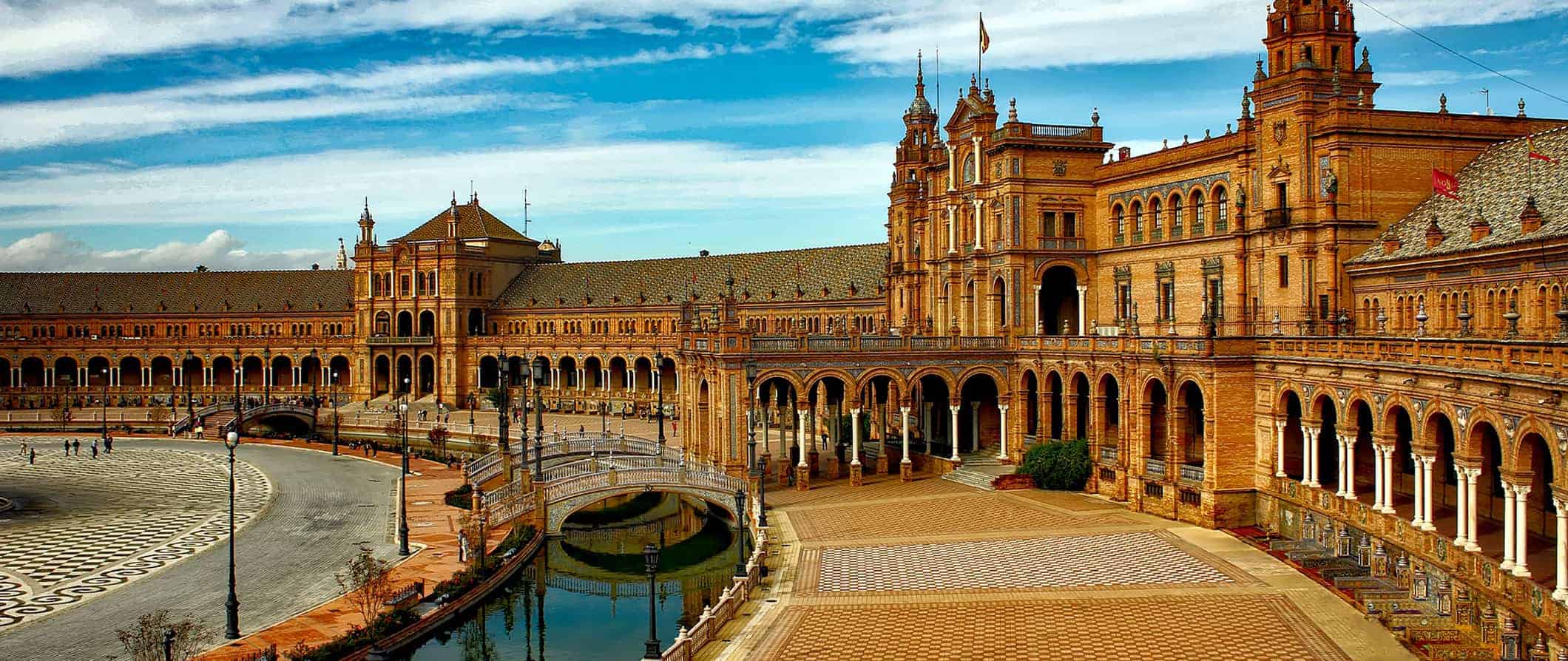
Originally founded as a Roman city, Seville came to prominence after the Islamic conquest in 711. Today, the city is known for its flamenco dancing (which originated in Andalucía), its beautiful architecture that blends Islamic and European styles, and its scorching summers.
Seville is a big university town and is extremely popular with people studying abroad, making it a more affordable destination than cities like Barcelona or Madrid (it’s not as crowded either).
This Seville travel guide will give you everything you need to know to eat well, save money, and see the best sights Seville has to offer!
Table of Contents
- Things to See and Do
- Typical Costs
- Suggested Budget
- Money-Saving Tips
- Where to Stay
- How to Get Around
- How to Stay Safe
- Best Places to Book Your Trip
- Related Blogs on Seville
Top 5 Things to See and Do in Seville

1. Tour Casa de Pilatos
Built in the 16th century, this beautiful Andalusian palace is a mix of Italian Renaissance and Spanish Mudejar styles. It houses a collection of 16th and 19th-century paintings, as well as a sculpture garden of Greek mythological figures. It’s also the permanent residence of the Dukes of Medinaceli (a hereditary title in Spain) and boasts the world’s largest collection of azulejo (a traditional glazed tile artwork). Numerous films have also been shot here, including Lawrence of Arabia, Kingdom of Heaven , and Knight and Day to name a few. Admission is 12 EUR.
2. Explore Parque de Maria Luisa
Located just in front of the iconic Plaza de España, this 100-acre public park offers the opportunity to browse gardens, patios, and sculptures. The park is Seville’s main greenspace and is situated near the Guadalquivir River. Created in 1911, it’s a relaxing place to lounge, picnic, and people watch. Don’t miss the monument to Miguel de Cervantes, who wrote Don Quixote (the monument used to include statues of Don Quixote on his horse and Sancho Panza on his donkey but they have since disappeared).
3. Visit the Royal Alcázar
The Royal Alcázar of Seville (also known as al-Qasr al-Muriq) is the oldest residential palace in Europe still in use today. Dating to the 14th century, it’s an important example of Moorish architecture. There are giant galleries, ornate rooms, and beautiful gardens. The palace was built for the Christian king Peter of Castile atop a Muslim fort after Christian armies reconquered the city in 1248. It’s also a UNESCO World Heritage Site. General admission is 14.50 EUR. Free admission is available on Monday afternoons/evenings. Check the website for specific times.
4. Walk through the historic Jewish Quarter
Seville’s Jewish Quarter is filled with small winding streets and is generally regarded as the most charming part of the city. The area gets pretty crowded but there are numerous small alleys and streets to explore where you can escape the crowds. Don’t miss this part of town.
5. Take a food tour
To learn more about the history and culture behind Seville’s cuisine, take a food tour. It’s the best way to eat your way around the city sampling the best eats Seville has to offer while learning what makes the cuisine unique. Devour Tours runs in-depth food tours led by expert local guides that will introduce you to the food culture and its history. If you’re a foodie like me who wants to learn more about the history and culture behind each dish, this tour is for you! Tours start at 89 EUR.
Other Things to See and Do in Seville
1. visit the catedral of sevilla.
This Roman Catholic cathedral dominates much of Seville’s skyline. Surrounded by Andalusian orange trees, the Cathedral (also known as the Cathedral of Saint Mary of the Sea) is one of Seville’s top tourist attractions. Lines can get long, partially because hours are limited around church services, so get there early. While you can just admire the stunning design and stained glass from outside, the Cathedral is where Christopher Columbus is buried, so it’s worth going inside. The bell tower also offers a panoramic view of the city. Admission is 11 EUR if you purchase online and 12 EUR in person. The audio guide costs 5 EUR (4 EUR if you use the app).
2. Check out Plaza de España
One of Seville’s most picturesque spots, Plaza de España was built at the northern edge of the Parque de María Luísa in the 1920s for the Ibero-American Exposition. The unique building mixes Baroque, Renaissance, and Moorish architectural styles, and there’s a small canal with Venetian-like bridges and gondolas. The Plaza has gotten a lot of attention in the past few years because it has served as a backdrop in film and TV, such as Star Wars and Game of Thrones . The murals along the sweeping arc of the building depict the various regions and municipalities of Spain. It also has benches that depict the 49 provinces of Spain in ceramic tiles. Admission is free.
3. Visit the Iglesia de San Isidoro
While this church is less popular than the Catedral de Sevilla, the Iglesia de San Isidoro is considered one of Seville’s most impressive churches. The 14th-century church was built on top of a former Arabic fortification and its fusion of Gothic and Mudejar styles is a common example of unique architecture in Andalucía. The intricate design makes this worth a visit. Admission is free but be sure to dress respectfully as it is a place of worship.
4. Enjoy some contemporary art
The Centro Andaluz de Arte Contemporáneo (CAAC) is a contemporary art museum located just across the river from the city center. Housed in a former Franciscan monastery that dates to the 15th century (and was later a ceramic tile factory), today the museum hosts a collection of Andalusian artists. There are rotating exhibitions so check the website to see what’s on during your visit. Admission is 3.01 EUR, though there is free entry Tuesday-Friday from 7pm-9pm and on Saturdays from 11am-9pm
5. Learn about Spain’s colonial history
The General Archives of the Indies is a 16th-century building and UNESCO World Heritage Site. Built in the Spanish Renaissance style, it contains a large collection of documents and artifacts related to Spain’s colonization of the New World. Highlights include the personal diary of Columbus and the Treaty of Tordesillas, which divided the New World between Spain and Portugal. Admission is free.
6. Visit the Flamenco Museum
Flamenco music and dance is an important cultural element of southern Spanish culture, and the Flamenco Museum in Seville is a great way to learn more about this unique style of performance. The museum features many intricately designed flamenco dresses and illuminates the history behind the dance’s origins. Admission to the museum is 10 EUR while live flamenco shows in the museum’s theater are 25 EUR.
7. Admire fine art
The Museo de Bellas Artes is a fine arts museum with works from the Middle Ages through to the 20th century. The museum lies in the Macarena neighborhood in a building that dates to 1594. Two floors in the building are full of paintings, sculptures, furniture, and crafts — many by artists from Seville or Andalucía. Admission is 1.50 EUR and free if you’re an EU citizen.
8. Take a Spanish class
Seville is a popular study abroad location for international students and there are a number of language schools catering to students from around the world. You can take Spanish courses for just a single week or longer. Many students choose Seville to study because of the big student population of the city, the affordability of the city, and the unique Andalusian culture. The CLIC language school offers a variety of courses for any number of weeks or months, plus affordable housing for those that want to stay with other students or in a homestay. A one-week intensive Spanish language course at CLIC costs as little as 205 EUR, though discounts are available depending upon a package or multi-week course.
9. Take in the view from the top of a mushroom
This large sculptural platform in the Plaza de la Encarnación used to be a car park but, in 2011, it was transformed into a massive public art project called Las Setas De Sevilla, or the Metropol Parasol. Resembling mushrooms (or more like a beehive in my opinion), the structure provides shade to the plaza below and there are two 85-foot panoramic platforms where you can take in the view. Admission to the platform is 10 EUR.
10. Hang out in Alameda
The best nightlife spot in Seville is in and around the Alameda de Hercules. The large, open-air plaza attracts many students and creative artist types who relax here drinking, playing music, and enjoying any of the tapas bars and outdoor seating that line the mall. Many of the restaurants and bars in the area offer live music and great deals on food & drinks too.
11. Relax on the Guadalquivir River
The first trip around the world originated in Seville when Portuguese explorer Ferdinand Magellan sailed out along the Guadalquivir River in 1519. The river was the main maritime route for Atlantic traffic for over 200 years, making Seville the mercantile center of the western world in the 16th century. These days you can enjoy rowing and canoeing on the river or just simply relax by the shore and take in the scene.
12. Take a bike tour
For more information on other cities in Spain, check out these guides:
- Barcelona Travel Guide
- Granada Travel Guide
- Madrid Travel Guide
- Valencia Travel Guide
Seville Travel Costs
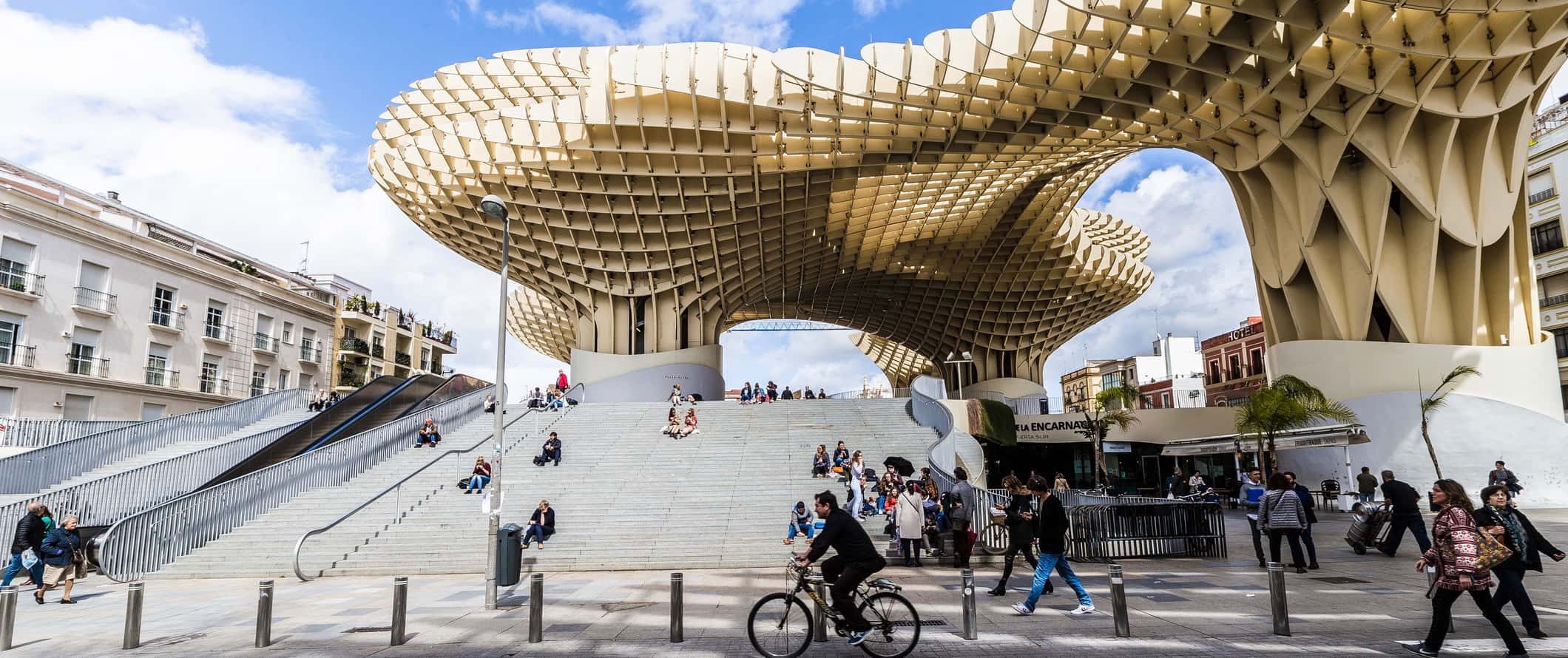
There are a few campgrounds outside the city, some offering private cabins with swimming pools for 40 EUR. For those with a tent, a basic plot for one person costs 5 EUR.
Budget hotel prices – Budget hotels cost 40-60 EUR per night, though prices are slightly higher (around 50-100 EUR per night) in peak tourist season and around Easter. Continental breakfast is usually included, as are basic amenities like TV and Wi-Fi.
Airbnb is available here as well, with private rooms starting at 30 EUR per night (but averaging double that). An entire apartment goes for at least 70 EUR per night though prices double if you don’t book early. Many include air-conditioning — useful to have for the hot summer season.
Food – Spain has a strong food culture, where meals can last hours and dinner often isn’t served until after 8pm. Each region in the country has its own local dishes and food culture, and Andalucía is no exception. Owing to its location on the coast, seafood is huge in this region, including shellfish and pescaito frito (fried fish). Gazpacho is also super common here, as is Iberian ham. Don’t miss trying some of the local sherry too (William Shakespeare apparently loved it).
You can eat very cheap in Seville. Tapas bars offer great deals and a number of takeaway stands with falafel, shawarma, or other late-night snacks can be found for under 10 EUR. Most tapas bars offer small plates for anywhere from 5-10 EUR depending upon the type of dish.
If you want to splurge, there are many nicer tapas restaurants with more elaborate meals and innovative takes on typical Andalusian-style foods. Mid-range tapas restaurants serve small plates between 7-15 EUR and, again, two or three plates is usually enough food for one person.
For a mid-range meal including an appetizer and drink, expect to pay at least 20 EUR. For cheap fast food (think McDonald’s), a combo meal costs around 8 EUR.
Beer costs as little as 2-3 EUR. A glass of sangria or wine costs 5 EUR. A latte/cappuccino is around 1.50 EUR while bottled water is under 1 EUR.
If you plan on cooking your own meals, expect to spend about 40-45 EUR for a week’s worth of groceries. This gets you basic staples like pasta, rice, seasonal produce, and some meat.
Backpacking Seville Suggested Budgets
If you’re backpacking Seville, expect to spend around 50 EUR per day. This budget covers a hostel dorm, cooking most of your meals, limiting your drinking, taking public transportation, and doing mostly free activities like relaxing in the park and seeing some of the churches. Add 10-15 EUR per day to your budget if you plan on drinking or partying a lot.
On a mid-range budget of about 135 EUR per day, you can stay in a private Airbnb or private hostel room, eat out at cheap restaurants for most meals, enjoy a few drinks, take the occasional taxi to get around, and do more paid activities like and museum visits or Spanish classes.
On a “luxury” budget of 250 EUR or more per day, you can stay in a hotel, eat out anywhere you want, drink as much as you’d like, take more taxis, and do as many guided tours as you want. This is just the ground floor for luxury though. The sky is the limit!
You can use the chart below to get an idea of how much you need to budget daily. Keep in mind these are daily averages – some days you spend more, some days you spend less (you might spend less every day). We just want to give you a general idea of how to make your budget. Prices are in EUR.
Seville Travel Guide: Money-Saving Tips
Food, drinks, and tours can add up in Seville if you aren’t watching your spending. This is one of the more expensive cities in Spain. Fortunately, there are plenty of ways to take advantage of free things to do here. Here’s how to save money in Seville:
- Get the Tarjeta TurÍstica pass – If you plan on using the bus or tram often, get this pass. A one-day pass costs 5 EUR and provides unlimited access to all public transport. A three-day pass costs 10 EUR.
- Visit the Royal Alcázar on Monday – The Royal Alcázar has free admission on Mondays, so plan accordingly to save money. Specific times vary by season so check the website for an up-to-date schedule.
- Buy your own alcohol – While drinks are hardly expensive at bars and restaurants in Seville (and in Spain as a whole), you can save yourself a lot of money if you buy your own beer and wine. Many locals buy their own bottles and drink in public at the Alameda de Hercules in the evenings, taking advantage of the street performers, buskers, and musicians that crowd the plaza on weekends.
- Stay with a local – Couchsurfing is a great way to save money on accommodation while also getting some insight from a local. While hostels aren’t too expensive in the city, this is still the best way to save money and deepen your travel experience.
- Go on a free walking tour – Like most of Spain, there are many opportunities to take advantage of free walking tours. Seville has a number and many depart from Plaza del Salvador. You just need to tip your guide. My favorite is New Europe. Just remember to tip your guide at the end!
- Visit the markets for groceries & cheap tapas – The Triana Market is one of the main food markets in Seville and has many fruit and vegetable vendors. There are food markets in each of the major Seville neighborhoods, and sometimes the smaller ones outside the main tourist trails even have small, local restaurants with great food deals. The Mercado de Feria is a favorite. Buying snacks, small meals, and groceries at the local neighborhood markets can cut down on your food budget.
- Bring a water bottle – The tap water here is safe to drink so bring a reusable water bottle to save money and reduce your plastic use. LifeStraw is my go-to brand as their bottles have built-in filters to ensure your water is always clean and safe.
Where to Stay in Seville
Seville has a ton of hostel choices for any budget. My recommended places to stay are the following:
- Triana Hostel
- Black Swan Hostel
- Oasis Backpakcers Palace
- Sevilla Kitsch Hostel Art
- Onefam Catedral
How to Get Around Seville
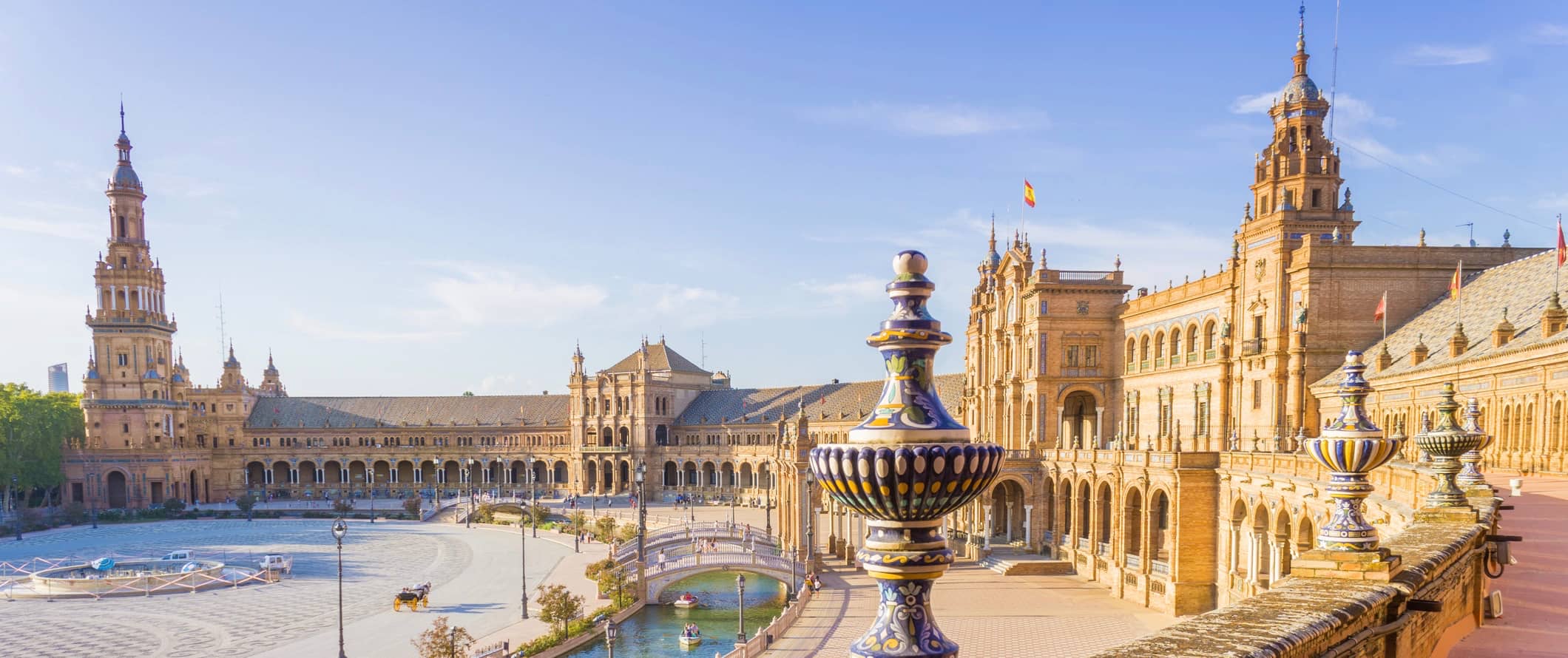
Public transportation – There is an extensive bus network that operates in Seville and can help you get from one edge of the city to another. Tickets can be bought on board and cost 1.40 EUR per trip. A one-day travel card, the Tarjeta TurÍstica, costs 5 EUR (10 EUR for a 3-day card).
Seville’s tram system connects to some of the further out areas of the city (and it’s air-conditioned). The tram is part of the same public bus system so tickets are the same price.
Bicycle Rental – Bike rentals are a great way to save money while seeing the sights from a new perspective. Rentals in Seville cost around 15 EUR per day.
Taxis – Taxis start at 2.50 EUR, with normal tariff being 1 EUR per additional kilometer. Skip them if you can as the prices add up fast!
Ridesharing – Uber is available in Seville but it won’t save you a ton so skip it and stick to the bus.
When to Go to Seville
Like most of southern Spain in Andalucía, Seville gets a lot of sunshine and has hot summers. I think the best time to visit is between March and May when crowds haven’t peaked but the weather is still warm and sunny.
The Easter season is especially popular in Seville because of the famous Feria (a large fair), which attracts hundreds of thousands of tourists and religious pilgrims. Part of the Semana Santa holy week, it’s a beautiful time to visit because of the colorful dresses and the many street activities and parades, but it does get crowded and expensive during the holy week.
In the summer (June-August), the weather is hot and sunny, with daily highs reaching upwards of 38°C (100°F). While the city is lively during the summer, it can be very taxing to explore in the heat.
The winter months (December-February) offer more comfortable temperatures, usually around 7-18°C (45-65°F). The city is much quieter, making it a nice time to visit if you want to beat the crowds and don’t mind some chilly days.
How to Stay Safe in Seville
Like most Spanish cities, Seville has a problem with pickpocketing and petty theft. The area around the Alameda de Hercules, a popular nightlife spot, was once very seedy and rife with crime and drug use, but that’s been cleaned up a lot in the past decade. Still, watch your bags when going out at night and avoid dark, empty streets if alone. Always keep an eye on your possessions when on public transportation as well.
If you go out at night, only bring the money you need and leave the rest locked up in your accommodation.
Tourist scams are prevalent as well so keep an eye out for groups of kids trying to distract you, as they’re probably trying to take your money. Additionally, be wary of people offering to carry your luggage. They may try to charge you a large fee.
When dining, keep your bags and belongings close and secure (especially when outside). Don’t leave your things on the table when going up to order. They can disappear quickly.
Read more about common travel scams to avoid here if you’re worried about getting ripped off.
Solo female travelers should feel safe here, however, the standard precautions apply (always keep an eye on your drink at the bar, never walk home alone intoxicated, etc.)
If you do experience an emergency, dial 112 for assistance.
Always trust your gut instinct and make extra copies of your important documents.
The most important piece of advice I can offer is to purchase good travel insurance. Travel insurance protects you against illness, injury, theft, and cancellations. It’s comprehensive protection in case anything goes wrong. I never go on a trip without it as I’ve had to use it many times in the past. You can use the widget below to find the policy right for you:
Seville Travel Guide: The Best Booking Resources
These are my favorite companies to use when I travel. They consistently have the best deals, offer world-class customer service and great value, and overall, are better than their competitors. They are the companies I use the most and are always the starting point in my search for travel deals.
- Skyscanner – Skyscanner is my favorite flight search engine. They search small websites and budget airlines that larger search sites tend to miss. They are hands down the number one place to start.
- Hostelworld – This is the best hostel accommodation site out there with the largest inventory, best search interface, and widest availability.
- Booking.com – The best all around booking site that constantly provides the cheapest and lowest rates. They have the widest selection of budget accommodation. In all my tests, they’ve always had the cheapest rates out of all the booking websites.
- HostelPass – This new card gives you up to 20% off hostels throughout Europe. It’s a great way to save money. They’re constantly adding new hostels too. I’ve always wanted something like this and glad it finallt exists.
- Get Your Guide – Get Your Guide is a huge online marketplace for tours and excursions. They have tons of tour options available in cities all around the world, including everything from cooking classes, walking tours, street art lessons, and more!
- The Man in Seat 61 – This website is the ultimate guide to train travel anywhere in the world. They have the most comprehensive information on routes, times, prices, and train conditions. If you are planning a long train journey or some epic train trip, consult this site.
- Rome2Rio – This website allows you to see how to get from point A to point B the best and cheapest way possible. It will give you all the bus, train, plane, or boat routes that can get you there as well as how much they cost.
- FlixBus – Flixbus has routes between 20 European countries with prices starting as low 5 EUR! Their buses include WiFi, electrical outlets, a free checked bag.
- SafetyWing – Safety Wing offers convenient and affordable plans tailored to digital nomads and long-term travelers. They have cheap monthly plans, great customer service, and an easy-to-use claims process that makes it perfect for those on the road.
- LifeStraw – My go-to company for reusable water bottles with built-in filters so you can ensure your drinking water is always clean and safe.
- Unbound Merino – They make lightweight, durable, easy-to-clean travel clothing.
- Top Travel Credit Cards – Points are the best way to cut down travel expenses. Here’s my favorite point earning credit cards so you can get free travel!
- BlaBlaCar – BlaBlaCar is a ridesharing website that lets you share rides with vetted local drivers by pitching in for gas. You simply request a seat, they approve, and off you go! It’s a cheaper and more interesting way to travel than by bus or train!
Seville Travel Guide: Related Articles
Want more info? Check out all the articles I’ve written on Spain travel and continue planning your trip:

The 7 Best Hotels in Madrid
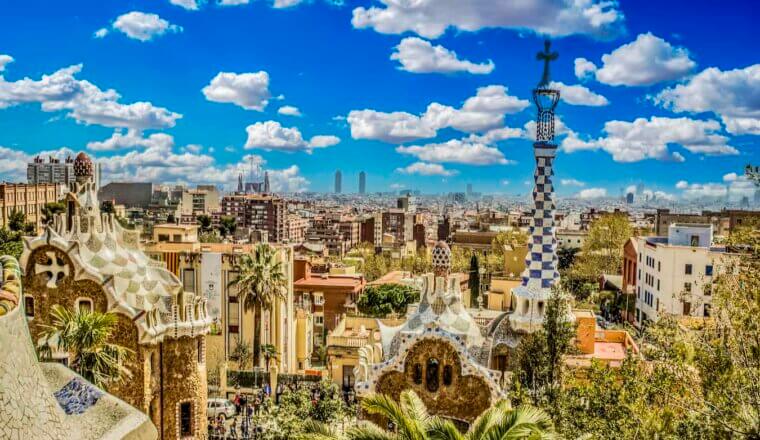
The 7 Best Hotels in Barcelona

The Best Walking Tours in Barcelona
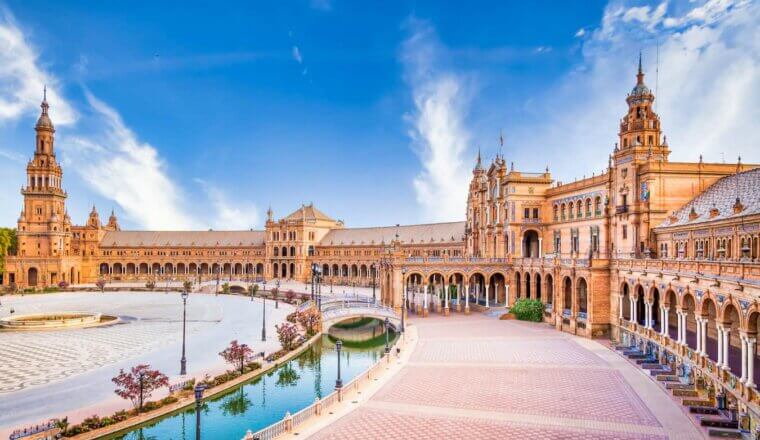
The Best Walking Tours in Seville

The Perfect 3 Day Granada Itinerary
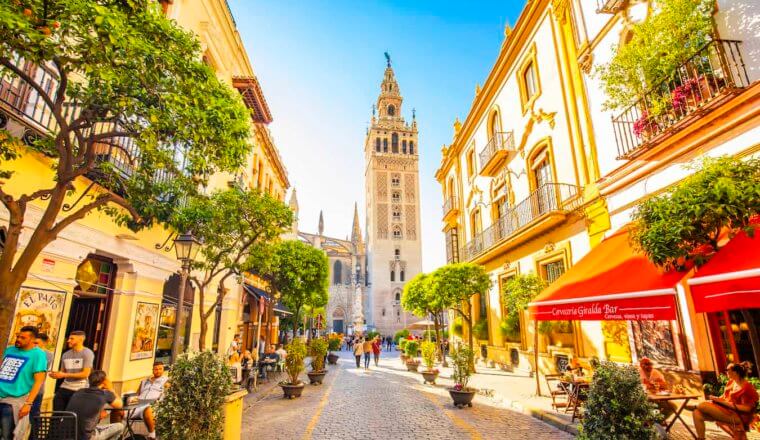
The 7 Best Hostels in Seville
Get my best stuff sent straight to you, pin it on pinterest.
- Where To Stay
- Transportation
- Booking Resources
- Related Blogs

Explore Spain Beyond the Ordinary
Welcome to TravelSpain24, your not-so-typical travel guide to Spain. It’s a story about us, Timon and Filipa, two souls who swapped our 9-5 for adventures, flavors, and panoramic views under the Spanish sun.
Popular Places

Barcelona shows off Gaudi’s art and beaches. Here, buildings meet the ocean.
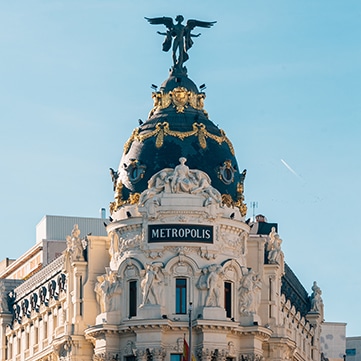
Madrid welcomes you with lively streets and art, where history comes alive.
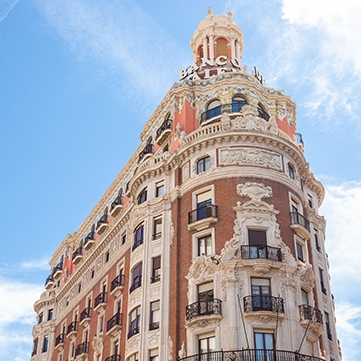
Valencia invites you to taste the original paella. Tradition and new ideas mix here.
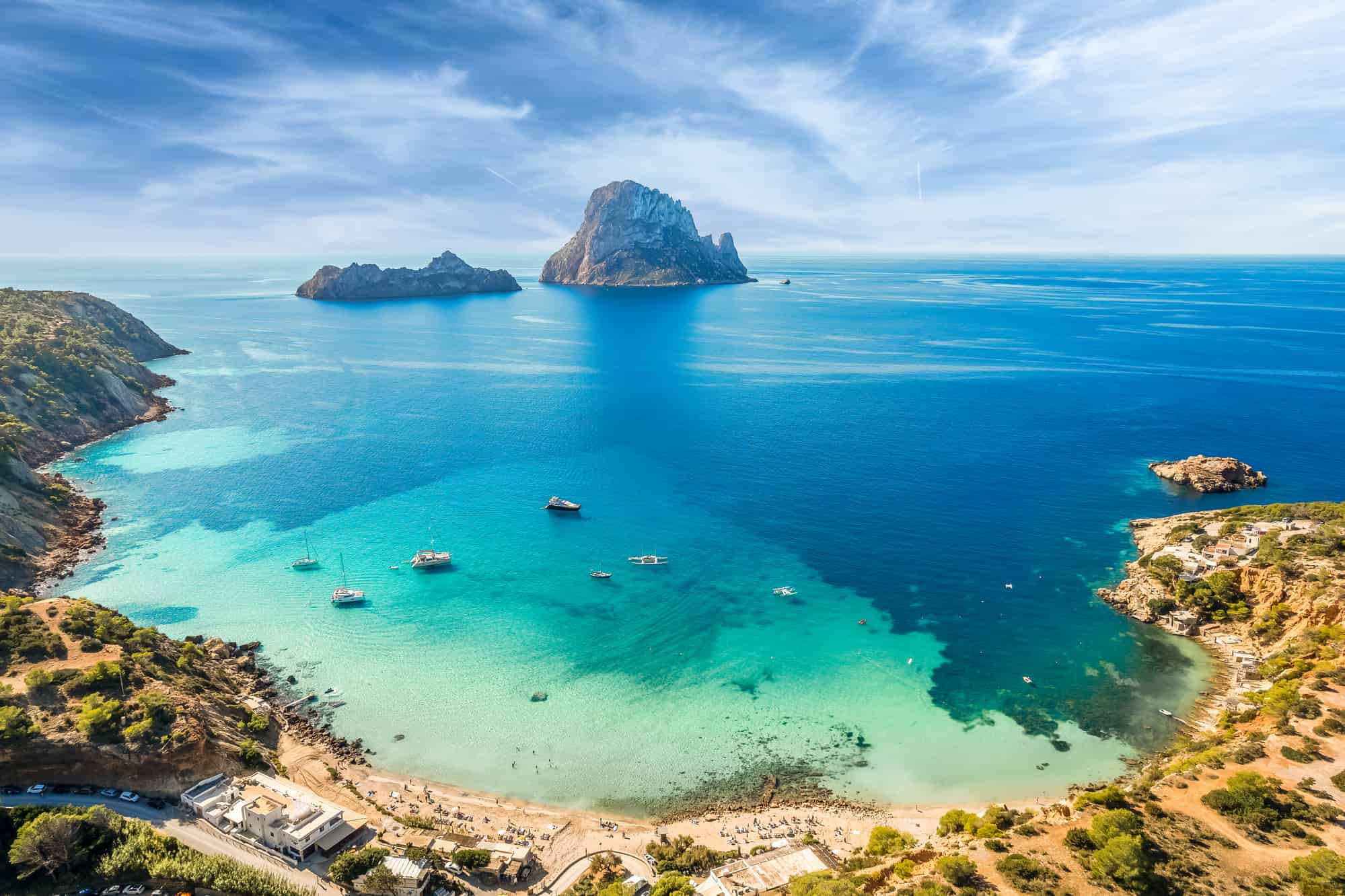
Enjoy beautiful beaches and hidden coves. The island shines with the sun.
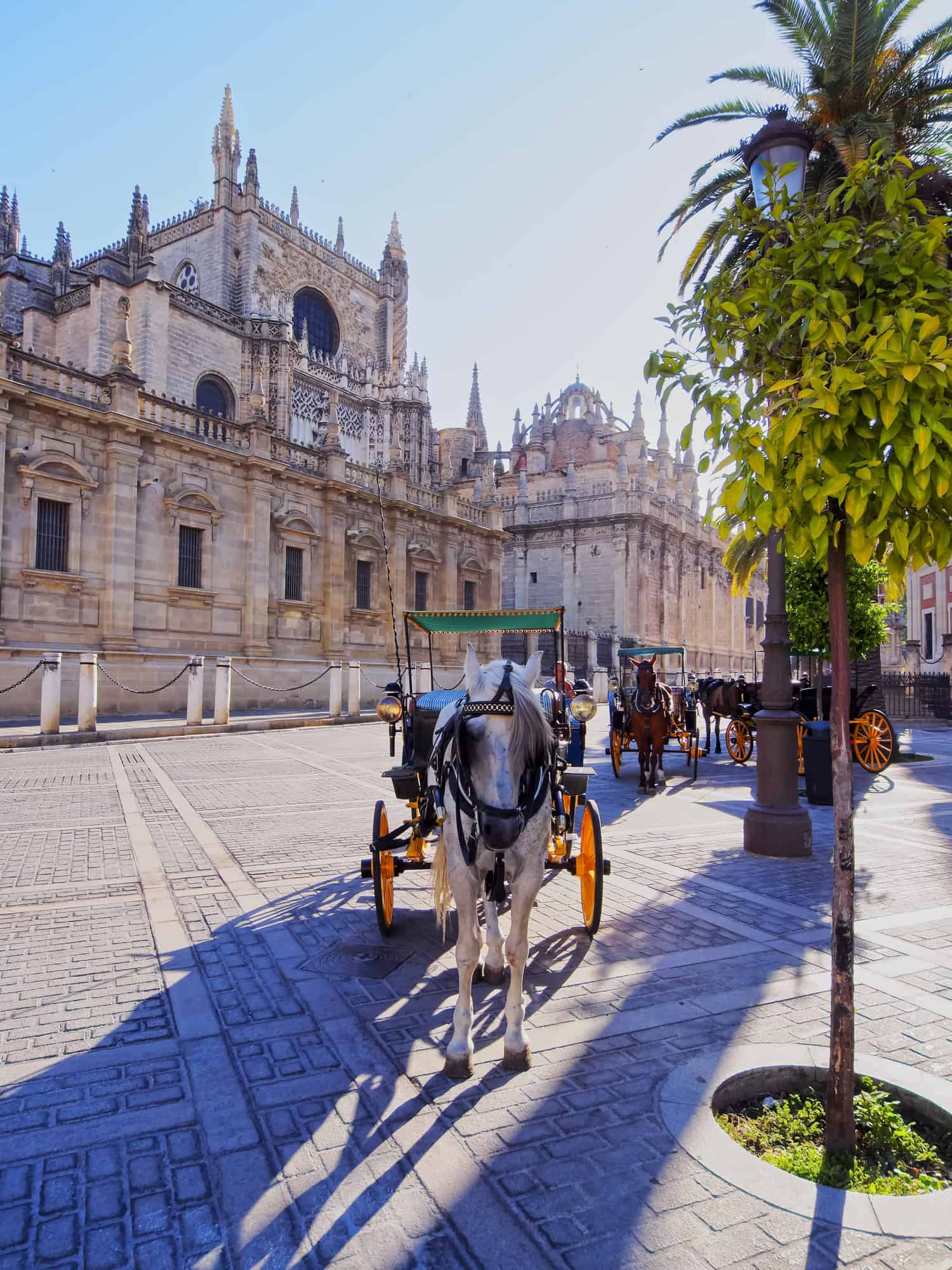
Learn about history and watch flamenco.
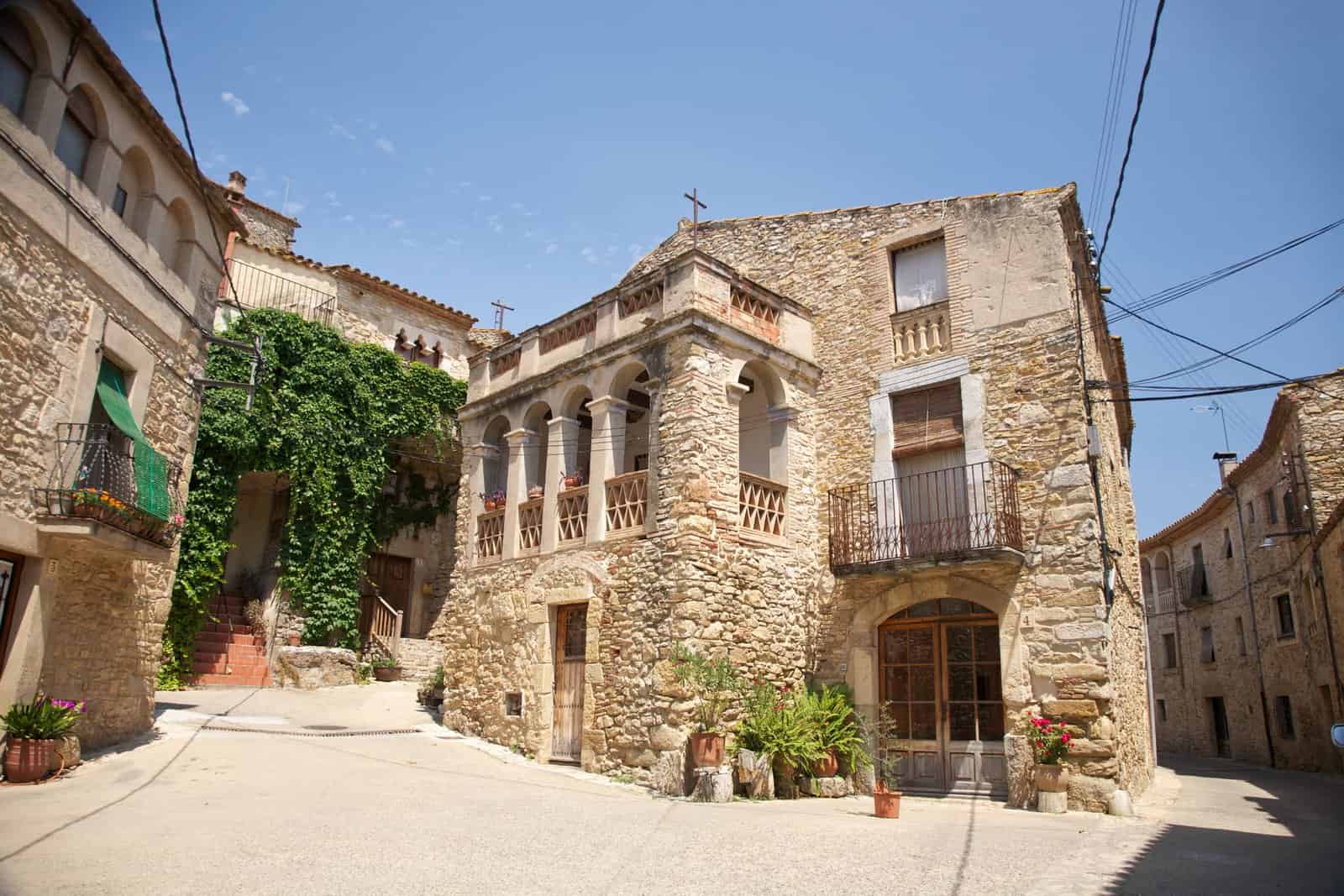
Discover different landscapes and great food. This place is full of variety.
Start Planning Your Trip!

Information

Destinations

Discover Spain
Travel information.
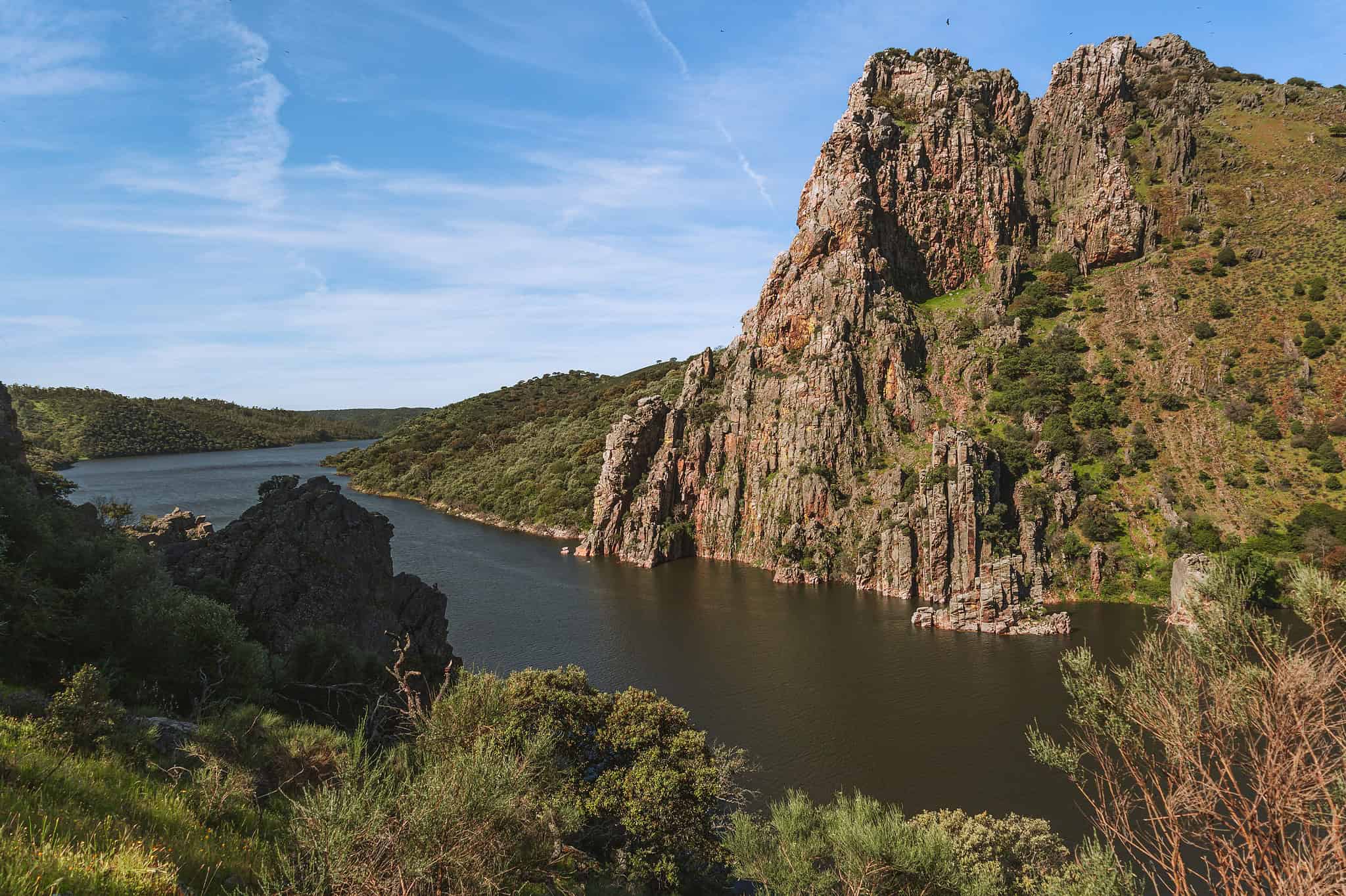
Monfragüe National Park: Highlights and Hiking Trail
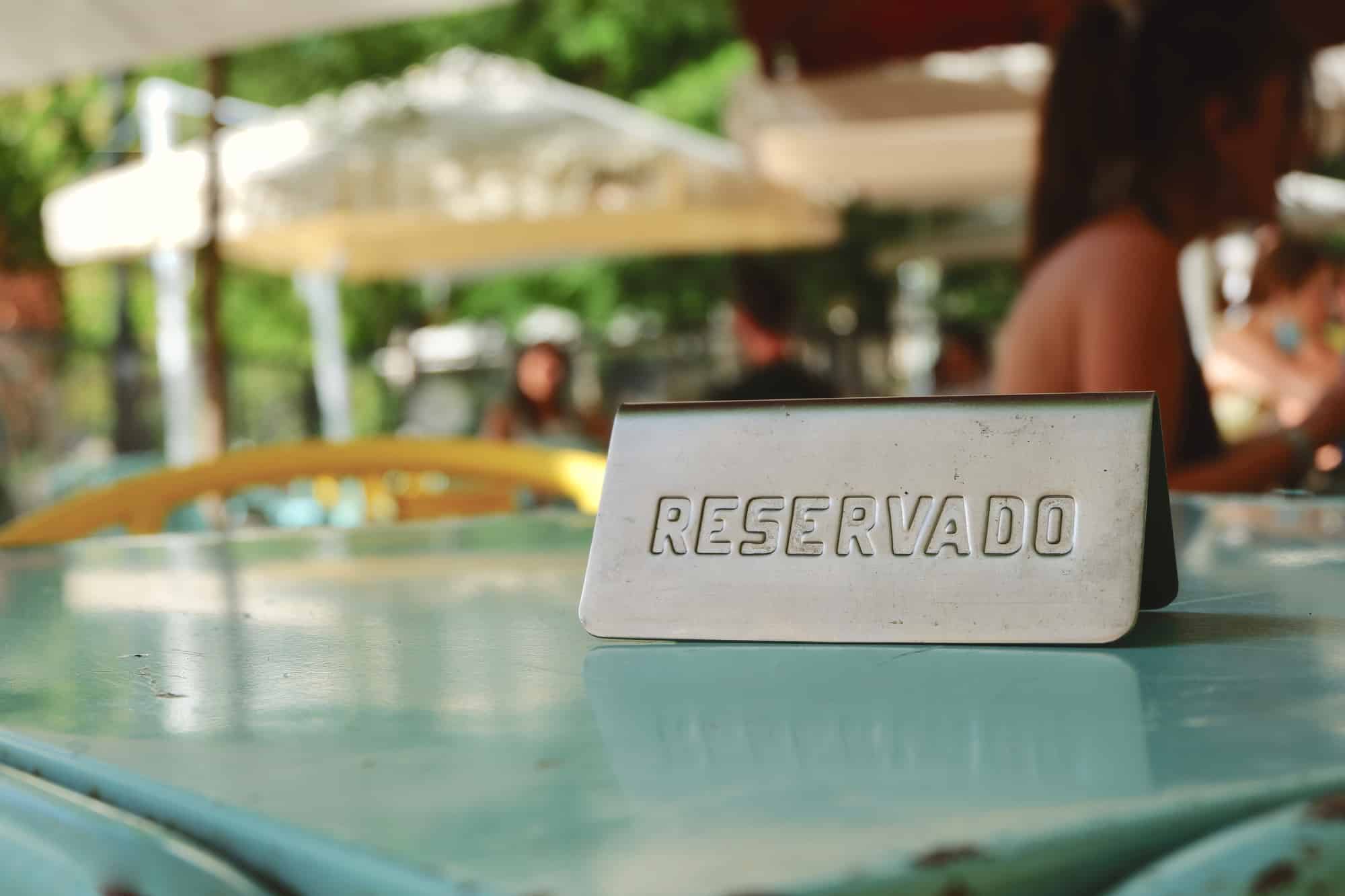
Eating Schedule in Spain
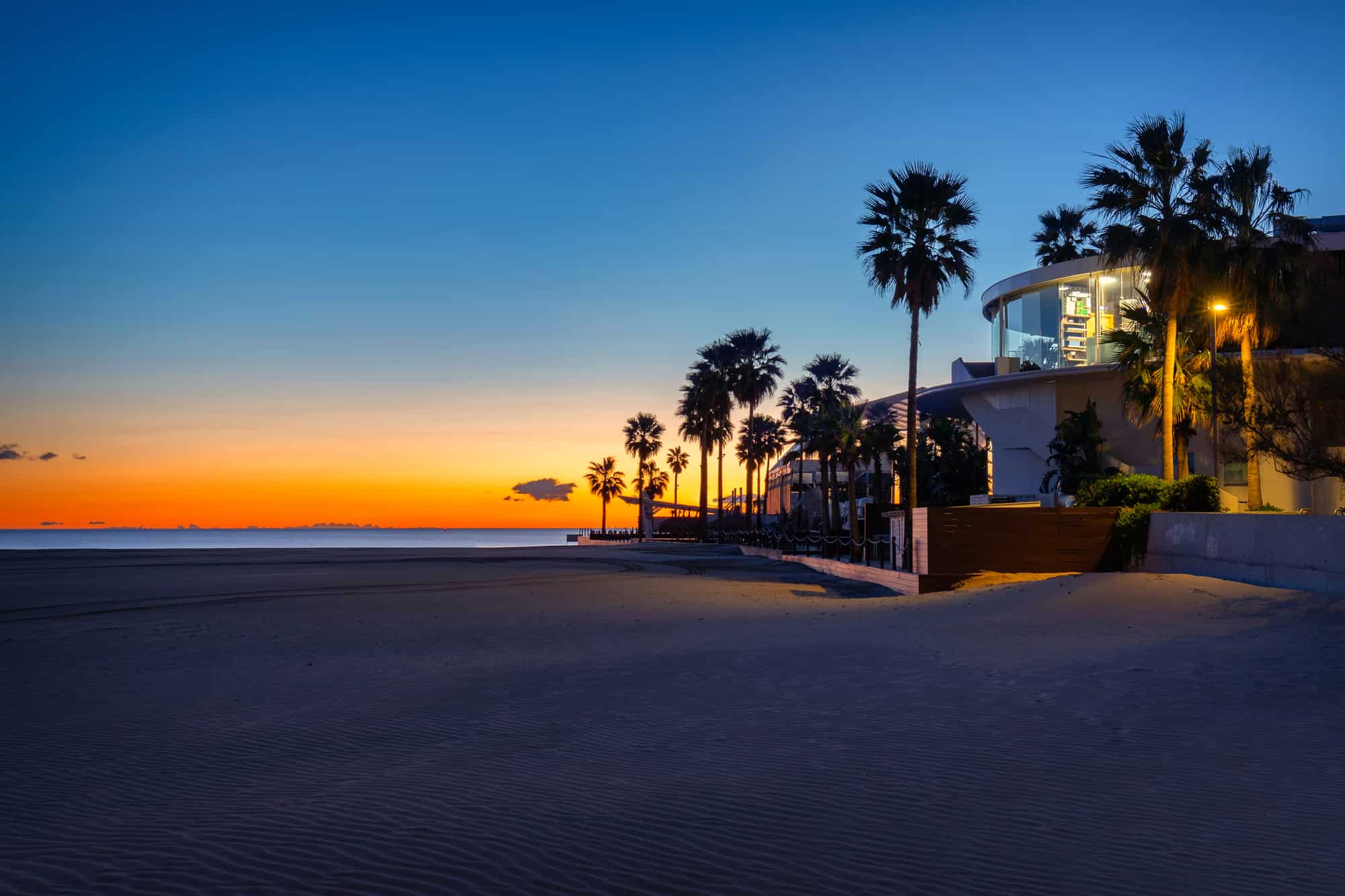
Las Arenas Beach in Valencia
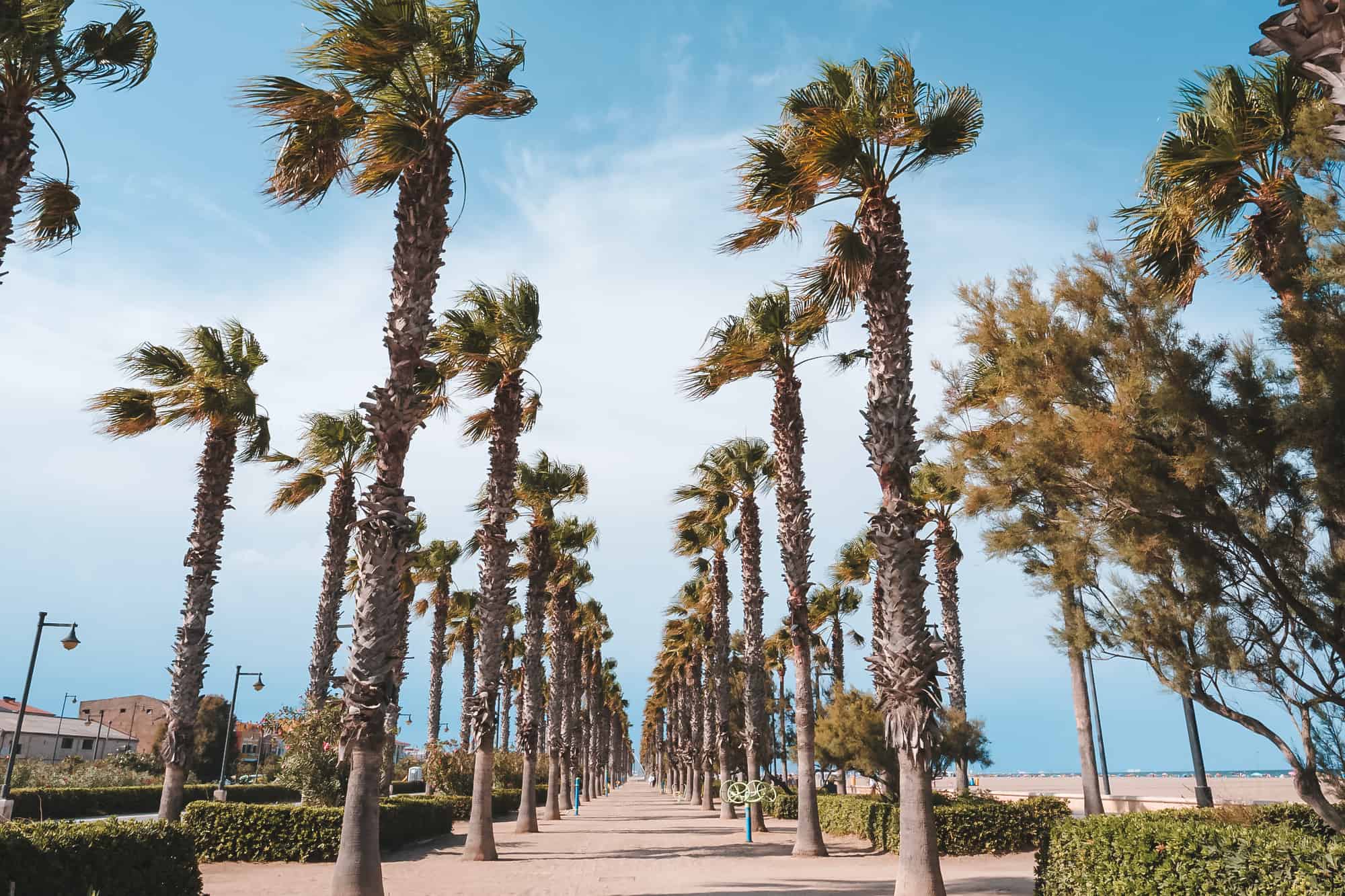
Malvarrosa Beach in Valencia
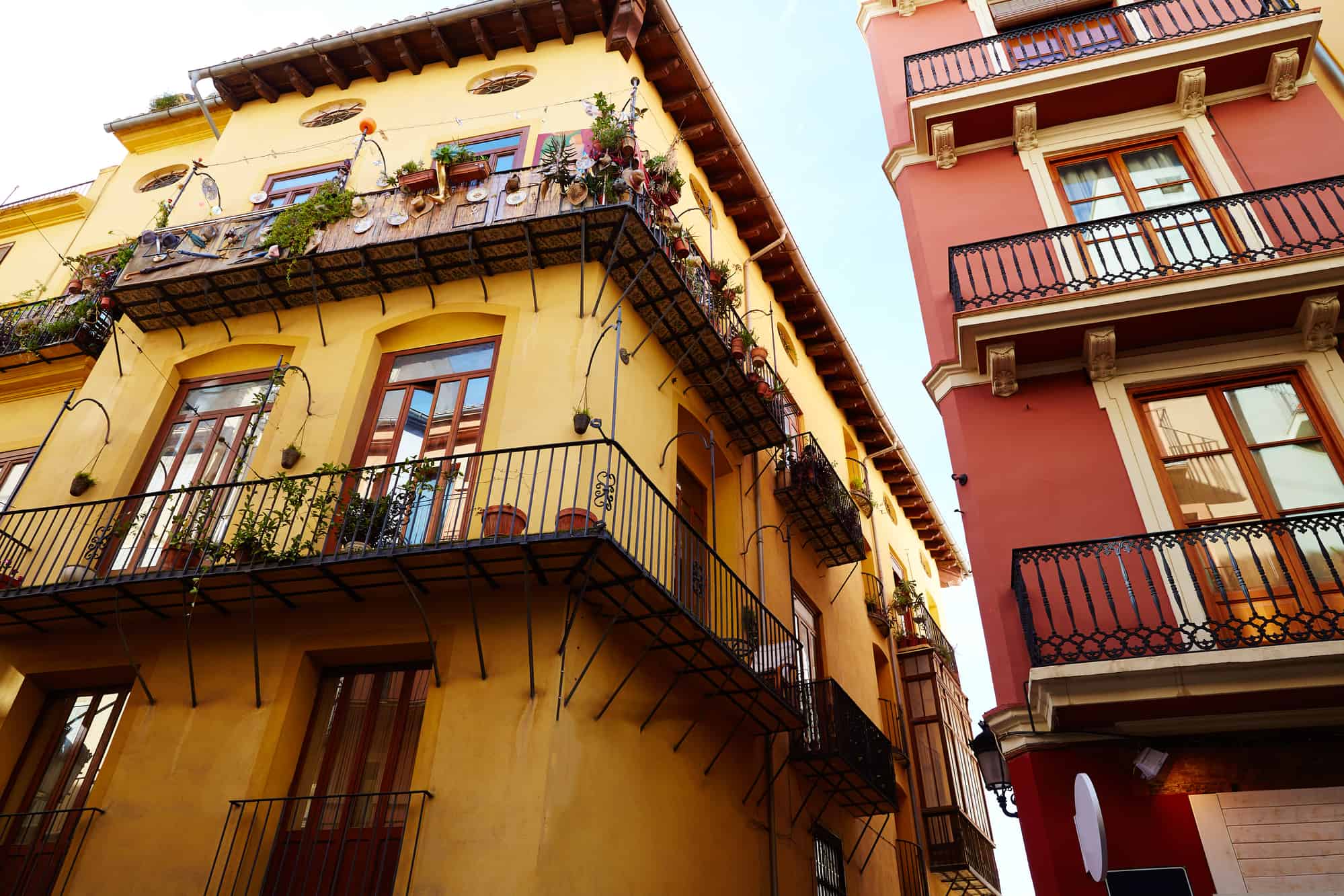
El Carmen in Valencia: Things to Do & See
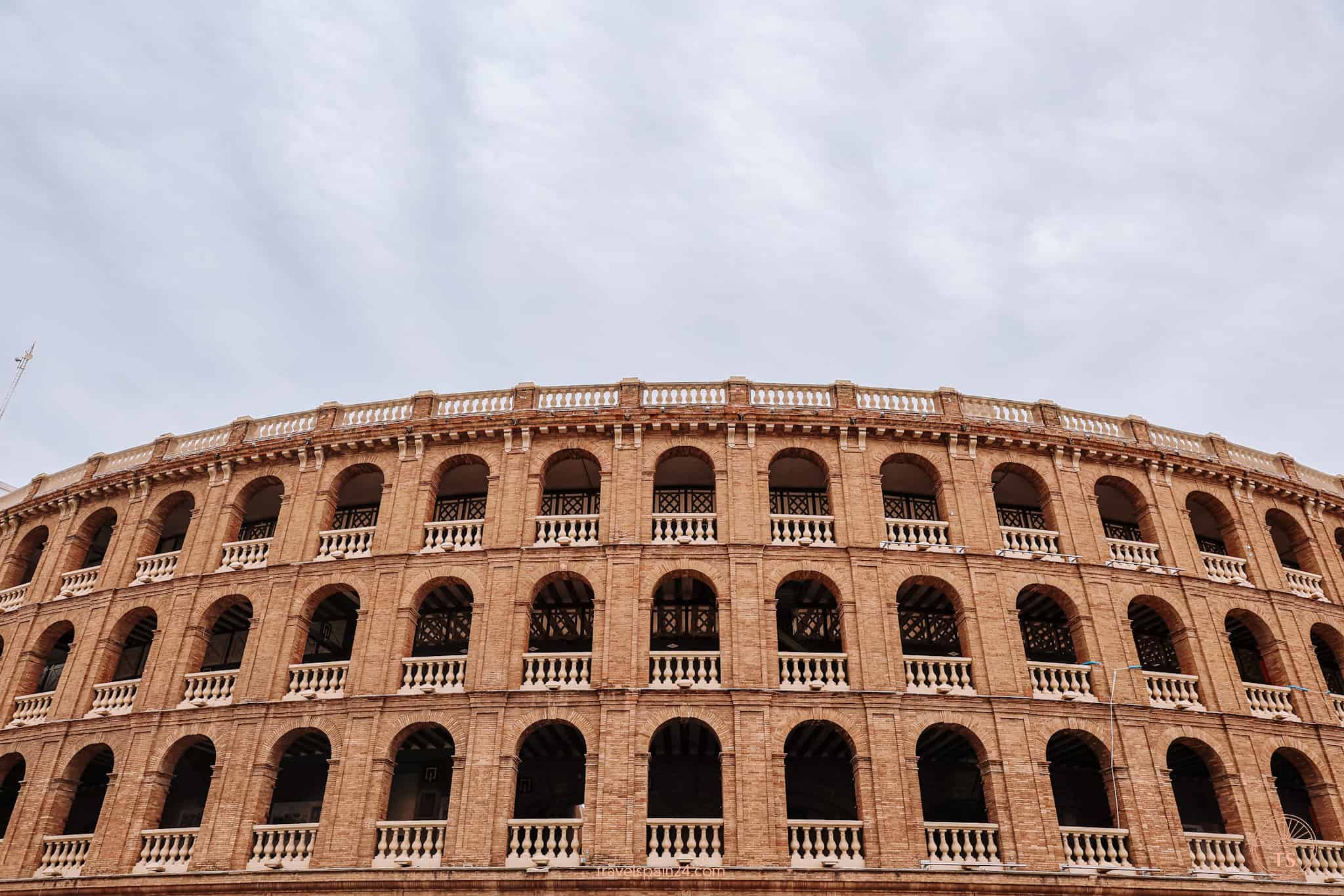
Plaza de Toros de Valencia: Visitor’s Guide
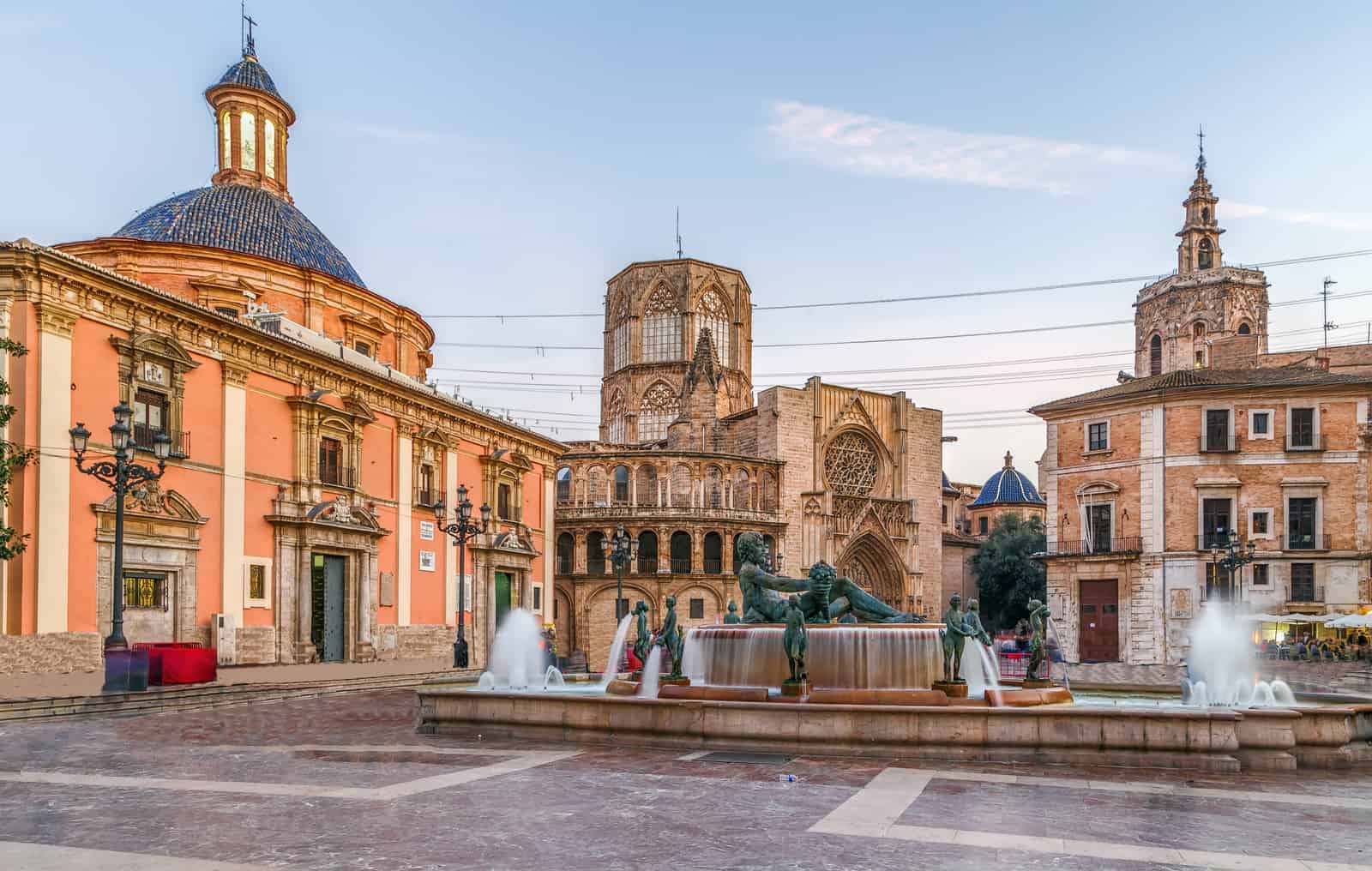
Plaza de la Virgen: Visitor’s Guide
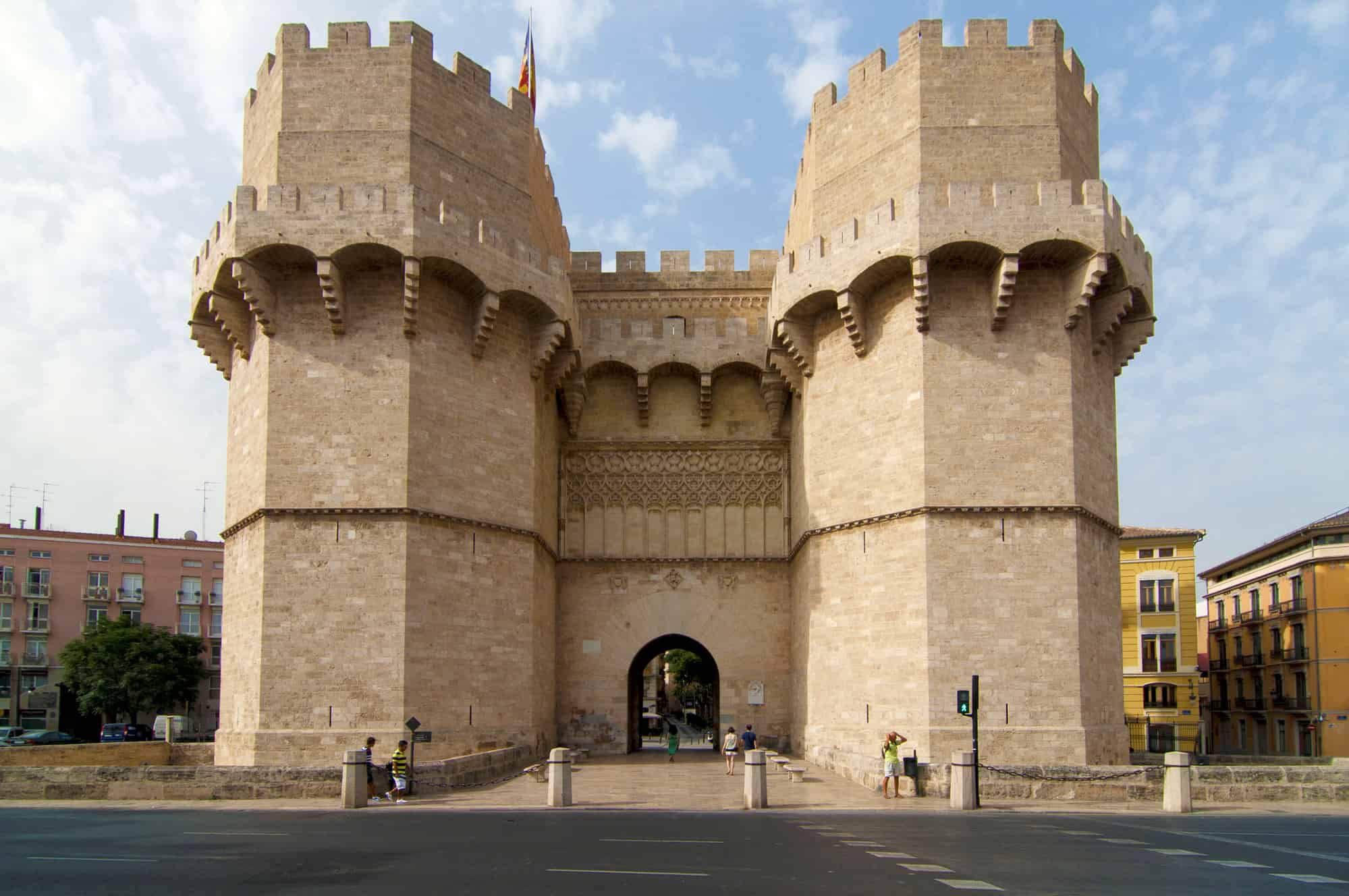
Torres de Serranos (Serranos Towers)
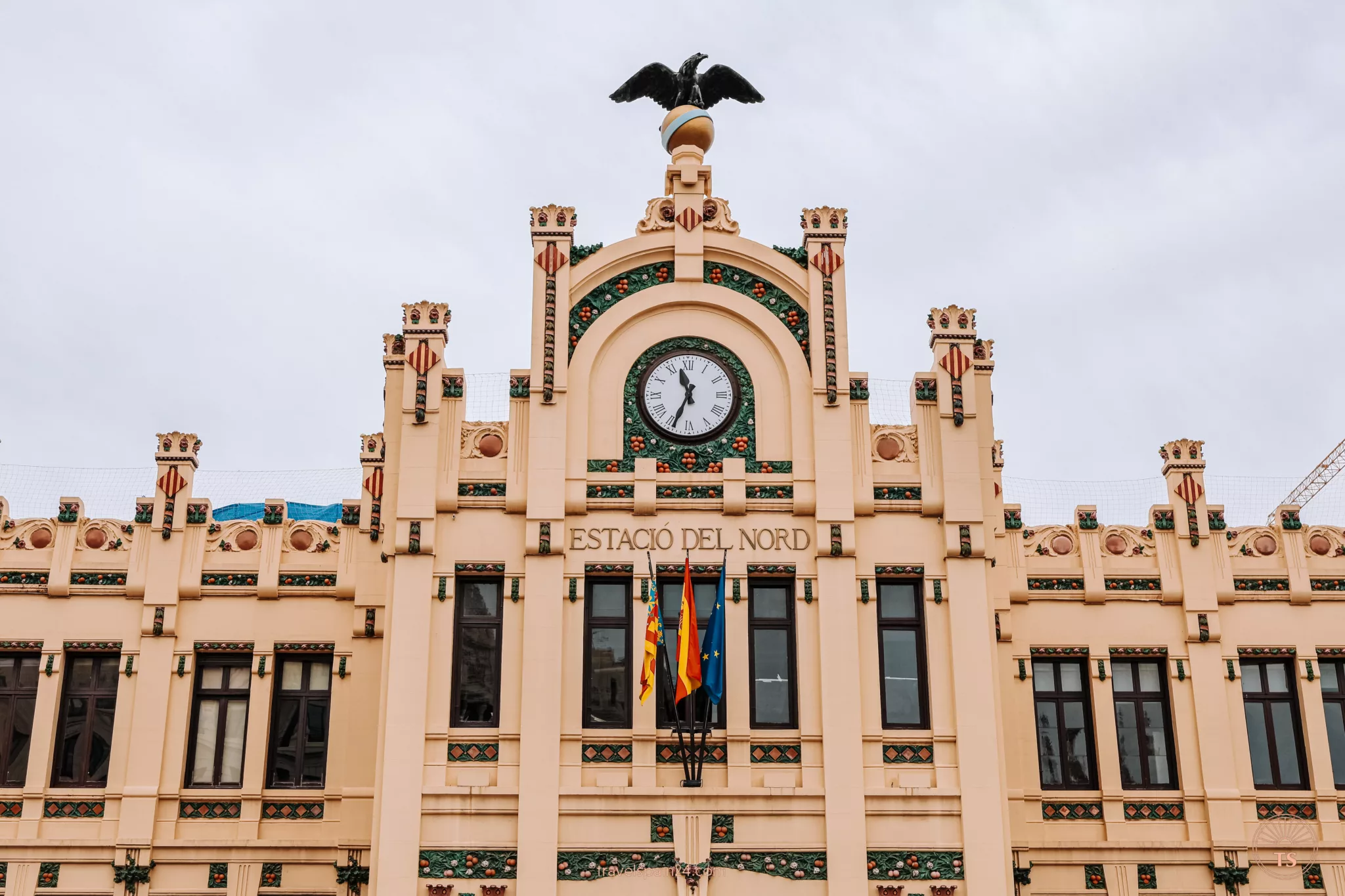
Valencia Station North (Estacio del Nord)
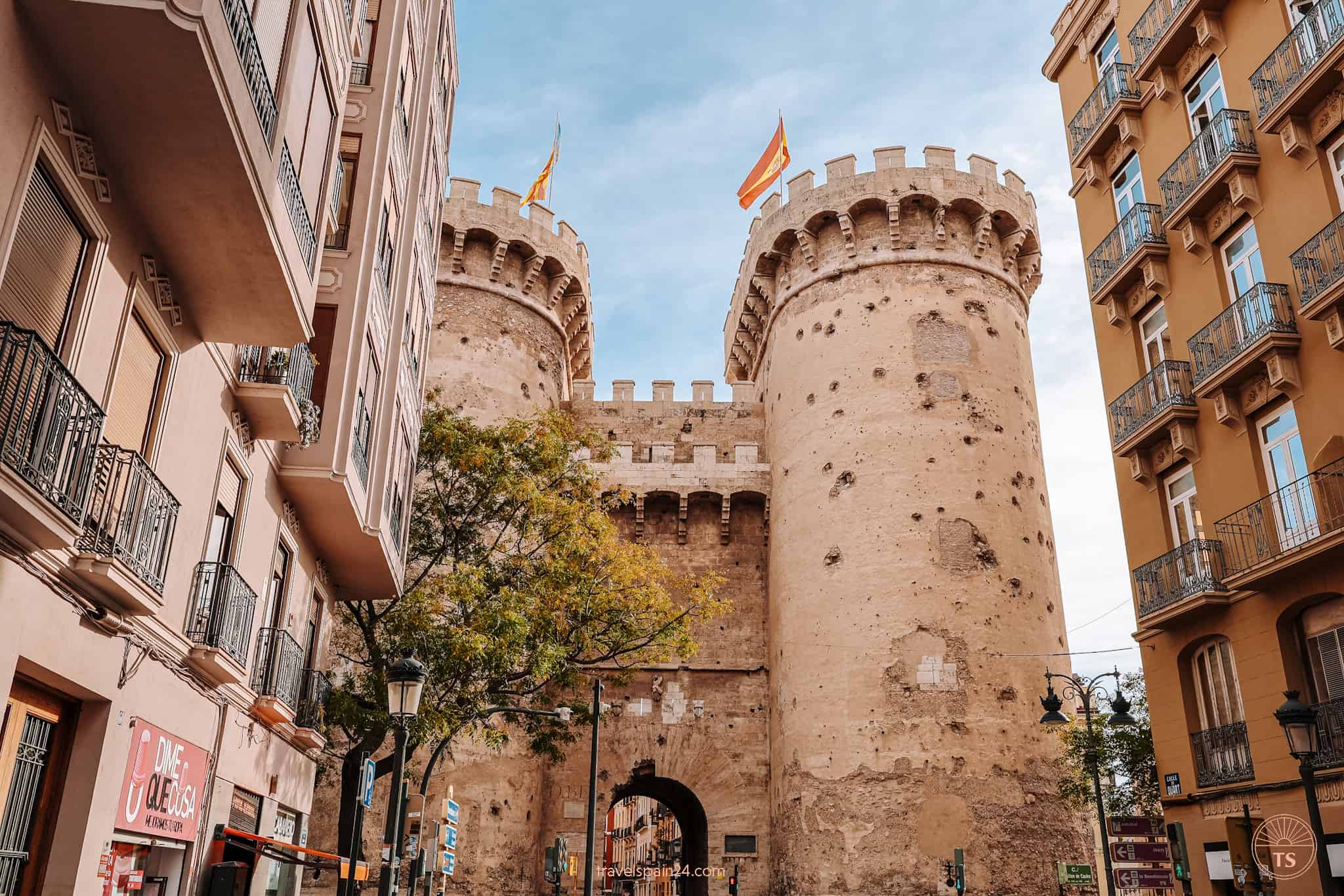
Things to do in Valencia Old Town
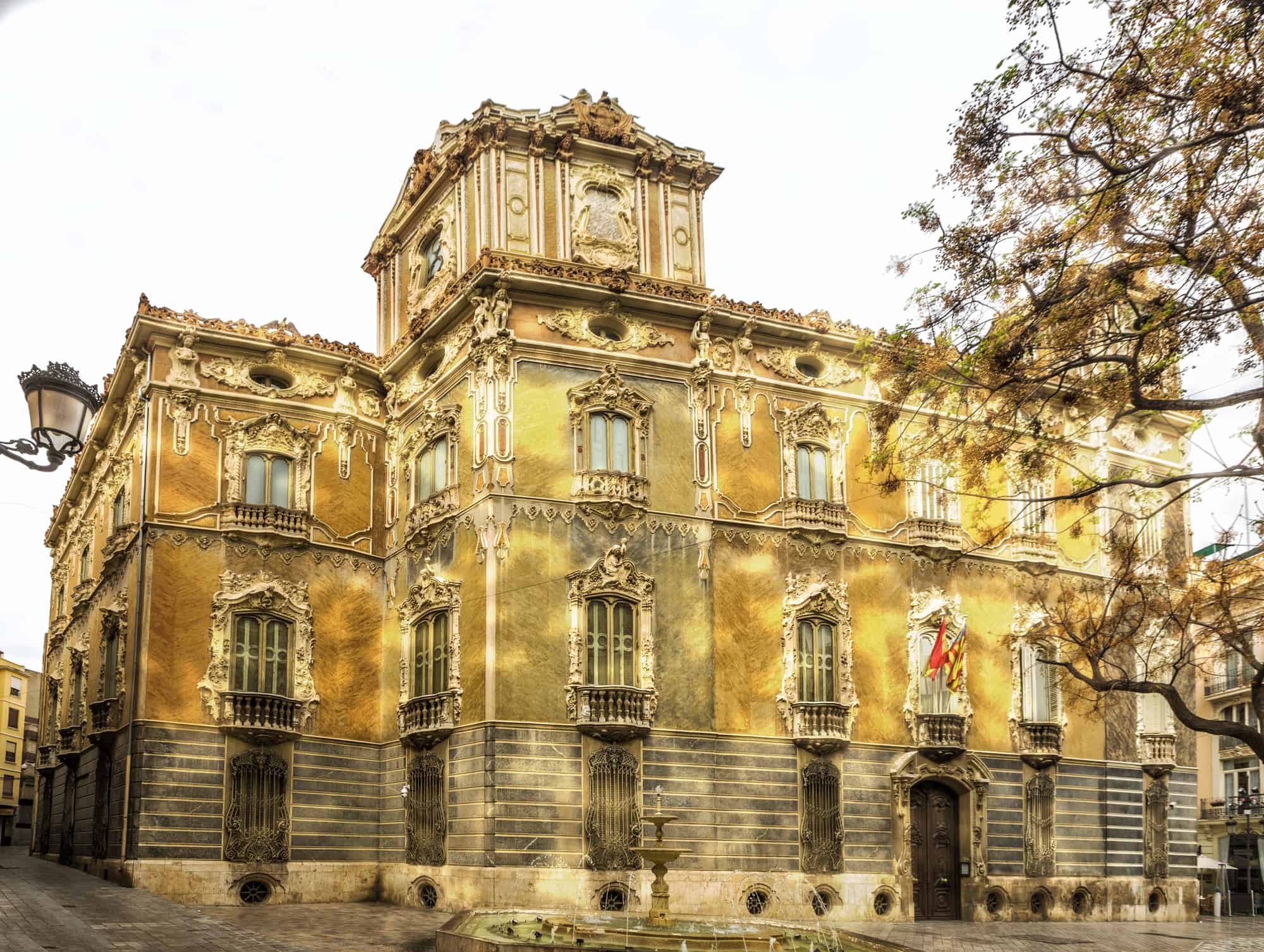
National Ceramics Museum in Valencia
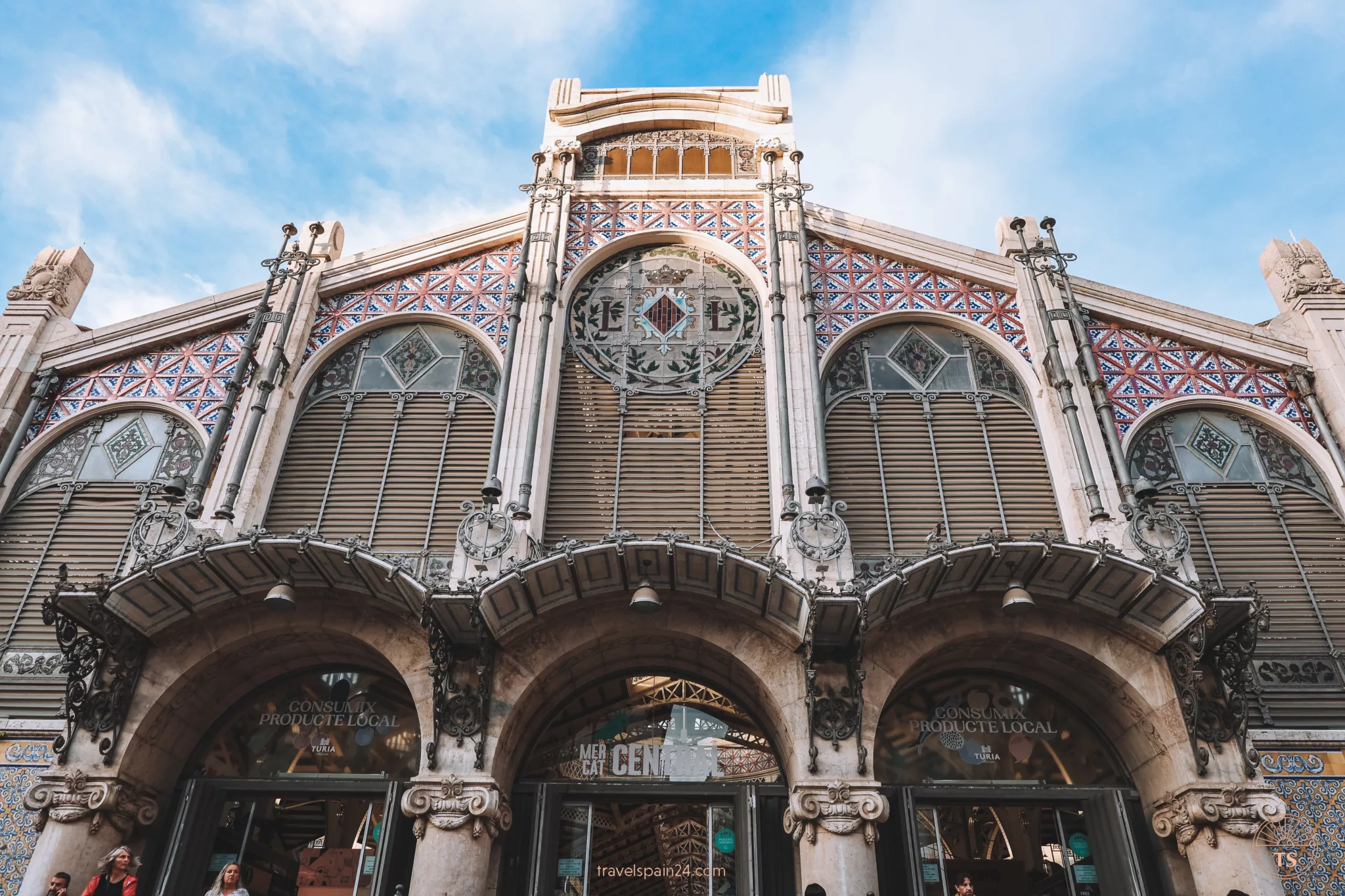
The Central Market of Valencia

Spain in March: Explore Cities, Culture, and Festivals

Top 12 Cities in Spain for the Best Parties
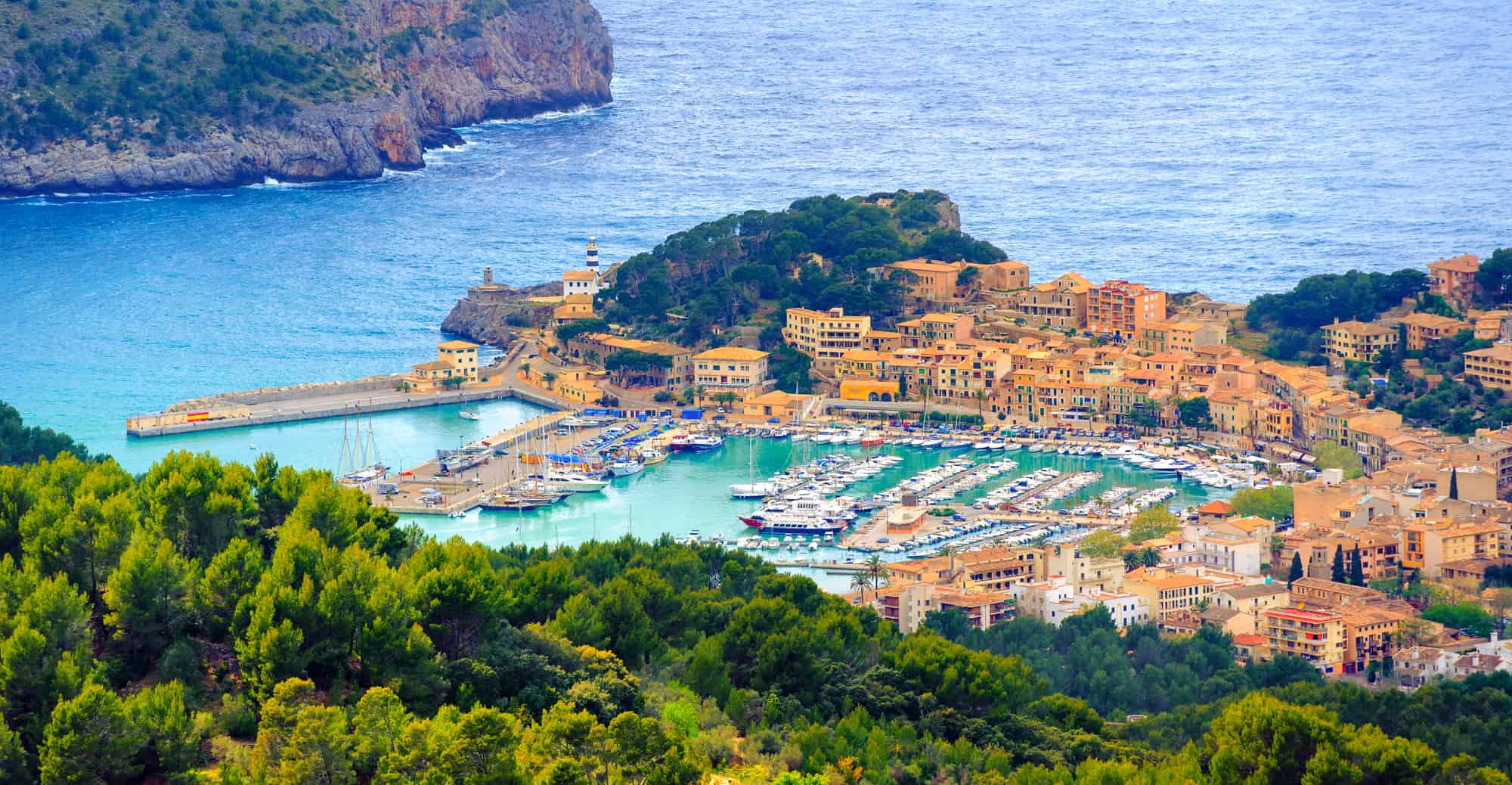
10 Must-Visit Mallorca Towns

Community of Madrid
Explore the Community of Madrid, a place where history and modernity come together. The Community of Madrid welcomes you with open arms and a world of adventures for everyone to enjoy.
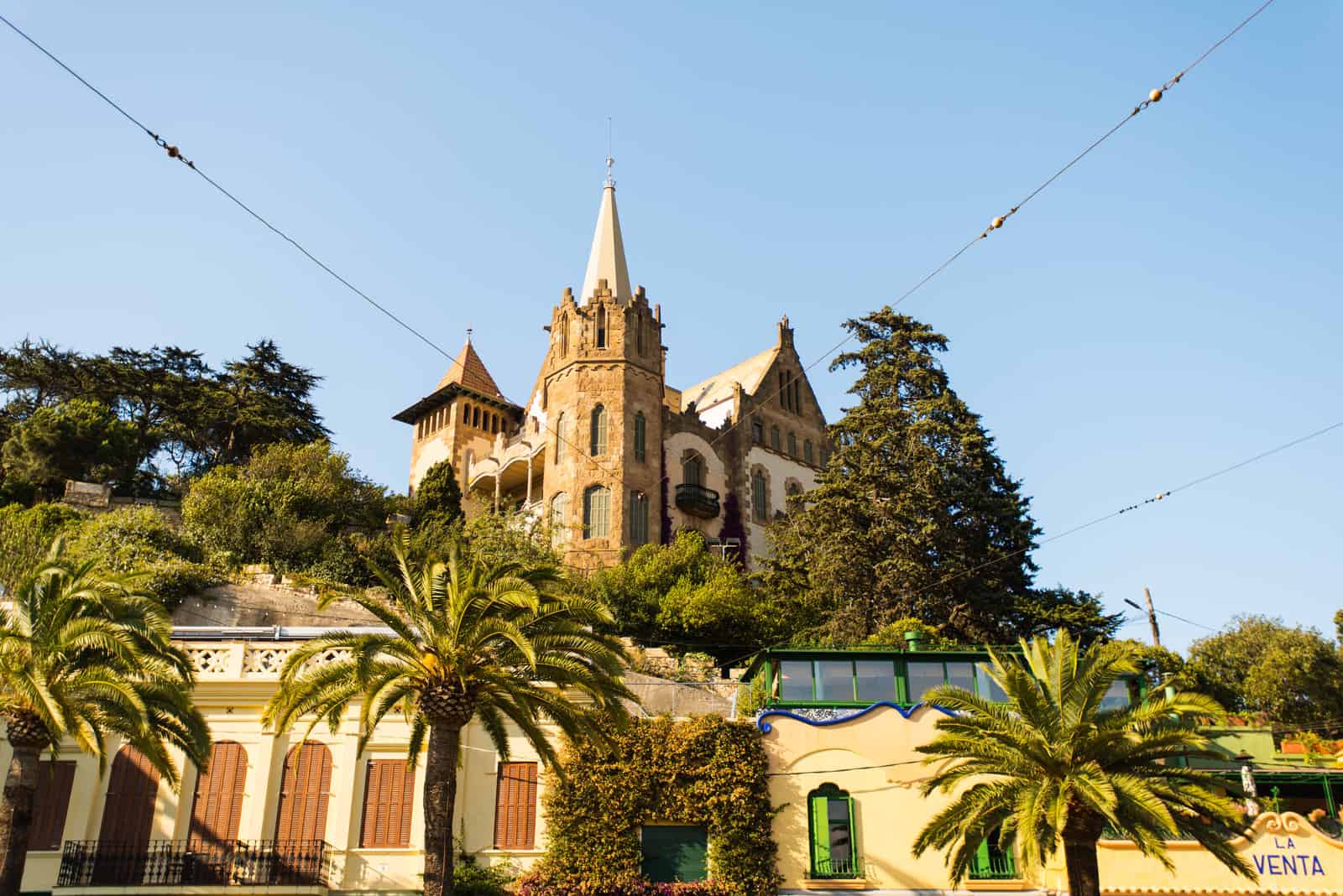
Discover Catalonia, a region in Spain filled with incredible diversity. Catalonia is a place where fun and culture blend seamlessly, making it a fantastic destination for families and adventurers of all ages.
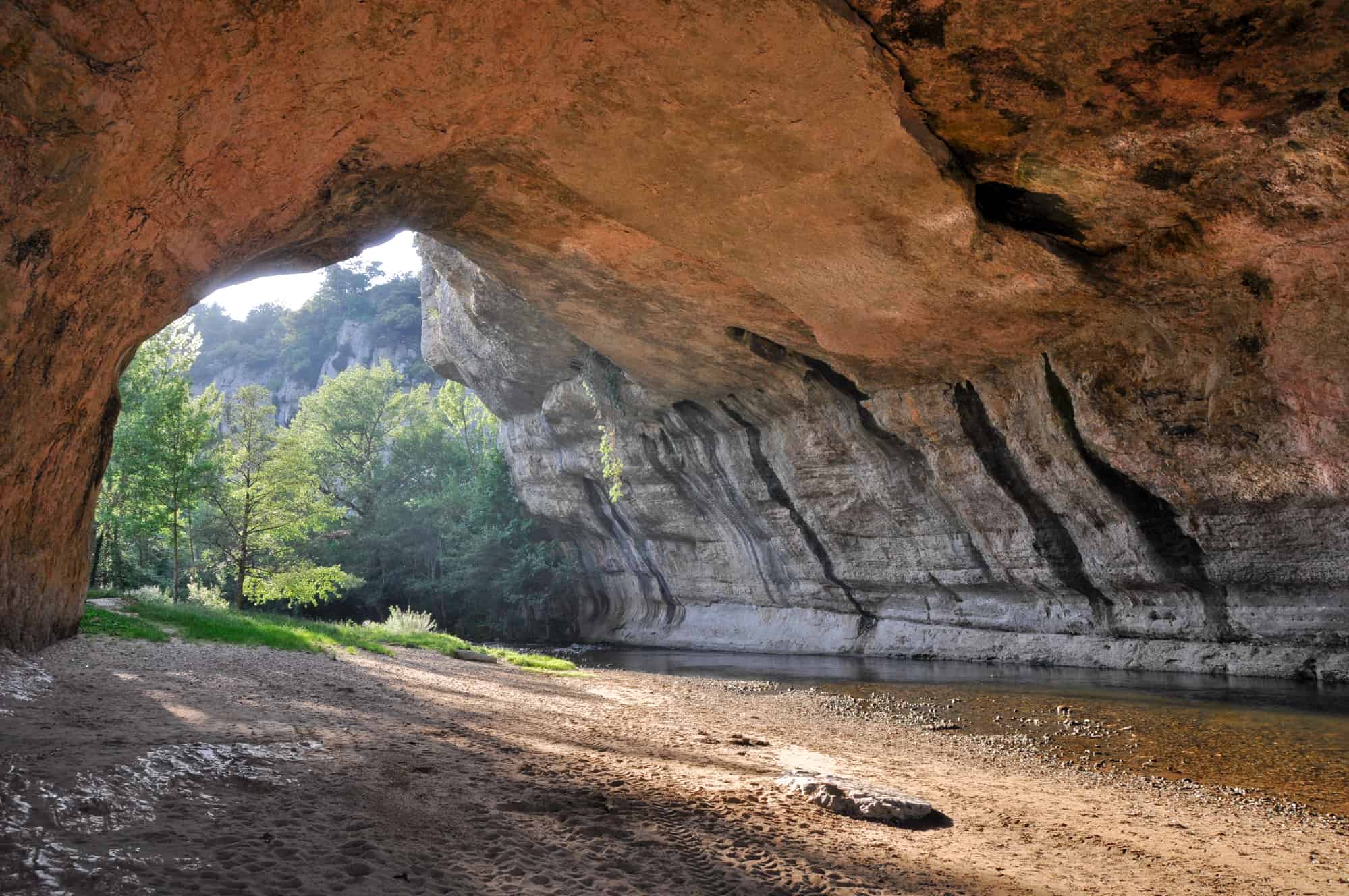
Castile and León
Explore Castile and León, a region in Spain where history and nature come alive. Discover ancient castles, taste delicious local dishes, and wander through beautiful landscapes. It’s a perfect adventure for all ages, packed with sights and flavors.
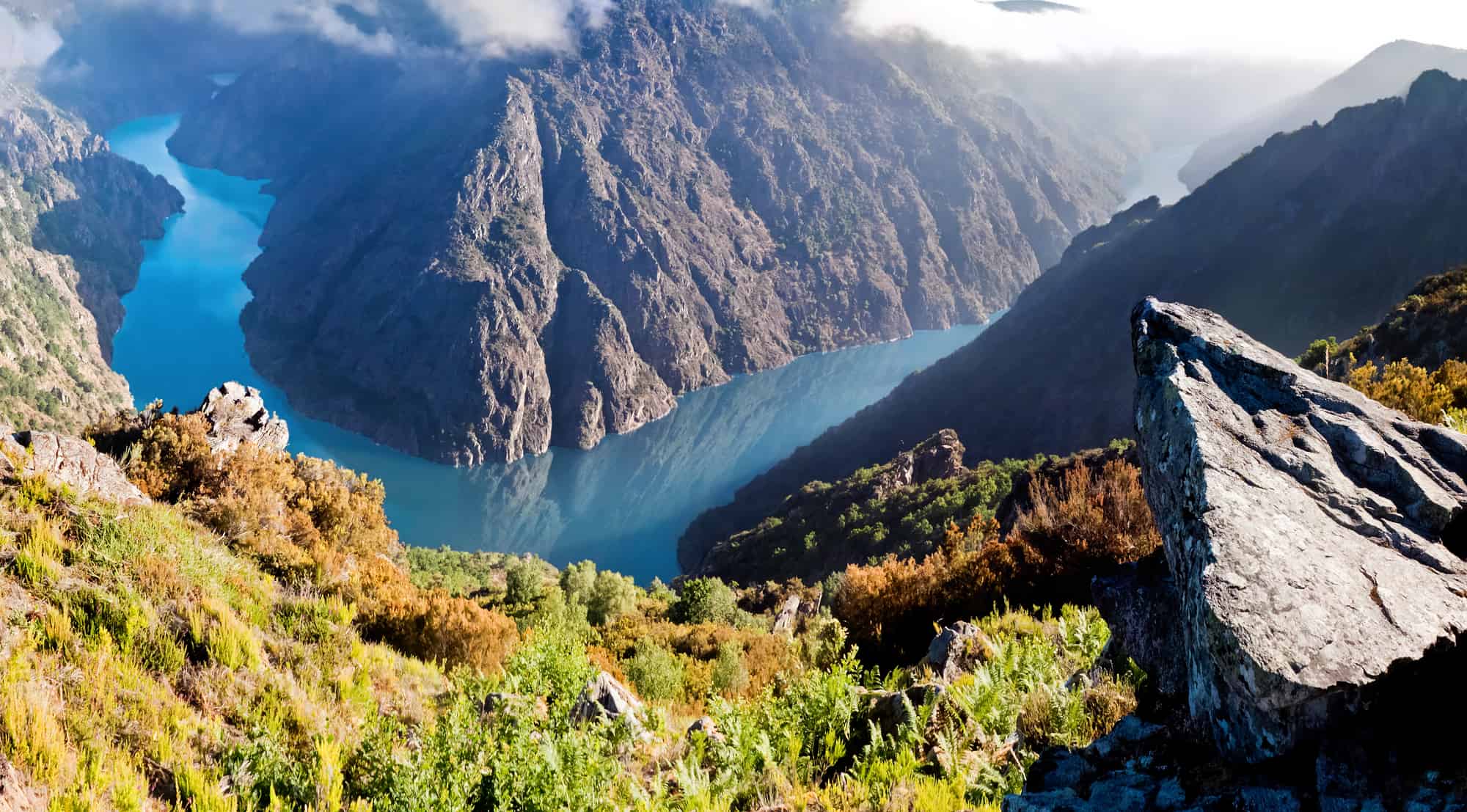
Visit Galicia, a beautiful area in the northwest of Spain, where the ocean meets green lands. It’s a special place known for its old stories and lovely nature. Galicia is perfect for people who love peaceful spots and want to feel close to nature and history.

Latest Spain Travel Blogs

Best Time to Visit Spain: A Complete Guide
When is the best time to visit Spain? The answer isn’t as clear-cut as you might think. Firstly, you’ll need to take into consideration how the weather and climate differ…

Málaga or Marbella: Which to Choose?
If you are trying to decide between Málaga or Marbella for your next vacation, let us help you decide. As a lover of the Costa del Sol, I don’t think…

6 Best Places to Stay in Seville: A Seville Neighborhood Guide
When considering the best places to stay in Seville, you’ll want to decide what sort of vibe you want during your trip to this magical city. The capital of Andalusia,…

Santander Airport: Everything You Need To Know
Santander Airport, also known as Seve Ballesteros-Santander Airport (code: SDR) is situated around 6 km (3.7 miles) from the city center. Thanks to its location by the waterfront, you’ll get…

Hiring a Car in Alicante: Everything You Need to Know
No question about it, hiring a car in Alicante is an awesome idea that will help you make the most of your Spanish vacation. It’s as straightforward for foreigners to…

Weather in Spain in August: Everything you Need to Know
As the peak summer month, the weather in Spain in August picks up exactly where July left off. These two months see the height of the vacation season, the hottest…

15 Best Beach Towns in Spain
If you’re looking for the best beach towns in Spain, you’ll want to narrow down what part of the country you want to explore and what time of year you…

13 Awesome Things to Do in Xátiva Spain
Xátiva, Spain is a beautiful city that is packed with history, beautiful architecture, and stunning views. It is without a doubt one of my favorite day trips from Valencia and…

10 Absolute Best Day Trips from Madrid
From the Prado Museum to Gran Vía, Madrid has plenty to keep you busy during your visit. However, whether it’s because you have extra time or you feel the need…

15 Best Things to Do in Benidorm
As the calm azure-hued waters lap the glistening sands of Playa Levante at sunrise, you know another memorable day is in store here in Benidorm. The mesmeric seaside town has…
Privacy Policy
Popular Posts
Warmest Places in Spain Most Beautiful Cities Meditation Retreats
Communities of Spain
Madrid Catalonia Andalusia
Spanish Cities
Barcelona Seville Madrid Malaga
- The Netherlands
- Switzerland
- The Philippines
- South Africa
- The United States of America
- New Zealand
- French Polynesia
- Our destination wedding
- Budget tips
- Travel photography
- Packing lists
- Hotel guides
- Travel guides
- Itineraries
- Work with us
- Search for: Search Button
Travel blogs on Spain
Here you will find all my blogs about Spain
Spain! The ultimate summer holiday destination in Europe. As a child, I spent many weeks on the Costa Brava in Spain or city trips to Barcelona and Madrid. Both Ries and I have lived in Madrid and even though we still hardly speak Spanish. Spain continues to have a special place in our hearts!
Below you will find the blogs we wrote about Spain. From blogs with the best restaurants in Madrid to long weekend travel guides to Andalusia. You will also find a useful map for Spain on this page and we link to the best flight deals to fly to Spain!
The higlights and hotspots of Spain!
Below you will find a map of Spain with the highlights and hotspots of Spain.
Map of Spain
All of our blogs on spain.
On this page you will find all of our blogs on Spain. Scroll down to see them all or read the most popular blogs on Spain here:
- The best restaurants and hotspots in Madrid
- Andalusia blog : tips for a road trip through Andalusia
- The best Mallorca tips for a holiday to this beautiful Spanish island!
- Barcelona travel blog : the best tips for a weekend in Barcelona!
Travel information for Spain
Best p eriod: All year round How long: weekend getaway till monthlong road trip in Spain! Best hotels: coming soon!
Flightdeals Spain: click here for the most recent flight deals to Spain Car rental: we recommend Sunny Cars for can rental in Spain.
All travel blogs on Spain
A holiday to andalusia (south of spain): what to do in malaga, barcelona travel blog: the best hotspots and things to do in barcelona, spain, madrid travel blog: the 16 best restaurants and hotspots in madrid (spain), mallorca travel guide: 6 cool things to do & our favorite mallorca hotspots.
You will be redirected to your dashboard shortly. We will also call you back in 24 hrs .
- Hidden Gems In Spain You Won’t Find On Any Other List
26 Apr 2024
Spain is a mesmerising land of wonders that is renowned for its sunny weather and vibrant culture. While some of its iconic tourist spots like the Sagrada Familia in Barcelona and Alhambra in Granada take the spotlight (and rightfully so) there is so much more for this amazing country to offer. So from the sunny and sweet life of Cadaques to the charming city of Ronda, here is a list of hidden gems in Spain that you must add to your bucket list.
Top 10 Best Hidden Gems in Spain You Must Explore
Discover some of the most beautiful hidden gems in Spain and experience this amazing country like no other. So what are you waiting for? Pack your bags, stray off the beaten path, and explore these 10 stunning hidden gems in Spain that are only known to passionate travellers and locals.
1. Setenil de las Bodegas, Andalusia

Image Source: Shutterstock
Located in the beautiful region of Andalusia, Setenil de las Bodegas is a unique village that is nestled deep within a canyon. However, its most impressive feature is the gigantic rocks that overhang the pretty white houses. These houses were originally built by some of the village’s most astute people who wanted to avoid paying for new roofs. But these enormous rocks also help keep the very high temperature during summers in check. With around 3000 inhabitants, this small and picturesque village is unlike anything you’ve ever seen and is one of the best hidden gems in Spain. So take a stroll through the narrow streets of this amazing village and indulge in delicious cuisines served at their cave restaurants.
Things To Do:
- Wander around the rock covered streets
- Visit the Arab Castle
- Enjoy the viewpoint of Setenil
- Visit the churches of Setenil de las Bodegas
- Enjoy the local cuisine
Where To Stay: Hotel Tugasa El Almendral, Hotel Villa De Setenil, Casa Marta, Casa Bajo la Roca
Must Read: Summer In Spain
2. Calella da Palafrugell, Costa Brava

Situated in the Costa Brava region of Catalonia, Calella de Palafrugell is one of the best hidden gems in Spain. With its stunning beaches, relaxed atmosphere, and vibrant culture, Calella de Palafrugell is the perfect destination for people who want to escape from the bustling city of Barcelona. The town is also well-suited for tourists who enjoy outdoor activities such as swimming, snorkelling, kayaking, and scuba diving. To make your visit memorable, you can also consider visiting the local markets to find fresh produce, flowers, and even some traditional souvenirs.
- Plan a trip to Costa Brava and Dali Museum from Barcelona
- Spend a day at the beach
- Embark on a scenic coastal walk along Cami de Ronda
- Visit the botanical gardens
- Explore the old town
Where To Stay: Hotel Garbi, Hotal Alga, Hotel Sant Roc, Hotel La Torre, Calella golfet sobremar
3. Jardins de les Tres Xemeneies, Barcelona
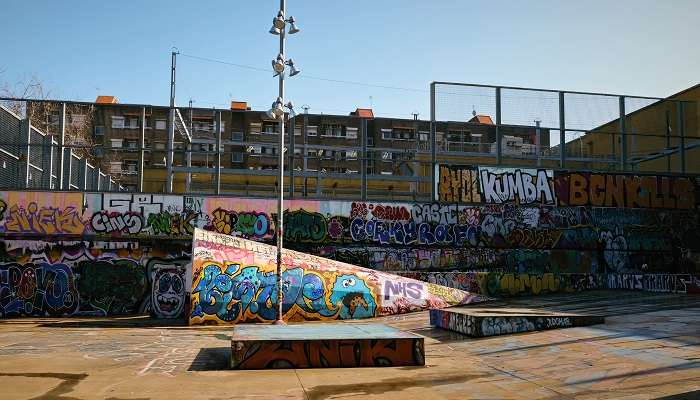
Jardins de les Tres Xemeneies, literally translating to “Garden of the Three Chimneys”, is one of the most beautiful hidden gems in Barcelona. Formerly a power plant, this urban space has been preserved for the local residents to relax and enjoy some leisure time. Covered by funky graffiti and artworks by some of Barcelona’s best street artists, the old industrial walls now work as concrete canvases and are updated every week. Various activities such as ping-pong tables, skate parks, and playgrounds also help make Tres Xemeneies the perfect place for a fun time with friends or family.
- Enjoy a simple and relaxing picnic
- Take in the excellent views
- Check out the cultural events and performances
- Participate in skateboarding
- Explore street art and murals
Where To Stay: Andante Hotel, Sixtytwo Hotel, INNSiDe by Melia Barcelona Apolo
Suggested Read: Barcelona In May
4. Aguero, Huesca
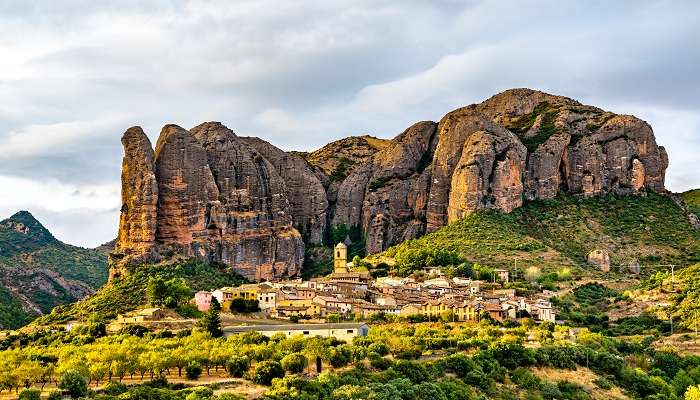
Aguero is a small village located in the province of Huesca that is surrounded by gigantic 200m rock formations. Known as “Mallos de Aguero”, these reddish rock formations have been sculpted by constant erosion and have survived to the present day. The stunning view of the city and interesting geology also makes this hidden gem a unique place for climbers and photographers. It is also advised to visit the 12th century Santiago church and marvel at its beautiful stained glass windows depicting scenes from the Bible. To reach the town, you have to cross a thick forest and winding roads. Once cleared, the old town of Aguero stands out in the distance.
- Visit the Mallos de Aguero
- Explore the village
- Go on a hike
- Indulge in local cuisines
- Visit the medieval town of Riglos
Where To Stay: Hotel Spa Aguas de los Mallos, Alen D’Aragon, Hotel Read Posada De Liena, Casa Mallos de Aguero
5. Portocolom, Mallorca
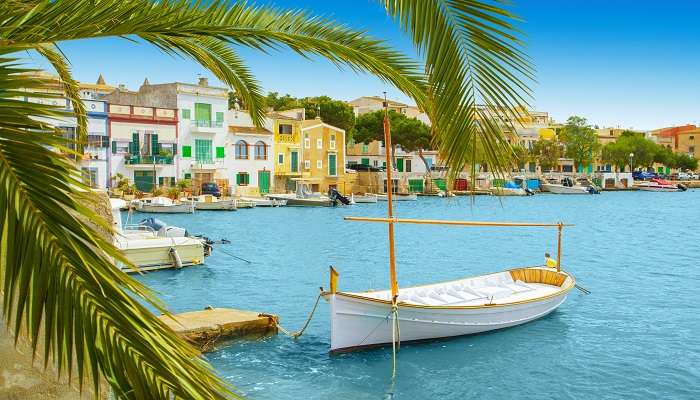
The village of Portocolom is located in the south-east portion of the island of Mallorca and is one of its most beautiful seaside resorts. It is also one of the most established resorts on the island offering a wide range of hotels, bars, and restaurants. The main beach in Portocolom, Cala Marcal, is also just 800 metres away from the village and its turquoise waters make is a great family-friendly place to relax. So whether you are looking to lay down in the warm sands of Cala Marsal or go for a swim in its sandy shallow waters. Portocolom is one of the best hidden gems in Mallorca and the perfect destination for travellers looking for a memorable experience.
- Visit Cala Marcal Beach
- Explore Portocolom Bay
- Visit the Santuario de Sant Salvador
- Dine at a seaside restaraunt
- Explore Cala Brafi
Where To Stay: Grupotal Club Cala Marsal, Hotel Vistamar, JS Portocolom Suites, JS Cape Colom
Suggested Read: National Parks Of Spain
6. Museo de Historia de Madrid, Madrid
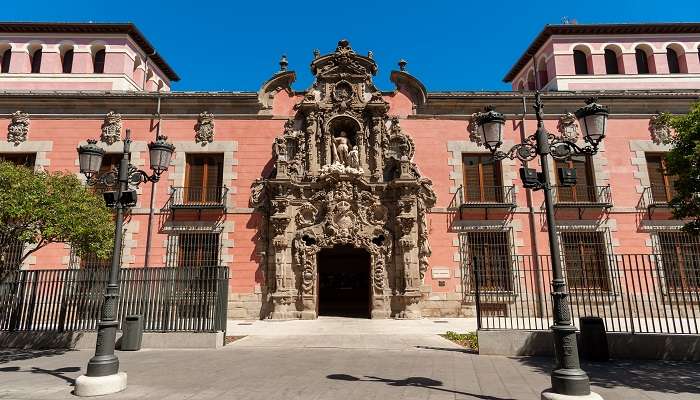
The Museo de Historia de Madrid is one of the most amazing hidden gems in Madrid and offers a fascinating glimpse into the Madrid’s past. The museum exhibits several artifacts that showcase the Spanish capital’s rich history and culture from the 16th to 20th century. One highlight of the museum is its model replica of the city of Madrid which helps give visitors a unique perspective on the evolution of the city. Additionally, there are also several collections dedicated to fans of Real Madrid CF and porcelains celebrating the significance of historical events such as Dos de Mayo uprising. The Museo de Historia is the perfect place for history buffs and definitely worth a visit on your next vacation to Madrid!
- Explore the Exhibits
- Learn About Madrid’s Evolution
- Admire Architectural Highlights of Madrid
- Attent Temporary Exhibitions and Events
- Visit the Sala de Alcaldes
Where To Stay: Sagasta Suites Luxury Apartments, Woohoo Rooms Fuencarral, URSO Hotel and Spa
7. Mijas, Andalusia
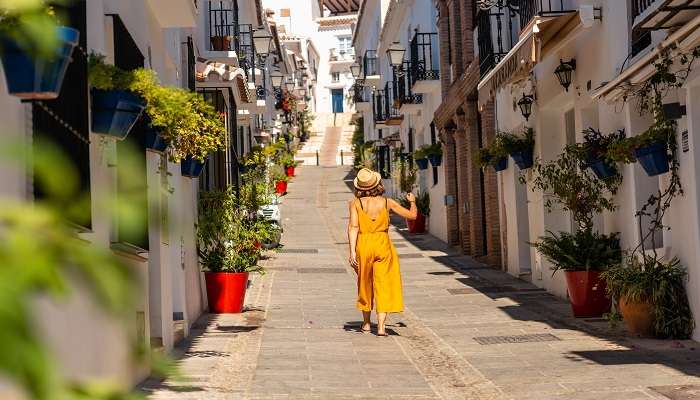
Located on the southeastern coast of Spain, the small village of Mijas is often referred to as the crown jewel of Costa del Sol region. The village is just 30 minutes away from Malaga and nestles comfortably in the mountainside at 400 kms above sea level. Despite being small, Mijas has plenty to offer to tourists. This includes the several restaraunts dotted around the village, art galleries, and Museo Historico de Mijas. However, one of the most beautiful highlights of this hidden gem is definitely the Old Mijas or “Mijas cidade velha”. The white facades with thousands of geraniums hanging on the walls is one of the defining characters of this village and makes it the perfect place for photographers.
- Explore the Mijas Pueblo
- Take a Donkey Taxi Ride
- Visit the Mijas Bullring
- Relax at the Beach
- Visit the Mijas Wine Museum
Where To Stay: Ilunuin Hacienda de Mijas, TRH Mijas, La Zambra Resort GL, La Posada de Mijas
Suggested Read: Andalusia Travel
8. Tossa de Mar, Costa Brava
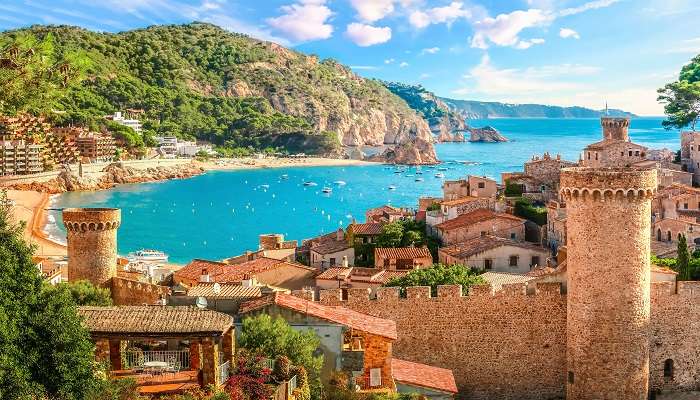
Standing proudly on the northern cost of Catalonia, this city of Tossa de Mar is one of the most beautiful hidden gems in Spain.Tossa de Mar is actually a medieval city that is home to beautiful coves and hiking trails. The town also offers a gorgeous panoramic view of the Mediterranean Sea and is also quite popular for its sandy beaches lighthouse, and historic fortified medieval village. Tossa de Mar is just 2 hours from the centre of Barcelona and definitely a destination you want to put on the top of your travel bucket list!
- Explore the Old Town
- Visit the Tossa Beach
- Explore the Sa Riera Beach
- Visit the Tossa de Mar
- Dine in Seafront Restaurants
Where To Stay: Hotel Don Juan Tossa, Hotel Windsor, Gran Hotel Reymar, Hotel Capri, Marina Tossa
9. Coves de Sant Josep, Valencia
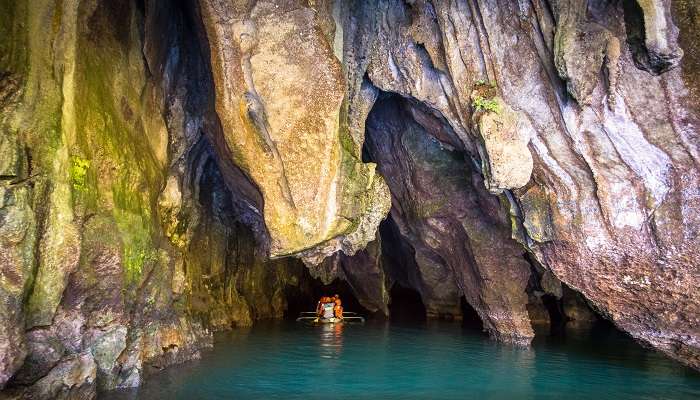
Home to the longest navigable underground river in Europe, Coves de Sant Josep is not a place you want to miss. This unique natural jewel allows tourists to enter the depths of Sierra de Espadan through a natural path traced by water for millenia. Additionally, Coves de Sant Josep offer important cultural enclave where the unique prehistoric paintings and engravings at the entrance of the cave stand out. However, despite being Europe’s longest navigable underground river, Coves de Sant Josep is a fairly less established spot making it one of the most beautiful hidden gems in Valencia.
- Embark on a Guided Boat Tour Through the Caves
- Discover the Cathedral Room
- Explore the Underground Gallery
- Learn About the Cave Formations
Where To Stay: Hotel Baru, Sercotel Plana Parc, AGH Canet Hotel, Hostal Casa Paco, Grand Hotel Toledo
Suggested Read: Spanish Street Food
10. Deia, Mallorca
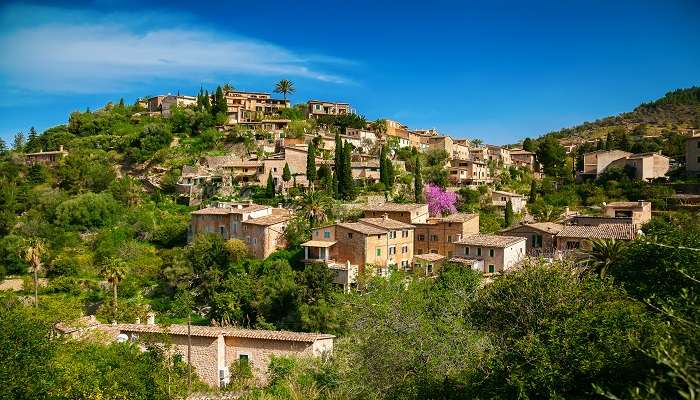
Located on the northwest coast of Mallorca, Deia is a small village that has long been a magnet for favourite artists. This small coastal village is perched in a ravine at the foot of Tein mountain with a jawdropping view of the Mediterranean Sea. As one of the highest populated zone of Serra de Tramintana, Deia is also a part of landscape awarded World Heritage Site. Much of Deia’s appeal lies in its relaxed vibe and amazing surroundings mixed in with the impressive view of blue sea and stunning mountains. To get the complete experience, you can also opt for pleasurable eating and drinking at one of the many restaurants dotted around the village.
- Explore the Village
- Visit Robert Graves’ House
- Hike the GR-221
- Visit Cala Deia
- Attend a Cultural Event
Where To Stay: La Residencia, Hoposa Costa D’or, Hostal Villa Verde, Hostal Miramar, Sa Pedrissa
Further Read: Reasons To Visit Spain
Stray off the beaten path and explore these hidden gems in Spain. Experience Spain’s beautiful landscape, rich history, and culture to the fullest. While visiting these offbeat destinations, you can find a chance to escape the crowds and explore places only known to locals. So what are you waiting for? On your next trip to Spain, embark on a excitement filled journey through the many hidden gems in Spain and experience the country like no other.
For our editorial codes of conduct and copyright disclaimer, please click here .
Cover Image Source: Shutterstock
Frequently Asked Questions About Hidden Gems in Spain
What is the most unique thing in Spain?
- Tabernas, Almeria
- Museo Atlantico Lanzarote, Canary Islands
- La Tomatina Festival
- Setenil de las Bodegas
- Restaurante el Diablo
- The Rio Tinto Mines
- Sobrino de Motin
What is the most relaxing part of Spain?
Tenerife is an island in the Canary Islands and is generally considered to be the perfect place for a relaxing holiday. This popular tourist destination is known for its beaches, mountains, and being one of the most peaceful places on Earth.
Does Spain have nightlife?
Yes! In fact, one of the many reasons why people love Spain is its incredible nightlife. Spanish culture is known for its social atomsphere and late nights. Many Spanish cities, such as Ibiza, are known for their buzzing nightlife as well.
What food is unique to Spain?
Some unique foods that you must try on your trip to Spain include:
- Tortilla Espanola
- Gambas al Ajillo
- Tostas de tomate y jamon
- Patatas bravas
What is the best month to visit Spain?
Spain has a number of different climatic conditions that may affect the kind of holiday you have. Typically, months from March to May or September to November are considered to be the best times to visit Spain.
People Also Read:
Hidden Gems In Japan Hidden Gems In Las Vegas Hidden Gems In Italy
Recent Posts

11 Villages In France: Perfect For Adventure Seekers

10 Picturesque Villages In Switzerland Loaded With Natural Charm
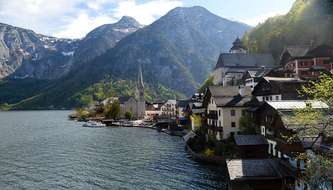
10 Charming Villages In Austria That You Can Explore Off The Beaten Path

12 Hidden Gems In Maryland: Seek Offbeat Experience

10 Captivating Reasons To Visit Japan: Unveiling The Land Of Endless Wonders

Discover 14 Hidden Gems In San Francisco For An Offbeat Experience
Trending Blogs

20 Mysterious Places In India To Visit In 2023 More Bizarre Than The Bermuda Triangle

10 Scariest Roads In India That Are A Driver’s Nightmare

101 Places To Visit In India Before You Turn 30 in 2024

35 Exotic Places To Visit In December In India 2024 To Enjoy A Surreal Vacation

60 Best Honeymoon Destinations In India In 2024

95 Best Honeymoon Destinations In The World In 2023 For A Romantic Escape!
Best Places To Visit In India By Month
Best places to visit outside india by month.
- TravelTriangle
- International
- Spain »
- Tour Packages
- Honeymoon Packages
- Family Packages
- Budget Tour Packages
- Luxury Tour Packages
- Adventure Tour Packages
- Group Tour Packages
- Maldives Tour Packages
- Bali Tour Packages
- Dubai Tour Packages
- Singapore Tour Packages
- Thailand Tour Packages
- Europe Tour Packages
- Sri Lanka Tour Packages
- Tour Packages From Delhi
- Tour Packages From Mumbai
- Tour Packages From Bangalore
- Tour Packages From Chennai
- Tour Packages From Kolkata
- Tour Packages From Hyderabad
- Tour Packages From Ahmedabad
- Thailand Tourism
- Bali Tourism
- Singapore Tourism
- Maldives Tourism
- Mauritius Tourism
- Dubai Tourism
- Europe Tourism
- Hotels in Thailand
- Hotels in Maldives
- Hotels in Mauritius
- Hotels in Bali
- Hotels in Dubai
- Hotels in Singapore
- Hotels in Sri Lanka
Travel Safe

Spring time is here! Spain is filled with plans for you
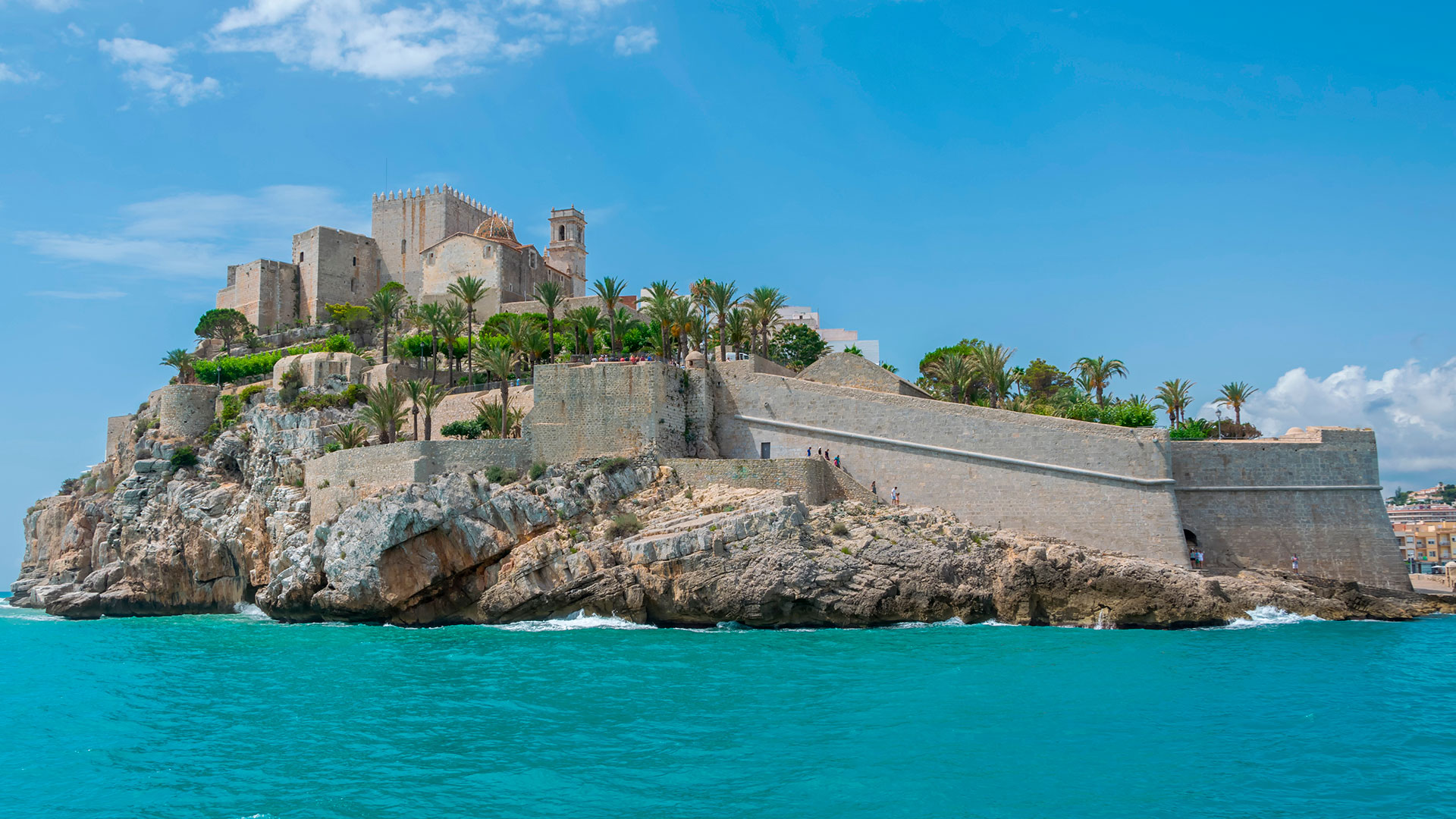
Visit fairytale castles in Spain's most beautiful towns

15 spectacular blossoms to experience up close
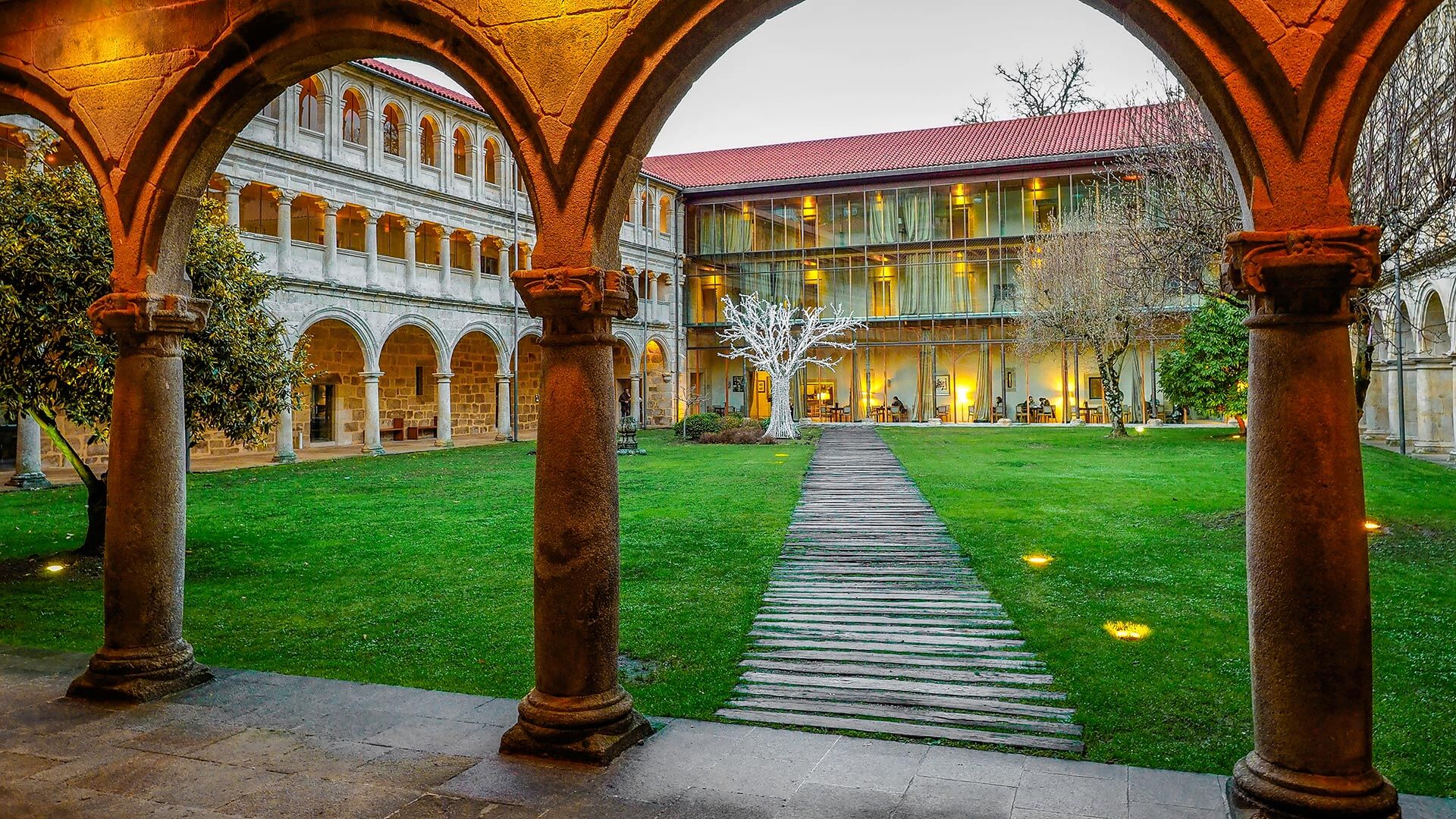
Route of the Monasteries in the Ribeira Sacra
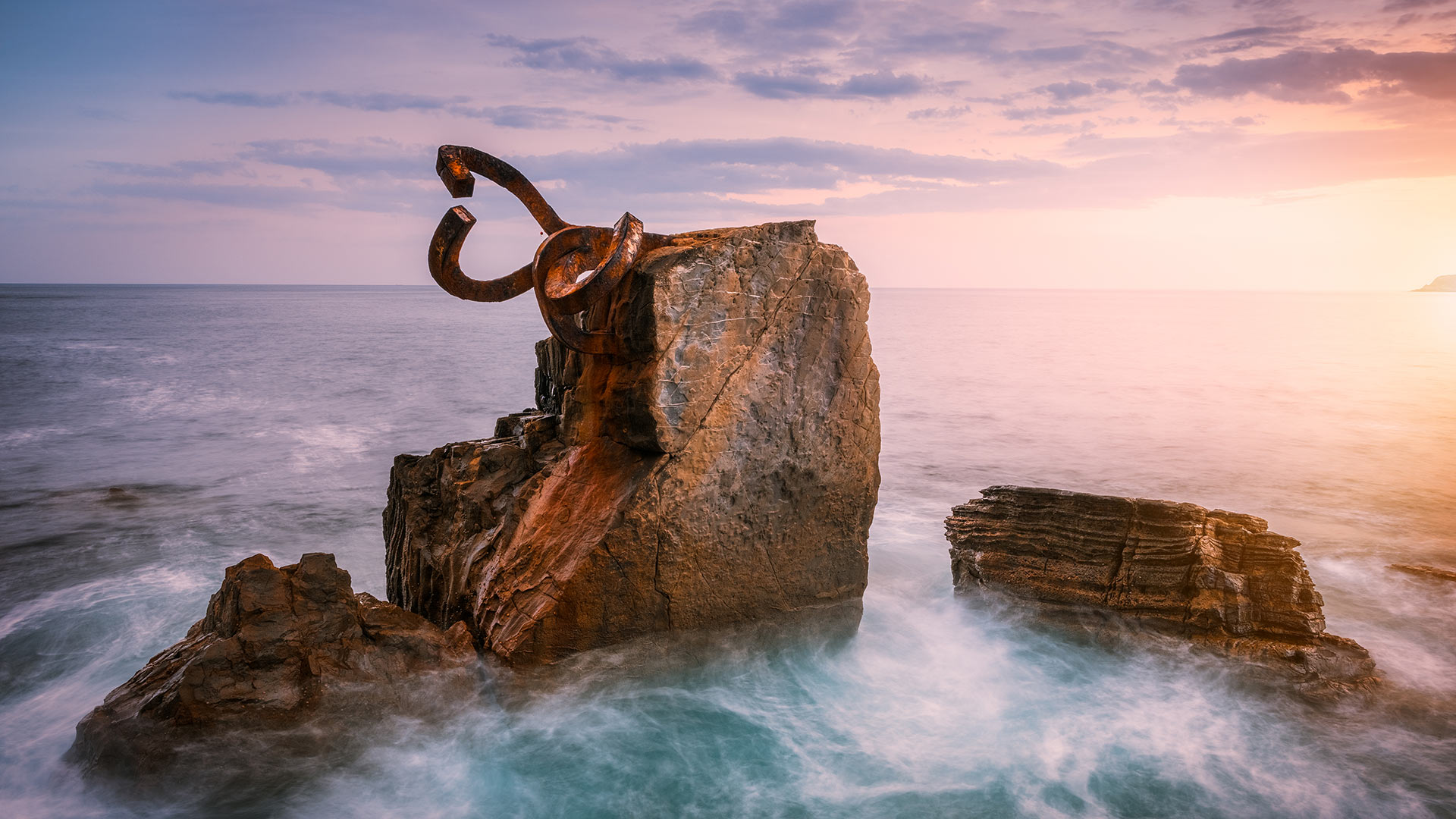
Chillida, 100 years of the universal Basque artist

Start the route with the best music festivals
Discover our destinations
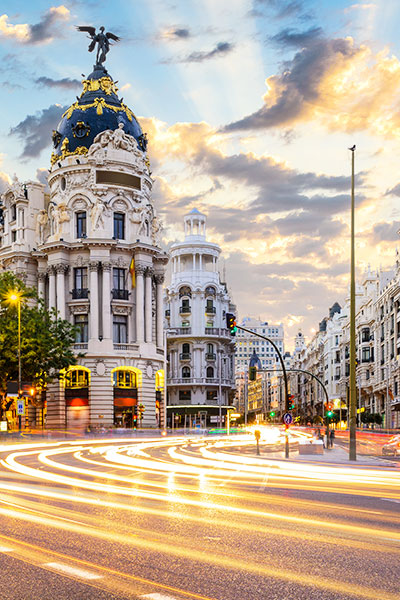
The capital city with a thousand options
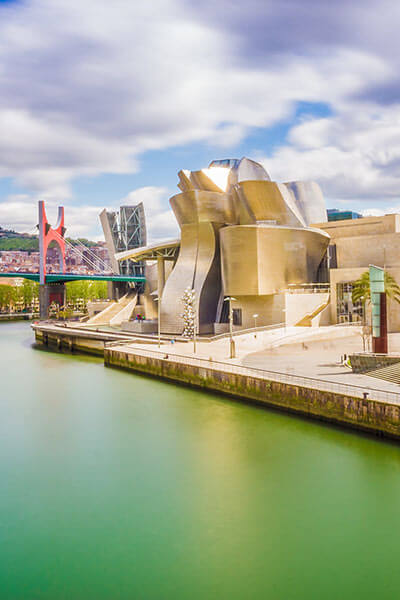
One of Spain’s most avant-garde cities
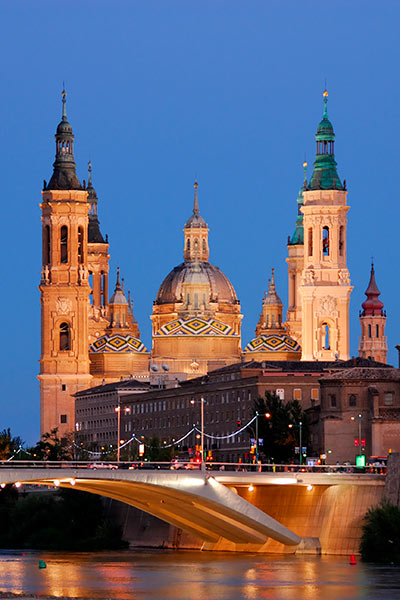
A great city with lots to discover
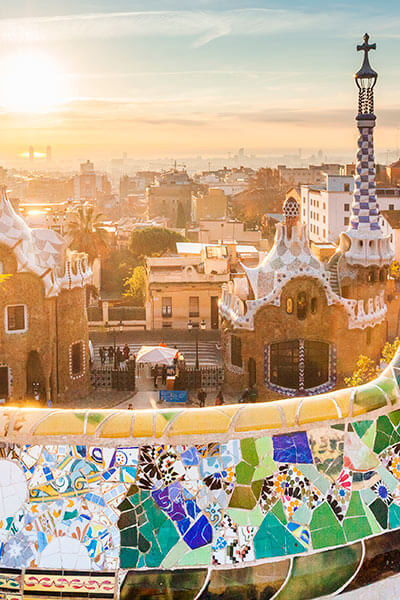
A cosmopolitan vibe
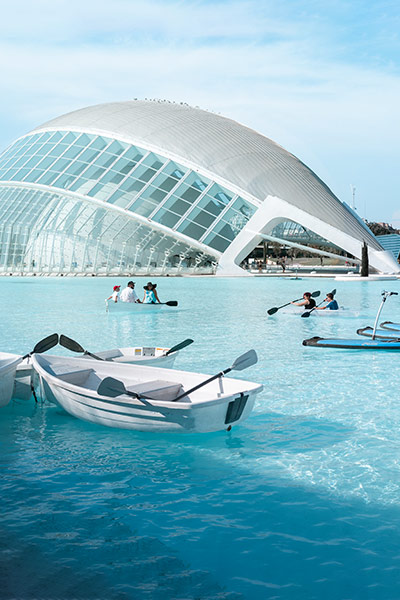
The essence of the Mediterranean
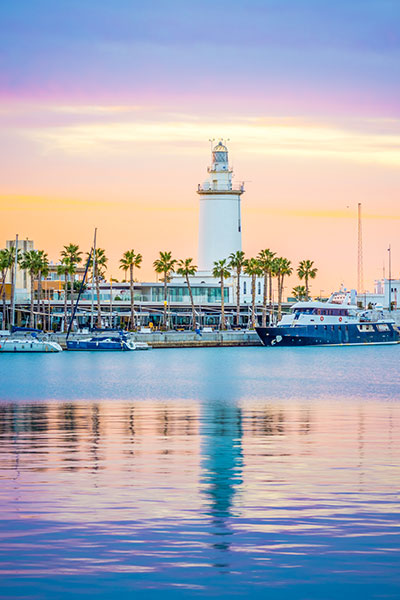
The capital of the Costa del Sol is reinventing itself
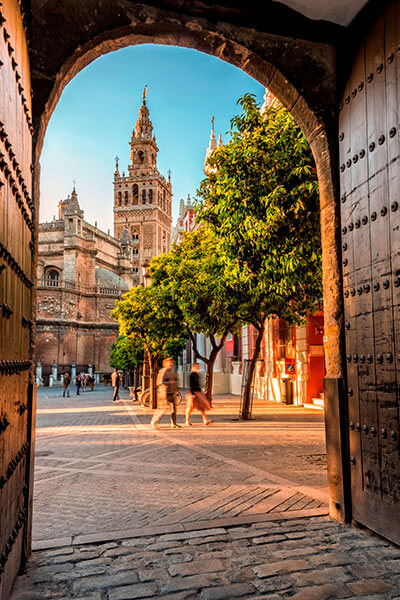
An inspiring destination
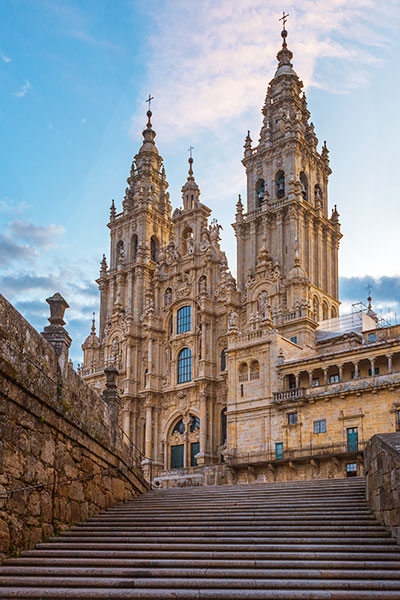
The final destination of St. James’ Way
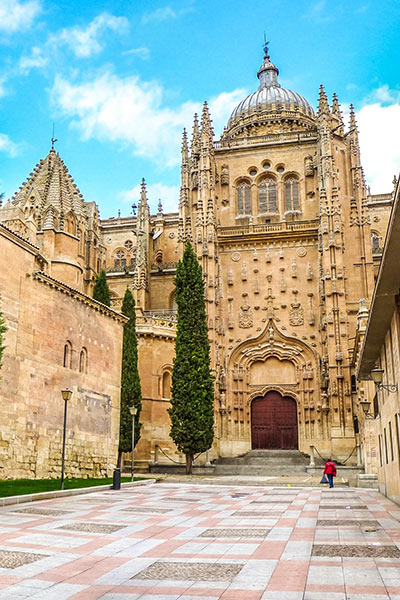
The Golden city of a thousand legends
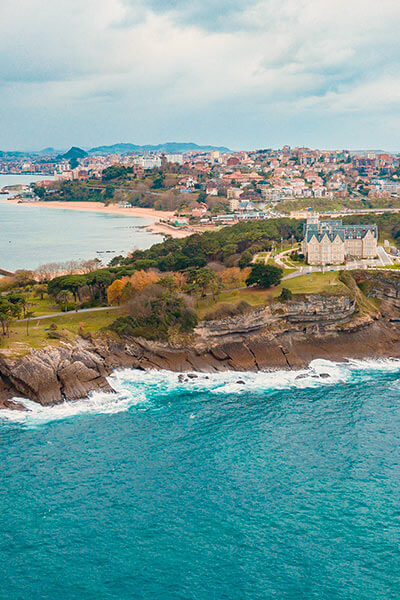
Ideal for a getaway
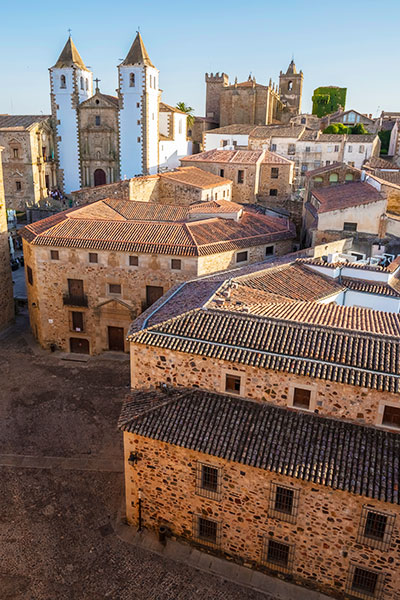
A picturesque medieval setting

European sunshine capital
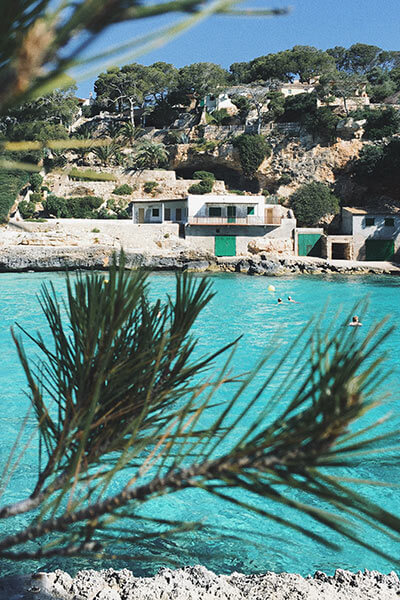
Idyllic coves, beautiful sunsets...
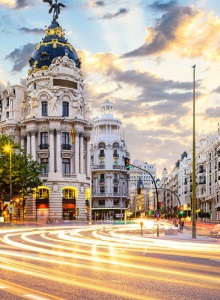
Santiago de Compostela

Canary Islands

Balearic Islands

Not to be missed
Choose the travel plan you like the most to make your stay in Spain unforgettable

Holiday ideas in Spain, depending on how and with whom you travel
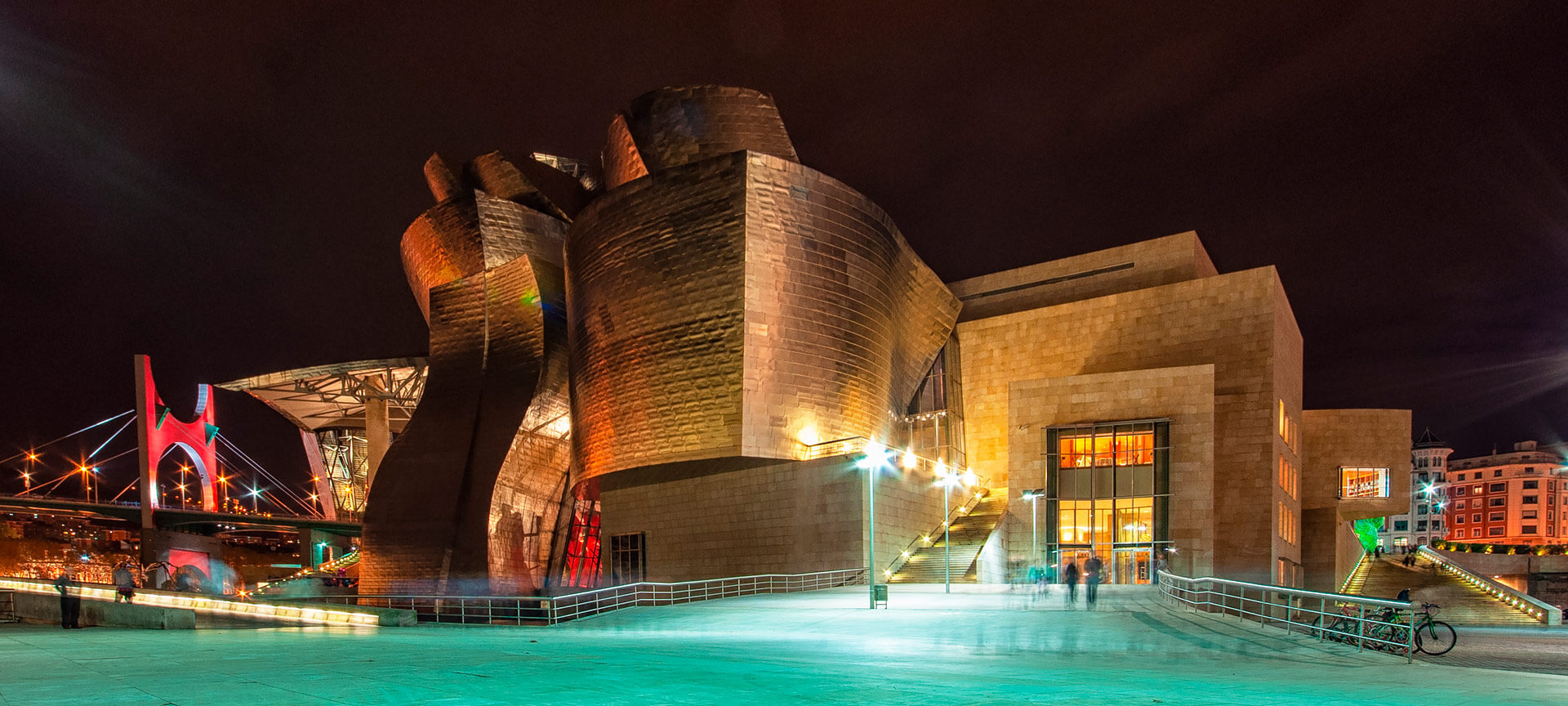
Museum Day is coming! Here are some ideas to make the most of it
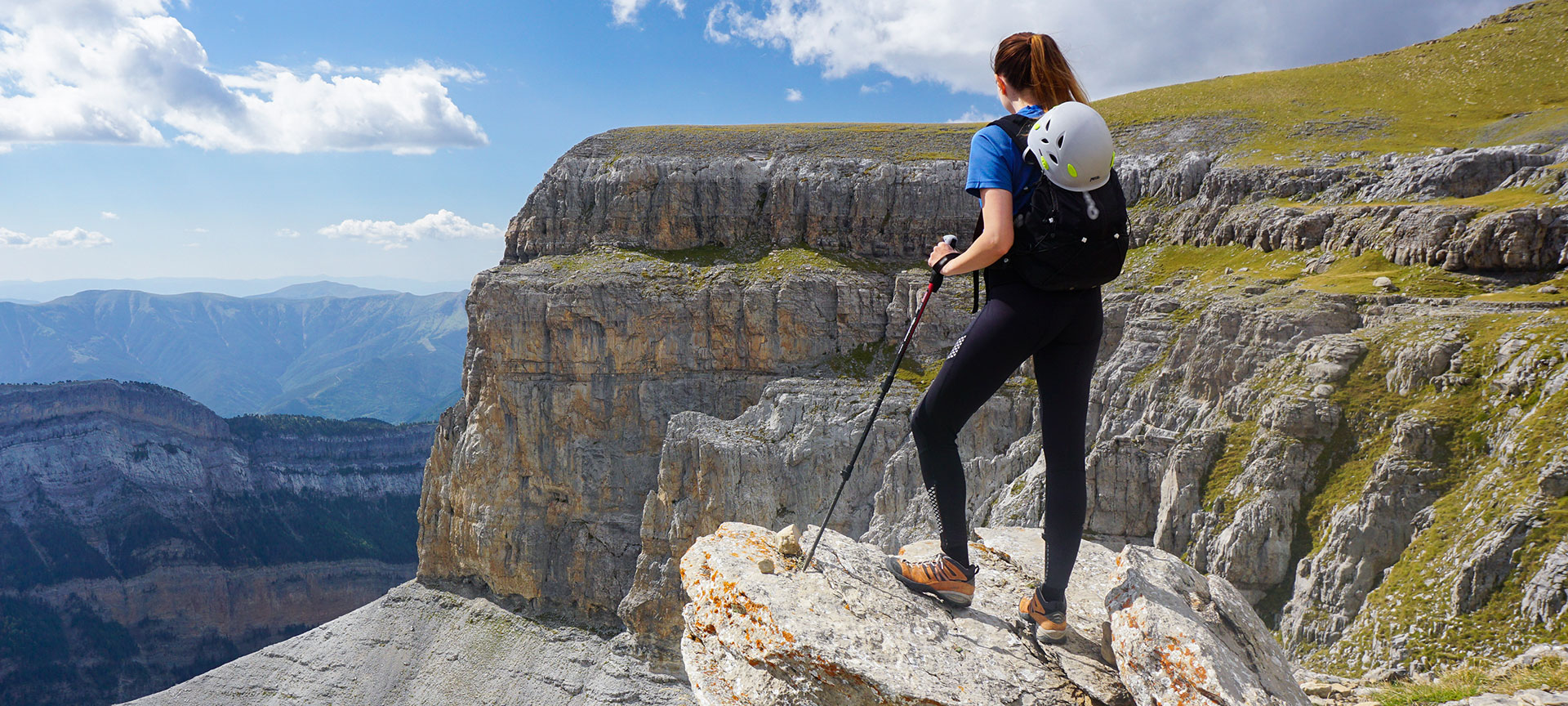
Sport and adventure
Come for a multi-adventure outing! Do you dare?
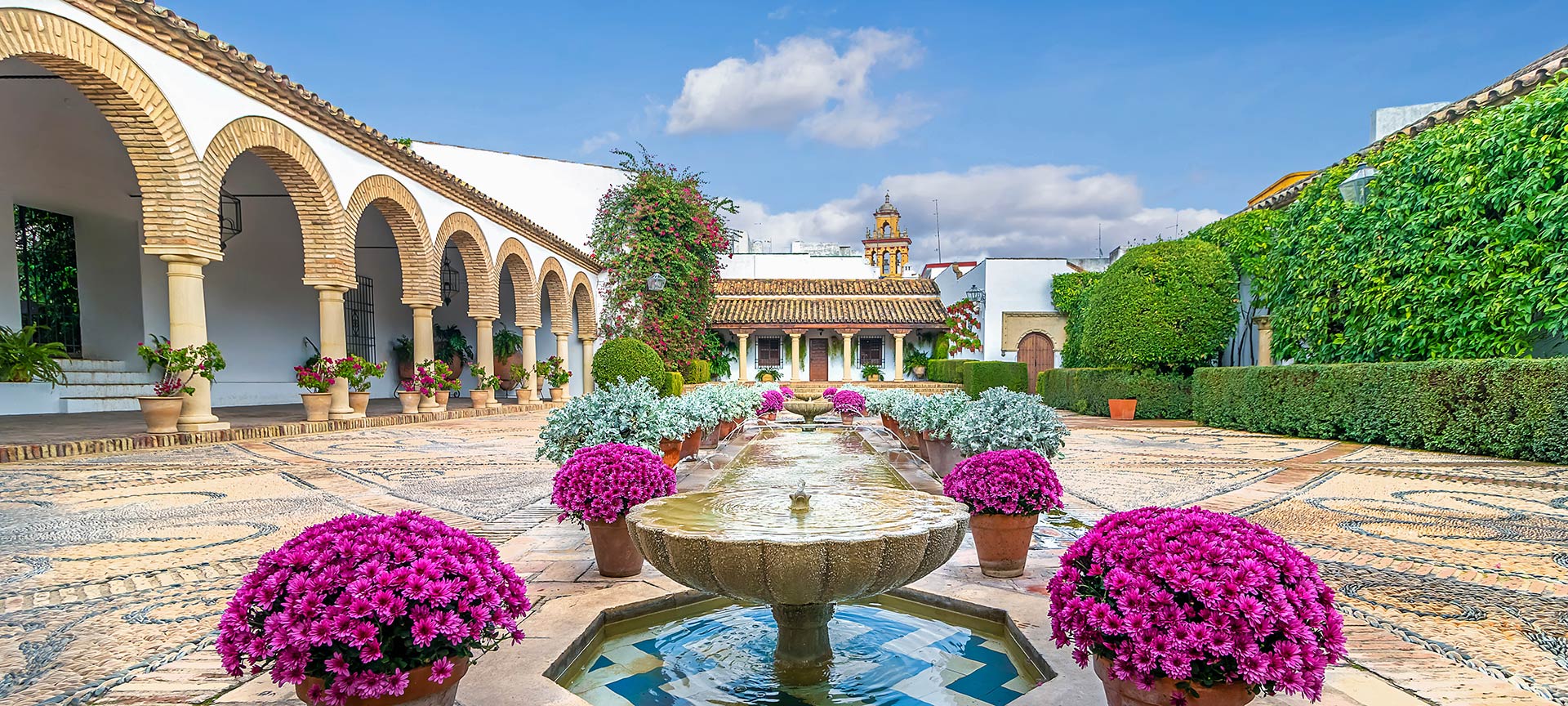
Urban tourism
Cordoba: the city with four visits to places considered as World Heritage sites, packed with festivals in May

Prepare a family getaway to the countryside

Other ideas for your trip
Do you want some more suggestions for your holidays?

Most popular spain.info TikTok videos

Our 10 most-liked photos on Instagram
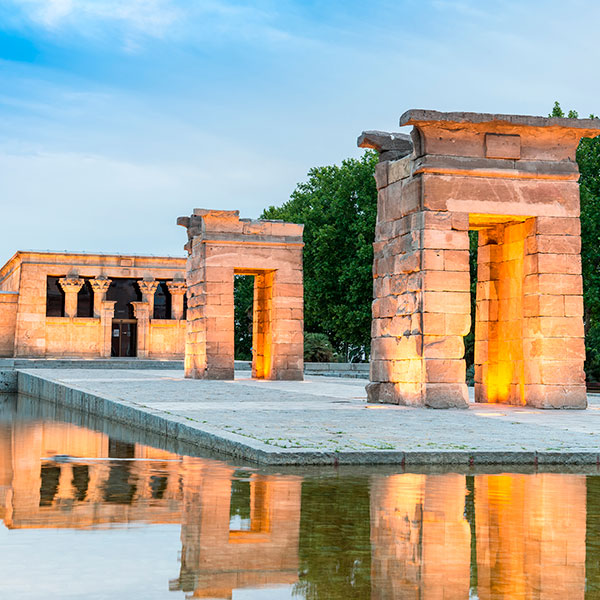
Rediscovering Madrid and Barcelona

Magical natural places in Spain
Are you sure you want to delete this route?

Route planner
Create your own plan for your trip to Spain with a route to suit your requirements
Enjoy the best events
Exhibitions, festivals, festivities... Don't miss a thing!

16 March 2024 - 03 May 2024
Cherry Blossom Festival

22 April 2024 - 05 May 2024
Tennis: Madrid Open

03 May 2024 - 05 May 2024
International Comic Fair
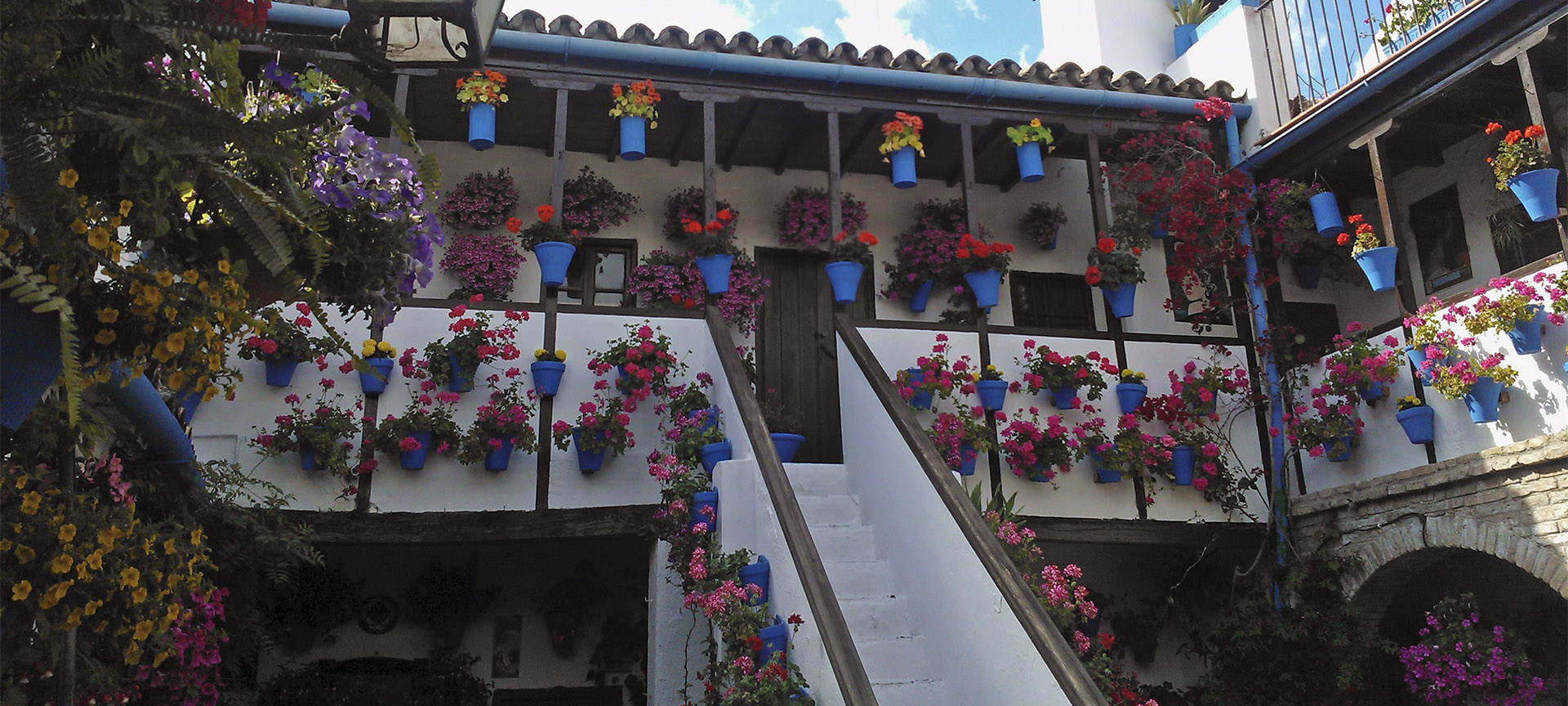
02 May 2024 - 12 May 2024
Festival of the Courtyards in Cordoba
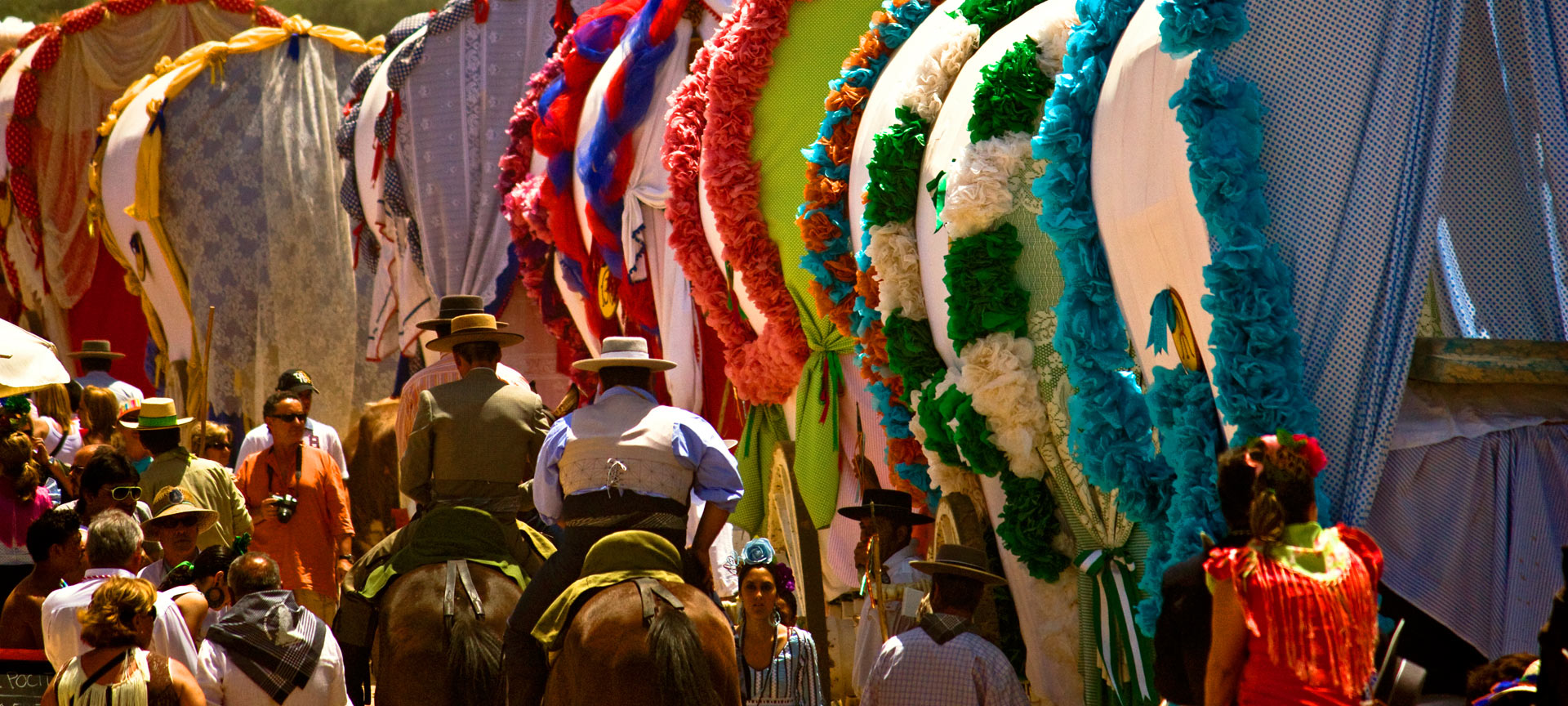
17 May 2024 - 20 May 2024
Pilgrimage of El Rocío
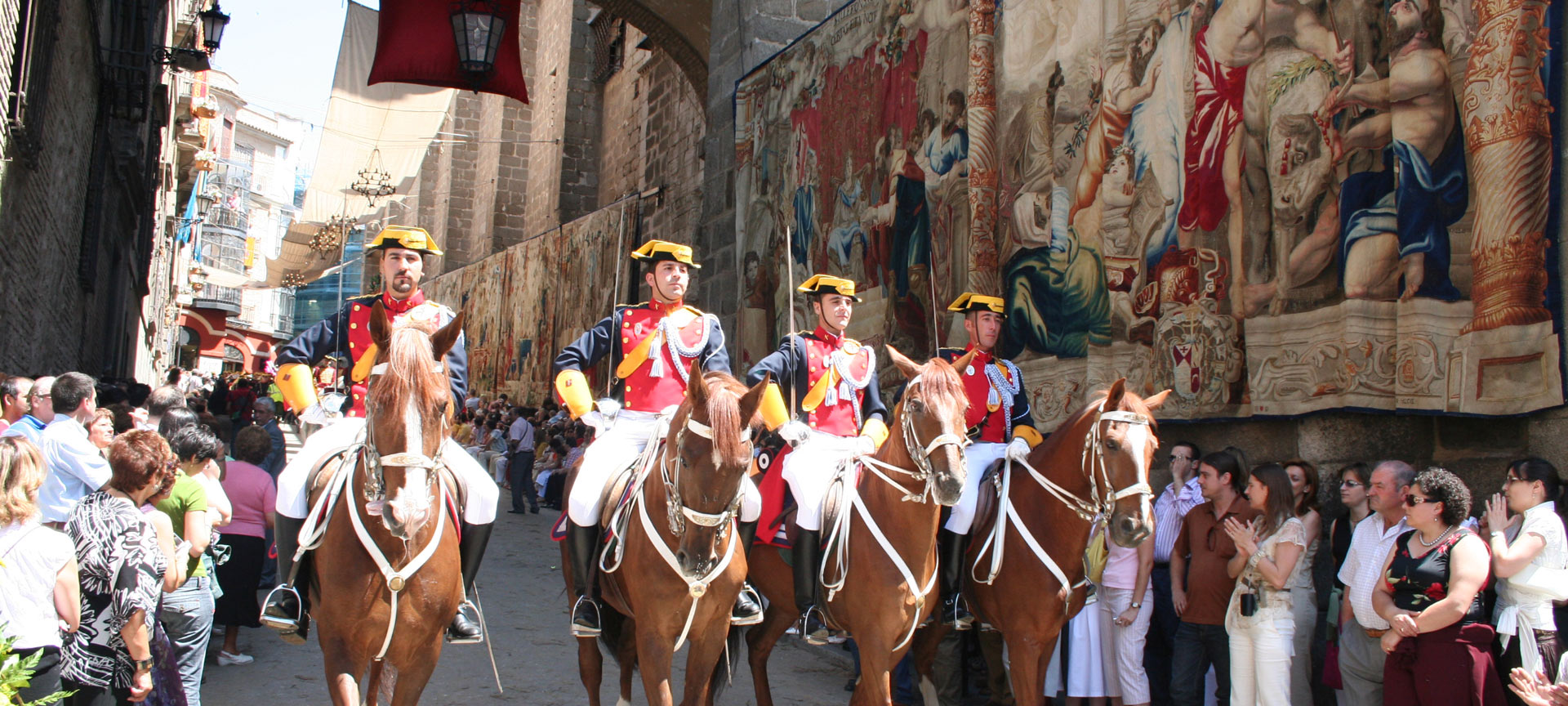
30 May 2024
Corpus Christi in Toledo
All the useful information you need.
Trip advice to get the most out of your holidays
The weather in Spain
Today in: Palma
How to get there
How to get around, practical information.

Book your experience
Thousands of activities thought out for you
#visitSpain
Share the best of Spain on our networks
The best ideas for travelling around Spain
Subscribe to receive monthly information with unique travel plans


11 Top Places to Visit on Your Next Trip to Spain
Posted: January 25, 2024 | Last updated: January 25, 2024
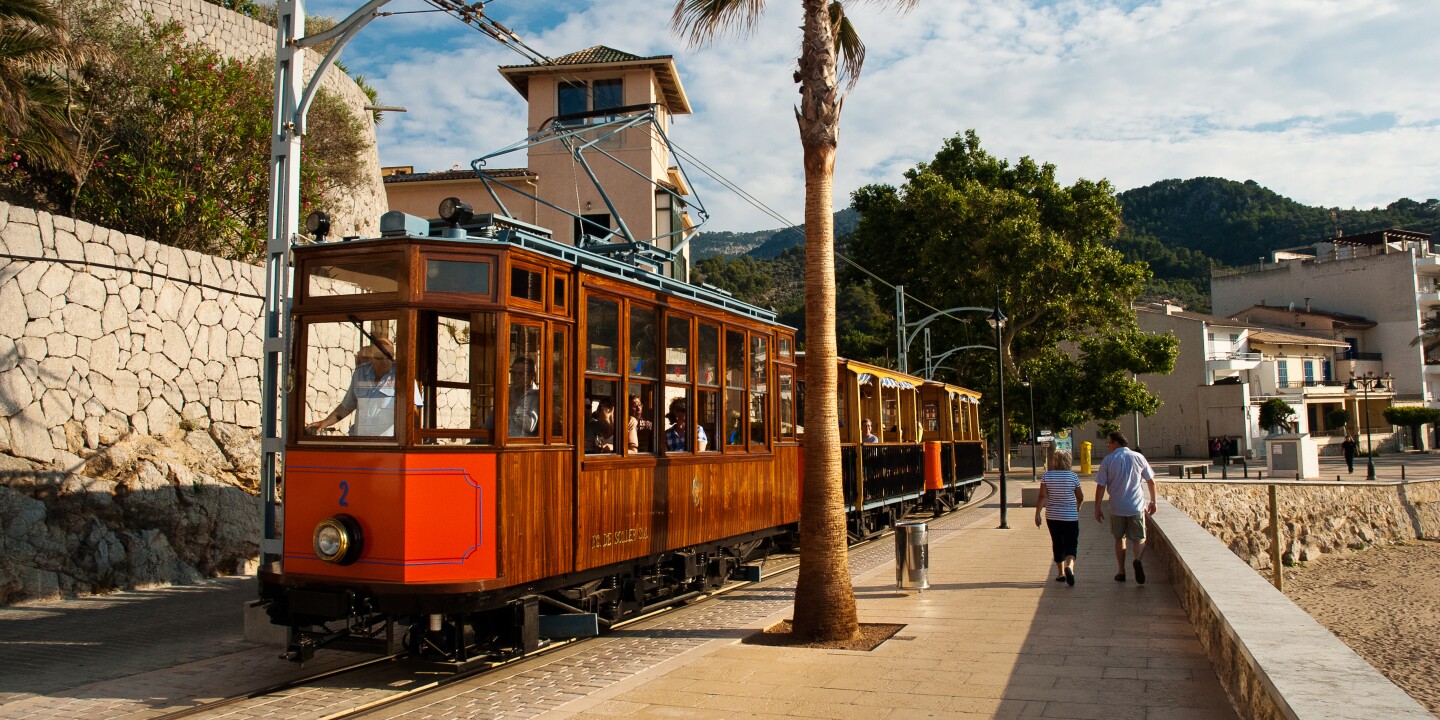
One of the best places to visit in Spain is Mallorca, where you can hop on the Tren de Sóller.
Photo by Francesco Lastrucci
It’s true: Spain is a country every type of traveler can enjoy. This may surprise those who mostly associate the country with its golden beaches and flamenco (as I did before my nine-month stint in La Rioja), but the Iberian Peninsula kingdom comprises 17 autonomous communities—like Madrid and Andalucia—and they encompass a wide spectrum of cultures. Throughout Spain you can come across people like the Basques and the Catalonians, who speak their own language, and landscapes that span centuries-old palaces, mountain peaks, and even valleys full of cherry blossoms in the spring.
So yes, absolutely dig into that platter of paella in Valencia to experience Spanish culture. But think about visiting these 10 other places, too. Because while many of the best places to visit in Spain are well-loved, some offer a side to the country that may surprise you.
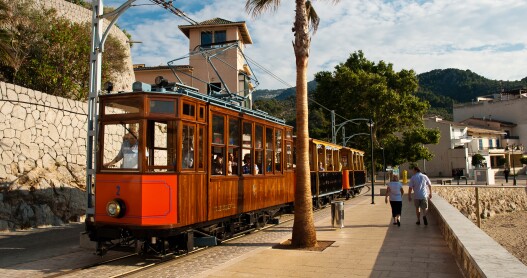
1. Mallorca
Balearic Islands
Off Spain’s eastern coast is the island of Mallorca, a prime example of Spain’s mixed history. Here, travelers can find traces of its former Roman, Moorish, and Christian occupants, like the 800-year-old La Seu , a Gothic sandstone cathedral, or the Arab baths in Palma de Mallorca’s historic center . But to limit your stay to the island’s capital is to miss some of Mallorca’s most beautiful landscapes. Beyond its clear-water beaches, the 1,405-square-mile island has dozens of designated cycling routes and underground cave systems that have hosted pirates and Moorish soldiers. Take in the beauty of the island on a hike up the UNESCO-recognized Puig Major , Mallorca’s tallest mountain at 4,711 feet.
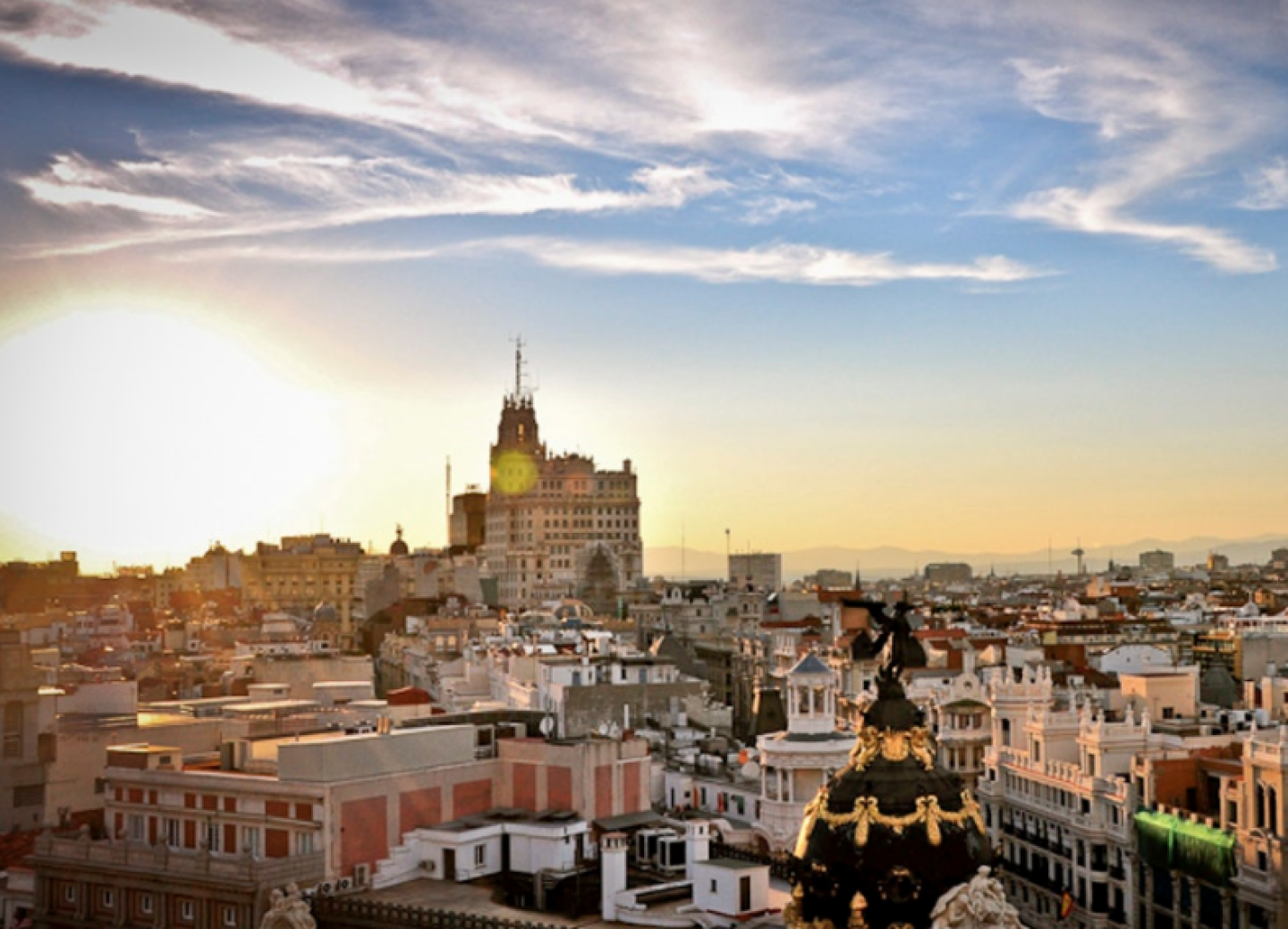
The stairs out of Madrid ’s Sol metro station put travelers in the midst of the bustle of Spain’s capital. Appropriately located in the heart of the country, Madrid is home to some of the best museums, restaurants, and nightlife. The 16th-century Plaza Mayor —which has been the setting of everything from fiestas to executions—is evidence that it still keeps its ties to tradition and history. Grab a bocadillo de calamares (calamari sandwich) in one of the plaza’s nearby storefronts or slip out of the city’s nonstop energy in the 350-acre Retiro Park, which is within walking distance from the Museo Nacional del Prado and Puerta de Alcalá. Just don’t siesta too much and miss out on any tapas bar crawls you have planned for the evening.
3. Barcelona
This coastal city takes an unabashed approach when it comes to differentiating itself from the rest of Spain, from the Catalan language to the warped, bright-colored facades of Antoni Gaudí’s buildings. Whatever gives Barcelona that je ne sais quois, it’s certainly resonating. Barcelona is a magnet for people from all over the world (more than 30 percent of Barcelona’s inhabitants were born outside of Spain), drawing travelers to stay for its beaches , year-round calendar of festivals, and markets. For the first-time visitor, a walk down the three-quarter-mile Las Ramblas is a must: The tree-lined pathway leads pedestrians through kiosks, neighborhoods, and historic buildings before stopping at the Mediterranean.

Warm people, sunny days spent sipping sangria, and trees full of oranges—that relaxed, siesta-loving attitude of Spain is available in Seville. The capital of Spain’s Andalusia autonomous community still bears plenty of marks from its past under the Moors. One of the most beautiful places to explore its history is the Royal Alcázar of Seville, an 11th-century palace sporting walled gardens and geometric, patterned arches that have been featured in Game of Thrones and Lawrence of Arabia . Stop and smell the jasmine at Plaza de España, and walk along the curving wall featuring 52 colorful mosaics that depict all of Spain’s provinces.
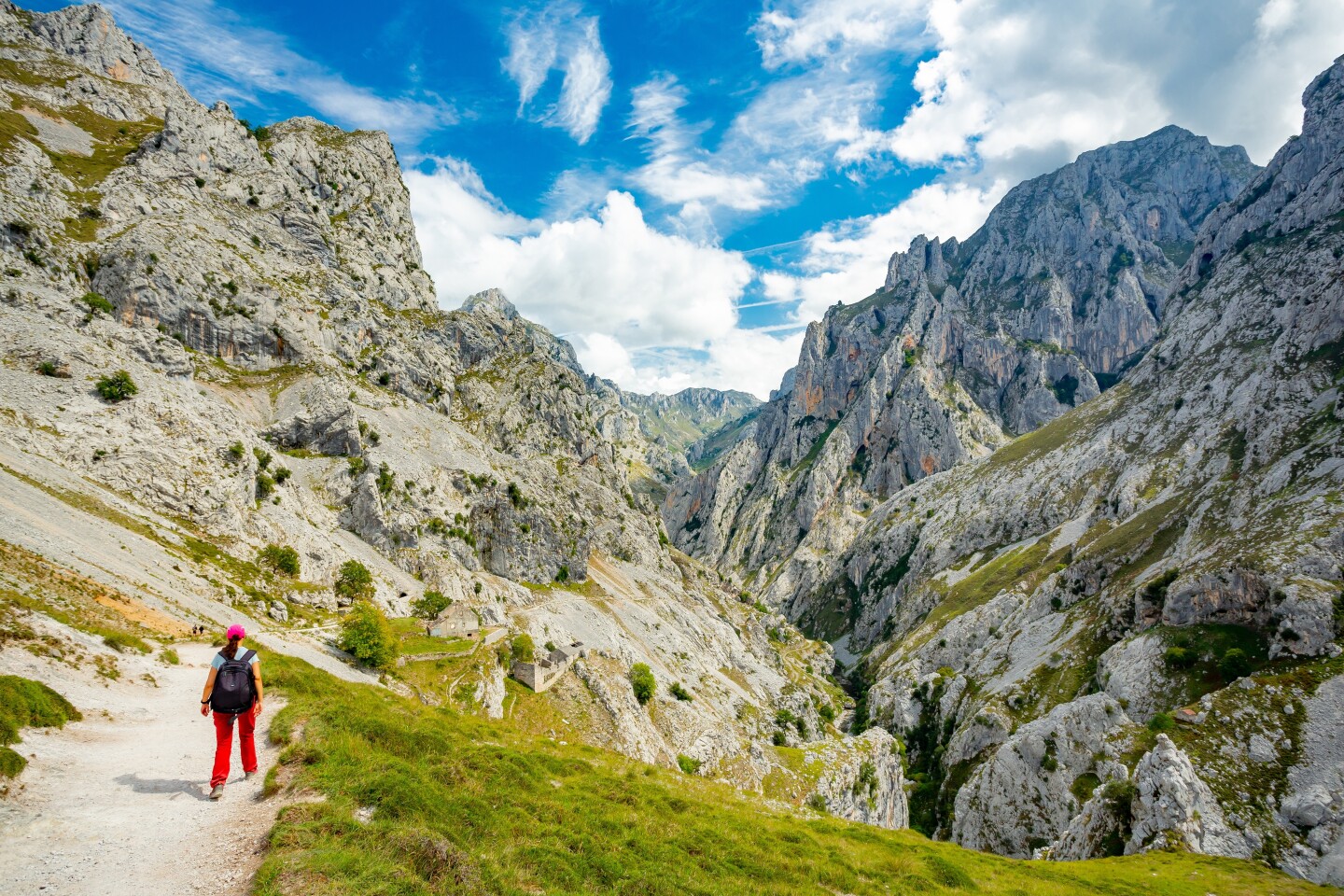
5. Picos de Europa National Park
Asturias, Cantabria, Castile and León
While lounge-worthy stretches of beach characterize Spain’s south, Picos de Europa National Park is a prime example of the green, dramatic landscapes that dominate the north. The 250-square-mile national park was the first established by the Spanish government in 1918 and includes alpine peaks, meadows, and lakes that feel similar to landscapes of the Pacific Northwest. Explore the jagged edges of the Cantabrian Mountains along the 7.5-mile long Ruta del Cares , or look for local wildlife like the roe deer and Egyptian vultures.
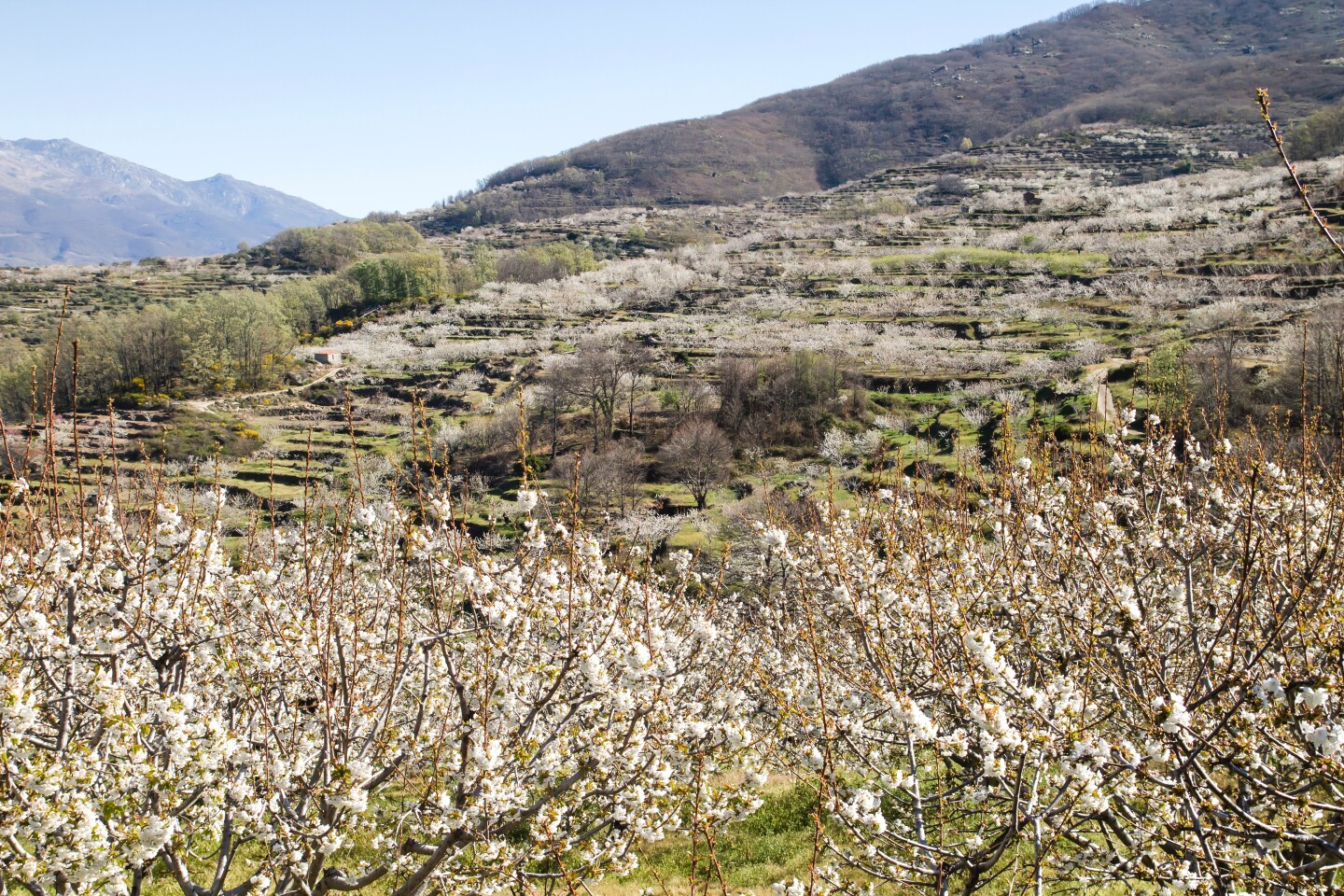
6. Valle del Jerte
Extremadura
Looking for a cherry blossom alternative to the crowds of enthusiasts in Japan and Washington, D.C.? Head to Extremadura, the Spanish region that borders Portugal between March and April (timing the cherry blossoming is a bit of a guessing game), when Valle del Jerte bursts in a sea of white as 2 million cherry trees bloom. Flower enthusiasts can tour the 144-square-mile area by taking a road trip down Spain’s N-110 road, which winds through the Cáceres province and crosses through the region’s 11 small villages known as pueblos . Come at the right time and you may be able to catch the flower festival as the villages celebrate the season with markets and exhibitions.
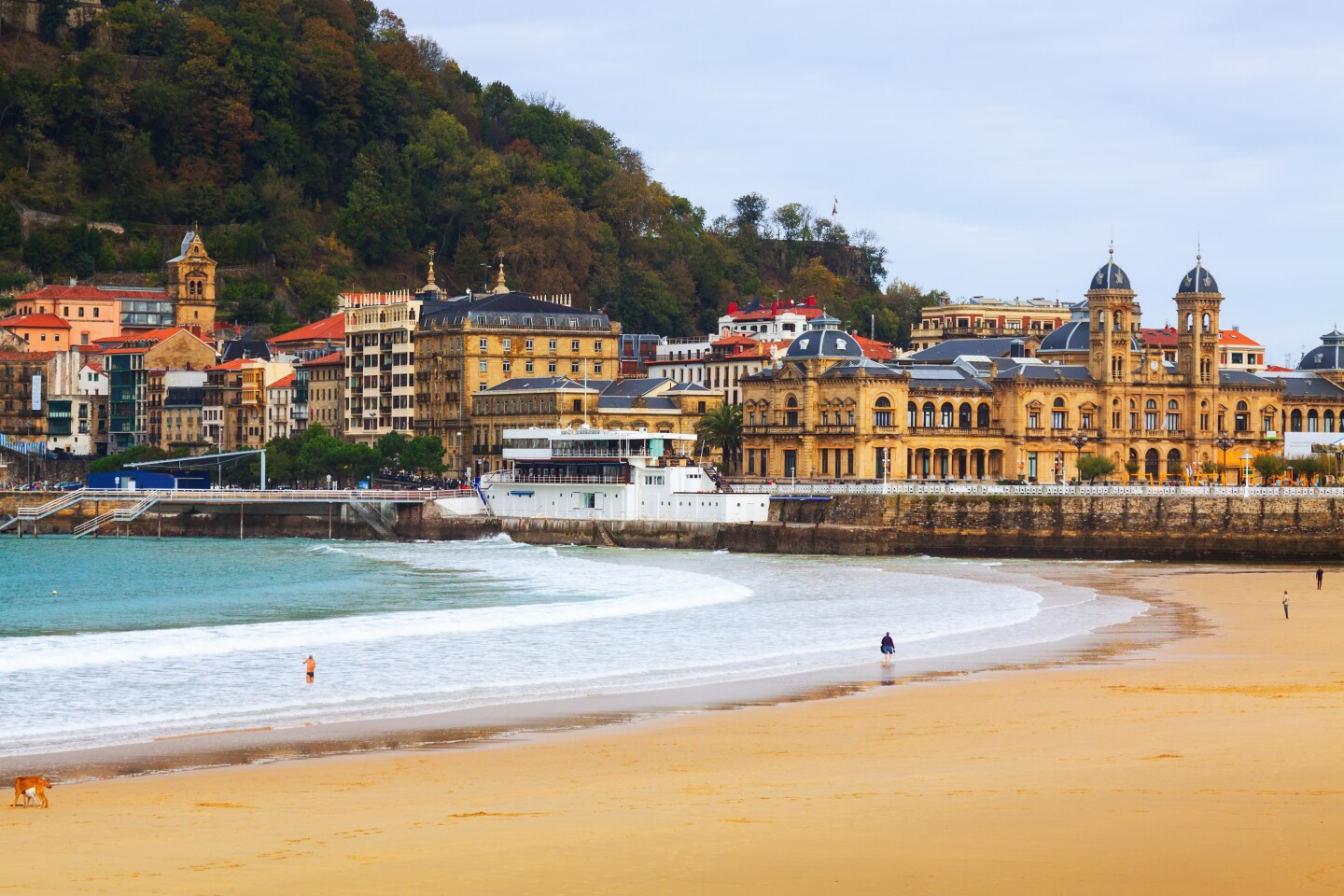
7. San Sebastian
Basque Country
The origins of the Basque people are up for debate, but the ethnic group—spread throughout southern France and Spain’s eponymous autonomous community—has developed a culture unlike the rest of the country. San Sebastián is one of the cities found in Basque Country, where Euskara is spoken on the streets—forgo the hola and greet people with kaixo —and the steep cliff sides resemble those in Ireland or Scotland. Indulge in small plates known as pintxos of prepared cod and local bounty, but make some reservations too, because the food scene here is top notch: 10 Michelin-starred restaurants are spread throughout this city of 190,000.
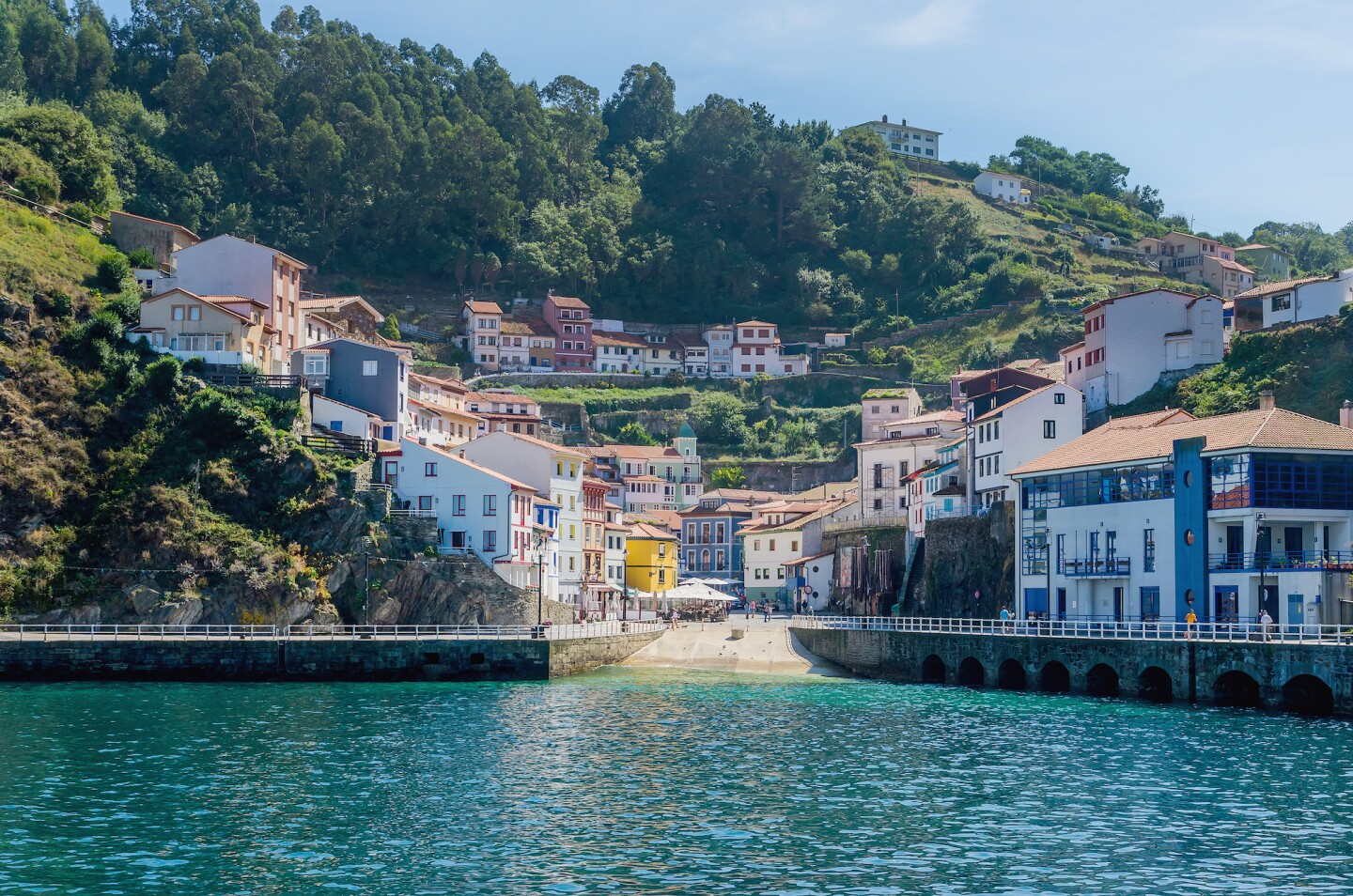
8. Cudillero
Many of Spain’s big cities attract tourists from around the world, so much so that its beautiful small villages can be overlooked. Cudillero is one of the nearly 20,000 pueblos found throughout Spain, and a lovely one at that: Located by the Bay of Biscay, this fishing village of around 5,000 people is a masterclass of slow living by the sea. Colorful, orange-roofed houses dot the hillsides, which also serve as vantage points for panoramas of both town and ocean.
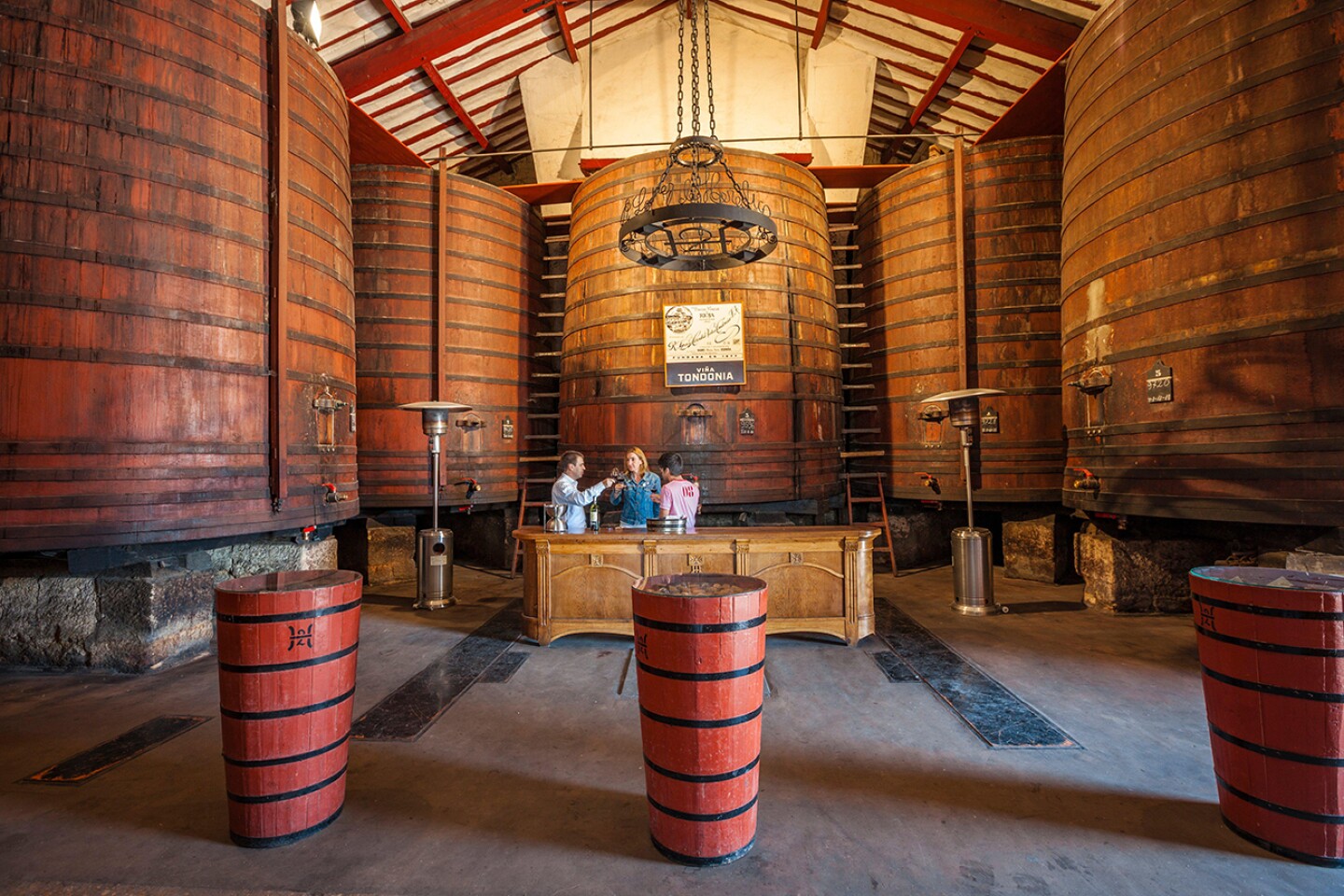
9. Rioja wine region
La Rioja, Basque Country, and Navarre
Spread across three different autonomous communities, the Rioja wine region is known for its tempranillo grapes, which produce the tannic, full-bodied red varietals of the same name. The region’s ideal grape-growing conditions are thanks to the Ebro River, which snakes throughout the area’s rolling hills. Admire the scenery with a glass in hand and learn about winemaking at a winery, known locally as a bodega. Some of the most attractive, like Lopez de Heredia, are in pueblos like Laguardia and Haro; the latter hosts an annual wine festival in the summer.
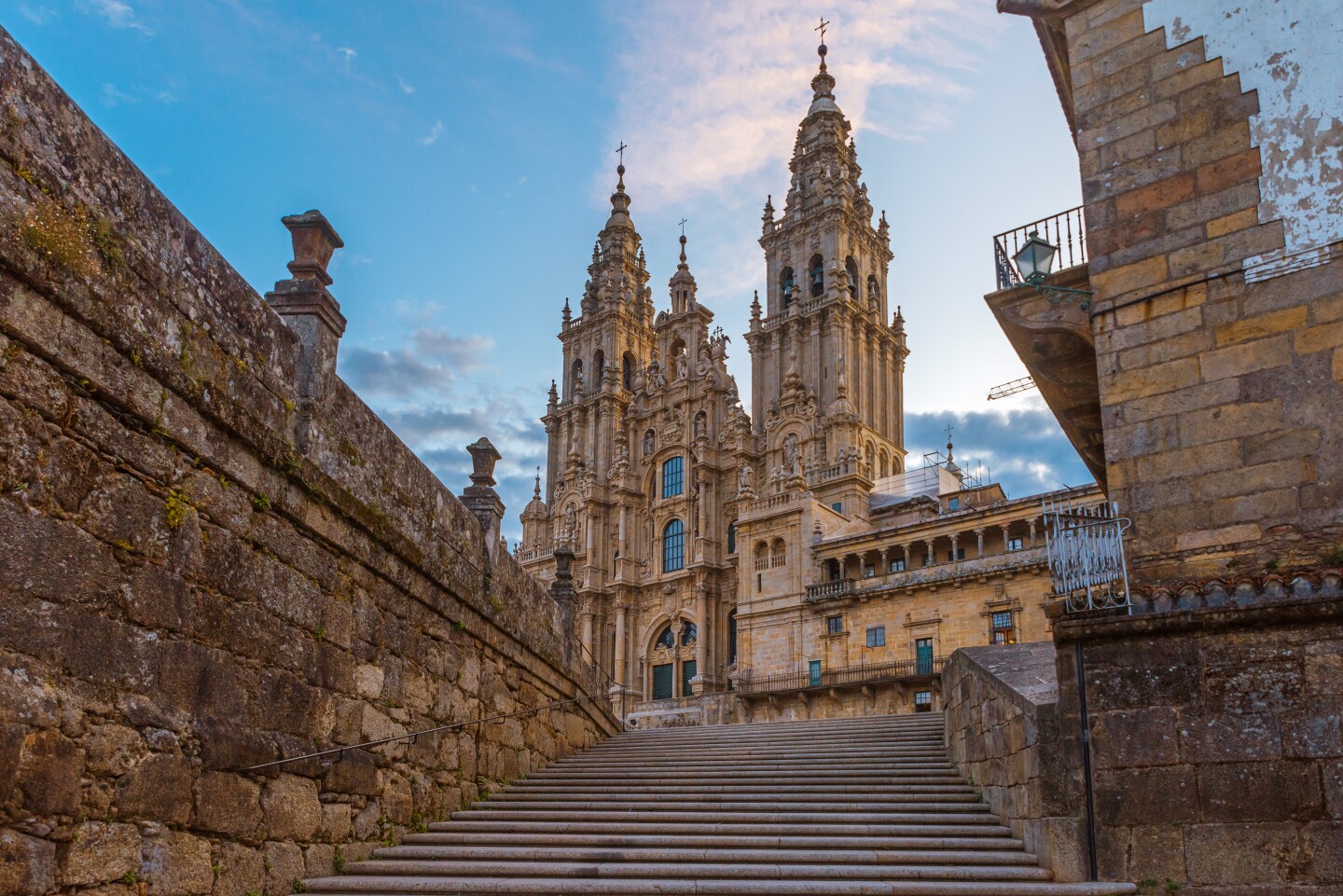
10. Santiago de Compostela
During the Middle Ages, people walked from the south of France to the northeastern tip of Spain as a way to show faith, establishing a 500-mile route known as the Camino de Santiago. Santiago de Compostela, the capital of Galicia, is the endpoint of this pilgrimage and punctuates the end of the trip with its Romanesque-style cathedral. Even if you’re not a pilgrim, this city is a worthwhile place for exploring religious history and some of the dishes Galicia has to offer, from regional cheeses to seaside delicacies like percebes (aka barnacles).

11. Valencia
Despite being more than 2,000 years old, Valencia is still innovating toward a sustainable future as the European Green Capital 2024 (in addition to being one of the places featured in AFAR’s Where to Go in 2024 list). If you stop by the city, skip the usual systems of transport and pick up your bike and walking shoes. There are more than 125 miles of bike lanes throughout the city, and dedicated green spaces like Turia Garden make it easy to walk off that paella. For a piece of tradition, stop by during March, when larger-than-life floats descend on the city for the Las Fallas celebration.
More for You
Average US annual salary by age revealed – see how you compare
Watch: Russell Westbrook Throws Punch After Hard Foul On Luka Doncic
Man loses 450 pounds after reaching 'rock bottom.' 1 key diet change helped
Will we ever know what split the Al Naslaa rock perfectly in two?
Young Sheldon star criticises decision to end series: ‘Such a stupid business move’
21 of the absolute best fictional princesses
This is the salary it takes to be considered rich in every state
I’m a Bank Teller: 3 Times You Should Never Ask For $100 Bills at the Bank
Farmers warn food aisles will soon be empty because of crushing conditions: 'We are not in a good position'
CORVETTE C8 6.2 V8 SOUNDS GREAT on GERMAN AUTOBAHN
Scientists finally confirm what lies inside the Moon
Ghosts of the USA: The Most Haunted Places in America
The 16 worst-paying college majors, five years after graduation
Here’s What the US Minimum Wage Was the Year You Were Born
Photo of 'rape is resistance' flyer predates pro-Palestinian camp at Columbia | Fact check
Want the Max $4,873 Social Security Benefit? Here's the Salary You Need.
Corn Makes This Pasta Sauce So Silky Smooth, Without Any Cream
Blood pressure is best lowered by 2 exercises, study finds
The 10 happiest places to live in the US
14 Best Bed Frames of 2024
eSIM Research

The Best eSIM Card for Spain Travel in 2024
Planning a trip to Spain and wondering how to stay connected? I’ve been there, and let me tell you, finding the right eSIM card can be a game-changer. It’s all about staying connected without the hassle of swapping SIM cards or facing unexpected roaming charges.
I’ve scoured the options and tested a few myself to bring you the lowdown on the best eSIM cards for Spain. Whether you’re there for the stunning beaches, the mouth-watering paella, or the vibrant street festivals, I’ve got you covered. Let’s dive into the world of eSIMs and find the perfect one for your Spanish adventure.
Top eSIM Providers for Spain
I’ve stumbled upon eSIMX, a game-changer for my trips to Spain. For a mere $4.5 USD , you get an eSIM that works flawlessly across the country, including the Balearic and Canary Islands. The prepaid plan options are diverse, allowing me to choose from 1GB up to 20GB data packages at speeds that make sharing my beach selfies a breeze. Installation’s a snap with a QR code. What is the coverage? Spot-on in major cities like Barcelona and Madrid. Here’s a quick look at their offerings:
Next up is Airalo with their Guay Mobile package. Their plans start at $4.50 for 1GB of data and scale up to 20GB for $26.00, covering every bit of Spain. Their options are perfect for short trips, ensuring I’m always connected without breaking the bank. Here’s a breakdown:
Nomad’s flexible plans and coverage through major Spanish providers like Vodafone and Orange caught my eye. Prices start from $6 USD for 1GB valid for 7 days to $33 USD for a hefty 20GB. Their mix of regular and day plans is particularly appealing, catering to various needs and budgets.
Holafly is my go-to for stress-free travel in Spain, especially with their unlimited data plans starting at $19.00 USD . The setup’s effortless, and it includes call minutes! With their 24/7 English customer service, I never feel lost. Here’s a glance at their plans:
Maya’s eSIM for Spain offers incredible value for travelers like me who need flexibility. It’s ideal for those heavier data usage periods, starting from $5 USD for a 3GB, 10-day pass, to $36 USD for a whopping 40GB. They even offer an unlimited data package for just $30 USD . Check this out:
ByteSim rounds out my list with their diverse offerings, including up to 5G speeds and flexibility with daily and total plans. Their automatic activation policy and the ability to switch between multiple operators for the best connection is a huge plus. Prices start at $4.90 USD, with a special 5% off on purchases over $5.00 USD. I’m particularly excited about their unlimited 5G option, a real game-changer.
Every trip to Spain is smooth sailing as long as I’ve sorted my eSIM. Whether I’m sharing tapas pics from Barcelona, live-streaming the La Tomatina festival, or simply staying connected with my friends and family, these eSIM options have covered me.
Comparison of eSIM Plans in Spain

When narrowing down the best eSIM for Spain, comparing the different plans these providers offer is crucial. I’ve looked closely at the plans regarding data, calls and texts, and combined packages. This way, you can choose the one that aligns perfectly with your travel needs and preferences.
Nowadays, data is the backbone of any good travel experience. Whether navigating through the bustling streets of Barcelona, uploading snapshots of the Alhambra, or ringing up a local restaurant in Madrid for reservations, I rely heavily on a solid internet connection. Here’s a breakdown of what some of the top eSIM providers offer in terms of data plans for Spain:
Unlimited data plans, like the one offered by Holafly, stand out for travelers who don’t want to worry about running out of data. However, options with a defined data cap might be more budget-friendly and suitable for those planning their usage.
Call and Text Plans
Even though I mostly rely on data for communication, having the option to call or text can be a lifesaver in areas with spotty internet or for local interactions. Unfortunately, not all eSIM providers cater to this need directly in their basic packages. Traditional SIM cards or specific call-and-text-only eSIM plans are often necessary for those requiring dedicated call-and-text options. Nonetheless, some providers offer a mix of data and limited calling or texting capabilities, which can be enough for quick local calls or emergencies.
Combined Plans
For the best of both worlds, combined plans are my go-to. These packages offer a comfortable mix of data, calls, and texts, ensuring I’m covered no matter the situation. Here’s a quick look at combined plan offerings from various providers:
These plans are perfect for travelers like me who want peace of mind without carrying multiple devices or SIM cards. They offer a balanced solution, providing essential internet access and a way to communicate traditionally.
Benefits of Using an eSIM Card in Spain
One of the biggest advantages of using an eSIM card in Spain is its convenience. Imagine landing in Madrid or Barcelona, skipping the long queues at local SIM card stores, and instantly connecting to a network. That’s what an eSIM lets me do. Instead of swapping physical SIM cards, I can activate my eSIM from my phone’s settings. It’s a game-changer, especially when I simultaneously carry multiple devices or must stay connected for work and personal reasons.
Moreover, the flexibility of eSIM plans is unmatched. I’m not tied to one provider for the duration of my stay. If I find a better deal or need to adjust my data usage halfway through my trip, I can easily switch plans without any hassle. This flexibility saves me money and ensures I’m always connected with the best possible service.
Another key benefit that attracts me to eSIMs is its cost-effectiveness. Traditional SIM cards often come with hidden fees or higher rates for tourists. With eSIMs, I can access the same plans that locals use, often at a fraction of the cost. Whether looking for a plan with ample data or something that includes calls and texts, I’ve found that eSIM providers in Spain offer competitive rates that are hard to beat.
Lastly, the eco-friendly aspect of eSIMs can’t be overlooked. By eliminating the need for a physical SIM card, I’m contributing to reducing plastic waste and conserving the environment. It’s a small but meaningful way to travel more sustainably.
As I explore Spain’s picturesque landscapes and vibrant cities, staying connected is a breeze with an eSIM. The combination of convenience, flexibility, cost savings, and environmental consciousness makes it an excellent choice for any traveler.
How to Activate an eSIM Card in Spain
Activating an eSIM card for my travels in Spain was far simpler than I initially thought. The process is straightforward, a relief for anyone who’s not too tech-savvy. Let me walk you through the steps to get my eSIM up and running.
First off , you’ll need a compatible smartphone. Most newer models support eSIM technology, but it’s always good to double-check. I found a handy compatibility checker on my provider’s website, which saved me a lot of guesswork.
Next , after purchasing the eSIM plan that fit my needs, I received an email with a QR code. This is where the magic happens. All I had to do was go to my phone’s settings, find the “Cellular” or “Mobile Data” options and select “Add Data Plan.” The camera automatically launched and was ready to scan the QR code. Within moments after scanning, my eSIM was activated. It was almost instant, without any need to restart my phone or fiddle with additional settings.
What’s great about eSIMs is the flexibility to choose or change plans even after arrival in Spain. For instance, if I realized I needed more data or wanted to switch providers, I could do so directly from my phone. No visits to physical stores are required. This flexibility saved me time and hassle during my travels.
For travelers to Spain, there are generally two types of plans:
- Prepaid : You pay upfront for a set amount of data. Great for short trips.
- Pay-as-you-go : More flexible, allowing you to top up as needed. Ideal for longer stays.
I chose a prepaid plan, finding it aligned well with my two-week itinerary. However, the beauty of eSIM technology is that it’s designed to cater to a wide range of needs and preferences. Whether you stay for a week or a month, an eSIM plan exists.
After exploring the ins and outs of using an eSIM card in Spain, it’s clear that it’s a game-changer for travelers. The simplicity of setting it up and its flexibility make it a must-have for anyone looking to stay connected without the fuss. Whether you’re a tech novice or a savvy traveler, the ease of switching plans or providers right from your phone can’t be beaten. So, if you’re planning a trip to Spain, consider trying an eSIM. It just might make your travel experience smoother and more enjoyable.
Frequently Asked Questions
What is an esim card.
An eSIM card is a digital SIM card that allows phone services without needing a physical SIM. It simplifies switching plans and carriers directly from your device.
How do I activate an eSIM card in Spain?
To activate an eSIM in Spain, ensure your smartphone is compatible, purchase an eSIM plan, and then scan a provided QR code for instant activation—no phone restart is needed.
Are eSIM cards compatible with all smartphones?
Not all smartphones support eSIM technology. Before purchasing an eSIM plan, check your phone’s compatibility on the manufacturer’s website or with your carrier.
What types of eSIM plans are available in Spain?
Spain offers two main eSIM plan types: prepaid and pay-as-you-go. Prepaid plans are suitable for fixed trip durations, while pay-as-you-go plans offer flexibility for unpredictable or extended stays.
Can I switch to eSIM plans or providers easily in Spain?
Yes, one of the benefits of eSIM technology is the ease of changing plans or providers directly from your smartphone, making it ideal for travelers seeking flexibility.
What are the advantages of using an eSIM while traveling in Spain?
eSIMs offer convenience, eliminating the need for physical SIM swaps, and allow easy plan or provider changes straight from your phone, catering to various travel needs and durations.
Leave a Comment Cancel reply
Save my name, email, and website in this browser for the next time I comment.

COMMENTS
Spain travel blog: Getting to Spain The easiest and most convenient way to get to Spain is by air. There are many direct flights from major U.S., Asian, European cities to Spain's major cities of Madrid or Barcelona operated by big airlines such as United, American, Etihad, Emirates, Air France, Turkish Airline, Singapore Airlines…
Best Time To Visit. September to November is easily my favorite time to travel through Spain. There are fewer crowds, the weather is beautiful but starting to cool down, and it's wine harvest time! Head up to Rioja and Ribera for some of the best wine tastings in Spain. The summer months, June to August, are the most popular time to visit Spain.
Spain Travel Guide. Last Updated: April 18, 2024. Spain is a country that moves slow. This is the land of the siesta. It's a place for foodies, night owls, history buffs, religious pilgrims, and anyone not in a rush to do just about anything! It's a huge country with a lot of variety: Madrid and Barcelona are hip and energetic cities ...
1. Madrid, Seville, Granada. One of my favorite itineraries for 7 days in Spain! This plan is perfect for a first visit to Spain and those looking to see the TOP sights. 2 NIGHTS MADRID. 3 NIGHTS SEVILLE WITH OPTIONAL STOP IN CORDOBA. 2 NIGHTS GRANADA. Madridto Seville is a quick 2.5 hour journey by high-speed train.
Day 4: Head south to Seville. Sunshine, sour orange trees, flamenco, and some of the most fascinating architecture in Europe await in the next part of this Spain itinerary: welcome to Andalucia. This is one of our favorite regions in Spain, and it always seems to keep drawing us back. READ NEXT.
Spain's weather is fantastic year-round, particularly in Spring and Fall when you'll have warm and sunny days perfect for sightseeing. The coldest time is December - March, but in the south, temperatures can still reach the 20s. For more distinct seasons (and even snow), choose mountainous cities like Granada. Best. Good.
2. Being cashless is common. Card is king in Spain. The main tourist hubs such as Madrid, Barcelona, San Sebastián and Ibiza are generally credit card-friendly destinations. In fact, you could go cashless for days and pay for your meals, drinks, taxis and bus fares without a problem using a credit or debit card.
Spain Travel Blogs These are all of my travel blogs about Spain. From exploring the food scene in Barcelona, to adventures in the Balaeric Islands and great cities such as Malaga, Cadiz, Seville and Valencia, find out the best places to travel to in my Spain travel blogs and travel guides. Happy exploring!
Madrid needs to go to the top of your list for LGBTQ+ friendly destinations in Europe! The city is very laid back, you will see plenty of same-sex couples out in the open. The gay scene has establishments catering specifically to LGBTQ+ women (rare), most notably Club 33, the oldest lesbian bar in Madrid.
Expenses for a 2-Week Andalusia Road Trip. A 2-week road trip in Andalusia will cost you anything between 2000-3000 USD. This includes accommodation for every night of your stay, food, entrance fees, the price of your rental car, and fuel.
Learn travel hacks and avoid tourist traps with our list of the best travel blogs for Spain. With endless cultural festivals, world-class beaches, and renowned nightlife, Spain is impressive 365 days a year. According to Expatica, Spain has 47 UNESCO World Heritage Sites. This makes Spain the 3rd ranked country in the world, with pre-historic ...
The Ultimate Guide to Cueva de los Verdes, Lanzarote. Planning on visiting Cueva de los Verdes? From opening times to ticket prices, this is the ultimate guide to these caves in Lanzarote! If you're looking for some advice & information on Spain then make sure you check out all of my Spain travel blogs here at An Adventurous World.
When visiting Spain — or any other country in the world — make sure to get travel insurance to protect your health and safety. In my opinion, the best travel medical insurance for travelers is SafetyWing as they've got a large network and offer both short-term and long-term coverage — including coverage if you're traveling for months ...
Luxury. Spain's government-owned Parador Hotels are located in old historic buildings and castles, making them unique places to stay. Prices too are reasonable at between 100€ and 300€ ( $ 118 and $354) per night. - Check the best Paradores.
Quick Facts: Ultimate Guide to Spain Travel. ️ Officially Known as - Kingdom of Spain (or Reino de España in Spanish) ️ Capital City - Madrid. ️ No of Provinces or States - 50. ️ Population - 47.35 million (2020) ️ Spain Tourist Visa - Schengen. ️ EU Member - Yes. ️ Currency - Euros.
Seville Travel Guide. Seville is the artistic, cultural, and financial capital of southern Spain. It's a city full of gorgeous architecture, vibrant history, and wonderful food. I loved my visit to Seville. Originally founded as a Roman city, Seville came to prominence after the Islamic conquest in 711. Today, the city is known for its ...
Explore SpainBeyond the Ordinary. Explore Spain. Beyond the Ordinary. Welcome to TravelSpain24, your not-so-typical travel guide to Spain. It's a story about us, Timon and Filipa, two souls who swapped our 9-5 for adventures, flavors, and panoramic views under the Spanish sun. Choose your destination.
February 28, 2024. As the calm azure-hued waters lap the glistening sands of Playa Levante at sunrise, you know another memorable day is in store here in Benidorm. The mesmeric seaside town has…. This is the best spain travel blog on the internet. If you are ready to plan your adventures around Spain, we've got your answers!
Travel blogs on Spain. Here you will find all my blogs about Spain. Spain! The ultimate summer holiday destination in Europe. As a child, I spent many weeks on the Costa Brava in Spain or city trips to Barcelona and Madrid. Both Ries and I have lived in Madrid and even though we still hardly speak Spanish. Spain continues to have a special ...
Travel Tip. Metro: Barcelona currently has eight metro lines that can get you pretty much everywhere in the city. However, it is a popular spot for pickpockets. If you're traveling on a budget, it's a great option—a single ticket will cost you 2,20€ but a T-10 Card, good for 10 rides only costs 10,20€.
Dreaming of visiting Spain? Here, we've rounded up 5 of our favorite Spanish travel bloggers to inspire your trip and help you prepare!
Image Source: Shutterstock. Situated in the Costa Brava region of Catalonia, Calella de Palafrugell is one of the best hidden gems in Spain. With its stunning beaches, relaxed atmosphere, and vibrant culture, Calella de Palafrugell is the perfect destination for people who want to escape from the bustling city of Barcelona.
Tourist information about Spain: art, culture, museums, monuments, beaches, cities, fiestas, routes, cuisine, natural spaces in Spain | spain.info
2. Madrid. Madrid. The stairs out of Madrid's Sol metro station put travelers in the midst of the bustle of Spain's capital. Appropriately located in the heart of the country, Madrid is home ...
Jul 30, 2023 - Read our detailed Spain travel blog posts and tips to plan an epic getaway to the Iberian peninsula. Packing with sightseeing & packing info!
Holafly is my go-to for stress-free travel in Spain, especially with their unlimited data plans starting at $19.00 USD. The setup's effortless, and it includes call minutes! ... Spain offers two main eSIM plan types: prepaid and pay-as-you-go. Prepaid plans are suitable for fixed trip durations, while pay-as-you-go plans offer flexibility for ...